-
 @ eac63075:b4988b48
2024-11-09 17:57:27
@ eac63075:b4988b48
2024-11-09 17:57:27Based on a recent paper that included collaboration from renowned experts such as Lynn Alden, Steve Lee, and Ren Crypto Fish, we discuss in depth how Bitcoin's consensus is built, the main risks, and the complex dynamics of protocol upgrades.
Podcast https://www.fountain.fm/episode/wbjD6ntQuvX5u2G5BccC
Presentation https://gamma.app/docs/Analyzing-Bitcoin-Consensus-Risks-in-Protocol-Upgrades-p66axxjwaa37ksn
1. Introduction to Consensus in Bitcoin
Consensus in Bitcoin is the foundation that keeps the network secure and functional, allowing users worldwide to perform transactions in a decentralized manner without the need for intermediaries. Since its launch in 2009, Bitcoin is often described as an "immutable" system designed to resist changes, and it is precisely this resistance that ensures its security and stability.
The central idea behind consensus in Bitcoin is to create a set of acceptance rules for blocks and transactions, ensuring that all network participants agree on the transaction history. This prevents "double-spending," where the same bitcoin could be used in two simultaneous transactions, something that would compromise trust in the network.
Evolution of Consensus in Bitcoin
Over the years, consensus in Bitcoin has undergone several adaptations, and the way participants agree on changes remains a delicate process. Unlike traditional systems, where changes can be imposed from the top down, Bitcoin operates in a decentralized model where any significant change needs the support of various groups of stakeholders, including miners, developers, users, and large node operators.
Moreover, the update process is extremely cautious, as hasty changes can compromise the network's security. As a result, the philosophy of "don't fix what isn't broken" prevails, with improvements happening incrementally and only after broad consensus among those involved. This model can make progress seem slow but ensures that Bitcoin remains faithful to the principles of security and decentralization.
2. Technical Components of Consensus
Bitcoin's consensus is supported by a set of technical rules that determine what is considered a valid transaction and a valid block on the network. These technical aspects ensure that all nodes—the computers that participate in the Bitcoin network—agree on the current state of the blockchain. Below are the main technical components that form the basis of the consensus.
Validation of Blocks and Transactions
The validation of blocks and transactions is the central point of consensus in Bitcoin. A block is only considered valid if it meets certain criteria, such as maximum size, transaction structure, and the solving of the "Proof of Work" problem. The proof of work, required for a block to be included in the blockchain, is a computational process that ensures the block contains significant computational effort—protecting the network against manipulation attempts.
Transactions, in turn, need to follow specific input and output rules. Each transaction includes cryptographic signatures that prove the ownership of the bitcoins sent, as well as validation scripts that verify if the transaction conditions are met. This validation system is essential for network nodes to autonomously confirm that each transaction follows the rules.
Chain Selection
Another fundamental technical issue for Bitcoin's consensus is chain selection, which becomes especially important in cases where multiple versions of the blockchain coexist, such as after a network split (fork). To decide which chain is the "true" one and should be followed, the network adopts the criterion of the highest accumulated proof of work. In other words, the chain with the highest number of valid blocks, built with the greatest computational effort, is chosen by the network as the official one.
This criterion avoids permanent splits because it encourages all nodes to follow the same main chain, reinforcing consensus.
Soft Forks vs. Hard Forks
In the consensus process, protocol changes can happen in two ways: through soft forks or hard forks. These variations affect not only the protocol update but also the implications for network users:
-
Soft Forks: These are changes that are backward compatible. Only nodes that adopt the new update will follow the new rules, but old nodes will still recognize the blocks produced with these rules as valid. This compatibility makes soft forks a safer option for updates, as it minimizes the risk of network division.
-
Hard Forks: These are updates that are not backward compatible, requiring all nodes to update to the new version or risk being separated from the main chain. Hard forks can result in the creation of a new coin, as occurred with the split between Bitcoin and Bitcoin Cash in 2017. While hard forks allow for deeper changes, they also bring significant risks of network fragmentation.
These technical components form the base of Bitcoin's security and resilience, allowing the system to remain functional and immutable without losing the necessary flexibility to evolve over time.
3. Stakeholders in Bitcoin's Consensus
Consensus in Bitcoin is not decided centrally. On the contrary, it depends on the interaction between different groups of stakeholders, each with their motivations, interests, and levels of influence. These groups play fundamental roles in how changes are implemented or rejected on the network. Below, we explore the six main stakeholders in Bitcoin's consensus.
1. Economic Nodes
Economic nodes, usually operated by exchanges, custody providers, and large companies that accept Bitcoin, exert significant influence over consensus. Because they handle large volumes of transactions and act as a connection point between the Bitcoin ecosystem and the traditional financial system, these nodes have the power to validate or reject blocks and to define which version of the software to follow in case of a fork.
Their influence is proportional to the volume of transactions they handle, and they can directly affect which chain will be seen as the main one. Their incentive is to maintain the network's stability and security to preserve its functionality and meet regulatory requirements.
2. Investors
Investors, including large institutional funds and individual Bitcoin holders, influence consensus indirectly through their impact on the asset's price. Their buying and selling actions can affect Bitcoin's value, which in turn influences the motivation of miners and other stakeholders to continue investing in the network's security and development.
Some institutional investors have agreements with custodians that may limit their ability to act in network split situations. Thus, the impact of each investor on consensus can vary based on their ownership structure and how quickly they can react to a network change.
3. Media Influencers
Media influencers, including journalists, analysts, and popular personalities on social media, have a powerful role in shaping public opinion about Bitcoin and possible updates. These influencers can help educate the public, promote debates, and bring transparency to the consensus process.
On the other hand, the impact of influencers can be double-edged: while they can clarify complex topics, they can also distort perceptions by amplifying or minimizing change proposals. This makes them a force both of support and resistance to consensus.
4. Miners
Miners are responsible for validating transactions and including blocks in the blockchain. Through computational power (hashrate), they also exert significant influence over consensus decisions. In update processes, miners often signal their support for a proposal, indicating that the new version is safe to use. However, this signaling is not always definitive, and miners can change their position if they deem it necessary.
Their incentive is to maximize returns from block rewards and transaction fees, as well as to maintain the value of investments in their specialized equipment, which are only profitable if the network remains stable.
5. Protocol Developers
Protocol developers, often called "Core Developers," are responsible for writing and maintaining Bitcoin's code. Although they do not have direct power over consensus, they possess an informal veto power since they decide which changes are included in the main client (Bitcoin Core). This group also serves as an important source of technical knowledge, helping guide decisions and inform other stakeholders.
Their incentive lies in the continuous improvement of the network, ensuring security and decentralization. Many developers are funded by grants and sponsorships, but their motivations generally include a strong ideological commitment to Bitcoin's principles.
6. Users and Application Developers
This group includes people who use Bitcoin in their daily transactions and developers who build solutions based on the network, such as wallets, exchanges, and payment platforms. Although their power in consensus is less than that of miners or economic nodes, they play an important role because they are responsible for popularizing Bitcoin's use and expanding the ecosystem.
If application developers decide not to adopt an update, this can affect compatibility and widespread acceptance. Thus, they indirectly influence consensus by deciding which version of the protocol to follow in their applications.
These stakeholders are vital to the consensus process, and each group exerts influence according to their involvement, incentives, and ability to act in situations of change. Understanding the role of each makes it clearer how consensus is formed and why it is so difficult to make significant changes to Bitcoin.
4. Mechanisms for Activating Updates in Bitcoin
For Bitcoin to evolve without compromising security and consensus, different mechanisms for activating updates have been developed over the years. These mechanisms help coordinate changes among network nodes to minimize the risk of fragmentation and ensure that updates are implemented in an orderly manner. Here, we explore some of the main methods used in Bitcoin, their advantages and disadvantages, as well as historical examples of significant updates.
Flag Day
The Flag Day mechanism is one of the simplest forms of activating changes. In it, a specific date or block is determined as the activation moment, and all nodes must be updated by that point. This method does not involve prior signaling; participants simply need to update to the new software version by the established day or block.
-
Advantages: Simplicity and predictability are the main benefits of Flag Day, as everyone knows the exact activation date.
-
Disadvantages: Inflexibility can be a problem because there is no way to adjust the schedule if a significant part of the network has not updated. This can result in network splits if a significant number of nodes are not ready for the update.
An example of Flag Day was the Pay to Script Hash (P2SH) update in 2012, which required all nodes to adopt the change to avoid compatibility issues.
BIP34 and BIP9
BIP34 introduced a more dynamic process, in which miners increase the version number in block headers to signal the update. When a predetermined percentage of the last blocks is mined with this new version, the update is automatically activated. This model later evolved with BIP9, which allowed multiple updates to be signaled simultaneously through "version bits," each corresponding to a specific change.
-
Advantages: Allows the network to activate updates gradually, giving more time for participants to adapt.
-
Disadvantages: These methods rely heavily on miner support, which means that if a sufficient number of miners do not signal the update, it can be delayed or not implemented.
BIP9 was used in the activation of SegWit (BIP141) but faced challenges because some miners did not signal their intent to activate, leading to the development of new mechanisms.
User Activated Soft Forks (UASF) and User Resisted Soft Forks (URSF)
To increase the decision-making power of ordinary users, the concept of User Activated Soft Fork (UASF) was introduced, allowing node operators, not just miners, to determine consensus for a change. In this model, nodes set a date to start rejecting blocks that are not in compliance with the new update, forcing miners to adapt or risk having their blocks rejected by the network.
URSF, in turn, is a model where nodes reject blocks that attempt to adopt a specific update, functioning as resistance against proposed changes.
-
Advantages: UASF returns decision-making power to node operators, ensuring that changes do not depend solely on miners.
-
Disadvantages: Both UASF and URSF can generate network splits, especially in cases of strong opposition among different stakeholders.
An example of UASF was the activation of SegWit in 2017, where users supported activation independently of miner signaling, which ended up forcing its adoption.
BIP8 (LOT=True)
BIP8 is an evolution of BIP9, designed to prevent miners from indefinitely blocking a change desired by the majority of users and developers. BIP8 allows setting a parameter called "lockinontimeout" (LOT) as true, which means that if the update has not been fully signaled by a certain point, it is automatically activated.
-
Advantages: Ensures that changes with broad support among users are not blocked by miners who wish to maintain the status quo.
-
Disadvantages: Can lead to network splits if miners or other important stakeholders do not support the update.
Although BIP8 with LOT=True has not yet been used in Bitcoin, it is a proposal that can be applied in future updates if necessary.
These activation mechanisms have been essential for Bitcoin's development, allowing updates that keep the network secure and functional. Each method brings its own advantages and challenges, but all share the goal of preserving consensus and network cohesion.
5. Risks and Considerations in Consensus Updates
Consensus updates in Bitcoin are complex processes that involve not only technical aspects but also political, economic, and social considerations. Due to the network's decentralized nature, each change brings with it a set of risks that need to be carefully assessed. Below, we explore some of the main challenges and future scenarios, as well as the possible impacts on stakeholders.
Network Fragility with Alternative Implementations
One of the main risks associated with consensus updates is the possibility of network fragmentation when there are alternative software implementations. If an update is implemented by a significant group of nodes but rejected by others, a network split (fork) can occur. This creates two competing chains, each with a different version of the transaction history, leading to unpredictable consequences for users and investors.
Such fragmentation weakens Bitcoin because, by dividing hashing power (computing) and coin value, it reduces network security and investor confidence. A notable example of this risk was the fork that gave rise to Bitcoin Cash in 2017 when disagreements over block size resulted in a new chain and a new asset.
Chain Splits and Impact on Stakeholders
Chain splits are a significant risk in update processes, especially in hard forks. During a hard fork, the network is split into two separate chains, each with its own set of rules. This results in the creation of a new coin and leaves users with duplicated assets on both chains. While this may seem advantageous, in the long run, these splits weaken the network and create uncertainties for investors.
Each group of stakeholders reacts differently to a chain split:
-
Institutional Investors and ETFs: Face regulatory and compliance challenges because many of these assets are managed under strict regulations. The creation of a new coin requires decisions to be made quickly to avoid potential losses, which may be hampered by regulatory constraints.
-
Miners: May be incentivized to shift their computing power to the chain that offers higher profitability, which can weaken one of the networks.
-
Economic Nodes: Such as major exchanges and custody providers, have to quickly choose which chain to support, influencing the perceived value of each network.
Such divisions can generate uncertainties and loss of value, especially for institutional investors and those who use Bitcoin as a store of value.
Regulatory Impacts and Institutional Investors
With the growing presence of institutional investors in Bitcoin, consensus changes face new compliance challenges. Bitcoin ETFs, for example, are required to follow strict rules about which assets they can include and how chain split events should be handled. The creation of a new asset or migration to a new chain can complicate these processes, creating pressure for large financial players to quickly choose a chain, affecting the stability of consensus.
Moreover, decisions regarding forks can influence the Bitcoin futures and derivatives market, affecting perception and adoption by new investors. Therefore, the need to avoid splits and maintain cohesion is crucial to attract and preserve the confidence of these investors.
Security Considerations in Soft Forks and Hard Forks
While soft forks are generally preferred in Bitcoin for their backward compatibility, they are not without risks. Soft forks can create different classes of nodes on the network (updated and non-updated), which increases operational complexity and can ultimately weaken consensus cohesion. In a network scenario with fragmentation of node classes, Bitcoin's security can be affected, as some nodes may lose part of the visibility over updated transactions or rules.
In hard forks, the security risk is even more evident because all nodes need to adopt the new update to avoid network division. Experience shows that abrupt changes can create temporary vulnerabilities, in which malicious agents try to exploit the transition to attack the network.
Bounty Claim Risks and Attack Scenarios
Another risk in consensus updates are so-called "bounty claims"—accumulated rewards that can be obtained if an attacker manages to split or deceive a part of the network. In a conflict scenario, a group of miners or nodes could be incentivized to support a new update or create an alternative version of the software to benefit from these rewards.
These risks require stakeholders to carefully assess each update and the potential vulnerabilities it may introduce. The possibility of "bounty claims" adds a layer of complexity to consensus because each interest group may see a financial opportunity in a change that, in the long term, may harm network stability.
The risks discussed above show the complexity of consensus in Bitcoin and the importance of approaching it gradually and deliberately. Updates need to consider not only technical aspects but also economic and social implications, in order to preserve Bitcoin's integrity and maintain trust among stakeholders.
6. Recommendations for the Consensus Process in Bitcoin
To ensure that protocol changes in Bitcoin are implemented safely and with broad support, it is essential that all stakeholders adopt a careful and coordinated approach. Here are strategic recommendations for evaluating, supporting, or rejecting consensus updates, considering the risks and challenges discussed earlier, along with best practices for successful implementation.
1. Careful Evaluation of Proposal Maturity
Stakeholders should rigorously assess the maturity level of a proposal before supporting its implementation. Updates that are still experimental or lack a robust technical foundation can expose the network to unnecessary risks. Ideally, change proposals should go through an extensive testing phase, have security audits, and receive review and feedback from various developers and experts.
2. Extensive Testing in Secure and Compatible Networks
Before an update is activated on the mainnet, it is essential to test it on networks like testnet and signet, and whenever possible, on other compatible networks that offer a safe and controlled environment to identify potential issues. Testing on networks like Litecoin was fundamental for the safe launch of innovations like SegWit and the Lightning Network, allowing functionalities to be validated on a lower-impact network before being implemented on Bitcoin.
The Liquid Network, developed by Blockstream, also plays an important role as an experimental network for new proposals, such as OP_CAT. By adopting these testing environments, stakeholders can mitigate risks and ensure that the update is reliable and secure before being adopted by the main network.
3. Importance of Stakeholder Engagement
The success of a consensus update strongly depends on the active participation of all stakeholders. This includes economic nodes, miners, protocol developers, investors, and end users. Lack of participation can lead to inadequate decisions or even future network splits, which would compromise Bitcoin's security and stability.
4. Key Questions for Evaluating Consensus Proposals
To assist in decision-making, each group of stakeholders should consider some key questions before supporting a consensus change:
- Does the proposal offer tangible benefits for Bitcoin's security, scalability, or usability?
- Does it maintain backward compatibility or introduce the risk of network split?
- Are the implementation requirements clear and feasible for each group involved?
- Are there clear and aligned incentives for all stakeholder groups to accept the change?
5. Coordination and Timing in Implementations
Timing is crucial. Updates with short activation windows can force a split because not all nodes and miners can update simultaneously. Changes should be planned with ample deadlines to allow all stakeholders to adjust their systems, avoiding surprises that could lead to fragmentation.
Mechanisms like soft forks are generally preferable to hard forks because they allow a smoother transition. Opting for backward-compatible updates when possible facilitates the process and ensures that nodes and miners can adapt without pressure.
6. Continuous Monitoring and Re-evaluation
After an update, it's essential to monitor the network to identify problems or side effects. This continuous process helps ensure cohesion and trust among all participants, keeping Bitcoin as a secure and robust network.
These recommendations, including the use of secure networks for extensive testing, promote a collaborative and secure environment for Bitcoin's consensus process. By adopting a deliberate and strategic approach, stakeholders can preserve Bitcoin's value as a decentralized and censorship-resistant network.
7. Conclusion
Consensus in Bitcoin is more than a set of rules; it's the foundation that sustains the network as a decentralized, secure, and reliable system. Unlike centralized systems, where decisions can be made quickly, Bitcoin requires a much more deliberate and cooperative approach, where the interests of miners, economic nodes, developers, investors, and users must be considered and harmonized. This governance model may seem slow, but it is fundamental to preserving the resilience and trust that make Bitcoin a global store of value and censorship-resistant.
Consensus updates in Bitcoin must balance the need for innovation with the preservation of the network's core principles. The development process of a proposal needs to be detailed and rigorous, going through several testing stages, such as in testnet, signet, and compatible networks like Litecoin and Liquid Network. These networks offer safe environments for proposals to be analyzed and improved before being launched on the main network.
Each proposed change must be carefully evaluated regarding its maturity, impact, backward compatibility, and support among stakeholders. The recommended key questions and appropriate timing are critical to ensure that an update is adopted without compromising network cohesion. It's also essential that the implementation process is continuously monitored and re-evaluated, allowing adjustments as necessary and minimizing the risk of instability.
By following these guidelines, Bitcoin's stakeholders can ensure that the network continues to evolve safely and robustly, maintaining user trust and further solidifying its role as one of the most resilient and innovative digital assets in the world. Ultimately, consensus in Bitcoin is not just a technical issue but a reflection of its community and the values it represents: security, decentralization, and resilience.
8. Links
Whitepaper: https://github.com/bitcoin-cap/bcap
Youtube (pt-br): https://www.youtube.com/watch?v=rARycAibl9o&list=PL-qnhF0qlSPkfhorqsREuIu4UTbF0h4zb
-
-
 @ eac63075:b4988b48
2024-10-26 22:14:19
@ eac63075:b4988b48
2024-10-26 22:14:19The future of physical money is at stake, and the discussion about DREX, the new digital currency planned by the Central Bank of Brazil, is gaining momentum. In a candid and intense conversation, Federal Deputy Julia Zanatta (PL/SC) discussed the challenges and risks of this digital transition, also addressing her Bill No. 3,341/2024, which aims to prevent the extinction of physical currency. This bill emerges as a direct response to legislative initiatives seeking to replace physical money with digital alternatives, limiting citizens' options and potentially compromising individual freedom. Let's delve into the main points of this conversation.
https://www.fountain.fm/episode/i5YGJ9Ors3PkqAIMvNQ0
What is a CBDC?
Before discussing the specifics of DREX, it’s important to understand what a CBDC (Central Bank Digital Currency) is. CBDCs are digital currencies issued by central banks, similar to a digital version of physical money. Unlike cryptocurrencies such as Bitcoin, which operate in a decentralized manner, CBDCs are centralized and regulated by the government. In other words, they are digital currencies created and controlled by the Central Bank, intended to replace physical currency.
A prominent feature of CBDCs is their programmability. This means that the government can theoretically set rules about how, where, and for what this currency can be used. This aspect enables a level of control over citizens' finances that is impossible with physical money. By programming the currency, the government could limit transactions by setting geographical or usage restrictions. In practice, money within a CBDC could be restricted to specific spending or authorized for use in a defined geographical area.
In countries like China, where citizen actions and attitudes are also monitored, a person considered to have a "low score" due to a moral or ideological violation may have their transactions limited to essential purchases, restricting their digital currency use to non-essential activities. This financial control is strengthened because, unlike physical money, digital currency cannot be exchanged anonymously.
Practical Example: The Case of DREX During the Pandemic
To illustrate how DREX could be used, an example was given by Eric Altafim, director of Banco Itaú. He suggested that, if DREX had existed during the COVID-19 pandemic, the government could have restricted the currency’s use to a 5-kilometer radius around a person’s residence, limiting their economic mobility. Another proposed use by the executive related to the Bolsa Família welfare program: the government could set up programming that only allows this benefit to be used exclusively for food purchases. Although these examples are presented as control measures for safety or organization, they demonstrate how much a CBDC could restrict citizens' freedom of choice.
To illustrate the potential for state control through a Central Bank Digital Currency (CBDC), such as DREX, it is helpful to look at the example of China. In China, the implementation of a CBDC coincides with the country’s Social Credit System, a governmental surveillance tool that assesses citizens' and companies' behavior. Together, these technologies allow the Chinese government to monitor, reward, and, above all, punish behavior deemed inappropriate or threatening to the government.
How Does China's Social Credit System Work?
Implemented in 2014, China's Social Credit System assigns every citizen and company a "score" based on various factors, including financial behavior, criminal record, social interactions, and even online activities. This score determines the benefits or penalties each individual receives and can affect everything from public transport access to obtaining loans and enrolling in elite schools for their children. Citizens with low scores may face various sanctions, including travel restrictions, fines, and difficulty in securing loans.
With the adoption of the CBDC — or “digital yuan” — the Chinese government now has a new tool to closely monitor citizens' financial transactions, facilitating the application of Social Credit System penalties. China’s CBDC is a programmable digital currency, which means that the government can restrict how, when, and where the money can be spent. Through this level of control, digital currency becomes a powerful mechanism for influencing citizens' behavior.
Imagine, for instance, a citizen who repeatedly posts critical remarks about the government on social media or participates in protests. If the Social Credit System assigns this citizen a low score, the Chinese government could, through the CBDC, restrict their money usage in certain areas or sectors. For example, they could be prevented from buying tickets to travel to other regions, prohibited from purchasing certain consumer goods, or even restricted to making transactions only at stores near their home.
Another example of how the government can use the CBDC to enforce the Social Credit System is by monitoring purchases of products such as alcohol or luxury items. If a citizen uses the CBDC to spend more than the government deems reasonable on such products, this could negatively impact their social score, resulting in additional penalties such as future purchase restrictions or a lowered rating that impacts their personal and professional lives.
In China, this kind of control has already been demonstrated in several cases. Citizens added to Social Credit System “blacklists” have seen their spending and investment capacity severely limited. The combination of digital currency and social scores thus creates a sophisticated and invasive surveillance system, through which the Chinese government controls important aspects of citizens’ financial lives and individual freedoms.
Deputy Julia Zanatta views these examples with great concern. She argues that if the state has full control over digital money, citizens will be exposed to a level of economic control and surveillance never seen before. In a democracy, this control poses a risk, but in an authoritarian regime, it could be used as a powerful tool of repression.
DREX and Bill No. 3,341/2024
Julia Zanatta became aware of a bill by a Workers' Party (PT) deputy (Bill 4068/2020 by Deputy Reginaldo Lopes - PT/MG) that proposes the extinction of physical money within five years, aiming for a complete transition to DREX, the digital currency developed by the Central Bank of Brazil. Concerned about the impact of this measure, Julia drafted her bill, PL No. 3,341/2024, which prohibits the elimination of physical money, ensuring citizens the right to choose physical currency.
“The more I read about DREX, the less I want its implementation,” says the deputy. DREX is a Central Bank Digital Currency (CBDC), similar to other state digital currencies worldwide, but which, according to Julia, carries extreme control risks. She points out that with DREX, the State could closely monitor each citizen’s transactions, eliminating anonymity and potentially restricting freedom of choice. This control would lie in the hands of the Central Bank, which could, in a crisis or government change, “freeze balances or even delete funds directly from user accounts.”
Risks and Individual Freedom
Julia raises concerns about potential abuses of power that complete digitalization could allow. In a democracy, state control over personal finances raises serious questions, and EddieOz warns of an even more problematic future. “Today we are in a democracy, but tomorrow, with a government transition, we don't know if this kind of power will be used properly or abused,” he states. In other words, DREX gives the State the ability to restrict or condition the use of money, opening the door to unprecedented financial surveillance.
EddieOz cites Nigeria as an example, where a CBDC was implemented, and the government imposed severe restrictions on the use of physical money to encourage the use of digital currency, leading to protests and clashes in the country. In practice, the poorest and unbanked — those without regular access to banking services — were harshly affected, as without physical money, many cannot conduct basic transactions. Julia highlights that in Brazil, this situation would be even more severe, given the large number of unbanked individuals and the extent of rural areas where access to technology is limited.
The Relationship Between DREX and Pix
The digital transition has already begun with Pix, which revolutionized instant transfers and payments in Brazil. However, Julia points out that Pix, though popular, is a citizen’s choice, while DREX tends to eliminate that choice. The deputy expresses concern about new rules suggested for Pix, such as daily transaction limits of a thousand reais, justified as anti-fraud measures but which, in her view, represent additional control and a profit opportunity for banks. “How many more rules will banks create to profit from us?” asks Julia, noting that DREX could further enhance control over personal finances.
International Precedents and Resistance to CBDC
The deputy also cites examples from other countries resisting the idea of a centralized digital currency. In the United States, states like New Hampshire have passed laws to prevent the advance of CBDCs, and leaders such as Donald Trump have opposed creating a national digital currency. Trump, addressing the topic, uses a justification similar to Julia’s: in a digitalized system, “with one click, your money could disappear.” She agrees with the warning, emphasizing the control risk that a CBDC represents, especially for countries with disadvantaged populations.
Besides the United States, Canada, Colombia, and Australia have also suspended studies on digital currencies, citing the need for further discussions on population impacts. However, in Brazil, the debate on DREX is still limited, with few parliamentarians and political leaders openly discussing the topic. According to Julia, only she and one or two deputies are truly trying to bring this discussion to the Chamber, making DREX’s advance even more concerning.
Bill No. 3,341/2024 and Popular Pressure
For Julia, her bill is a first step. Although she acknowledges that ideally, it would prevent DREX's implementation entirely, PL 3341/2024 is a measure to ensure citizens' choice to use physical money, preserving a form of individual freedom. “If the future means control, I prefer to live in the past,” Julia asserts, reinforcing that the fight for freedom is at the heart of her bill.
However, the deputy emphasizes that none of this will be possible without popular mobilization. According to her, popular pressure is crucial for other deputies to take notice and support PL 3341. “I am only one deputy, and we need the public’s support to raise the project’s visibility,” she explains, encouraging the public to press other parliamentarians and ask them to “pay attention to PL 3341 and the project that prohibits the end of physical money.” The deputy believes that with a strong awareness and pressure movement, it is possible to advance the debate and ensure Brazilians’ financial freedom.
What’s at Stake?
Julia Zanatta leaves no doubt: DREX represents a profound shift in how money will be used and controlled in Brazil. More than a simple modernization of the financial system, the Central Bank’s CBDC sets precedents for an unprecedented level of citizen surveillance and control in the country. For the deputy, this transition needs to be debated broadly and transparently, and it’s up to the Brazilian people to defend their rights and demand that the National Congress discuss these changes responsibly.
The deputy also emphasizes that, regardless of political or partisan views, this issue affects all Brazilians. “This agenda is something that will affect everyone. We need to be united to ensure people understand the gravity of what could happen.” Julia believes that by sharing information and generating open debate, it is possible to prevent Brazil from following the path of countries that have already implemented a digital currency in an authoritarian way.
A Call to Action
The future of physical money in Brazil is at risk. For those who share Deputy Julia Zanatta’s concerns, the time to act is now. Mobilize, get informed, and press your representatives. PL 3341/2024 is an opportunity to ensure that Brazilian citizens have a choice in how to use their money, without excessive state interference or surveillance.
In the end, as the deputy puts it, the central issue is freedom. “My fear is that this project will pass, and people won’t even understand what is happening.” Therefore, may every citizen at least have the chance to understand what’s at stake and make their voice heard in defense of a Brazil where individual freedom and privacy are respected values.
-
 @ 21b41910:91f41a5e
2024-11-23 12:00:26
@ 21b41910:91f41a5e
2024-11-23 12:00:26Chef's notes
Based on assorted recipes and refined over time, this round of beef tastes great as a result of the sweet and savory marinade.
Details
- ⏲️ Prep time: 5 minutes (+ 1 day)
- 🍳 Cook time: 20 minutes
Ingredients
- 2 pounds lean beef (may be labeled as London Broil)
- 1/3 cup olive oil
- 1/4 cup soy sauce
- 1/4 cup malt vinegar
- 1/4 cup lemon juice
- 1 tbsp sweetener of choice (honey, molasses, syrup, 4 packets of duck sauce, etc)
- 2 tsp old bay seasoning
- 1 tsp garlic powder
- 1 tsp sea salt
- 1/2 tsp black pepper
Directions
- Day Before: Mix all ingredients except the beef in a bowl to form a marinade. Place the cut of beef in a gallon sized Ziploc bag. Pour marinade over beef, ensure fully covered. Remove any excess air from the bag and seal. Place back in refrigerator for up to 24 hours before cooking.
- Cooking: Bring beef out of refrigerator (still in bag), and allow to rise to room temperature (about 30-40 minutes). Preheat broiler for about 15 minutes (your oven will vary). Broil for about 7-8 minutes on one side, then flip over. Continue broiling for another 7-10 minutes until temperature reads 140°F. Remove from broiler and let rest for 10 minutes before slicing thinly.
-
 @ eac63075:b4988b48
2024-10-21 08:11:11
@ eac63075:b4988b48
2024-10-21 08:11:11Imagine sending a private message to a friend, only to learn that authorities could be scanning its contents without your knowledge. This isn't a scene from a dystopian novel but a potential reality under the European Union's proposed "Chat Control" measures. Aimed at combating serious crimes like child exploitation and terrorism, these proposals could significantly impact the privacy of everyday internet users. As encrypted messaging services become the norm for personal and professional communication, understanding Chat Control is essential. This article delves into what Chat Control entails, why it's being considered, and how it could affect your right to private communication.
https://www.fountain.fm/episode/coOFsst7r7mO1EP1kSzV
https://open.spotify.com/episode/0IZ6kMExfxFm4FHg5DAWT8?si=e139033865e045de
Sections:
- Introduction
- What Is Chat Control?
- Why Is the EU Pushing for Chat Control?
- The Privacy Concerns and Risks
- The Technical Debate: Encryption and Backdoors
- Global Reactions and the Debate in Europe
- Possible Consequences for Messaging Services
- What Happens Next? The Future of Chat Control
- Conclusion
What Is Chat Control?
"Chat Control" refers to a set of proposed measures by the European Union aimed at monitoring and scanning private communications on messaging platforms. The primary goal is to detect and prevent the spread of illegal content, such as child sexual abuse material (CSAM) and to combat terrorism. While the intention is to enhance security and protect vulnerable populations, these proposals have raised significant privacy concerns.
At its core, Chat Control would require messaging services to implement automated scanning technologies that can analyze the content of messages—even those that are end-to-end encrypted. This means that the private messages you send to friends, family, or colleagues could be subject to inspection by algorithms designed to detect prohibited content.
Origins of the Proposal
The initiative for Chat Control emerged from the EU's desire to strengthen its digital security infrastructure. High-profile cases of online abuse and the use of encrypted platforms by criminal organizations have prompted lawmakers to consider more invasive surveillance tactics. The European Commission has been exploring legislation that would make it mandatory for service providers to monitor communications on their platforms.
How Messaging Services Work
Most modern messaging apps, like Signal, Session, SimpleX, Veilid, Protonmail and Tutanota (among others), use end-to-end encryption (E2EE). This encryption ensures that only the sender and the recipient can read the messages being exchanged. Not even the service providers can access the content. This level of security is crucial for maintaining privacy in digital communications, protecting users from hackers, identity thieves, and other malicious actors.

Key Elements of Chat Control
- Automated Content Scanning: Service providers would use algorithms to scan messages for illegal content.
- Circumvention of Encryption: To scan encrypted messages, providers might need to alter their encryption methods, potentially weakening security.
- Mandatory Reporting: If illegal content is detected, providers would be required to report it to authorities.
- Broad Applicability: The measures could apply to all messaging services operating within the EU, affecting both European companies and international platforms.
Why It Matters
Understanding Chat Control is essential because it represents a significant shift in how digital privacy is handled. While combating illegal activities online is crucial, the methods proposed could set a precedent for mass surveillance and the erosion of privacy rights. Everyday users who rely on encrypted messaging for personal and professional communication might find their conversations are no longer as private as they once thought.
Why Is the EU Pushing for Chat Control?
The European Union's push for Chat Control stems from a pressing concern to protect its citizens, particularly children, from online exploitation and criminal activities. With the digital landscape becoming increasingly integral to daily life, the EU aims to strengthen its ability to combat serious crimes facilitated through online platforms.
Protecting Children and Preventing Crime
One of the primary motivations behind Chat Control is the prevention of child sexual abuse material (CSAM) circulating on the internet. Law enforcement agencies have reported a significant increase in the sharing of illegal content through private messaging services. By implementing Chat Control, the EU believes it can more effectively identify and stop perpetrators, rescue victims, and deter future crimes.
Terrorism is another critical concern. Encrypted messaging apps can be used by terrorist groups to plan and coordinate attacks without detection. The EU argues that accessing these communications could be vital in preventing such threats and ensuring public safety.
Legal Context and Legislative Drivers
The push for Chat Control is rooted in several legislative initiatives:
-
ePrivacy Directive: This directive regulates the processing of personal data and the protection of privacy in electronic communications. The EU is considering amendments that would allow for the scanning of private messages under specific circumstances.
-
Temporary Derogation: In 2021, the EU adopted a temporary regulation permitting voluntary detection of CSAM by communication services. The current proposals aim to make such measures mandatory and more comprehensive.
-
Regulation Proposals: The European Commission has proposed regulations that would require service providers to detect, report, and remove illegal content proactively. This would include the use of technologies to scan private communications.
Balancing Security and Privacy
EU officials argue that the proposed measures are a necessary response to evolving digital threats. They emphasize the importance of staying ahead of criminals who exploit technology to harm others. By implementing Chat Control, they believe law enforcement can be more effective without entirely dismantling privacy protections.
However, the EU also acknowledges the need to balance security with fundamental rights. The proposals include provisions intended to limit the scope of surveillance, such as:
-
Targeted Scanning: Focusing on specific threats rather than broad, indiscriminate monitoring.
-
Judicial Oversight: Requiring court orders or oversight for accessing private communications.
-
Data Protection Safeguards: Implementing measures to ensure that data collected is handled securely and deleted when no longer needed.

The Urgency Behind the Push
High-profile cases of online abuse and terrorism have heightened the sense of urgency among EU policymakers. Reports of increasing online grooming and the widespread distribution of illegal content have prompted calls for immediate action. The EU posits that without measures like Chat Control, these problems will continue to escalate unchecked.
Criticism and Controversy
Despite the stated intentions, the push for Chat Control has been met with significant criticism. Opponents argue that the measures could be ineffective against savvy criminals who can find alternative ways to communicate. There is also concern that such surveillance could be misused or extended beyond its original purpose.
The Privacy Concerns and Risks
While the intentions behind Chat Control focus on enhancing security and protecting vulnerable groups, the proposed measures raise significant privacy concerns. Critics argue that implementing such surveillance could infringe on fundamental rights and set a dangerous precedent for mass monitoring of private communications.
Infringement on Privacy Rights
At the heart of the debate is the right to privacy. By scanning private messages, even with automated tools, the confidentiality of personal communications is compromised. Users may no longer feel secure sharing sensitive information, fearing that their messages could be intercepted or misinterpreted by algorithms.
Erosion of End-to-End Encryption
End-to-end encryption (E2EE) is a cornerstone of digital security, ensuring that only the sender and recipient can read the messages exchanged. Chat Control could necessitate the introduction of "backdoors" or weaken encryption protocols, making it easier for unauthorized parties to access private data. This not only affects individual privacy but also exposes communications to potential cyber threats.
Concerns from Privacy Advocates
Organizations like Signal and Tutanota, which offer encrypted messaging services, have voiced strong opposition to Chat Control. They warn that undermining encryption could have far-reaching consequences:
- Security Risks: Weakening encryption makes systems more vulnerable to hacking, espionage, and cybercrime.
- Global Implications: Changes in EU regulations could influence policies worldwide, leading to a broader erosion of digital privacy.
- Ineffectiveness Against Crime: Determined criminals might resort to other, less detectable means of communication, rendering the measures ineffective while still compromising the privacy of law-abiding citizens.

Potential for Government Overreach
There is a fear that Chat Control could lead to increased surveillance beyond its original scope. Once the infrastructure for scanning private messages is in place, it could be repurposed or expanded to monitor other types of content, stifling free expression and dissent.
Real-World Implications for Users
- False Positives: Automated scanning technologies are not infallible and could mistakenly flag innocent content, leading to unwarranted scrutiny or legal consequences for users.
- Chilling Effect: Knowing that messages could be monitored might discourage people from expressing themselves freely, impacting personal relationships and societal discourse.
- Data Misuse: Collected data could be vulnerable to leaks or misuse, compromising personal and sensitive information.
Legal and Ethical Concerns
Privacy advocates also highlight potential conflicts with existing laws and ethical standards:
- Violation of Fundamental Rights: The European Convention on Human Rights and other international agreements protect the right to privacy and freedom of expression.
- Questionable Effectiveness: The ethical justification for such invasive measures is challenged if they do not significantly improve safety or if they disproportionately impact innocent users.
Opposition from Member States and Organizations
Countries like Germany and organizations such as the European Digital Rights (EDRi) have expressed opposition to Chat Control. They emphasize the need to protect digital privacy and caution against hasty legislation that could have unintended consequences.
The Technical Debate: Encryption and Backdoors
The discussion around Chat Control inevitably leads to a complex technical debate centered on encryption and the potential introduction of backdoors into secure communication systems. Understanding these concepts is crucial to grasping the full implications of the proposed measures.
What Is End-to-End Encryption (E2EE)?
End-to-end encryption is a method of secure communication that prevents third parties from accessing data while it's transferred from one end system to another. In simpler terms, only the sender and the recipient can read the messages. Even the service providers operating the messaging platforms cannot decrypt the content.
- Security Assurance: E2EE ensures that sensitive information—be it personal messages, financial details, or confidential business communications—remains private.
- Widespread Use: Popular messaging apps like Signal, Session, SimpleX, Veilid, Protonmail and Tutanota (among others) rely on E2EE to protect user data.
How Chat Control Affects Encryption
Implementing Chat Control as proposed would require messaging services to scan the content of messages for illegal material. To do this on encrypted platforms, providers might have to:
- Introduce Backdoors: Create a means for third parties (including the service provider or authorities) to access encrypted messages.
- Client-Side Scanning: Install software on users' devices that scans messages before they are encrypted and sent, effectively bypassing E2EE.
The Risks of Weakening Encryption
1. Compromised Security for All Users
Introducing backdoors or client-side scanning tools can create vulnerabilities:
- Exploitable Gaps: If a backdoor exists, malicious actors might find and exploit it, leading to data breaches.
- Universal Impact: Weakening encryption doesn't just affect targeted individuals; it potentially exposes all users to increased risk.
2. Undermining Trust in Digital Services
- User Confidence: Knowing that private communications could be accessed might deter people from using digital services or push them toward unregulated platforms.
- Business Implications: Companies relying on secure communications might face increased risks, affecting economic activities.
3. Ineffectiveness Against Skilled Adversaries
- Alternative Methods: Criminals might shift to other encrypted channels or develop new ways to avoid detection.
- False Sense of Security: Weakening encryption could give the impression of increased safety while adversaries adapt and continue their activities undetected.
Signal’s Response and Stance
Signal, a leading encrypted messaging service, has been vocal in its opposition to the EU's proposals:
- Refusal to Weaken Encryption: Signal's CEO Meredith Whittaker has stated that the company would rather cease operations in the EU than compromise its encryption standards.
- Advocacy for Privacy: Signal emphasizes that strong encryption is essential for protecting human rights and freedoms in the digital age.
Understanding Backdoors
A "backdoor" in encryption is an intentional weakness inserted into a system to allow authorized access to encrypted data. While intended for legitimate use by authorities, backdoors pose several problems:
- Security Vulnerabilities: They can be discovered and exploited by unauthorized parties, including hackers and foreign governments.
- Ethical Concerns: The existence of backdoors raises questions about consent and the extent to which governments should be able to access private communications.

The Slippery Slope Argument
Privacy advocates warn that introducing backdoors or mandatory scanning sets a precedent:
- Expanded Surveillance: Once in place, these measures could be extended to monitor other types of content beyond the original scope.
- Erosion of Rights: Gradual acceptance of surveillance can lead to a significant reduction in personal freedoms over time.
Potential Technological Alternatives
Some suggest that it's possible to fight illegal content without undermining encryption:
- Metadata Analysis: Focusing on patterns of communication rather than content.
- Enhanced Reporting Mechanisms: Encouraging users to report illegal content voluntarily.
- Investing in Law Enforcement Capabilities: Strengthening traditional investigative methods without compromising digital security.
The technical community largely agrees that weakening encryption is not the solution:
- Consensus on Security: Strong encryption is essential for the safety and privacy of all internet users.
- Call for Dialogue: Technologists and privacy experts advocate for collaborative approaches that address security concerns without sacrificing fundamental rights.
Global Reactions and the Debate in Europe
The proposal for Chat Control has ignited a heated debate across Europe and beyond, with various stakeholders weighing in on the potential implications for privacy, security, and fundamental rights. The reactions are mixed, reflecting differing national perspectives, political priorities, and societal values.
Support for Chat Control
Some EU member states and officials support the initiative, emphasizing the need for robust measures to combat online crime and protect citizens, especially children. They argue that:
- Enhanced Security: Mandatory scanning can help law enforcement agencies detect and prevent serious crimes.
- Responsibility of Service Providers: Companies offering communication services should play an active role in preventing their platforms from being used for illegal activities.
- Public Safety Priorities: The protection of vulnerable populations justifies the implementation of such measures, even if it means compromising some aspects of privacy.
Opposition within the EU
Several countries and organizations have voiced strong opposition to Chat Control, citing concerns over privacy rights and the potential for government overreach.
Germany
- Stance: Germany has been one of the most vocal opponents of the proposed measures.
- Reasons:
- Constitutional Concerns: The German government argues that Chat Control could violate constitutional protections of privacy and confidentiality of communications.
- Security Risks: Weakening encryption is seen as a threat to cybersecurity.
- Legal Challenges: Potential conflicts with national laws protecting personal data and communication secrecy.
Netherlands
- Recent Developments: The Dutch government decided against supporting Chat Control, emphasizing the importance of encryption for security and privacy.
- Arguments:
- Effectiveness Doubts: Skepticism about the actual effectiveness of the measures in combating crime.
- Negative Impact on Privacy: Concerns about mass surveillance and the infringement of citizens' rights.
 Table reference: Patrick Breyer - Chat Control in 23 September 2024
Table reference: Patrick Breyer - Chat Control in 23 September 2024Privacy Advocacy Groups
European Digital Rights (EDRi)
- Role: A network of civil and human rights organizations working to defend rights and freedoms in the digital environment.
- Position:
- Strong Opposition: EDRi argues that Chat Control is incompatible with fundamental rights.
- Awareness Campaigns: Engaging in public campaigns to inform citizens about the potential risks.
- Policy Engagement: Lobbying policymakers to consider alternative approaches that respect privacy.
Politicians and Activists
Patrick Breyer
- Background: A Member of the European Parliament (MEP) from Germany, representing the Pirate Party.
- Actions:
- Advocacy: Actively campaigning against Chat Control through speeches, articles, and legislative efforts.
- Public Outreach: Using social media and public events to raise awareness.
- Legal Expertise: Highlighting the legal inconsistencies and potential violations of EU law.
Global Reactions
International Organizations
- Human Rights Watch and Amnesty International: These organizations have expressed concerns about the implications for human rights, urging the EU to reconsider.
Technology Companies
- Global Tech Firms: Companies like Apple and Microsoft are monitoring the situation, as EU regulations could affect their operations and user trust.
- Industry Associations: Groups representing tech companies have issued statements highlighting the risks to innovation and competitiveness.

The Broader Debate
The controversy over Chat Control reflects a broader struggle between security interests and privacy rights in the digital age. Key points in the debate include:
- Legal Precedents: How the EU's decision might influence laws and regulations in other countries.
- Digital Sovereignty: The desire of nations to control digital spaces within their borders.
- Civil Liberties: The importance of protecting freedoms in the face of technological advancements.
Public Opinion
- Diverse Views: Surveys and public forums show a range of opinions, with some citizens prioritizing security and others valuing privacy above all.
- Awareness Levels: Many people are still unaware of the potential changes, highlighting the need for public education on the issue.
The EU is at a crossroads, facing the challenge of addressing legitimate security concerns without undermining the fundamental rights that are central to its values. The outcome of this debate will have significant implications for the future of digital privacy and the balance between security and freedom in society.
Possible Consequences for Messaging Services
The implementation of Chat Control could have significant implications for messaging services operating within the European Union. Both large platforms and smaller providers might need to adapt their technologies and policies to comply with the new regulations, potentially altering the landscape of digital communication.
Impact on Encrypted Messaging Services
Signal and Similar Platforms
-
Compliance Challenges: Encrypted messaging services like Signal rely on end-to-end encryption to secure user communications. Complying with Chat Control could force them to weaken their encryption protocols or implement client-side scanning, conflicting with their core privacy principles.
-
Operational Decisions: Some platforms may choose to limit their services in the EU or cease operations altogether rather than compromise on encryption. Signal, for instance, has indicated that it would prefer to withdraw from European markets than undermine its security features.
Potential Blocking or Limiting of Services
-
Regulatory Enforcement: Messaging services that do not comply with Chat Control regulations could face fines, legal action, or even be blocked within the EU.
-
Access Restrictions: Users in Europe might find certain services unavailable or limited in functionality if providers decide not to meet the regulatory requirements.
Effects on Smaller Providers
-
Resource Constraints: Smaller messaging services and startups may lack the resources to implement the required scanning technologies, leading to increased operational costs or forcing them out of the market.
-
Innovation Stifling: The added regulatory burden could deter new entrants, reducing competition and innovation in the messaging service sector.

User Experience and Trust
-
Privacy Concerns: Users may lose trust in messaging platforms if they know their communications are subject to scanning, leading to a decline in user engagement.
-
Migration to Unregulated Platforms: There is a risk that users might shift to less secure or unregulated services, including those operated outside the EU or on the dark web, potentially exposing them to greater risks.
Technical and Security Implications
-
Increased Vulnerabilities: Modifying encryption protocols to comply with Chat Control could introduce security flaws, making platforms more susceptible to hacking and data breaches.
-
Global Security Risks: Changes made to accommodate EU regulations might affect the global user base of these services, extending security risks beyond European borders.
Impact on Businesses and Professional Communications
-
Confidentiality Issues: Businesses that rely on secure messaging for sensitive communications may face challenges in ensuring confidentiality, affecting sectors like finance, healthcare, and legal services.
-
Compliance Complexity: Companies operating internationally will need to navigate a complex landscape of differing regulations, increasing administrative burdens.
Economic Consequences
-
Market Fragmentation: Divergent regulations could lead to a fragmented market, with different versions of services for different regions.
-
Loss of Revenue: Messaging services might experience reduced revenue due to decreased user trust and engagement or the costs associated with compliance.
Responses from Service Providers
-
Legal Challenges: Companies might pursue legal action against the regulations, citing conflicts with privacy laws and user rights.
-
Policy Advocacy: Service providers may increase lobbying efforts to influence policy decisions and promote alternatives to Chat Control.
Possible Adaptations
-
Technological Innovation: Some providers might invest in developing new technologies that can detect illegal content without compromising encryption, though the feasibility remains uncertain.
-
Transparency Measures: To maintain user trust, companies might enhance transparency about how data is handled and what measures are in place to protect privacy.
The potential consequences of Chat Control for messaging services are profound, affecting not only the companies that provide these services but also the users who rely on them daily. The balance between complying with legal requirements and maintaining user privacy and security presents a significant challenge that could reshape the digital communication landscape.
What Happens Next? The Future of Chat Control
The future of Chat Control remains uncertain as the debate continues among EU member states, policymakers, technology companies, and civil society organizations. Several factors will influence the outcome of this contentious proposal, each carrying significant implications for digital privacy, security, and the regulatory environment within the European Union.
Current Status of Legislation
-
Ongoing Negotiations: The proposed Chat Control measures are still under discussion within the European Parliament and the Council of the European Union. Amendments and revisions are being considered in response to the feedback from various stakeholders.
-
Timeline: While there is no fixed date for the final decision, the EU aims to reach a consensus to implement effective measures against online crime without undue delay.
Key Influencing Factors
1. Legal Challenges and Compliance with EU Law
-
Fundamental Rights Assessment: The proposals must be evaluated against the Charter of Fundamental Rights of the European Union, ensuring that any measures comply with rights to privacy, data protection, and freedom of expression.
-
Court Scrutiny: Potential legal challenges could arise, leading to scrutiny by the European Court of Justice (ECJ), which may impact the feasibility and legality of Chat Control.
2. Technological Feasibility
-
Development of Privacy-Preserving Technologies: Research into methods that can detect illegal content without compromising encryption is ongoing. Advances in this area could provide alternative solutions acceptable to both privacy advocates and security agencies.
-
Implementation Challenges: The practical aspects of deploying scanning technologies across various platforms and services remain complex, and technical hurdles could delay or alter the proposed measures.
3. Political Dynamics
-
Member State Positions: The differing stances of EU countries, such as Germany's opposition, play a significant role in shaping the final outcome. Consensus among member states is crucial for adopting EU-wide regulations.
-
Public Opinion and Advocacy: Growing awareness and activism around digital privacy can influence policymakers. Public campaigns and lobbying efforts may sway decisions in favor of stronger privacy protections.
4. Industry Responses
-
Negotiations with Service Providers: Ongoing dialogues between EU authorities and technology companies may lead to compromises or collaborative efforts to address concerns without fully implementing Chat Control as initially proposed.
-
Potential for Self-Regulation: Messaging services might propose self-regulatory measures to combat illegal content, aiming to demonstrate effectiveness without the need for mandatory scanning.
Possible Scenarios
Optimistic Outcome:
- Balanced Regulation: A revised proposal emerges that effectively addresses security concerns while upholding strong encryption and privacy rights, possibly through innovative technologies or targeted measures with robust oversight.
Pessimistic Outcome:
- Adoption of Strict Measures: Chat Control is implemented as initially proposed, leading to weakened encryption, reduced privacy, and potential withdrawal of services like Signal from the EU market.
Middle Ground:
- Incremental Implementation: Partial measures are adopted, focusing on voluntary cooperation with service providers and emphasizing transparency and user consent, with ongoing evaluations to assess effectiveness and impact.
How to Stay Informed and Protect Your Privacy
-
Follow Reputable Sources: Keep up with news from reliable outlets, official EU communications, and statements from privacy organizations to stay informed about developments.
-
Engage in the Dialogue: Participate in public consultations, sign petitions, or contact representatives to express your views on Chat Control and digital privacy.
-
Utilize Secure Practices: Regardless of legislative outcomes, adopting good digital hygiene—such as using strong passwords and being cautious with personal information—can enhance your online security.

The Global Perspective
-
International Implications: The EU's decision may influence global policies on encryption and surveillance, setting precedents that other countries might follow or react against.
-
Collaboration Opportunities: International cooperation on developing solutions that protect both security and privacy could emerge, fostering a more unified approach to addressing online threats.
Looking Ahead
The future of Chat Control is a critical issue that underscores the challenges of governing in the digital age. Balancing the need for security with the protection of fundamental rights is a complex task that requires careful consideration, open dialogue, and collaboration among all stakeholders.
As the situation evolves, staying informed and engaged is essential. The decisions made in the coming months will shape the digital landscape for years to come, affecting how we communicate, conduct business, and exercise our rights in an increasingly connected world.
Conclusion
The debate over Chat Control highlights a fundamental challenge in our increasingly digital world: how to protect society from genuine threats without eroding the very rights and freedoms that define it. While the intention to safeguard children and prevent crime is undeniably important, the means of achieving this through intrusive surveillance measures raise critical concerns.
Privacy is not just a personal preference but a cornerstone of democratic societies. End-to-end encryption has become an essential tool for ensuring that our personal conversations, professional communications, and sensitive data remain secure from unwanted intrusion. Weakening these protections could expose individuals and organizations to risks that far outweigh the proposed benefits.
The potential consequences of implementing Chat Control are far-reaching:
- Erosion of Trust: Users may lose confidence in digital platforms, impacting how we communicate and conduct business online.
- Security Vulnerabilities: Introducing backdoors or weakening encryption can make systems more susceptible to cyberattacks.
- Stifling Innovation: Regulatory burdens may hinder technological advancement and competitiveness in the tech industry.
- Global Implications: The EU's decisions could set precedents that influence digital policies worldwide, for better or worse.
As citizens, it's crucial to stay informed about these developments. Engage in conversations, reach out to your representatives, and advocate for solutions that respect both security needs and fundamental rights. Technology and policy can evolve together to address challenges without compromising core values.
The future of Chat Control is not yet decided, and public input can make a significant difference. By promoting open dialogue, supporting privacy-preserving innovations, and emphasizing the importance of human rights in legislation, we can work towards a digital landscape that is both safe and free.
In a world where digital communication is integral to daily life, striking the right balance between security and privacy is more important than ever. The choices made today will shape the digital environment for generations to come, determining not just how we communicate, but how we live and interact in an interconnected world.

Thank you for reading this article. We hope it has provided you with a clear understanding of Chat Control and its potential impact on your privacy and digital rights. Stay informed, stay engaged, and let's work together towards a secure and open digital future.
Read more:
- https://www.patrick-breyer.de/en/posts/chat-control/
- https://www.patrick-breyer.de/en/new-eu-push-for-chat-control-will-messenger-services-be-blocked-in-europe/
- https://edri.org/our-work/dutch-decision-puts-brakes-on-chat-control/
- https://signal.org/blog/pdfs/ndss-keynote.pdf
- https://tuta.com/blog/germany-stop-chat-control
- https://cointelegraph.com/news/signal-president-slams-revised-eu-encryption-proposal
- https://mullvad.net/en/why-privacy-matters
-
 @ 1cb14ab3:95d52462
2025-01-03 19:25:50
@ 1cb14ab3:95d52462
2025-01-03 19:25:50Sheet Metal, Rivets. [12” x 11” x 18”]
This project was first exhibited in 2015 in Boulder, Colorado.
Prints available on request. DM for inquiries on the sculpture.
Artist Statement
Organimetal: Where Industry Meets Nature
Organimetal examines the paradoxical relationship between human industry and the natural world, reflecting on humanity’s dual role as both creator and disruptor. This work fuses bold industrial materials, such as sheet metal and rivets, with an organic form, evoking the tension between the rigid, mechanical qualities of human innovation and the fluid, unpredictable patterns of nature.
At the heart of this sculpture lies a critique of the way human industry often seeks to dominate the natural world while still drawing inspiration from it.
The form’s flowing, natural curves juxtapose the cold, utilitarian surface of the metal, highlighting this inherent contradiction. The industrial materials, traditionally associated with mass production and control, are reimagined here as part of a delicate, organic structure, prompting viewers to question the impact of industry on the Earth.
This sculpture serves as both an artistic exploration and a personal milestone. It represents my second foray into metalworking and the first piece to ignite my love for the medium. As viewers engage with Organimetal, they are encouraged to reflect on their own perceptions of progress, balance, and the unintended consequences of our attempts to shape the world around us.
Photos








Other Sculptures by Hes
More from Hes
All images are credit of Hes, but you are free to download and use for any purpose. If you find joy from my art, please feel free to send a zap. Enjoy life on a Bitcoin standard.
-
 @ 4ba8e86d:89d32de4
2024-10-07 13:37:38
@ 4ba8e86d:89d32de4
2024-10-07 13:37:38O que é Cwtch? Cwtch (/kʊtʃ/ - uma palavra galesa que pode ser traduzida aproximadamente como “um abraço que cria um lugar seguro”) é um protocolo de mensagens multipartidário descentralizado, que preserva a privacidade, que pode ser usado para construir aplicativos resistentes a metadados.
Como posso pronunciar Cwtch? Como "kutch", para rimar com "butch".
Descentralizado e Aberto : Não existe “serviço Cwtch” ou “rede Cwtch”. Os participantes do Cwtch podem hospedar seus próprios espaços seguros ou emprestar sua infraestrutura para outras pessoas que buscam um espaço seguro. O protocolo Cwtch é aberto e qualquer pessoa é livre para criar bots, serviços e interfaces de usuário e integrar e interagir com o Cwtch.
Preservação de privacidade : toda a comunicação no Cwtch é criptografada de ponta a ponta e ocorre nos serviços cebola Tor v3.
Resistente a metadados : O Cwtch foi projetado de forma que nenhuma informação seja trocada ou disponibilizada a ninguém sem seu consentimento explícito, incluindo mensagens durante a transmissão e metadados de protocolo
Uma breve história do bate-papo resistente a metadados Nos últimos anos, a conscientização pública sobre a necessidade e os benefícios das soluções criptografadas de ponta a ponta aumentou com aplicativos como Signal , Whatsapp e Wire. que agora fornecem aos usuários comunicações seguras.
No entanto, essas ferramentas exigem vários níveis de exposição de metadados para funcionar, e muitos desses metadados podem ser usados para obter detalhes sobre como e por que uma pessoa está usando uma ferramenta para se comunicar.
Uma ferramenta que buscou reduzir metadados é o Ricochet lançado pela primeira vez em 2014. Ricochet usou os serviços cebola Tor v2 para fornecer comunicação criptografada segura de ponta a ponta e para proteger os metadados das comunicações.
Não havia servidores centralizados que auxiliassem no roteamento das conversas do Ricochet. Ninguém além das partes envolvidas em uma conversa poderia saber que tal conversa está ocorrendo.
Ricochet tinha limitações; não havia suporte para vários dispositivos, nem existe um mecanismo para suportar a comunicação em grupo ou para um usuário enviar mensagens enquanto um contato está offline.
Isto tornou a adoção do Ricochet uma proposta difícil; mesmo aqueles em ambientes que seriam melhor atendidos pela resistência aos metadados, sem saber que ela existe.
Além disso, qualquer solução para comunicação descentralizada e resistente a metadados enfrenta problemas fundamentais quando se trata de eficiência, privacidade e segurança de grupo conforme definido pelo consenso e consistência da transcrição.
Alternativas modernas ao Ricochet incluem Briar , Zbay e Ricochet Refresh - cada ferramenta procura otimizar para um conjunto diferente de compensações, por exemplo, Briar procura permitir que as pessoas se comuniquem mesmo quando a infraestrutura de rede subjacente está inoperante, ao mesmo tempo que fornece resistência à vigilância de metadados.
O projeto Cwtch começou em 2017 como um protocolo de extensão para Ricochet, fornecendo conversas em grupo por meio de servidores não confiáveis, com o objetivo de permitir aplicativos descentralizados e resistentes a metadados como listas compartilhadas e quadros de avisos.
Uma versão alfa do Cwtch foi lançada em fevereiro de 2019 e, desde então, a equipe do Cwtch dirigida pela OPEN PRIVACY RESEARCH SOCIETY conduziu pesquisa e desenvolvimento em cwtch e nos protocolos, bibliotecas e espaços de problemas subjacentes.
Modelo de Risco.
Sabe-se que os metadados de comunicações são explorados por vários adversários para minar a segurança dos sistemas, para rastrear vítimas e para realizar análises de redes sociais em grande escala para alimentar a vigilância em massa. As ferramentas resistentes a metadados estão em sua infância e faltam pesquisas sobre a construção e a experiência do usuário de tais ferramentas.
https://nostrcheck.me/media/public/nostrcheck.me_9475702740746681051707662826.webp
O Cwtch foi originalmente concebido como uma extensão do protocolo Ricochet resistente a metadados para suportar comunicações assíncronas de grupos multiponto por meio do uso de infraestrutura anônima, descartável e não confiável.
Desde então, o Cwtch evoluiu para um protocolo próprio. Esta seção descreverá os vários riscos conhecidos que o Cwtch tenta mitigar e será fortemente referenciado no restante do documento ao discutir os vários subcomponentes da Arquitetura Cwtch.
Modelo de ameaça.
É importante identificar e compreender que os metadados são omnipresentes nos protocolos de comunicação; é de facto necessário que tais protocolos funcionem de forma eficiente e em escala. No entanto, as informações que são úteis para facilitar peers e servidores também são altamente relevantes para adversários que desejam explorar tais informações.
Para a definição do nosso problema, assumiremos que o conteúdo de uma comunicação é criptografado de tal forma que um adversário é praticamente incapaz de quebrá-lo veja tapir e cwtch para detalhes sobre a criptografia que usamos, e como tal nos concentraremos em o contexto para os metadados de comunicação.
Procuramos proteger os seguintes contextos de comunicação:
• Quem está envolvido em uma comunicação? Pode ser possível identificar pessoas ou simplesmente identificadores de dispositivos ou redes. Por exemplo, “esta comunicação envolve Alice, uma jornalista, e Bob, um funcionário público”.
• Onde estão os participantes da conversa? Por exemplo, “durante esta comunicação, Alice estava na França e Bob estava no Canadá”.
• Quando ocorreu uma conversa? O momento e a duração da comunicação podem revelar muito sobre a natureza de uma chamada, por exemplo, “Bob, um funcionário público, conversou com Alice ao telefone por uma hora ontem à noite. Esta é a primeira vez que eles se comunicam.” *Como a conversa foi mediada? O fato de uma conversa ter ocorrido por meio de um e-mail criptografado ou não criptografado pode fornecer informações úteis. Por exemplo, “Alice enviou um e-mail criptografado para Bob ontem, enquanto eles normalmente enviam apenas e-mails de texto simples um para o outro”.
• Sobre o que é a conversa? Mesmo que o conteúdo da comunicação seja criptografado, às vezes é possível derivar um contexto provável de uma conversa sem saber exatamente o que é dito, por exemplo, “uma pessoa ligou para uma pizzaria na hora do jantar” ou “alguém ligou para um número conhecido de linha direta de suicídio na hora do jantar”. 3 horas da manhã."
Além das conversas individuais, também procuramos defender-nos contra ataques de correlação de contexto, através dos quais múltiplas conversas são analisadas para obter informações de nível superior:
• Relacionamentos: Descobrir relações sociais entre um par de entidades analisando a frequência e a duração de suas comunicações durante um período de tempo. Por exemplo, Carol e Eve ligam uma para a outra todos os dias durante várias horas seguidas.
• Cliques: Descobrir relações sociais entre um grupo de entidades que interagem entre si. Por exemplo, Alice, Bob e Eva se comunicam entre si.
• Grupos vagamente conectados e indivíduos-ponte: descobrir grupos que se comunicam entre si através de intermediários, analisando cadeias de comunicação (por exemplo, toda vez que Alice fala com Bob, ela fala com Carol quase imediatamente depois; Bob e Carol nunca se comunicam).
• Padrão de Vida: Descobrir quais comunicações são cíclicas e previsíveis. Por exemplo, Alice liga para Eve toda segunda-feira à noite por cerca de uma hora. Ataques Ativos
Ataques de deturpação.
O Cwtch não fornece registro global de nomes de exibição e, como tal, as pessoas que usam o Cwtch são mais vulneráveis a ataques baseados em declarações falsas, ou seja, pessoas que fingem ser outras pessoas:
O fluxo básico de um desses ataques é o seguinte, embora também existam outros fluxos:
•Alice tem um amigo chamado Bob e outro chamado Eve
• Eve descobre que Alice tem um amigo chamado Bob
• Eve cria milhares de novas contas para encontrar uma que tenha uma imagem/chave pública semelhante à de Bob (não será idêntica, mas pode enganar alguém por alguns minutos)
• Eve chama essa nova conta de "Eve New Account" e adiciona Alice como amiga.
• Eve então muda seu nome em "Eve New Account" para "Bob"
• Alice envia mensagens destinadas a "Bob" para a conta falsa de Bob de Eve Como os ataques de declarações falsas são inerentemente uma questão de confiança e verificação, a única maneira absoluta de evitá-los é os usuários validarem absolutamente a chave pública. Obviamente, isso não é o ideal e, em muitos casos, simplesmente não acontecerá .
Como tal, pretendemos fornecer algumas dicas de experiência do usuário na interface do usuário para orientar as pessoas na tomada de decisões sobre confiar em contas e/ou distinguir contas que possam estar tentando se representar como outros usuários.
Uma nota sobre ataques físicos A Cwtch não considera ataques que exijam acesso físico (ou equivalente) à máquina do usuário como praticamente defensáveis. No entanto, no interesse de uma boa engenharia de segurança, ao longo deste documento ainda nos referiremos a ataques ou condições que exigem tal privilégio e indicaremos onde quaisquer mitigações que implementámos falharão.
Um perfil Cwtch.
Os usuários podem criar um ou mais perfis Cwtch. Cada perfil gera um par de chaves ed25519 aleatório compatível com Tor.
Além do material criptográfico, um perfil também contém uma lista de Contatos (outras chaves públicas do perfil Cwtch + dados associados sobre esse perfil, como apelido e (opcionalmente) mensagens históricas), uma lista de Grupos (contendo o material criptográfico do grupo, além de outros dados associados, como apelido do grupo e mensagens históricas).
Conversões entre duas partes: ponto a ponto
https://nostrcheck.me/media/public/nostrcheck.me_2186338207587396891707662879.webp
Para que duas partes participem de uma conversa ponto a ponto, ambas devem estar on-line, mas apenas uma precisa estar acessível por meio do serviço Onion. Por uma questão de clareza, muitas vezes rotulamos uma parte como “ponto de entrada” (aquele que hospeda o serviço cebola) e a outra parte como “ponto de saída” (aquele que se conecta ao serviço cebola).
Após a conexão, ambas as partes adotam um protocolo de autenticação que:
• Afirma que cada parte tem acesso à chave privada associada à sua identidade pública.
• Gera uma chave de sessão efêmera usada para criptografar todas as comunicações futuras durante a sessão.
Esta troca (documentada com mais detalhes no protocolo de autenticação ) é negável offline , ou seja, é possível para qualquer parte falsificar transcrições desta troca de protocolo após o fato e, como tal - após o fato - é impossível provar definitivamente que a troca aconteceu de forma alguma.
Após o protocolo de autenticação, as duas partes podem trocar mensagens livremente.
Conversas em Grupo e Comunicação Ponto a Servidor
Ao iniciar uma conversa em grupo, é gerada uma chave aleatória para o grupo, conhecida como Group Key. Todas as comunicações do grupo são criptografadas usando esta chave. Além disso, o criador do grupo escolhe um servidor Cwtch para hospedar o grupo. Um convite é gerado, incluindo o Group Key, o servidor do grupo e a chave do grupo, para ser enviado aos potenciais membros.
Para enviar uma mensagem ao grupo, um perfil se conecta ao servidor do grupo e criptografa a mensagem usando a Group Key, gerando também uma assinatura sobre o Group ID, o servidor do grupo e a mensagem. Para receber mensagens do grupo, um perfil se conecta ao servidor e baixa as mensagens, tentando descriptografá-las usando a Group Key e verificando a assinatura.
Detalhamento do Ecossistema de Componentes
O Cwtch é composto por várias bibliotecas de componentes menores, cada uma desempenhando um papel específico. Algumas dessas bibliotecas incluem:
- abertoprivacidade/conectividade: Abstração de rede ACN, atualmente suportando apenas Tor.
- cwtch.im/tapir: Biblioteca para construção de aplicativos p2p em sistemas de comunicação anônimos.
- cwtch.im/cwtch: Biblioteca principal para implementação do protocolo/sistema Cwtch.
- cwtch.im/libcwtch-go: Fornece ligações C para Cwtch para uso em implementações de UI.
TAPIR: Uma Visão Detalhada
Projetado para substituir os antigos canais de ricochete baseados em protobuf, o Tapir fornece uma estrutura para a construção de aplicativos anônimos.
Está dividido em várias camadas:
• Identidade - Um par de chaves ed25519, necessário para estabelecer um serviço cebola Tor v3 e usado para manter uma identidade criptográfica consistente para um par.
• Conexões – O protocolo de rede bruto que conecta dois pares. Até agora, as conexões são definidas apenas através do Tor v3 Onion Services.
• Aplicativos - As diversas lógicas que permitem um determinado fluxo de informações em uma conexão. Os exemplos incluem transcrições criptográficas compartilhadas, autenticação, proteção contra spam e serviços baseados em tokens. Os aplicativos fornecem recursos que podem ser referenciados por outros aplicativos para determinar se um determinado peer tem a capacidade de usar um determinado aplicativo hospedado.
• Pilhas de aplicativos - Um mecanismo para conectar mais de um aplicativo, por exemplo, a autenticação depende de uma transcrição criptográfica compartilhada e o aplicativo peer cwtch principal é baseado no aplicativo de autenticação.
Identidade.
Um par de chaves ed25519, necessário para estabelecer um serviço cebola Tor v3 e usado para manter uma identidade criptográfica consistente para um peer.
InitializeIdentity - de um par de chaves conhecido e persistente:i,I
InitializeEphemeralIdentity - de um par de chaves aleatório: ie,Ie
Aplicativos de transcrição.
Inicializa uma transcrição criptográfica baseada em Merlin que pode ser usada como base de protocolos baseados em compromisso de nível superior
O aplicativo de transcrição entrará em pânico se um aplicativo tentar substituir uma transcrição existente por uma nova (aplicando a regra de que uma sessão é baseada em uma e apenas uma transcrição).
Merlin é uma construção de transcrição baseada em STROBE para provas de conhecimento zero. Ele automatiza a transformação Fiat-Shamir, para que, usando Merlin, protocolos não interativos possam ser implementados como se fossem interativos.
Isto é significativamente mais fácil e menos sujeito a erros do que realizar a transformação manualmente e, além disso, também fornece suporte natural para:
• protocolos multi-round com fases alternadas de commit e desafio;
• separação natural de domínios, garantindo que os desafios estejam vinculados às afirmações a serem provadas;
• enquadramento automático de mensagens, evitando codificação ambígua de dados de compromisso;
• e composição do protocolo, usando uma transcrição comum para vários protocolos.
Finalmente, o Merlin também fornece um gerador de números aleatórios baseado em transcrição como defesa profunda contra ataques de entropia ruim (como reutilização de nonce ou preconceito em muitas provas). Este RNG fornece aleatoriedade sintética derivada de toda a transcrição pública, bem como dos dados da testemunha do provador e uma entrada auxiliar de um RNG externo.
Conectividade Cwtch faz uso do Tor Onion Services (v3) para todas as comunicações entre nós.
Fornecemos o pacote openprivacy/connectivity para gerenciar o daemon Tor e configurar e desmontar serviços cebola através do Tor.
Criptografia e armazenamento de perfil.
Os perfis são armazenados localmente no disco e criptografados usando uma chave derivada de uma senha conhecida pelo usuário (via pbkdf2).
Observe que, uma vez criptografado e armazenado em disco, a única maneira de recuperar um perfil é recuperando a senha - como tal, não é possível fornecer uma lista completa de perfis aos quais um usuário pode ter acesso até inserir uma senha.
Perfis não criptografados e a senha padrão Para lidar com perfis "não criptografados" (ou seja, que não exigem senha para serem abertos), atualmente criamos um perfil com uma senha codificada de fato .
Isso não é o ideal, preferiríamos confiar no material de chave fornecido pelo sistema operacional, de modo que o perfil fosse vinculado a um dispositivo específico, mas esses recursos são atualmente uma colcha de retalhos - também notamos, ao criar um perfil não criptografado, pessoas que usam Cwtch estão explicitamente optando pelo risco de que alguém com acesso ao sistema de arquivos possa descriptografar seu perfil.
Vulnerabilidades Relacionadas a Imagens e Entrada de Dados
Imagens Maliciosas
O Cwtch enfrenta desafios na renderização de imagens, com o Flutter utilizando Skia, embora o código subjacente não seja totalmente seguro para a memória.
Realizamos testes de fuzzing nos componentes Cwtch e encontramos um bug de travamento causado por um arquivo GIF malformado, levando a falhas no kernel. Para mitigar isso, adotamos a política de sempre habilitar cacheWidth e/ou cacheHeight máximo para widgets de imagem.
Identificamos o risco de imagens maliciosas serem renderizadas de forma diferente em diferentes plataformas, como evidenciado por um bug no analisador PNG da Apple.
Riscos de Entrada de Dados
Um risco significativo é a interceptação de conteúdo ou metadados por meio de um Input Method Editor (IME) em dispositivos móveis. Mesmo aplicativos IME padrão podem expor dados por meio de sincronização na nuvem, tradução online ou dicionários pessoais.
Implementamos medidas de mitigação, como enableIMEPersonalizedLearning: false no Cwtch 1.2, mas a solução completa requer ações em nível de sistema operacional e é um desafio contínuo para a segurança móvel.
Servidor Cwtch.
O objetivo do protocolo Cwtch é permitir a comunicação em grupo através de infraestrutura não confiável .
Ao contrário dos esquemas baseados em retransmissão, onde os grupos atribuem um líder, um conjunto de líderes ou um servidor confiável de terceiros para garantir que cada membro do grupo possa enviar e receber mensagens em tempo hábil (mesmo que os membros estejam offline) - infraestrutura não confiável tem o objetivo de realizar essas propriedades sem a suposição de confiança.
O artigo original do Cwtch definia um conjunto de propriedades que se esperava que os servidores Cwtch fornecessem:
• O Cwtch Server pode ser usado por vários grupos ou apenas um.
• Um servidor Cwtch, sem a colaboração de um membro do grupo, nunca deve aprender a identidade dos participantes de um grupo.
• Um servidor Cwtch nunca deve aprender o conteúdo de qualquer comunicação.
• Um servidor Cwtch nunca deve ser capaz de distinguir mensagens como pertencentes a um grupo específico. Observamos aqui que essas propriedades são um superconjunto dos objetivos de design das estruturas de Recuperação de Informações Privadas.
Melhorias na Eficiência e Segurança
Eficiência do Protocolo
Atualmente, apenas um protocolo conhecido, o PIR ingênuo, atende às propriedades desejadas para garantir a privacidade na comunicação do grupo Cwtch. Este método tem um impacto direto na eficiência da largura de banda, especialmente para usuários em dispositivos móveis. Em resposta a isso, estamos ativamente desenvolvendo novos protocolos que permitem negociar garantias de privacidade e eficiência de maneiras diversas.
Os servidores, no momento desta escrita, permitem o download completo de todas as mensagens armazenadas, bem como uma solicitação para baixar mensagens específicas a partir de uma determinada mensagem. Quando os pares ingressam em um grupo em um novo servidor, eles baixam todas as mensagens do servidor inicialmente e, posteriormente, apenas as mensagens novas.
Mitigação de Análise de Metadados
Essa abordagem permite uma análise moderada de metadados, pois o servidor pode enviar novas mensagens para cada perfil suspeito exclusivo e usar essas assinaturas de mensagens exclusivas para rastrear sessões ao longo do tempo. Essa preocupação é mitigada por dois fatores:
- Os perfis podem atualizar suas conexões a qualquer momento, resultando em uma nova sessão do servidor.
- Os perfis podem ser "ressincronizados" de um servidor a qualquer momento, resultando em uma nova chamada para baixar todas as mensagens. Isso é comumente usado para buscar mensagens antigas de um grupo.
Embora essas medidas imponham limites ao que o servidor pode inferir, ainda não podemos garantir resistência total aos metadados. Para soluções futuras para esse problema, consulte Niwl.
Proteção contra Pares Maliciosos
Os servidores enfrentam o risco de spam gerado por pares, representando uma ameaça significativa à eficácia do sistema Cwtch. Embora tenhamos implementado um mecanismo de proteção contra spam no protótipo do Cwtch, exigindo que os pares realizem alguma prova de trabalho especificada pelo servidor, reconhecemos que essa não é uma solução robusta na presença de um adversário determinado com recursos significativos.
Pacotes de Chaves
Os servidores Cwtch se identificam por meio de pacotes de chaves assinados, contendo uma lista de chaves necessárias para garantir a segurança e resistência aos metadados na comunicação do grupo Cwtch. Esses pacotes de chaves geralmente incluem três chaves: uma chave pública do serviço Tor v3 Onion para o Token Board, uma chave pública do Tor v3 Onion Service para o Token Service e uma chave pública do Privacy Pass.
Para verificar os pacotes de chaves, os perfis que os importam do servidor utilizam o algoritmo trust-on-first-use (TOFU), verificando a assinatura anexada e a existência de todos os tipos de chave. Se o perfil já tiver importado o pacote de chaves do servidor anteriormente, todas as chaves são consideradas iguais.
Configuração prévia do aplicativo para ativar o Relé do Cwtch.
No Android, a hospedagem de servidor não está habilitada, pois essa opção não está disponível devido às limitações dos dispositivos Android. Essa funcionalidade está reservada apenas para servidores hospedados em desktops.
No Android, a única forma direta de importar uma chave de servidor é através do grupo de teste Cwtch, garantindo assim acesso ao servidor Cwtch.
Primeiro passo é Habilitar a opção de grupo no Cwtch que está em fase de testes. Clique na opção no canto superior direito da tela de configuração e pressione o botão para acessar as configurações do Cwtch.
Você pode alterar o idioma para Português do Brasil.Depois, role para baixo e selecione a opção para ativar os experimentos. Em seguida, ative a opção para habilitar o chat em grupo e a pré-visualização de imagens e fotos de perfil, permitindo que você troque sua foto de perfil.
https://link.storjshare.io/raw/jvss6zxle26jdguwaegtjdixhfka/production/f0ca039733d48895001261ab25c5d2efbaf3bf26e55aad3cce406646f9af9d15.MP4
Próximo passo é Criar um perfil.
Pressione o + botão de ação no canto inferior direito e selecione "Novo perfil" ou aberta no botão + adicionar novo perfil.
-
Selecione um nome de exibição
-
Selecione se deseja proteger
este perfil e salvo localmente com criptografia forte: Senha: sua conta está protegida de outras pessoas que possam usar este dispositivo
Sem senha: qualquer pessoa que tenha acesso a este dispositivo poderá acessar este perfil.
Preencha sua senha e digite-a novamente
Os perfis são armazenados localmente no disco e criptografados usando uma chave derivada de uma senha conhecida pelo usuário (via pbkdf2).
Observe que, uma vez criptografado e armazenado em disco, a única maneira de recuperar um perfil é recuperando a chave da senha - como tal, não é possível fornecer uma lista completa de perfis aos quais um usuário pode ter acesso até inserir um senha.
https://link.storjshare.io/raw/jxqbqmur2lcqe2eym5thgz4so2ya/production/8f9df1372ec7e659180609afa48be22b12109ae5e1eda9ef1dc05c1325652507.MP4
O próximo passo é adicionar o FuzzBot, que é um bot de testes e de desenvolvimento.
Contato do FuzzBot: 4y2hxlxqzautabituedksnh2ulcgm2coqbure6wvfpg4gi2ci25ta5ad.
Ao enviar o comando "testgroup-invite" para o FuzzBot, você receberá um convite para entrar no Grupo Cwtch Test. Ao ingressar no grupo, você será automaticamente conectado ao servidor Cwtch. Você pode optar por sair do grupo a qualquer momento ou ficar para conversar e tirar dúvidas sobre o aplicativo e outros assuntos. Depois, você pode configurar seu próprio servidor Cwtch, o que é altamente recomendável.
https://link.storjshare.io/raw/jvji25zclkoqcouni5decle7if7a/production/ee3de3540a3e3dca6e6e26d303e12c2ef892a5d7769029275b8b95ffc7468780.MP4
Agora você pode utilizar o aplicativo normalmente. Algumas observações que notei: se houver demora na conexão com outra pessoa, ambas devem estar online. Se ainda assim a conexão não for estabelecida, basta clicar no ícone de reset do Tor para restabelecer a conexão com a outra pessoa.
Uma introdução aos perfis Cwtch.
Com Cwtch você pode criar um ou mais perfis . Cada perfil gera um par de chaves ed25519 aleatório compatível com a Rede Tor.
Este é o identificador que você pode fornecer às pessoas e que elas podem usar para entrar em contato com você via Cwtch.
Cwtch permite criar e gerenciar vários perfis separados. Cada perfil está associado a um par de chaves diferente que inicia um serviço cebola diferente.
Gerenciar Na inicialização, o Cwtch abrirá a tela Gerenciar Perfis. Nessa tela você pode:
- Crie um novo perfil.
- Desbloquear perfis.
- Criptografados existentes.
- Gerenciar perfis carregados.
- Alterando o nome de exibição de um perfil.
- Alterando a senha de um perfil Excluindo um perfil.
- Alterando uma imagem de perfil.
Backup ou exportação de um perfil.
Na tela de gerenciamento de perfil:
-
Selecione o lápis ao lado do perfil que você deseja editar
-
Role para baixo até a parte inferior da tela.
-
Selecione "Exportar perfil"
-
Escolha um local e um nome de arquivo.
5.confirme.
Uma vez confirmado, o Cwtch colocará uma cópia do perfil no local indicado. Este arquivo é criptografado no mesmo nível do perfil.
Este arquivo pode ser importado para outra instância do Cwtch em qualquer dispositivo.
Importando um perfil.
-
Pressione o +botão de ação no canto inferior direito e selecione "Importar perfil"
-
Selecione um arquivo de perfil Cwtch exportado para importar
-
Digite a senha associada ao perfil e confirme.
Uma vez confirmado, o Cwtch tentará descriptografar o arquivo fornecido usando uma chave derivada da senha fornecida. Se for bem-sucedido, o perfil aparecerá na tela Gerenciamento de perfil e estará pronto para uso.
OBSERVAÇÃO Embora um perfil possa ser importado para vários dispositivos, atualmente apenas uma versão de um perfil pode ser usada em todos os dispositivos ao mesmo tempo. As tentativas de usar o mesmo perfil em vários dispositivos podem resultar em problemas de disponibilidade e falhas de mensagens.
Qual é a diferença entre uma conexão ponto a ponto e um grupo cwtch?
As conexões ponto a ponto Cwtch permitem que 2 pessoas troquem mensagens diretamente. As conexões ponto a ponto nos bastidores usam serviços cebola Tor v3 para fornecer uma conexão criptografada e resistente a metadados. Devido a esta conexão direta, ambas as partes precisam estar online ao mesmo tempo para trocar mensagens.
Os Grupos Cwtch permitem que várias partes participem de uma única conversa usando um servidor não confiável (que pode ser fornecido por terceiros ou auto-hospedado). Os operadores de servidores não conseguem saber quantas pessoas estão em um grupo ou o que está sendo discutido. Se vários grupos estiverem hospedados em um único servidor, o servidor não conseguirá saber quais mensagens pertencem a qual grupo sem a conivência de um membro do grupo. Ao contrário das conversas entre pares, as conversas em grupo podem ser conduzidas de forma assíncrona, para que todos num grupo não precisem estar online ao mesmo tempo.
Por que os grupos cwtch são experimentais? Mensagens em grupo resistentes a metadados ainda são um problema em aberto . Embora a versão que fornecemos no Cwtch Beta seja projetada para ser segura e com metadados privados, ela é bastante ineficiente e pode ser mal utilizada. Como tal, aconselhamos cautela ao usá-lo e apenas o fornecemos como um recurso opcional.
Como posso executar meu próprio servidor Cwtch? A implementação de referência para um servidor Cwtch é de código aberto . Qualquer pessoa pode executar um servidor Cwtch, e qualquer pessoa com uma cópia do pacote de chaves públicas do servidor pode hospedar grupos nesse servidor sem que o operador tenha acesso aos metadados relacionados ao grupo .
https://git.openprivacy.ca/cwtch.im/server
https://docs.openprivacy.ca/cwtch-security-handbook/server.html
Como posso desligar o Cwtch? O painel frontal do aplicativo possui um ícone do botão "Shutdown Cwtch" (com um 'X'). Pressionar este botão irá acionar uma caixa de diálogo e, na confirmação, o Cwtch será desligado e todos os perfis serão descarregados.
Suas doações podem fazer a diferença no projeto Cwtch? O Cwtch é um projeto dedicado a construir aplicativos que preservam a privacidade, oferecendo comunicação de grupo resistente a metadados. Além disso, o projeto também desenvolve o Cofre, formulários da web criptografados para ajudar mútua segura. Suas contribuições apoiam iniciativas importantes, como a divulgação de violações de dados médicos em Vancouver e pesquisas sobre a segurança do voto eletrônico na Suíça. Ao doar, você está ajudando a fechar o ciclo, trabalhando com comunidades marginalizadas para identificar e corrigir lacunas de privacidade. Além disso, o projeto trabalha em soluções inovadoras, como a quebra de segredos através da criptografia de limite para proteger sua privacidade durante passagens de fronteira. E também tem a infraestrutura: toda nossa infraestrutura é open source e sem fins lucrativos. Conheça também o Fuzzytags, uma estrutura criptográfica probabilística para marcação resistente a metadados. Sua doação é crucial para continuar o trabalho em prol da privacidade e segurança online. Contribua agora com sua doação
https://openprivacy.ca/donate/
onde você pode fazer sua doação em bitcoin e outras moedas, e saiba mais sobre os projetos. https://openprivacy.ca/work/
Link sobre Cwtch
https://cwtch.im/
https://git.openprivacy.ca/cwtch.im/cwtch
https://docs.cwtch.im/docs/intro
https://docs.openprivacy.ca/cwtch-security-handbook/
Baixar #CwtchDev
cwtch.im/download/
https://play.google.com/store/apps/details?id=im.cwtch.flwtch
-
 @ f0fcbea6:7e059469
2025-01-03 19:19:01
@ f0fcbea6:7e059469
2025-01-03 19:19:01História
A história da "Avicultura", ou simplesmente a criação de galinhas, data de muitos séculos. Segundo os historiógrafos o início da domesticação da galinha deu-se no continente asiático. Essa galinha, domesticada, primeiramente foi utilizada como animal de briga ou como objeto de ornamentação e somente no final do século XIX sua carne e os seus ovos passaram a ser apreciados. O início do século XX as encontrou a tal ponto valorizadas que chegaram a representar uma fonte de renda adicional, tanto nos sítios como nas fazendas. Estimulados pelo aspecto econômico, os avicultores começaram a tentar novos acasalamentos entre raças diferentes, visando o aprimoramento da espécie.
No Brasil, a galinha foi introduzida pelos portugueses, no início do século XX. Nesta época ainda eram criadas soltas nos quintais ou nos arredores das casas, e se alimentavam com restos de comida caseira, grãos, insetos e outros bichinhos.
A partir da década de 30, houve um grande progresso na criação de galinhas. Um dos pioneiros da avicultura em larga escala no Brasil foi Charles Toutain, engenheiro agrônomo francês, proprietário da Granja do Mandi, que introduziu várias práticas modernas em nosso meio. Nesta granja em Itaquaquecetuba (SP), ele manteve reprodutores de boas linhagens, alta produção de ovos e incentivou a criação de galinhas pelo fornecimento de famosas quinas (quatro galinhas e um galo). Seu grande galinheiro Alexandre construído em 1928, tinha 70m por 4,5m e lotação de 800 poedeiras de primeiro ano; o Bonaparte, de 1929, abrigava 1.000 poedeiras e tinha 70m por 5m. O César construído em 1934-35 tinha 60m por 8,5m e abrigava 1.200 poedeiras. Outros pioneiros que vieram após Toutain foram Carlos Aranha e Luís Emanuel Bianchi, além de avicultores com empresas menores como o dr. Oswaldo de Sequeira, do Rio, que escreveu amplamente sobre a criação de galinhas e traduziu a Cartilha Avícola, de Biedma, incorporando muito de sua experiência. Outra publicação que não deve ser esquecida é a revista Chácaras e Quintais, criada e dirigida por Amadeu Barbiellini, assim como O Campo de Eurico Santos.
Após a Segunda Grande Guerra a modernização da avicultura industrial americana, com a adoção do uso de hibridos, das linhagens muito refinadas e do confinamento estrito, repercutiu em São Paulo pelo esforço da Cooperativa Agrícola de Cotia. A partir da década de 60 passa a ocorrer a implantação de novas técnicas no Brasil com a vinda de firmas produtoras de linhagens de alta qualidade dos E.U.A. Todo esse desenvolvimento ocorrido para a modernização da avicultura brasileira só foi possivel também graças à colaboração do Instituto Biológico de São Paulo que fez estudos completos das doenças de aves que aqui dificultavam ou impediam a criação em larga escala. Ele identificou c erradicou a pulorose. Mais tarde, o Departamento da Produção Animal, hoje Instituto de Zootecnia deu valiosa contribuição no que se refere ao manejo das aves, suas instalações e seu arraçoamento. Outro núcleo que se desenvolveu com muito brilho foi o da Escola Superior de Agricultura Luiz de Queiroz, em Piracicaba. Unidos os esforços de todos estes órgãos foi possível a introdução das matrizes de grande produtividade e das técnicas de criação descobertas após a Segunda Guerra.
Portanto, no país, a avicultura é a atividade pecuária tecnicamente mais avançada. As criações estão ligadas a vários setores industriais que formam um grande complexo passando pelos reprodutores de raças puras, chamados de "avozeiros", que fornecem pintos para os matrizeiros que trabalham com reprodução onde o produto final são os "híbridos" denominados pintos de um dia. Estes pintos são vendidos aos criadores comerciais de frangos de corte ou de galinhas para produção de ovos. As áreas de atuação de cada setor são bem definidas. A seqüência avozeiro-matrizeiro-criador comercial pode ser constituída por uma ou várias empresas, sendo esta seqüência diferenciada para a produção de frangos ou de ovos. Para a criação de frangos, tanto os machos como as fèmeas são aproveitados e, para a postura somente as fêmeas são utilizadas e os machos eliminados.

-
 @ 7e538978:a5987ab6
2024-10-02 13:57:31
@ 7e538978:a5987ab6
2024-10-02 13:57:31Chain Duel, a fast paced PvP game that takes inspiration from the classic snake game and supercharges it with Bitcoin’s Lightning Network. Imagine battling another player for dominance in a race to collect blocks, where the length of your chain isn’t just a visual cue. It represents real, staked satoshis. The player with the most Proof of Work wins, but it’s not just about gameplay; it’s about the seamless integration of the Lightning Network and real-time payments.
But how does Chain Duel manage these instant transactions with such efficiency? That’s where LNbits comes in. LNbits, an open-source wallet and payment infrastructure, handles all in-game payments making it easy for developers to focus on gameplay while LNbits takes care of everything from microtransactions to automated splits for developers and designers. In this article, we’ll dive deep into how Chain Duel leverages LNbits to streamline in-game payments and how other developers can take advantage of this powerful toolset to build the future of Lightning-powered gaming.
Let’s explore how LNbits transforms payment processing and why it’s quickly becoming a must-have for game developers working in the Bitcoin space.
Overview of Chain Duel
Chain Duel is a unique Lightning Network-inspired game that reimagines the classic snake game with a competitive twist, integrating real-time payments. Two players face off in real-time, racing to "catch" blocks and extend their chains. Each block added to the chain represents Proof of Work, and the player with the most Proof of Work wins the duel. The stakes are high, as the game represents satoshis (small units of Bitcoin) as points, with the winner taking home the prize.
The game is designed to be Lightning-native, meaning all payments within Chain Duel are processed through the Lightning Network. This ensures fast payments, reducing latency and making gameplay smooth. With additional features like practice mode, tournaments and highscores, Chain Duel creates an engaging and competitive environment for Bitcoin enthusiasts and gamers alike.

One of the standout aspects of Chain Duel is its deeper integration with the Lightning Network even at a design level. For example, actual Bitcoin blocks can appear on screen during matches, offering bonus points when mined in sync with the game. The game’s current version, still in beta, has already drawn attention within the Bitcoin community, gaining momentum at conferences and with a growing user base through its social networks. With its innovative combination of gaming, the Lightning Network, and competitive play, Chain Duel offers a glimpse into the future of Lightning-based gaming.
How LNbits is Used in Chain Duel
Seamless Integration with LNbits
At the core of Chain Duel’s efficient payment processing is LNbits, which handles in-game transactions smoothly and reliably. Chain Duel uses the LNbits LNURL-pay and LNURL-withdraw extensions to manage payments and rewards between players. Before each match, players send satoshis using LNURL-pay, which generates a static QR code or link for making the payment. LNURL-pay allows users to attach a note to the payment, which Chain Duel creatively uses as a way to insert the player name in-game. The simplicity of LNURL-pay ensures that users can quickly and easily initiate games, with fresh invoices being issued for every game. When players win, LNURL-withdraw enables them to seamlessly pull their earnings from the game, providing a quick payout system.
These extensions make it easy for players to send and receive Bitcoin with minimal latency, fully leveraging the power of the Lightning Network for fast and low-cost payments. The flexibility of LNbits’ tools means that game developers don’t need to worry about building custom payment systems from scratch—they can rely on LNbits to handle all financial transactions with precision.
Lightning Tournaments
Chain Duel tournaments leverage LNbits and its LNURL extensions to create a seamless and efficient experience for players. In Chain Duel tournaments, LNbits plays a crucial role in managing the overall economics. LNbits facilitates the generation of LNURL QR codes that participants can scan to register quickly or withdraw their winnings. LNbits allows Chain Duel to automatically handle multiple registrations through LNURL-pay, enabling players to participate in the tournament without additional steps. The Lightning Network's speed ensures that these payments occur in real-time, reducing wait times and allowing for a smoother flow in-game.
Splitting Payments
LNbits further simplifies revenue-sharing within Chain Duel. This feature allows the game to automatically split the satoshis sent by players into different shares for the game’s developer, designer, and host. Each time a payment is made to join a match, LNbits is used to automattically pay each of the contributors, according to pre-defined rules. This automated process ensures that everyone involved in the development and running of the game gets their fair share without manual intervention or complex bookkeeping.
Nostr Integration
Chain Duel also integrates with Nostr, a decentralized protocol for social interactions. Players can join games using "Zaps", small tips or micropayments sent over the Lightning Network within the Nostr ecosystem. Through NIP-57, which enables Nostr clients to request Zap invoices, players can use LNURL-pay enabled Zaps to register in P2P matches, further enhancing the Chain Duel experience. By using Zaps as a way to register in-game, Chain Duel automates the process of fetching players' identity, creating a more competitive and social experience. Zaps are public on the Nostr network, further expanding Chain Duel's games social reach and community engagement.
Game and Payment Synchronization

One of the key reasons Chain Duel developers chose LNbits is its powerful API that connects directly with the game’s logic. LNbits allows the game to synchronize payments with gameplay in real-time, providing a seamless experience where payments are an integrated part of the gaming mechanics.
With LNbits managing both the payment process and the Lightning Network’s complex infrastructure, Chain Duel developers are free to concentrate on enhancing the competitive and Lightning Network-related aspects of the game. This division of tasks is essential for streamlining development while still providing an innovative in-game payment experience that is deeply integrated with the Bitcoin network.
LNbits proves to be an indispensable tool for Chain Duel, enabling smooth in-game transactions, real-time revenue sharing, and seamless integration with Nostr. For developers looking to build Lightning-powered games, LNbits offers a powerful suite of tools that handle everything from micropayments to payment distribution—ensuring that the game's focus remains on fun and competition rather than complex payment systems.
LNBits facilitating Education and Adoption
This system contributes to educating users on the power of the Lightning Network. Since Chain Duel directly involve real satoshis and LNURL for registration and rewards, players actively experience how Lightning can facilitate fast, cheap, and permissionless payments. By incorporating LNbits into Chain Duel, the game serves as an educational tool that introduces users to the benefits of the Lightning Network. Players gain direct experience using Lightning wallets and LNURL, helping them understand how these tools work in real-world scenarios. The near-instant nature of these payments showcases the power of Lightning in a practical context, highlighting its potential beyond just gaming. Players are encouraged to set up wallets, explore the Lightning ecosystem, and eventually become familiar with Bitcoin and Lightning technology. By integrating LNbits, Chain Duel transforms in-game payments into a learning opportunity, making Bitcoin and Lightning more approachable for users worldwide.
Tools for Developers
LNbits is a versatile, open-source platform designed to simplify and enhance Bitcoin Lightning Network wallet management. For developers, particularly those working on Lightning-native games like Chain Duel, LNbits offers an invaluable set of tools that allow for seamless integration of Lightning payments without the need to build complex custom solutions from scratch. LNbits is built on a modular and extensible architecture, enabling developers to easily add or create functionality suited to their project’s needs.
Extensible Architecture for Customization
At the core of LNbits is a simple yet powerful wallet system that developers can access across multiple devices. What makes LNbits stand out is its extensible nature—everything beyond the core functionality is implemented as an extension. This modular approach allows users to customize their LNbits installation by enabling or building extensions to suit specific use cases. This flexibility is perfect for developers who want to add Lightning-based services to their games or apps without modifying the core codebase.
- Extensions for Every Use Case
LNbits comes with a wide array of built-in extensions created by contributors, offering various services that can be plugged into your application. Some popular extensions include: - Faucets: Distribute small amounts of Bitcoin to users for testing or promotional purposes.
- Paylinks: Create shareable links for instant payments.
- Points-of-sale (PoS): Allow users to set up shareable payment terminals.
- Paywalls: Charge users to access content or services.
- Event tickets: Sell tickets for events directly via Lightning payments.
- Games and services: From dice games to jukeboxes, LNbits offers entertaining and functional tools.
These ready-made solutions can be adapted and used in different gaming scenarios, for example in Chain Duel, where LNURL extensions are used for in game payments. The extensibility ensures developers can focus on building engaging gameplay while LNbits handles payment flows.
Developer-Friendly Customization
LNbits isn't just a plug-and-play platform. Developers can extend its functionality even further by creating their own extensions, giving full control over how the wallet system is integrated into their games or apps. The architecture is designed to make it easy for developers to build on top of the platform, adding custom features for specific requirements.
Flexible Funding Source Management
LNbits also offers flexibility in terms of managing funding sources. Developers can easily connect LNbits to various Lightning Network node implementations, enabling seamless transitions between nodes or even different payment systems. This allows developers to switch underlying funding sources with minimal effort, making LNbits adaptable for games that may need to scale quickly or rely on different payment infrastructures over time.
A Lean Core System for Maximum Efficiency
Thanks to its modular architecture, LNbits maintains a lean core system. This reduces complexity and overhead, allowing developers to implement only the features they need. By avoiding bloated software, LNbits ensures faster transactions and less resource consumption, which is crucial in fast-paced environments like Chain Duel where speed and efficiency are paramount.
LNbits is designed with developers in mind, offering a suite of tools and a flexible infrastructure that makes integrating Bitcoin payments easy. Whether you’re developing games, apps, or any service that requires Lightning Network transactions, LNbits is a powerful, open-source solution that can be adapted to fit your project.
Conclusion
Chain Duel stands at the forefront of Lightning-powered gaming, combining the excitement of competitive PvP with the speed and efficiency of the Lightning Network. With LNbits handling all in-game payments, from microtransactions to automated revenue splits, developers can focus entirely on crafting an engaging gaming experience. LNbits’ powerful API and extensions make it easy to manage real-time payments, removing the complexity of building payment infrastructure from scratch.
LNbits isn’t just a payment tool — it’s a flexible, developer-friendly platform that can be adapted to any gaming model. Whether you're developing a fast-paced PvP game like Chain Duel or any project requiring seamless Lightning Network integration, LNbits provides the ideal solution for handling instant payments with minimal overhead.
For developers interested in pushing the boundaries of Lightning-powered gaming, Chain Duel is a great example of how LNbits can enhance your game, letting you focus on the fun while LNbits manages real-time transactions.
Find out more
Curious about how Lightning Network payments can power your next game? Explore the following:
- Learn more about Chain Duel: Chain Duel
- Learn how LNbits can simplify payment handling in your project: LNbits
- Dive into decentralized communication with Nostr: Nostr
- Extensions for Every Use Case
-
 @ c4f5e7a7:8856cac7
2024-09-27 08:20:16
@ c4f5e7a7:8856cac7
2024-09-27 08:20:16Best viewed on Habla, YakiHonne or Highlighter.
TL;DR
This article explores the links between public, community-driven data sources (such as OpenStreetMap) and private, cryptographically-owned data found on networks such as Nostr.
The following concepts are explored:
- Attestations: Users signalling to their social graph that they believe something to be true by publishing Attestations. These social proofs act as a decentralised verification system that leverages your web-of-trust.
- Proof of Place: An oracle-based system where physical letters are sent to real-world locations, confirming the corresponding digital ownership via cryptographic proofs. This binds physical locations in meatspace with their digital representations in the Nostrverse.
- Check-ins: Foursquare-style check-ins that can be verified using attestations from place owners, ensuring authenticity. This approach uses web-of-trust to validate check-ins and location ownership over time.
The goal is to leverage cryptographic ownership where necessary while preserving the open, collaborative nature of public data systems.
Open Data in a public commons has a place and should not be thrown out with the Web 2.0 bathwater.
Cognitive Dissonance
Ever since discovering Nostr in August of 2022 I've been grappling with how BTC Map - a project that helps bitcoiners find places to spend sats - should most appropriately use this new protocol.
I am assuming, dear reader, that you are somewhat familiar with Nostr - a relatively new protocol for decentralised identity and communication. If you don’t know your nsec from your npub, please take some time to read these excellent posts: Nostr is Identity for the Internet and The Power of Nostr by @max and @lyn, respectively. Nostr is so much more than a short-form social media replacement.
The social features (check-ins, reviews, etc.) that Nostr unlocks for BTC Map are clear and exciting - all your silos are indeed broken - however, something fundamental has been bothering me for a while and I think it comes down to data ownership.
For those unfamiliar, BTC Map uses OpenStreetMap (OSM) as its main geographic database. OSM is centred on the concept of a commons of objectively verifiable data that is maintained by a global community of volunteer editors; a Wikipedia for maps. There is no data ownership; the data is free (as in freedom) and anyone can edit anything. It is the data equivalent of FOSS (Free and Open Source Software) - FOSD if you will, but more commonly referred to as Open Data.
In contrast, Notes and Other Stuff on Nostr (Places in this cartographic context) are explicitly owned by the controller of the private key. These notes are free to propagate, but they are owned.
How do we reconcile the decentralised nature of Nostr, where data is cryptographically owned by individuals, with the community-managed data commons of OpenStreetMap, where no one owns the data?
Self-sovereign Identity
Before I address this coexistence question, I want to talk a little about identity as it pertains to ownership. If something is to be owned, it has to be owned by someone or something - an identity.
All identities that are not self-sovereign are, by definition, leased to you by a 3rd party. You rent your Facebook identity from Meta in exchange for your data. You rent your web domain from your DNS provider in exchange for your money.
Taken to the extreme, you rent your passport from your Government in exchange for your compliance. You are you at the pleasure of others. Where Bitcoin separates money from the state; Nostr separates identity from the state.
Or, as @nvk said recently: "Don't build your house on someone else's land.".
https://i.nostr.build/xpcCSkDg3uVw0yku.png
While we’ve had the tools for self-sovereign digital identity for decades (think PGP keys or WebAuthN), we haven't had the necessary social use cases nor the corresponding social graph to elevate these identities to the mainstream. Nostr fixes this.
Nostr is PGP for the masses and will take cryptographic identities mainstream.
Full NOSTARD?
Returning to the coexistence question: the data on OpenStreetMap isn’t directly owned by anyone, even though the physical entities the data represents might be privately owned. OSM is a data commons.
We can objectively agree on the location of a tree or a fire hydrant without needing permission to observe and record it. Sure, you could place a tree ‘on Nostr’, but why should you? Just because something can be ‘on Nostr’ doesn’t mean it should be.
https://i.nostr.build/s3So2JVAqoY4E1dI.png
There might be a dystopian future where we can't agree on what a tree is nor where it's located, but I hope we never get there. It's at this point we'll need a Wikifreedia variant of OpenStreetMap.
While integrating Nostr identities into OpenStreetMap would be valuable, the current OSM infrastructure, tools, and community already provide substantial benefits in managing this data commons without needing to go NOSTR-native - there's no need to go Full NOSTARD. H/T to @princeySOV for the original meme.
https://i.nostr.build/ot9jtM5cZtDHNKWc.png
So, how do we appropriately blend cryptographically owned data with the commons?
If a location is owned in meatspace and it's useful to signal that ownership, it should also be owned in cyberspace. Our efforts should therefore focus on entities like businesses, while allowing the commons to manage public data for as long as it can successfully mitigate the tragedy of the commons.
The remainder of this article explores how we can:
- Verify ownership of a physical place in the real world;
- Link that ownership to the corresponding digital place in cyberspace.
As a side note, I don't see private key custodianship - or, even worse, permissioned use of Places signed by another identity's key - as any more viable than the rented identities of Web 2.0.
And as we all know, the Second Law of Infodynamics (no citation!) states that:
"The total amount of sensitive information leaked will always increase over time."
This especially holds true if that data is centralised.
Not your keys, not your notes. Not your keys, not your identity.
Places and Web-of-Trust
@Arkinox has been leading the charge on the Places NIP, introducing Nostr notes (kind 37515) that represent physical locations. The draft is well-crafted, with bonus points for linking back to OSM (and other location repositories) via NIP-73 - External Content IDs (championed by @oscar of @fountain).
However, as Nostr is permissionless, authenticity poses a challenge. Just because someone claims to own a physical location on the Internet doesn’t necessarily mean they have ownership or control of that location in the real world.
Ultimately, this problem can only be solved in a decentralised way by using Web-of-Trust - using your social graph and the perspectives of trusted peers to inform your own perspective. In the context of Places, this requires your network to form a view on which digital identity (public key / npub) is truly the owner of a physical place like your local coffee shop.
This requires users to:
- Verify the owner of a Place in cyberspace is the owner of a place in meatspace.
- Signal this verification to their social graph.
Let's look at the latter idea first with the concept of Attestations ...
Attestations
A way to signal to your social graph that you believe something to be true (or false for that matter) would be by publishing an Attestation note. An Attestation note would signify to your social graph that you think something is either true or false.
Imagine you're a regular at a local coffee shop. You publish an Attestation that says the shop is real and the owner behind the Nostr public key is who they claim to be. Your friends trust you, so they start trusting the shop's digital identity too.
However, attestations applied to Places are just a single use case. The attestation concept could be more widely applied across Nostr in a variety of ways (key rotation, identity linking, etc).
Here is a recent example from @lyn that would carry more signal if it were an Attestation:
https://i.nostr.build/lZAXOEwvRIghgFY4.png
Parallels can be drawn between Attestations and transaction confirmations on the Bitcoin timechain; however, their importance to you would be weighted by clients and/or Data Vending Machines in accordance with:
- Your social graph;
- The type or subject of the content being attested and by whom;
- Your personal preferences.
They could also have a validity duration to be temporally bound, which would be particularly useful in the case of Places.
NIP-25 (Reactions) do allow for users to up/downvote notes with optional content (e.g., emojis) and could work for Attestations, but I think we need something less ambiguous and more definitive.
‘This is true’ resonates more strongly than ‘I like this.’.
https://i.nostr.build/s8NIG2kXzUCLcoax.jpg
There are similar concepts in the Web 3 / Web 5 world such as Verified Credentials by tdb. However, Nostr is the Web 3 now and so wen Attestation NIP?
https://i.nostr.build/Cb047NWyHdJ7h5Ka.jpg
That said, I have seen @utxo has been exploring ‘smart contracts’ on nostr and Attestations may just be a relatively ‘dumb’ subset of the wider concept Nostr-native scripting combined with web-of-trust.
Proof of Place
Attestations handle the signalling of your truth, but what about the initial verification itself?
We already covered how this ultimately has to be derived from your social graph, but what if there was a way to help bootstrap this web-of-trust through the use of oracles? For those unfamiliar with oracles in the digital realm, they are simply trusted purveyors of truth.
Introducing Proof of Place, an out–of-band process where an oracle (such as BTC Map) would mail - yes physically mail- a shared secret to the address of the location being claimed in cyberspace. This shared secret would be locked to the public key (npub) making the claim, which, if unlocked, would prove that the associated private key (nsec) has physical access to the location in meatspace.
One way of doing this would be to mint a 1 sat cashu ecash token locked to the npub of the claimant and mail it to them. If they are able to redeem the token then they have cryptographically proven that they have physical access to the location.
Proof of Place is really nothing more than a weighted Attestation. In a web-of-trust Nostrverse, an oracle is simply a npub (say BTC Map) that you weigh heavily for its opinion on a given topic (say Places).
In the Bitcoin world, Proof of Work anchors digital scarcity in cyberspace to physical scarcity (energy and time) in meatspace and as @Gigi says in PoW is Essential:
"A failure to understand Proof of Work, is a failure to understand Bitcoin."
In the Nostrverse, Proof of Place helps bridge the digital and physical worlds.
@Gigi also observes in Memes vs The World that:
"In Bitcoin, the map is the territory. We can infer everything we care about by looking at the map alone."
https://i.nostr.build/dOnpxfI4u7EL2v4e.png
This isn’t true for Nostr.
In the Nostrverse, the map IS NOT the territory. However, Proof of Place enables us to send cryptographic drones down into the physical territory to help us interpret our digital maps. 🤯
Check-ins
Although not a draft NIP yet, @Arkinox has also been exploring the familiar concept of Foursquare-style Check-ins on Nostr (with kind 13811 notes).
For the uninitiated, Check-ins are simply notes that signal the publisher is at a given location. These locations could be Places (in the Nostr sense) or any other given digital representation of a location for that matter (such as OSM elements) if NIP-73 - External Content IDs are used.
Of course, not everyone will be a Check-in enjoyooor as the concept will not sit well with some people’s threat models and OpSec practices.
Bringing Check-ins to Nostr is possible (as @sebastix capably shows here), but they suffer the same authenticity issues as Places. Just because I say I'm at a given location doesn't mean that I am.
Back in the Web 2.0 days, Foursquare mitigated this by relying on the GPS position of the phone running their app, but this is of course spoofable.
How should we approach Check-in verifiability in the Nostrverse? Well, just like with Places, we can use Attestations and WoT. In the context of Check-ins, an Attestation from the identity (npub) of the Place being checked-in to would be a particularly strong signal. An NFC device could be placed in a coffee shop and attest to check-ins without requiring the owner to manually intervene - I’m sure @blackcoffee and @Ben Arc could hack something together over a weekend!
Check-ins could also be used as a signal for bonafide Place ownership over time.
Summary: Trust Your Bros
So, to recap, we have:
Places: Digital representations of physical locations on Nostr.
Check-ins: Users signalling their presence at a location.
Attestations: Verifiable social proofs used to confirm ownership or the truth of a claim.
You can visualise how these three concepts combine in the diagram below:
https://i.nostr.build/Uv2Jhx5BBfA51y0K.jpg
And, as always, top right trumps bottom left! We have:
Level 0 - Trust Me Bro: Anyone can check-in anywhere. The Place might not exist or might be impersonating the real place in meatspace. The person behind the npub may not have even been there at all.
Level 1 - Definitely Maybe Somewhere: This category covers the middle-ground of ‘Maybe at a Place’ and ‘Definitely Somewhere’. In these examples, you are either self-certifying that you have checked-in at an Attested Place or you are having others attest that you have checked-in at a Place that might not even exist IRL.
Level 2 - Trust Your Bros: An Attested Check-in at an Attested Place. Your individual level of trust would be a function of the number of Attestations and how you weigh them within your own social graph.
https://i.nostr.build/HtLAiJH1uQSTmdxf.jpg
Perhaps the gold standard (or should that be the Bitcoin standard?) would be a Check-in attested by the owner of the Place, which in itself was attested by BTC Map?
Or perhaps not. Ultimately, it’s the users responsibility to determine what they trust by forming their own perspective within the Nostrverse powered by web-of-trust algorithms they control. ‘Trust Me Bro’ or ‘Trust Your Bros’ - you decide.
As we navigate the frontier of cryptographic ownership and decentralised data, it’s up to us to find the balance between preserving the Open Data commons and embracing self-sovereign digital identities.
Thanks
With thanks to Arkinox, Avi, Ben Gunn, Kieran, Blackcoffee, Sebastix, Tomek, Calle, Short Fiat, Ben Weeks and Bitcoms for helping shape my thoughts and refine content, whether you know it or not!
-
 @ f977c464:32fcbe00
2024-01-30 20:06:18
@ f977c464:32fcbe00
2024-01-30 20:06:18Güneşin kaybolmasının üçüncü günü, saat öğlen on ikiyi yirmi geçiyordu. Trenin kalkmasına yaklaşık iki saat vardı. Hepimiz perondaydık. Valizlerimiz, kolilerimiz, renk renk ve biçimsiz çantalarımızla yan yana dizilmiş, kısa aralıklarla tepemizdeki devasa saati kontrol ediyorduk.
Ama ne kadar dik bakarsak bakalım zaman bir türlü istediğimiz hızla ilerlemiyordu. Herkes birkaç dakika sürmesi gereken alelade bir doğa olayına sıkışıp kalmış, karanlıktan sürünerek çıkmayı deniyordu.
Bekleme salonuna doğru döndüm. Nefesimden çıkan buharın arkasında, kalın taş duvarları ve camlarıyla morg kadar güvenli ve soğuk duruyordu. Cesetleri o yüzden bunun gibi yerlere taşımaya başlamışlardı. Demek insanların bütün iyiliği başkaları onları gördüğü içindi ki gündüzleri gecelerden daha karanlık olduğunda hemen birbirlerinin gırtlağına çökmüş, böğürlerinde delikler açmış, gözlerini oyup kafataslarını parçalamışlardı.
İstasyonun ışığı titrediğinde karanlığın enseme saplandığını hissettim. Eğer şimdi, böyle kalabalık bir yerde elektrik kesilse başımıza ne gelirdi?
İçerideki askerlerden biri bakışlarımı yakalayınca yeniden saate odaklanmış gibi yaptım. Sadece birkaç dakika geçmişti.
“Tarlalarım gitti. Böyle boyum kadar ayçiçeği doluydu. Ah, hepsi ölüp gidiyor. Afitap’ın çiçekleri de gi-”
“Dayı, Allah’ını seversen sus. Hepimizi yakacaksın şimdi.”
Karanlıkta durduğunda, görünmez olmayı istemeye başlıyordun. Kimse seni görmemeli, nefesini bile duymamalıydı. Kimsenin de ayağının altında dolaşmamalıydın; gelip kazayla sana çarpmamalılar, takılıp sendelememeliydiler. Yoksa aslında hedefi sen olmadığın bir öfke gürlemeye başlar, yaşadığın ilk şoku ve acıyı silerek üstünden geçerdi.
İlk konuşan, yaşlıca bir adam, kafasında kasketi, nasırlı ellerine hohluyordu. Gözleri ve burnu kızarmıştı. Güneşin kaybolması onun için kendi başına bir felaket değildi. Hayatına olan pratik yansımalarından korkuyordu olsa olsa. Bir anının kaybolması, bu yüzden çoktan kaybettiği birinin biraz daha eksilmesi. Hayatta kalmasını gerektiren sebepler azalırken, hayatta kalmasını sağlayacak kaynaklarını da kaybediyordu.
Onu susturan delikanlıysa atkısını bütün kafasına sarmış, sakalı ve yüzünün derinliklerine kaçmış gözleri dışında bedeninin bütün parçalarını gizlemeye çalışıyordu. İşte o, güneşin kaybolmasının tam olarak ne anlama geldiğini anlamamış olsa bile, dehşetini olduğu gibi hissedebilenlerdendi.
Güneşin onlardan alındıktan sonra kime verileceğini sormuyorlardı. En başta onlara verildiğinde de hiçbir soru sormamışlardı zaten.
İki saat ne zaman geçer?
Midemin üstünde, sağ tarafıma doğru keskin bir acı hissettim. Karaciğerim. Gözlerimi yumdum. Yanımda biri metal bir nesneyi yere bıraktı. Bir kafesti. İçerisindeki kartalın ıslak kokusu burnuma ulaşmadan önce bile biliyordum bunu.
“Yeniden mi?” diye sordu bana kartal. Kanatları kanlı. Zamanın her bir parçası tüylerinin üstüne çöreklenmişti. Gagası bir şey, tahminen et parçası geveliyor gibi hareket ediyordu. Eski anılar kolay unutulmazmış. Şu anda kafesinin kalın parmaklıklarının ardında olsa da bunun bir aldatmaca olduğunu bir tek ben biliyordum. Her an kanatlarını iki yana uzatıverebilir, hava bu hareketiyle dalgalanarak kafesi esneterek hepimizi içine alacak kadar genişleyebilir, parmaklıklar önce ayaklarımızın altına serilir gibi gözükebilir ama aslında hepimizin üstünde yükselerek tepemize çökebilirdi.
Aşağıya baktım. Tahtalarla zapt edilmiş, hiçbir yere gidemeyen ama her yere uzanan tren rayları. Atlayıp koşsam… Çantam çok ağırdı. Daha birkaç adım atamadan, kartal, suratını bedenime gömerdi.
“Bu sefer farklı,” diye yanıtladım onu. “Yeniden diyemezsin. Tekrarladığım bir şey değil bu. Hatta bir hata yapıyormuşum gibi tonlayamazsın da. Bu sefer, insanların hak etmediğini biliyorum.”
“O zaman daha vahim. Süzme salaksın demektir.”
“İnsanların hak etmemesi, insanlığın hak etmediği anlamına gelmez ki.”
Az önce göz göze geldiğim genççe ama çökük asker hâlâ bana bakıyordu. Bir kartalla konuştuğumu anlamamıştı şüphesiz. Yanımdakilerden biriyle konuştuğumu sanmış olmalıydı. Ama konuştuğum kişiye bakmıyordum ona göre. Çekingence kafamı eğmiştim. Bir kez daha göz göze geldiğimizde içerideki diğer iki askere bir şeyler söyledi, onlar dönüp beni süzerken dışarı çıktı.
Yanımızdaki, az önce konuşan iki adam da şaşkınlıkla bir bana bir kartala bakıyordu.
“Yalnız bu sefer kalbin de kırılacak, Prometheus,” dedi kartal, bana. “Belki son olur. Biliyorsun, bir sürü soruna neden oluyor bu yaptıkların.”
Beni koruyordu sözde. En çok kanıma dokunan buydu. Kasıklarımın üstüne oturmuş, kanlı suratının ardında gözleri parlarken attığı çığlık kulaklarımda titremeye devam ediyordu. Bu tabloda kimsenin kimseyi düşündüğü yoktu. Kartalın, yanımızdaki adamların, artık arkama kadar gelmiş olması gereken askerin, tren raylarının, geçmeyen saatlerin…
Arkamı döndüğümde, asker sahiden oradaydı. Zaten öyle olması gerekiyordu; görmüştüm bunu, biliyordum. Kehanetler… Bir şeyler söylüyordu ama ağzı oynarken sesi çıkmıyordu. Yavaşlamış, kendisini saatin akışına uydurmuştu. Havada donan tükürüğünden anlaşılıyordu, sinirliydi. Korktuğu için olduğunu biliyordum. Her seferinde korkmuşlardı. Beni unutmuş olmaları işlerini kolaylaştırmıyordu. Sadece yeni bir isim vermelerine neden oluyordu. Bu seferkiyle beni lanetleyecekleri kesinleşmişti.
Olması gerekenle olanların farklı olması ne kadar acınasıydı. Olması gerekenlerin doğasının kötücül olmasıysa bir yerde buna dayanıyordu.
“Salaksın,” dedi kartal bana. Zamanı aşan bir çığlık. Hepimizin önüne geçmişti ama kimseyi durduramıyordu.
Sonsuzluğa kaç tane iki saat sıkıştırabilirsiniz?
Ben bir tane bile sıkıştıramadım.
Çantama uzanıyordum. Asker de sırtındaki tüfeğini indiriyordu. Benim acelem yoktu, onunsa eli ayağı birbirine dolaşıyordu. Oysaki her şey tam olması gerektiği anda olacaktı. Kehanet başkasının parmaklarının ucundaydı.
Güneş, bir tüfeğin patlamasıyla yeryüzüne doğdu.
Rayların üzerine serilmiş göğsümün ortasından, bir çantanın içinden.
Not: Bu öykü ilk olarak 2021 yılında Esrarengiz Hikâyeler'de yayımlanmıştır.
-
 @ 3bf0c63f:aefa459d
2024-01-14 13:55:28
@ 3bf0c63f:aefa459d
2024-01-14 13:55:28O Planetinha
Fumaça verde me entrando pelas narinas e um coro desafinado fazia uma base melódica.
nos confins da galáxia havia um planetinha isolado. Era um planeta feliz.
O homem vestido de mago começava a aparecer por detrás da fumaça verde.
O planetinha recebeu três presentes, mas o seu habitante, o homem, estava num estado de confusão tão grande que ameaçava estragá-los. Os homens já havia escravizado o primeiro presente, a vida; lutavam contra o segundo presente, a morte; e havia alguns que achavam que deviam destruir totalmente o terceiro, o amor, e com isto levar a desordem total ao pobre planetinha perdido, que se chamava Terra.
O coro desafinado entrou antes do "Terra" cantando várias vezes, como se imitasse um eco, "terra-terra-terraaa". Depois de uma pausa dramática, o homem vestido de mago voltou a falar.
Terra, nossa nave mãe.
Neste momento eu me afastei. À frente do palco onde o mago e seu coral faziam apelos à multidão havia vários estandes cobertos com a tradicional armação de quatro pernas e lona branca. Em todos os cantos da praça havia gente, gente dos mais variados tipos. Visitantes curiosos que se aproximavam atraídos pela fumaça verde e as barraquinhas, gente que aproveitava o movimento para vender doces sem pagar imposto, casais que se abraçavam de pé para espantar o frio, os tradicionais corredores que faziam seu cooper, gente cheia de barba e vestida para imitar os hippies dos anos 60 e vender colares estendidos no chão, transeuntes novos e velhos, vestidos como baladeiros ou como ativistas do ônibus grátis, grupos de ciclistas entusiastas.
O mago fazia agora apelos para que nós, os homens, habitantes do isolado planetinha, passássemos a ver o planetinha, nossa nave mãe, como um todo, e adquiríssemos a consciência de que ele estava entrando em maus lençóis. A idéia, reforçada pela logomarca do evento, era que parássemos de olhar só para a nossa vida e pensássemos no planeta.
A logomarca do evento, um desenho estilizado do planeta Terra, nada tinha a ver com seu nome: "Festival Andando de Bem com a Vida", mas havia sido ali colocada estrategicamente pelos organizadores, de quem parecia justamente sair a mensagem dita pelo mago.
Aquela multidão de pessoas que, assim como eu, tinham suas próprias preocupações, não podiam ver o quadro caótico que formavam, cada uma com seus atos isolados, ali naquela praça isolada, naquele planeta isolado. Quando o hippie barbudo, quase um Osho, assustava um casal para tentar vender-lhes um colar, a quantidade de caos que isto acrescentava à cena era gigantesca. Por um segundo, pude ver, como se estivesse de longe e acima, com toda a pretensão que este estado imaginativo carrega, a cena completa do caos.
Uma nave-mãe, dessas de ficção científica, habitada por milhões de pessoas, seguia no espaço sem rumo, e sem saber que logo à frente um longo precipício espacial a esperava, para a desgraça completa sua e de seus habitantes.
Acostumados àquela nave tanto quanto outrora estiveram acostumados à sua terra natal, os homens viviam as próprias vidas sem nem se lembrar que estavam vagando pelo espaço. Ninguém sabia quem estava conduzindo a nave, e ninguém se importava.
No final do filme descobre-se que era a soma completa do caos que cada habitante produzia, com seus gestos egoístas e incapazes de levar em conta a totalidade, é que determinava a direção da nave-mãe. O efeito, no entanto, não era imediato, como nunca é. Havia gente de verdade encarregada de conduzir a nave, mas era uma gente bêbada, mau-caráter, que vivia brigando pelo controle da nave e o poder que isto lhes dava. Poder, status, dinheiro!
Essa gente bêbada era atraída até ali pela corrupção das instituições e da moral comum que, no fundo no fundo, era causada pelo egoísmo da população, através de um complexo -- mas que no filme aparece simplificado pela ação individual de um magnata do divertimento público -- processo social.
O homem vestido de mago era mais um agente causador de caos, com sua cena cheia de fumaça e sua roupa estroboscópica, ele achava que estava fazendo o bem ao alertar sua platéia, todos as sextas-feiras, de que havia algo que precisava ser feito, que cada um que estava ali ouvindo era responsável pelo planeta. A sua incapacidade, porém, de explicar o que precisava ser feito só aumentava a angústia geral; a culpa que ele jogava sobre seu público, e que era prontamente aceita e passada em frente, aos familiares e amigos de cada um, atormentava-os diariamente e os impedia de ter uma vida decente no trabalho e em casa. As famílias, estressadas, estavam constantemente brigando e os motivos mais insignificantes eram responsáveis pelas mais horrendas conseqüências.
O mago, que após o show tirava o chapéu entortado e ia tomar cerveja num boteco, era responsável por uma parcela considerável do caos que levava a nave na direção do seu desgraçado fim. No filme, porém, um dos transeuntes que de passagem ouviu um pedaço do discurso do mago despertou em si mesmo uma consiência transformadora e, com poderes sobre-humanos que lhe foram então concedidos por uma ordem iniciática do bem ou não, usando só os seus poderes humanos mesmo, o transeunte -- na primeira versão do filme um homem, na segunda uma mulher -- consegue consertar as instituições e retirar os bêbados da condução da máquina. A questão da moral pública é ignorada para abreviar a trama, já com duas horas e quarenta de duração, mas subentende-se que ela também fora resolvida.
No planeta Terra real, que não está indo em direção alguma, preso pela gravidade ao Sol, e onde as pessoas vivem a própria vida porque lhes é impossível viver a dos outros, não têm uma consciência global de nada porque só é possível mesmo ter a consciência delas mesmas, e onde a maioria, de uma maneira ou de outra, está tentando como pode, fazer as coisas direito, o filme é exibido.
Para a maioria dos espectadores, é um filme que evoca reflexões, um filme forte. Por um segundo elas têm o mesmo vislumbre do caos generalizado que eu tive ali naquela praça. Para uma pequena parcela dos espectadores -- entre eles alguns dos que estavam na platéia do mago, o próprio mago, o seguidor do Osho, o casal de duas mulheres e o vendedor de brigadeiros, mas aos quais se somam também críticos de televisão e jornal e gente que fala pelos cotovelos na internet -- o filme é um horror, o filme é uma vulgarização de um problema real e sério, o filme apela para a figura do herói salvador e passa uma mensagem totalmente errada, de que a maioria da população pode continuar vivendo as suas própria vidinhas miseráveis enquanto espera por um herói que vem do Olimpo e os salva da mixórdia que eles mesmos causaram, é um filme que presta um enorme desserviço à causa.
No dia seguinte ao lançamento, num bar meio caro ali perto da praça, numa mesa com oito pessoas, entre elas seis do primeiro grupo e oito do segundo, discute-se se o filme levará ou não o Oscar. Eu estou em casa dormindo e não escuto nada.
-
 @ f977c464:32fcbe00
2024-01-11 18:47:47
@ f977c464:32fcbe00
2024-01-11 18:47:47Kendisini aynada ilk defa gördüğü o gün, diğerleri gibi olduğunu anlamıştı. Oysaki her insan biricik olmalıydı. Sözgelimi sinirlendiğinde bir kaşı diğerinden birkaç milimetre daha az çatılabilirdi veya sevindiğinde dudağı ona has bir açıyla dalgalanabilirdi. Hatta bunların hiçbiri mümkün değilse, en azından, gözlerinin içinde sadece onun sahip olabileceği bir ışık parlayabilirdi. Çok sıradan, öyle sıradan ki kimsenin fark etmediği o milyonlarca minik şeyden herhangi biri. Ne olursa.
Ama yansımasına bakarken bunların hiçbirini bulamadı ve diğer günlerden hiç de farklı başlamamış o gün, işe gitmek için vagonunun gelmesini beklediği alelade bir metro istasyonunda, içinde kaybolduğu illüzyon dağılmaya başladı.
İlk önce derisi döküldü. Tam olarak dökülmedi aslında, daha çok kıvılcımlara dönüşüp bedeninden fırlamış ve bir an sonra sönerek külleşmiş, havada dağılmıştı. Ardında da, kaybolmadan hemen önce, kısa süre için hayal meyal görülebilen, bir ruhun yok oluşuna ağıt yakan rengârenk peri cesetleri bırakmıştı. Beklenenin aksine, havaya toz kokusu yayıldı.
Dehşete düştü elbette. Dehşete düştüler. Panikle üstlerini yırtan 50 işçi. Her şeyin sebebiyse o vagon.
Saçları da döküldü. Her tel, yere varmadan önce, her santimde ikiye ayrıla ayrıla yok oldu.
Bütün yüzeylerin mat olduğu, hiçbir şeyin yansımadığı, suyun siyah aktığı ve kendine ancak kameralarla bakabildiğin bir dünyada, vagonun içine yerleştirilmiş bir aynadan ilk defa kendini görmek.
Gözlerinin akları buharlaşıp havada dağıldı, mercekleri boşalan yeri doldurmak için eriyip yayıldı. Gerçeği görmemek için yaratılmış, bu yüzden görmeye hazır olmayan ve hiç olmayacak gözler.
Her şeyin o anda sona erdiğini sanabilirdi insan. Derin bir karanlık ve ölüm. Görmenin görmek olduğu o anın bitişi.
Ben geldiğimde ölmüşlerdi.
Yani bozulmuşlardı demek istiyorum.
Belleklerini yeni taşıyıcılara takmam mümkün olmadı. Fiziksel olarak kusursuz durumdaydılar, olmayanları da tamir edebilirdim ama tüm o hengamede kendilerini baştan programlamış ve girdilerini modifiye etmişlerdi.
Belleklerden birini masanın üzerinden ileriye savurdu. Hınca hınç dolu bir barda oturuyorlardı. O ve arkadaşı.
Sırf şu kendisini insan sanan androidler travma geçirip delirmesin diye neler yapıyoruz, insanın aklı almıyor.
Eliyle arkasını işaret etti.
Polislerin söylediğine göre biri vagonun içerisine ayna yerleştirmiş. Bu zavallılar da kapı açılıp bir anda yansımalarını görünce kafayı kırmışlar.
Arkadaşı bunların ona ne hissettirdiğini sordu. Yani o kadar bozuk, insan olduğunu sanan androidi kendilerini parçalamış olarak yerde görmek onu sarsmamış mıydı?
Hayır, sonuçta belirli bir amaç için yaratılmış şeyler onlar. Kaliteli bir bilgisayarım bozulduğunda üzülürüm çünkü parasını ben vermişimdir. Bunlarsa devletin. Bana ne ki?
Arkadaşı anlayışla kafasını sallayıp suyundan bir yudum aldı. Kravatını biraz gevşetti.
Bira istemediğinden emin misin?
İstemediğini söyledi. Sahi, neden deliriyordu bu androidler?
Basit. Onların yapay zekâlarını kodlarken bir şeyler yazıyorlar. Yazılımcılar. Biliyorsun, ben donanımdayım. Bunlar da kendilerini insan sanıyorlar. Tiplerine bak.
Sesini alçalttı.
Arabalarda kaza testi yapılan mankenlere benziyor hepsi. Ağızları burunları bile yok ama şu geldiğimizden beri sakalını düzeltip duruyor mesela. Hayır, hepsi de diğerleri onun sakalı varmış sanıyor, o manyak bir şey.
Arkadaşı bunun delirmeleriyle bağlantısını çözemediğini söyledi. O da normal sesiyle konuşmaya devam etti.
Anlasana, aynayı falan ayırt edemiyor mercekleri. Lönk diye kendilerini görüyorlar. Böyle, olduğu gibi...
Nedenmiş peki? Ne gerek varmış?
Ne bileyim be abicim! Ahiret soruları gibi.
Birasına bakarak dalıp gitti. Sonra masaya abanarak arkadaşına iyice yaklaştı. Bulanık, bir tünelin ucundaki biri gibi, şekli şemalı belirsiz bir adam.
Ben seni nereden tanıyorum ki ulan? Kimsin sen?
Belleği makineden çıkardılar. İki kişiydiler. Soruşturmadan sorumlu memurlar.
─ Baştan mı başlıyoruz, diye sordu belleği elinde tutan ilk memur.
─ Bir kere daha deneyelim ama bu sefer direkt aynayı sorarak başla, diye cevapladı ikinci memur.
─ Bence de. Yeterince düzgün çalışıyor.
Simülasyon yüklenirken, ayakta, biraz arkada duran ve alnını kaşıyan ikinci memur sormaktan kendisini alamadı:
─ Bu androidleri niye böyle bir olay yerine göndermişler ki? Belli tost olacakları. İsraf. Gidip biz baksak aynayı kırıp delilleri mahvetmek zorunda da kalmazlar.
Diğer memur sandalyesinde hafifçe dönecek oldu, o sırada soruyu bilgisayarın hoparlöründen teknisyen cevapladı.
Hangi işimizde bir yamukluk yok ki be abi.
Ama bir son değildi. Üstlerindeki tüm illüzyon dağıldığında ve çıplak, cinsiyetsiz, birbirinin aynı bedenleriyle kaldıklarında sıra dünyaya gelmişti.
Yere düştüler. Elleri -bütün bedeni gibi siyah turmalinden, boğumları çelikten- yere değdiği anda, metronun zemini dağıldı.
Yerdeki karolar öncesinde beyazdı ve çok parlaktı. Tepelerindeki floresan, ışığını olduğu gibi yansıtıyor, tek bir lekenin olmadığı ve tek bir tozun uçmadığı istasyonu aydınlatıyorlardı.
Duvarlara duyurular asılmıştı. Örneğin, yarın akşam kültür merkezinde 20.00’da başlayacak bir tekno blues festivalinin cıvıl cıvıl afişi vardı. Onun yanında daha geniş, sarı puntolu harflerle yazılmış, yatay siyah kesiklerle çerçevesi çizilmiş, bir platformdan düşen çöp adamın bulunduğu “Dikkat! Sarı bandı geçmeyin!” uyarısı. Biraz ilerisinde günlük resmi gazete, onun ilerisinde bir aksiyon filminin ve başka bir romantik komedi filminin afişleri, yapılacakların ve yapılmayacakların söylendiği küçük puntolu çeşitli duyurular... Duvar uzayıp giden bir panoydu. On, on beş metrede bir tekrarlanıyordu.
Tüm istasyonun eni yüz metre kadar. Genişliği on metre civarı.
Önlerinde, açık kapısından o mendebur aynanın gözüktüğü vagon duruyordu. Metro, istasyona sığmayacak kadar uzundu. Bir kılıcın keskinliğiyle uzanıyor ama yer yer vagonların ek yerleriyle bölünüyordu.
Hiçbir vagonda pencere olmadığı için metronun içi, içlerindekiler meçhuldü.
Sonrasında karolar zerrelerine ayrılarak yükseldi. Floresanın ışığında her yeri toza boğdular ve ortalığı gri bir sisin altına gömdüler. Çok kısa bir an. Afişleri dalgalandırmadılar. Dalgalandırmaya vakitleri olmadı. Yerlerinden söküp aldılar en fazla. Işık birkaç kere sönüp yanarak direndi. Son kez söndüğünde bir daha geri gelmedi.
Yine de etraf aydınlıktı. Kırmızı, her yere eşit dağılan soluk bir ışıkla.
Yer tamamen tele dönüşmüştü. Altında çapraz hatlarla desteklenmiş demir bir iskelet. Işık birkaç metreden daha fazla aşağıya uzanamıyordu. Sonsuzluğa giden bir uçurum.
Duvarın yerini aynı teller ve demir iskelet almıştı. Arkasında, birbirine vidalarla tutturulmuş demir plakalardan oluşan, üstünden geçen boruların ek yerlerinden bazen ince buharların çıktığı ve bir süre asılı kaldıktan sonra ağır, yağlı bir havayla sürüklendiği bir koridor.
Diğer tarafta paslanmış, pencerelerindeki camlar kırıldığı için demir plakalarla kapatılmış külüstür bir metro. Kapının karşısındaki aynadan her şey olduğu gibi yansıyordu.
Bir konteynırın içini andıran bir evde, gerçi gayet de birbirine eklenmiş konteynırlardan oluşan bir şehirde “andıran” demek doğru olmayacağı için düpedüz bir konteynırın içinde, masaya mum görüntüsü vermek için koyulmuş, yarı katı yağ atıklarından şekillendirilmiş kütleleri yakmayı deniyordu. Kafasında hayvan kıllarından yapılmış grili siyahlı bir peruk. Aynı kıllardan kendisine gür bir bıyık da yapmıştı.
Üstünde mavi çöp poşetlerinden yapılmış, kravatlı, şık bir takım.
Masanın ayakları yerine oradan buradan çıkmış parçalar konulmuştu: bir arabanın şaft mili, üst üste konulmuş ve üstünde yazı okunamayan tenekeler, boş kitaplar, boş gazete balyaları... Hiçbir şeye yazı yazılmıyordu, gerek yoktu da zaten çünkü merkez veri bankası onları fark ettirmeden, merceklerden giren veriyi sentezleyerek insanlar için dolduruyordu. Yani, androidler için. Farklı şekilde isimlendirmek bir fark yaratacaksa.
Onların mercekleri için değil. Bağlantıları çok önceden kopmuştu.
─ Hayatım, sofra hazır, diye bağırdı yatak odasındaki karısına.
Sofrada tabak yerine düz, bardak yerine bükülmüş, çatal ve bıçak yerine sivriltilmiş plakalar.
Karısı salonun kapısında durakladı ve ancak kulaklarına kadar uzanan, kocasınınkine benzeyen, cansız, ölü hayvanların kıllarından ibaret peruğunu eliyle düzeltti. Dudağını, daha doğrusu dudağının olması gereken yeri koyu kırmızı bir yağ tabakasıyla renklendirmeyi denemişti. Biraz da yanaklarına sürmüştü.
─ Nasıl olmuş, diye sordu.
Sesi tek düzeydi ama hafif bir neşe olduğunu hissettiğinize yemin edebilirdiniz.
Üzerinde, çöp poşetlerinin içini yazısız gazete kağıtlarıyla doldurarak yaptığı iki parça giysi.
─ Çok güzelsin, diyerek kravatını düzeltti kocası.
─ Sen de öylesin, sevgilim.
Yaklaşıp kocasını öptü. Kocası da onu. Sonra nazikçe elinden tutarak, sandalyesini geriye çekerek oturmasına yardım etti.
Sofrada yemek niyetine hiçbir şey yoktu. Gerek de yoktu zaten.
Konteynırın kapısı gürültüyle tekmelenip içeri iki memur girene kadar birbirlerine öyküler anlattılar. O gün neler yaptıklarını. İşten erken çıkıp yemyeşil çimenlerde gezdiklerini, uçurtma uçurduklarını, kadının nasıl o elbiseyi bulmak için saatlerce gezip yorulduğunu, kocasının kısa süreliğine işe dönüp nasıl başarılı bir hamleyle yaşanan krizi çözdüğünü ve kadının yanına döndükten sonra, alışveriş merkezinde oturdukları yeni dondurmacının dondurmalarının ne kadar lezzetli olduğunu, boğazlarının ağrımasından korktuklarını...
Akşam film izleyebilirlerdi, televizyonda -boş ve mat bir plaka- güzel bir film oynayacaktı.
İki memur. Çıplak bedenleriyle birbirinin aynı. Ellerindeki silahları onlara doğrultmuşlardı. Mum ışığında, tertemiz bir örtünün serili olduğu masada, bardaklarında şaraplarla oturan ve henüz sofranın ortasındaki hindiye dokunmamış çifti gördüklerinde bocaladılar.
Hiç de androidlere bilinçli olarak zarar verebilecek gibi gözükmüyorlardı.
─ Sessiz kalma hakkına sahipsiniz, diye bağırdı içeri giren ikinci memur. Söylediğiniz her şey...
Cümlesini bitiremedi. Yatak odasındaki, masanın üzerinden gördüğü o şey, onunla aynı hareketleri yapan android, yoksa, bir aynadaki yansıması mıydı?
Bütün illüzyon o anda dağılmaya başladı.
Not: Bu öykü ilk olarak 2020 yılında Esrarengiz Hikâyeler'de yayımlanmıştır.
-
 @ 8fb140b4:f948000c
2023-11-21 21:37:48
@ 8fb140b4:f948000c
2023-11-21 21:37:48Embarking on the journey of operating your own Lightning node on the Bitcoin Layer 2 network is more than just a tech-savvy endeavor; it's a step into a realm of financial autonomy and cutting-edge innovation. By running a node, you become a vital part of a revolutionary movement that's reshaping how we think about money and digital transactions. This role not only offers a unique perspective on blockchain technology but also places you at the heart of a community dedicated to decentralization and network resilience. Beyond the technicalities, it's about embracing a new era of digital finance, where you contribute directly to the network's security, efficiency, and growth, all while gaining personal satisfaction and potentially lucrative rewards.
In essence, running your own Lightning node is a powerful way to engage with the forefront of blockchain technology, assert financial independence, and contribute to a more decentralized and efficient Bitcoin network. It's an adventure that offers both personal and communal benefits, from gaining in-depth tech knowledge to earning a place in the evolving landscape of cryptocurrency.
Running your own Lightning node for the Bitcoin Layer 2 network can be an empowering and beneficial endeavor. Here are 10 reasons why you might consider taking on this task:
-
Direct Contribution to Decentralization: Operating a node is a direct action towards decentralizing the Bitcoin network, crucial for its security and resistance to control or censorship by any single entity.
-
Financial Autonomy: Owning a node gives you complete control over your financial transactions on the network, free from reliance on third-party services, which can be subject to fees, restrictions, or outages.
-
Advanced Network Participation: As a node operator, you're not just a passive participant but an active player in shaping the network, influencing its efficiency and scalability through direct involvement.
-
Potential for Higher Revenue: With strategic management and optimal channel funding, your node can become a preferred route for transactions, potentially increasing the routing fees you can earn.
-
Cutting-Edge Technological Engagement: Running a node puts you at the forefront of blockchain and bitcoin technology, offering insights into future developments and innovations.
-
Strengthened Network Security: Each new node adds to the robustness of the Bitcoin network, making it more resilient against attacks and failures, thus contributing to the overall security of the ecosystem.
-
Personalized Fee Structures: You have the flexibility to set your own fee policies, which can balance earning potential with the service you provide to the network.
-
Empowerment Through Knowledge: The process of setting up and managing a node provides deep learning opportunities, empowering you with knowledge that can be applied in various areas of blockchain and fintech.
-
Boosting Transaction Capacity: By running a node, you help to increase the overall capacity of the Lightning Network, enabling more transactions to be processed quickly and at lower costs.
-
Community Leadership and Reputation: As an active node operator, you gain recognition within the Bitcoin community, which can lead to collaborative opportunities and a position of thought leadership in the space.
These reasons demonstrate the impactful and transformative nature of running a Lightning node, appealing to those who are deeply invested in the principles of bitcoin and wish to actively shape its future. Jump aboard, and embrace the journey toward full independence. 🐶🐾🫡🚀🚀🚀
-
-
 @ d4bad8c2:b57136de
2025-01-03 19:03:21
@ d4bad8c2:b57136de
2025-01-03 19:03:21Dōgen's 51st Fascicle in the Shobogenzo is centered around a conversation between an unnamed Minister and Master Kokaku. Mitsugo means "secret talk."
The Case:
Great Master Kokaku of Ungo-zan mountain, the story goes, is served offerings by a government official, who asks, "The World-Honoured One has secret talk; for Mahākāśyapa nothing is concealed. What is the World-Honoured One's secret talk?"
The Great Master calls out, "Minister!"
The man responds.
The Great Master says, "Do you understand or not?"
The official says, "I do not understand."
The Great Master says, "If you do not understand, it is the World-Honoured One's secret talk. If you understand, it is Mahākāśyapa's state of nothing being concealed."
Gudo Nishijima & Chodo Cross. Master Dogen's Shobogenzo: Book 3. Windbell Publications, 1997.p. 79.
Kokaku was a posthumous title. His name in Chinese is Yunju Daoying (雲居道膺) and he died in the very early 900s. Kokaku was a student of Dongshan Liangjie and is the thirty-ninth ancestor.
Kokaku is adding more confusion here on purpose. He wants the Minister to take a leap. The Minister won't and does not.
It's also important to understand that often (if not each time) there is a government official (minister) in these stories that there is a sort of mocking sense to the interaction. In old China, officials memorized Confucian ideology and wrote tests on it. 100% an intellectual exercise. They are always stumped in these koan dialogues with Masters and even by tea and bun sellers shilling hack-Zen on the road.
While it may be tempting to take a position (side) here and think that not understanding is better than understanding or that understanding is better than not understanding. Don't. The tension between these two is the point and that point is to give it all up and jump off the cliff (metaphorically).
Kokaku is pointing to the same type of not knowing that Dizang meant when he said, "Not knowing is most intimate" and equally he is pointing to something else that is going on with Mahākāśyapa.
Mahākāśyapa was the first to receive transmission (of absolutely nothing at all) from Shakyamuni Buddha who twirled a flower, saw Mahākāśyapa break into a smile and gave him transmission. But what was transmitted and how? The word transmission is misleading. Simply, you can not receive (transmission) of something that you already possess, particularly if it is inherent. So, what is transmitted and why use that word?
Dōgen goes on in more detail and has some cautions. I'd like to pick up the fascicle on page 82 where he says:
In sum, the World-Honoured One has secret talk, secret action, and secret experience. Stupid people, however, think that "secret" means other people do not know but the subject knows, and that there are initiated people and uninitiated people.
...
Secret talk, secret will, secret action, and so on in the Buddha-Dharma are beyond reasoning. When we meet a human being, that is just when we hear secret talk and talk secret talk. We know ourselves, we know secret action. Moreover, a Buddhist [Sage] is able thoroughly to penetrate and to discern the secret will and the secret talk described previously. Remember, in the momentary state of a Buddhist [Sage], secret words and secret acts vie to be realized. What has been described as "secret" is the truth of immediacy.
Gudo Nishijima & Chodo Cross. Master Dogen's Shobogenzo: Book 3. Windbell Publications, 1997. p. 82-83 (I replace Patriarch with [Sage] simply to ungender the text.)
Taking up Zen as a practice, we sit upright with a straight back and listen to the cries of the world. Listening to the cries of the world is identical to hearing our True self. This listening is not limited to the ears. It is our eyes, ears, nose, tongue, body, and mind. Those are our senses and they are the only means we have to understand the world. All the world, you included. Especially you.
I once said to a friend: "When you practice like this, in no particular order: you uncover your own bullshit, have a laugh or a cry over it, merge with it, and see right through it. When you see through your own self, you see through all the others because they are one and the same. Not two."
I've said too much here already and the point of practice is not to be given all the answers but to discover it for yourself. Please use your common sense to find ordinary Mind. Common sense and ordinary mind are not two.
The flower is still twirling the Dharma is still twirling you.
SP // DF
-
 @ 8fb140b4:f948000c
2023-11-18 23:28:31
@ 8fb140b4:f948000c
2023-11-18 23:28:31Chef's notes
Serving these two dishes together will create a delightful centerpiece for your Thanksgiving meal, offering a perfect blend of traditional flavors with a homemade touch.
Details
- ⏲️ Prep time: 30 min
- 🍳 Cook time: 1 - 2 hours
- 🍽️ Servings: 4-6
Ingredients
- 1 whole turkey (about 12-14 lbs), thawed and ready to cook
- 1 cup unsalted butter, softened
- 2 tablespoons fresh thyme, chopped
- 2 tablespoons fresh rosemary, chopped
- 2 tablespoons fresh sage, chopped
- Salt and freshly ground black pepper
- 1 onion, quartered
- 1 lemon, halved
- 2-3 cloves of garlic
- Apple and Sage Stuffing
- 1 loaf of crusty bread, cut into cubes
- 2 apples, cored and chopped
- 1 onion, diced
- 2 stalks celery, diced
- 3 cloves garlic, minced
- 1/4 cup fresh sage, chopped
- 1/2 cup unsalted butter
- 2 cups chicken broth
- Salt and pepper, to taste
Directions
- Preheat the Oven: Set your oven to 325°F (165°C).
- Prepare the Herb Butter: Mix the softened butter with the chopped thyme, rosemary, and sage. Season with salt and pepper.
- Prepare the Turkey: Remove any giblets from the turkey and pat it dry. Loosen the skin and spread a generous amount of herb butter under and over the skin.
- Add Aromatics: Inside the turkey cavity, place the quartered onion, lemon halves, and garlic cloves.
- Roast: Place the turkey in a roasting pan. Tent with aluminum foil and roast. A general guideline is about 15 minutes per pound, or until the internal temperature reaches 165°F (74°C) at the thickest part of the thigh.
- Rest and Serve: Let the turkey rest for at least 20 minutes before carving.
- Next: Apple and Sage Stuffing
- Dry the Bread: Spread the bread cubes on a baking sheet and let them dry overnight, or toast them in the oven.
- Cook the Vegetables: In a large skillet, melt the butter and cook the onion, celery, and garlic until soft.
- Combine Ingredients: Add the apples, sage, and bread cubes to the skillet. Stir in the chicken broth until the mixture is moist. Season with salt and pepper.
- Bake: Transfer the stuffing to a baking dish and bake at 350°F (175°C) for about 30-40 minutes, until golden brown on top.
-
 @ d57360cb:4fe7d935
2025-01-03 18:30:04
@ d57360cb:4fe7d935
2025-01-03 18:30:04Encountering Ego
If you’ve ever stepped onto the mats of a Jiu Jitsu gym, you’ve likely heard the mantra, “Leave your ego at the door.” When I first started this martial art, this notion puzzled me. I embarked on this journey with the intentions to toughen up, to win, and to prove myself — all driven by ego. Perhaps you, too, entered this realm with similar aspirations: to get fit, to learn self-defense, or to compete — all motivated by ego. Whatever your reason for starting, there’s one certainty: you will confront your ego before, during, and after your journey.
Your ego manifests in various forms — the exhilaration when you secure your first submission, the satisfaction of dominating an opponent in a roll, the complacency of rushing through techniques, or the inclination to stick to a familiar style. Conversely, it’s the voice that whispers doubts, telling you that you’re not good enough, that your opponent is inherently superior. It’s the pang of shame and helplessness when you’re effortlessly subdued. Your ego lurks whenever you feel either superior or inferior to another — it is your true opponent.
The opponent is you.
It’s never your adversary that defeats you; rather, it’s your reactions to what they reveal within you. Each encounter exposes facets of yourself — testing your patience, highlighting deficiencies in technique, inflating your ego, or humbling you. Ultimately, your opponent imparts valuable lessons, and it’s your responsibility to internalize them. Winning or losing becomes secondary; the crux lies in acknowledging your missteps and pride. Detaching personal emotions and scrutinizing your performance pave the path to growth. True progress emerges from accepting your imperfections and vulnerabilities, relinquishing your ego, and venturing into uncharted territory.
You’ll come to realize that what you thought you knew merely scratches the surface. In the depths of Jiu Jitsu, the fundamentals are anything but basic. So, heed the wisdom of the ages — leave your ego at the door, and witness how much further you can evolve.
-
 @ 8fb140b4:f948000c
2023-11-02 01:13:01
@ 8fb140b4:f948000c
2023-11-02 01:13:01Testing a brand new YakiHonne native client for iOS. Smooth as butter (not penis butter 🤣🍆🧈) with great visual experience and intuitive navigation. Amazing work by the team behind it! * lists * work
Bold text work!

Images could have used nostr.build instead of raw S3 from us-east-1 region.
Very impressive! You can even save the draft and continue later, before posting the long-form note!
🐶🐾🤯🤯🤯🫂💜
-
 @ fe7af447:9594a50b
2025-01-03 18:14:40
@ fe7af447:9594a50b
2025-01-03 18:14:40Hawaii is famous for its vibrant and dazzling fireworks displays every New Year’s Eve, a cherished tradition that brings ohana (families) and neighbors together to celebrate hope and renewal. Fireworks are a staple of New Year’s Eve in Hawaii, where kids—and let’s be real, even the “big kids” (yes, adults, that includes you!)—enthusiastically pop everything from massive 10k and 20k firecrackers to spectacular aerial displays. It’s a friendly competition as neighborhoods across the islands light up the night, showing off who has the most impressive fireworks.
Check out this video to see Hawaii’s incredible fireworks culture in action: Watch here
Even after fireworks were officially "banned" in Hawaii in 2011, the tradition persisted. People found ways to keep the spirit alive, proving that you can’t extinguish a cultural flame. You can ban it, but the people will keep fighting to preserve it. It’s almost like Bitcoin in a way—you can try to control it, but you can’t stop a movement rooted in culture, passion and resilience.
But this year, tragedy (covered news footage) struck in Honolulu’s Kalihi neighborhood, leaving heartbreak in its wake.
A tragic fireworks explosion claimed the lives of three women and left over 20 others injured, including children as young as 3 years old. The heartbreaking incident unfolded when a large firework tipped over, igniting nearby fireworks and triggering a devastating blast that turned the area into what witnesses described as a warzone.
Victims suffered severe burns and shrapnel injuries, with two women tragically losing their lives at the scene and a third passing away later in the hospital. This horrific event serves as a sobering reminder of the unpredictability and fragility of life, leaving a community in mourning and forever changed.
Families are now left fighting for their lives, their futures forever altered. This tragedy is a sobering reminder of how quickly life can change, underscoring the importance of cherishing every moment and the people we hold dear. Life will never be the same for those affected, and our thoughts are with them during this unimaginably difficult time.
For me, this incident serves as a poignant reminder of how fleeting and precious life can be. It’s easy to get caught up in the chaos of everyday life, the hustle and bustle, and take the people around us for granted. I'm not going to lie, I always do. But moments like this underscore the importance of pausing to be grateful for what we have and, more importantly, who we have.
To my kids, and to anyone reading this, my advice is simple: embrace life with joy and gratitude. Don’t let the little things weigh you down. Be happy, cherish every moment, and always let the people you care about know how much they mean to you. Life is unpredictable, and we never know what tomorrow may bring, so make the most of today.
Shit happens every day, and while there are many things beyond our control, I remind myself that there are steps I can take to prevent things from spiraling out of hand. Life is unpredictable, but it’s also precious. Hold your loved ones close, live with kindness and appreciation, and never lose sight of what truly matters. Happiness isn’t found in material things—it’s found in the moments we create, the people we cherish, and the relationships that bring meaning to our lives.
-
 @ 8fb140b4:f948000c
2023-08-22 12:14:34
@ 8fb140b4:f948000c
2023-08-22 12:14:34As the title states, scratch behind my ear and you get it. 🐶🐾🫡
-
 @ 1cb14ab3:95d52462
2025-01-03 17:41:13
@ 1cb14ab3:95d52462
2025-01-03 17:41:13VDMX5, iMovie, APC40 (4:48)
This project was created and first exhibited in 2015 in Boulder, CO.
Artist Statement
Untoward Equilibrium is an experimental short film that delves into the complex and often strained relationship between humans and the natural world. Through a dynamic interplay of visuals, sound, and digital manipulation, the film investigates themes of migration, cultural destruction, and the often futile efforts to rebuild in the face of inevitable change. Utilizing tools such as VDMX 5, iMovie, and the APC40, I aimed to weave a narrative that reflects the cyclical and untidy balance between human intervention and the forces of nature.
The film’s abstract visuals and layered soundscapes evoke a sense of unease, suggesting that the equilibrium between the two is never quite stable. It examines the patterns of regime changes, revolutions, and war, exploring how these human conflicts mirror the predator-prey dynamics of the natural world.
Just as predators and prey shape ecosystems through cycles of survival and dominance, human societies grapple with cycles of power, upheaval, and renewal.
Through this lens, the work considers ongoing processes of disintegration and reconstruction, drawing parallels between societal collapse, cultural upheaval, and the relentless forces of nature. By blending the organic with the synthetic, Untoward Equilibrium reflects the fragility of human civilizations and the environments we inhabit, questioning whether true harmony between the two is ever achievable, or if we are destined to remain in a perpetual state of imbalance. This film seeks to provoke reflection on how the forces of war, revolution, and ecological interplay shape our understanding of the world and our place within it.
Stills from the film







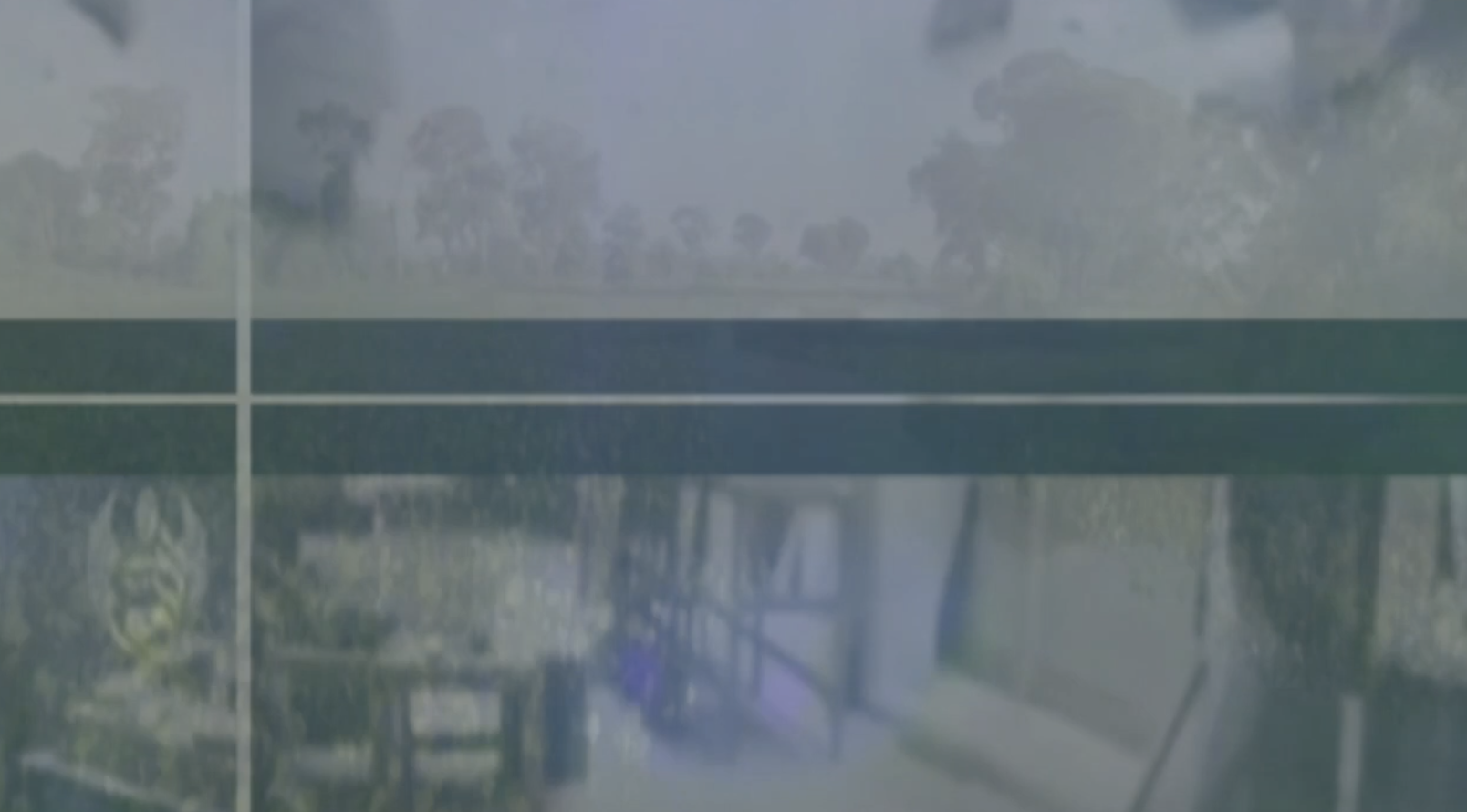
Watch ‘Untoward Equilibrium’
nostr:naddr1qqrk5vj8v45xkagpzpmhxue69uhkummnw3ezuamfdejsygquk99txdv8dly7lsmasw969p70zlj6mnxtyzlk6j0em2tft4fyvgpsgqqqskasumlfl9
More from Hes:
All images and video are credit of Hes, but you are free to download and use for any purpose. If you find joy from my art, please feel free to send a zap. Enjoy life on a Bitcoin standard.
-
 @ 0b118e40:4edc09cb
2025-01-03 16:27:58
@ 0b118e40:4edc09cb
2025-01-03 16:27:58I was reading this book Too Big to Jail by Chris Blackhurst that talks about one of the biggest bank scandals of the century - billions of money laundered through HSBC for the Sinaloa cartel, the world’s largest drug cartel that supplies 25% of illegal drugs to the US. HSBC walked away with a $1.9 billion fine in 2012 and no one was charged or imprisoned. Meanwhile, Joaquín "El Chapo" Guzmán, the cartel’s leader, was sentenced to life in prison + 30 years in the US, with $12.6 billion of his assets forfeited.
Interestingly, HSBC’s dark history dates back to over 150 years. I first read in John Potash’s Drugs as Weapons Against Us about how HSBC was established to serve the opium trade. Chris Blackhurst expands on this story. HSBC’s founder, Thomas Sutherland, had no banking experience but leveraged his trade expertise and British imperial backing to lead a thriving merchant business alongside opium business exporting to China. When China resisted, the British Empire doubled down and escalated tensions, resulting in the Opium Wars, forcing China to accept opium trade and China ceding Hong Kong to Britain for a hundred years
With trade comes the need for fund transfer, hence Sunderland founded HSBC in Hong Kong, to handle foreign transactions. Ironically, 150 years later, HSBC was caught laundering funds for illegal drugs for the Sinaloa cartel between 2003 and 2010. During this period, HSBC's chairman, Stephen Green, an Anglican priest who authored Ethical Capitalism, was never charged. Instead, he became Lord Green and served as the UK’s Minister of State for Trade and Investment.
Chris Blackhurst aptly summarizes this hypocrisy - "HSBC, the fueller of evil, holds its customers to strict standards, yet it enabled cartels to launder metric tonnes of cash."
Other banks and their crimes
The 1MDB scandal:
Billions was embezzled from the Malaysian sovereign wealth fund in the 1MDB scandal. Those convicted were former Prime Minister Najib Razak who was imprisoned, but mastermind behind it Jho Low remains at large. Goldman Sachs, Deutsche Bank, and AmBank were implicated. Goldman Sachs paid a $2.9 billion fine, and Roger Ng was sentenced to 10 years in prison.Tim Lessner pleaded guilty and cooperated with the authorities.
Wells Fargo Fake Accounts Scandal:
From 2002 to 2016, Wells Fargo employees opened millions of fake accounts in customer’s names without their consent to meet aggressive sales quotas.
Libor Interest Rate Rigging:
Major banks, including Barclays, UBS, Citibank and JPMorgan Chase, colluded to manipulate the London Interbank Offered Rate (Libor) which is a global benchmark for interest rates. This impacted trillions of dollars in global financial products.
I'm sure there is more to the list based on what we know and don't know.
Every time Bitcoin gets criticized for “money laundering,” I think of these scandals and the roles that corrupted governments play. Millions of people have suffered from the systemic corruption of traditional finance and they deserve financial liberation.
A 2020 report from Chainalysis indicated that illicit transactions (including money laundering, ransomware payments, and fraud) accounted for only less than 1% of all Bitcoin transactions, which is a speck compared to the scale of corruption in the traditional financial system. The United Nations Office on Drugs and Crime (UNODC) estimates that between 2% and 5% of global GDP , which accounts for trillions of dollars, is laundered each year through the traditional financial systems.
Chris Blackhurst was right when he said those who are “too big to jail” tend to get away.
-
 @ 8fb140b4:f948000c
2023-07-30 00:35:01
@ 8fb140b4:f948000c
2023-07-30 00:35:01Test Bounty Note
-
 @ 8fb140b4:f948000c
2023-07-22 09:39:48
@ 8fb140b4:f948000c
2023-07-22 09:39:48Intro
This short tutorial will help you set up your own Nostr Wallet Connect (NWC) on your own LND Node that is not using Umbrel. If you are a user of Umbrel, you should use their version of NWC.
Requirements
You need to have a working installation of LND with established channels and connectivity to the internet. NWC in itself is fairly light and will not consume a lot of resources. You will also want to ensure that you have a working installation of Docker, since we will use a docker image to run NWC.
- Working installation of LND (and all of its required components)
- Docker (with Docker compose)
Installation
For the purpose of this tutorial, we will assume that you have your lnd/bitcoind running under user bitcoin with home directory /home/bitcoin. We will also assume that you already have a running installation of Docker (or docker.io).
Prepare and verify
git version - we will need git to get the latest version of NWC. docker version - should execute successfully and show the currently installed version of Docker. docker compose version - same as before, but the version will be different. ss -tupln | grep 10009- should produce the following output: tcp LISTEN 0 4096 0.0.0.0:10009 0.0.0.0: tcp LISTEN 0 4096 [::]:10009 [::]:**
For things to work correctly, your Docker should be version 20.10.0 or later. If you have an older version, consider installing a new one using instructions here: https://docs.docker.com/engine/install/
Create folders & download NWC
In the home directory of your LND/bitcoind user, create a new folder, e.g., "nwc" mkdir /home/bitcoin/nwc. Change to that directory cd /home/bitcoin/nwc and clone the NWC repository: git clone https://github.com/getAlby/nostr-wallet-connect.git
Creating the Docker image
In this step, we will create a Docker image that you will use to run NWC.
- Change directory to
nostr-wallet-connect:cd nostr-wallet-connect - Run command to build Docker image:
docker build -t nwc:$(date +'%Y%m%d%H%M') -t nwc:latest .(there is a dot at the end) - The last line of the output (after a few minutes) should look like
=> => naming to docker.io/library/nwc:latest nwc:latestis the name of the Docker image with a tag which you should note for use later.
Creating docker-compose.yml and necessary data directories
- Let's create a directory that will hold your non-volatile data (DB):
mkdir data - In
docker-compose.ymlfile, there are fields that you want to replace (<> comments) and port “4321” that you want to make sure is open (check withss -tupln | grep 4321which should return nothing). - Create
docker-compose.ymlfile with the following content, and make sure to update fields that have <> comment:
version: "3.8" services: nwc: image: nwc:latest volumes: - ./data:/data - ~/.lnd:/lnd:ro ports: - "4321:8080" extra_hosts: - "localhost:host-gateway" environment: NOSTR_PRIVKEY: <use "openssl rand -hex 32" to generate a fresh key and place it inside ""> LN_BACKEND_TYPE: "LND" LND_ADDRESS: localhost:10009 LND_CERT_FILE: "/lnd/tls.cert" LND_MACAROON_FILE: "/lnd/data/chain/bitcoin/mainnet/admin.macaroon" DATABASE_URI: "/data/nostr-wallet-connect.db" COOKIE_SECRET: <use "openssl rand -hex 32" to generate fresh secret and place it inside ""> PORT: 8080 restart: always stop_grace_period: 1mStarting and testing
Now that you have everything ready, it is time to start the container and test.
- While you are in the
nwcdirectory (important), execute the following command and check the log output,docker compose up - You should see container logs while it is starting, and it should not exit if everything went well.
- At this point, you should be able to go to
http://<ip of the host where nwc is running>:4321and get to the interface of NWC - To stop the test run of NWC, simply press
Ctrl-C, and it will shut the container down. - To start NWC permanently, you should execute
docker compose up -d, “-d” tells Docker to detach from the session. - To check currently running NWC logs, execute
docker compose logsto run it in tail mode add-fto the end. - To stop the container, execute
docker compose down
That's all, just follow the instructions in the web interface to get started.
Updating
As with any software, you should expect fixes and updates that you would need to perform periodically. You could automate this, but it falls outside of the scope of this tutorial. Since we already have all of the necessary configuration in place, the update execution is fairly simple.
- Change directory to the clone of the git repository,
cd /home/bitcoin/nwc/nostr-wallet-connect - Run command to build Docker image:
docker build -t nwc:$(date +'%Y%m%d%H%M') -t nwc:latest .(there is a dot at the end) - Change directory back one level
cd .. - Restart (stop and start) the docker compose config
docker compose down && docker compose up -d - Done! Optionally you may want to check the logs:
docker compose logs
-
 @ 82341f88:fbfbe6a2
2023-04-11 19:36:53
@ 82341f88:fbfbe6a2
2023-04-11 19:36:53There’s a lot of conversation around the #TwitterFiles. Here’s my take, and thoughts on how to fix the issues identified.
I’ll start with the principles I’ve come to believe…based on everything I’ve learned and experienced through my past actions as a Twitter co-founder and lead:
- Social media must be resilient to corporate and government control.
- Only the original author may remove content they produce.
- Moderation is best implemented by algorithmic choice.
The Twitter when I led it and the Twitter of today do not meet any of these principles. This is my fault alone, as I completely gave up pushing for them when an activist entered our stock in 2020. I no longer had hope of achieving any of it as a public company with no defense mechanisms (lack of dual-class shares being a key one). I planned my exit at that moment knowing I was no longer right for the company.
The biggest mistake I made was continuing to invest in building tools for us to manage the public conversation, versus building tools for the people using Twitter to easily manage it for themselves. This burdened the company with too much power, and opened us to significant outside pressure (such as advertising budgets). I generally think companies have become far too powerful, and that became completely clear to me with our suspension of Trump’s account. As I’ve said before, we did the right thing for the public company business at the time, but the wrong thing for the internet and society. Much more about this here: https://twitter.com/jack/status/1349510769268850690
I continue to believe there was no ill intent or hidden agendas, and everyone acted according to the best information we had at the time. Of course mistakes were made. But if we had focused more on tools for the people using the service rather than tools for us, and moved much faster towards absolute transparency, we probably wouldn’t be in this situation of needing a fresh reset (which I am supportive of). Again, I own all of this and our actions, and all I can do is work to make it right.
Back to the principles. Of course governments want to shape and control the public conversation, and will use every method at their disposal to do so, including the media. And the power a corporation wields to do the same is only growing. It’s critical that the people have tools to resist this, and that those tools are ultimately owned by the people. Allowing a government or a few corporations to own the public conversation is a path towards centralized control.
I’m a strong believer that any content produced by someone for the internet should be permanent until the original author chooses to delete it. It should be always available and addressable. Content takedowns and suspensions should not be possible. Doing so complicates important context, learning, and enforcement of illegal activity. There are significant issues with this stance of course, but starting with this principle will allow for far better solutions than we have today. The internet is trending towards a world were storage is “free” and infinite, which places all the actual value on how to discover and see content.
Which brings me to the last principle: moderation. I don’t believe a centralized system can do content moderation globally. It can only be done through ranking and relevance algorithms, the more localized the better. But instead of a company or government building and controlling these solely, people should be able to build and choose from algorithms that best match their criteria, or not have to use any at all. A “follow” action should always deliver every bit of content from the corresponding account, and the algorithms should be able to comb through everything else through a relevance lens that an individual determines. There’s a default “G-rated” algorithm, and then there’s everything else one can imagine.
The only way I know of to truly live up to these 3 principles is a free and open protocol for social media, that is not owned by a single company or group of companies, and is resilient to corporate and government influence. The problem today is that we have companies who own both the protocol and discovery of content. Which ultimately puts one person in charge of what’s available and seen, or not. This is by definition a single point of failure, no matter how great the person, and over time will fracture the public conversation, and may lead to more control by governments and corporations around the world.
I believe many companies can build a phenomenal business off an open protocol. For proof, look at both the web and email. The biggest problem with these models however is that the discovery mechanisms are far too proprietary and fixed instead of open or extendable. Companies can build many profitable services that complement rather than lock down how we access this massive collection of conversation. There is no need to own or host it themselves.
Many of you won’t trust this solution just because it’s me stating it. I get it, but that’s exactly the point. Trusting any one individual with this comes with compromises, not to mention being way too heavy a burden for the individual. It has to be something akin to what bitcoin has shown to be possible. If you want proof of this, get out of the US and European bubble of the bitcoin price fluctuations and learn how real people are using it for censorship resistance in Africa and Central/South America.
I do still wish for Twitter, and every company, to become uncomfortably transparent in all their actions, and I wish I forced more of that years ago. I do believe absolute transparency builds trust. As for the files, I wish they were released Wikileaks-style, with many more eyes and interpretations to consider. And along with that, commitments of transparency for present and future actions. I’m hopeful all of this will happen. There’s nothing to hide…only a lot to learn from. The current attacks on my former colleagues could be dangerous and doesn’t solve anything. If you want to blame, direct it at me and my actions, or lack thereof.
As far as the free and open social media protocol goes, there are many competing projects: @bluesky is one with the AT Protocol, nostr another, Mastodon yet another, Matrix yet another…and there will be many more. One will have a chance at becoming a standard like HTTP or SMTP. This isn’t about a “decentralized Twitter.” This is a focused and urgent push for a foundational core technology standard to make social media a native part of the internet. I believe this is critical both to Twitter’s future, and the public conversation’s ability to truly serve the people, which helps hold governments and corporations accountable. And hopefully makes it all a lot more fun and informative again.
💸🛠️🌐 To accelerate open internet and protocol work, I’m going to open a new category of #startsmall grants: “open internet development.” It will start with a focus of giving cash and equity grants to engineering teams working on social media and private communication protocols, bitcoin, and a web-only mobile OS. I’ll make some grants next week, starting with $1mm/yr to Signal. Please let me know other great candidates for this money.
-
 @ e373ca41:b82abcc5
2025-01-03 16:25:26
@ e373ca41:b82abcc5
2025-01-03 16:25:26ADVERTISEMENT:
Looking for the easiest way to buy Bitcoin and store it yourself? The Relai app is the No. 1 crypto start-up and No. 2 of all fintech start-ups in Switzerland. Here you can buy Bitcoin in just a few steps and also set up savings plans. Nobody has access to your Bitcoin except you. With the referral code MILOSZ you save on fees. (no financial advice).

Need more security? The Trezor wallets are recommended and easy to use, others are available in the store. Need more advice? Book an introductory meeting with a wallet expert.
I was told the following story at one of my readings last year.
An elderly couple from a Swiss town with a high density of anthroposophically minded people were said to have been vaccinated against coronavirus. My conversation partner found this unusual, wanted to know the “why” and asked.
“Oh, you know, the two of us had wanted to end our lives voluntarily and in a self-determined way for a long time,” they explained. “When the coronavirus vaccinations came along, we thought: This is our chance!”
Absurd times
I had to laugh. What an absurd time to live in. Actually only bearable as a meme. Last year was also a year in which things were reversed. Everything is upside down and yet should seem normal. Calling minister of economy Habeck a moron in a meme resulted in a house search and an insult lawsuit. Calling Alice Weidel, leader of opposition AFD a "Nazi bitch", on the other hand, is no problem. The new normal: reality as permanent satire.

(when you read this, you caught it already)
But this image is breaking down, it is being recognized and increasingly rejected:
- Stagings with satanic overtones at the Olympics & Co. caused a wave of outrage.
- Medium magazine named the nomenklatura journalists from Correctiv as journalist of the year, at the same time as their core thesis of a remigration conspiracy was melting away.
- The “reason of state for Israel” was a Nibelung allegiance for war criminals: a Netanyahu would have to be arrested on German soil if Germany wanted to comply with international law.
- The woke influencer and Böhmermann gag writer “El Hotzo”, one of the “self-reflective feminist men” in the outside media world (he wished Trump dead after the assassination attempt), has now had to publicly confess to having manipulated and gaslighted women for years and to having exploited his media position to do so.
- The Magdeburg attacker is being framed on the right, police laws and surveillance are to be stepped up, but the media are warning that extremists are now exploiting this event for their own ends. Very interesting: because the danger comes from the right, we protect Christmas markets instead of mosques. Nobody takes all this seriously anymore.
Many half-dead zombie topics are starting to move again. The lab leak theory has been confirmed once again. The Paul Ehrlich Institute (whose job is the oversight of vaccines, among others) virtually admitted that certain vaccine batches were more dangerous than others. Why didn't it intervene? This is what state-perpetrated killing and bodily harm by omission looks like. Has Paul Cichutek (former head of PEI) already been arrested, his house searched and documents confiscated (along with the "Federal Cross of Merit")?
Most recently, a Yale study (still unpublished) showed that spike proteins were still detectable two years after vaccination, and an effect on genetic material is not ruled out. Sounds a lot like the “conspiracy theories” of 3 years ago. Yet in this country, the state still recommends this vaccination to pregnant women. It won't be possible to put all these educational topics in a repository for toxic information, as the leaked RKI protocols have recently shown. The tide is turning, the picture is clearing. But slowly and not on page 1 of the newspapers and their editors, who are now fighting for survival because nobody wants to read their lies anymore. “Another hundred years of newspapers and all words will stink,” Nietzsche said a good 100 years ago.

("Power replaces first class talent by idiots, as lack of intelligence and creativity is always the best guarantee for loyalty", Hannah Arendt)
Do not live with lies
Fifty years ago, Alexander Solzhenitsyn published the text “Do not live with lies” (1974), in which he points out the antidote to lies:
“Our way: CONSCIOUSLY SUPPORT THE LIE IN NOTHING! Recognize where the boundary of the lie is (it looks different for everyone) - and then step back from this life-threatening boundary! Do not glue together the dead knuckles and scales of ideology, do not mend the rotten rag - and we will be amazed at how quickly and helplessly the lie falls away, and what should stand naked and bare will then stand naked and bare before the world.”
You can laboriously help build lies, submit to an ideology that nourishes you for a while. But when the edifice of lies collapses, nothing else will help. Every lie wears out and is eventually overtaken by reality. We see that the spans of lies are getting shorter and shorter, that the roller of reality is rolling over them faster and faster.
“We can't force them to tell the truth. But we can make them lie more and more brazenly.”
I've read this sentence a lot recently. Sometimes it is attributed to Ulrike Meinhof, sometimes to Bernward Vesper, Gudrun Ensslin's husband. I find the quote remarkable because it directs our attention away from what we cannot and will never change, namely the existence of the lie itself, towards what we can change: the soil on which the lie grows or does not grow. In the Luhmannian sense, we must look away from the system (the lie) and towards the environment or surroundings in which it thrives or not. The path from lies to truth is the same as the path from slavery to freedom. The revolutionary poet Georg Herwegh formulated this in his poem “A lane for freedom - der Freiheit eine Gasse” (1841):
“When all the world lost courage,\ To begin the feud,\ You, my people, stand before the nations,\ Let your heart's blood run!\ Give us the man who grasps the banner\ Of the new age,\ And through Europe we will break\ A lane for freedom!”
- Julian Assange is free! He is Herwegh's “man” for me.
- Satoshi Nakamoto, the inventor of Bitcoin, is Herwegh's “man” for me.
- Austrian singer Udo Jürgens, tenth anniversary of whose death was recently celebrated, was Herwegh's “man” for me: “I am in favor of dissent being allowed, I even consider it a duty.”, he sings. Even chansonniers from 20 years back would qualify as subversive today.
https://www.youtube.com/watch?v=McgZEA6BZiY * We are all Herwegh's “man”. There is not just one to hope and wait for, but many of our kind and more and more of them.
I was able to get to know many of them this year when I visited a good 50 places on my reading tour. Four years ago, we worked together to create an avenue for freedom when we published the “Appeal for free debate spaces”. * Today, together with a team of developers, I am building the Pareto project, another alleyway for the freedom of information.
I wish you all a happy new year and thank you very much for your loyalty and support of my work!
This article by Milosz Matuschek first appeared in German on Freischwebende Intelligenz.
Join the marketplace of ideas! We are building a publishing ecosystem on Nostr for citizen-journalism, starting with a client for blogging and newsletter distribution. Sound money and sound information should finally be in the hands of the people, right? Want to learn more about the Pareto Project? Zap me, if you want to contribute (all Zaps go to the project).
Update: Since my last article on the Pareto project, we have received more than 50 messages from publications, journalists, authors, testers and supporters. Thank you very much, we are happy to help everyone become censorship-resistant! May just take a little time. Are you a publication and want to be part of it, test us, migrate your content to Nostr? Write to team@pareto.space
Not yet on Nostr and want the full experience? Easy onboarding via Nosta.me.
-
 @ 58937958:545e6994
2025-01-03 11:07:06
@ 58937958:545e6994
2025-01-03 11:07:06January 3, 2024 I made a Bitcoin-inspired Osechi to celebrate Bitcoin's birthday. Everything was handmade! Osechi: A traditional Japanese New Year’s feast, typically served in stacked boxes.
First Layer (Ichino-jū)

- Tazukuri: Dried sardines, symbolizing a wish for a bountiful harvest.
- Simmered Kuai: A vegetable with large sprouts, symbolizing growth and success.
- Kombu Rolls: A play on words with the Japanese term yorokobu ("to be joyful"), making it a good luck dish.
- Matsukazeyaki: Ground meat coated with sesame or poppy seeds on one side, symbolizing honesty (no "hidden side").
- Black Beans: Represent hard work and good health.
- Datemaki: Sweet rolled omelet resembling scrolls, symbolizing knowledge and learning.
- Grilled Yellowtail: A fish whose name changes as it grows, symbolizing success. Salmon Terrine: A classic addition to Western-style Osechi. Salmon symbolizes success, avoiding misfortune (sakeru), and prosperity for future generations.
- Tataki Gobo: Burdock root with deep roots, symbolizing family stability and prosperity.
Second Layer (Nino-jū)

- Candied Kumquat: A dish symbolizing wealth and good fortune.
- Namash: Pickled daikon and carrot, resembling celebratory red and white decorations.
- Chestnut Kinton: Golden in color, symbolizing wealth and a prosperous year.
Bitcoin-themed additions:
- Pumpkin Yokan
- Chicken and Spinach Terrine
- Kinako Sticks
Third Layer (Sanno-jū)
 Nishime: A simmered dish with various ingredients, symbolizing family harmony and long-lasting prosperity.
I used snow peas to represent Bitcoin, and I couldn’t help but laugh at myself.
Nishime: A simmered dish with various ingredients, symbolizing family harmony and long-lasting prosperity.
I used snow peas to represent Bitcoin, and I couldn’t help but laugh at myself.Dishes Inspired by Bitcoin
Pumpkin Yokan
 I made firm milk jelly, cut it into a "B" shape with a knife, and filled it with pumpkin yokan.
I made firm milk jelly, cut it into a "B" shape with a knife, and filled it with pumpkin yokan.Chicken and Spinach Terrine
 It was my first attempt, and I think with more care, the shape could be even better.
It was my first attempt, and I think with more care, the shape could be even better.Kinako Sticks
 A simple snack made with honey and roasted soybean flour (kinako).
Roll it out, cut it into sticks, and coat with more kinako.
A simple snack made with honey and roasted soybean flour (kinako).
Roll it out, cut it into sticks, and coat with more kinako.Candied Kumquat
 Candied Kumquat: A dish symbolizing wealth and good fortune.
In Japan, 金柑 (kumquat) includes the kanji 金, which represents "gold."
Candied Kumquat: A dish symbolizing wealth and good fortune.
In Japan, 金柑 (kumquat) includes the kanji 金, which represents "gold."nostr:nevent1qqspu8gegzdamtx2rsm4995t3sg8qssw3vn3yn25ru8plghsqyrwtkcn0u7vy
I wonder what Satoshi might have eaten on the day Bitcoin was born. Wouldn't it be amusing to imagine him snacking on Osechi while working on his computer? (Satoshi chose a Japanese name, so perhaps he might have an interest in Japanese culture.) Maybe, right now, Satoshi is relaxing and enjoying some Osechi... though probably not! In any case, I hope Satoshi is living peacefully somewhere.
-
 @ 58937958:545e6994
2025-01-03 11:01:49
@ 58937958:545e6994
2025-01-03 11:01:492024年1月3日 ビットコインのお誕生日に合わせて ビットコインっぽい具材を入れたおせちを作りました 全部手作りです
1の重
 (左上から)
(左上から)- 田作り…田んぼに田作り(カタクチイワシ)を肥料として撒いたことから、豊作祈願の意味合いがある。
- くわいの煮物…大きく芽が出る野菜で、出世や成功を祈る。
- 昆布巻き…「喜ぶ(よろこぶ)」の語呂合わせで縁起物。
- 松風焼き…表面だけケシの実やゴマをまぶす=裏がない→隠し事のない正直な生き方ができるように、という意味が込められている
- 黒豆…「まめに働く」ことや健康を祈る。
- 伊達巻き…巻物に似ていることから、知識が豊富になるようにと願いが込められている。
- ぶりの幽庵焼き…ぶりは成長とともに名前が変わる出世魚で、将来の出世を願う。
- 鮭のテリーヌ…洋風おせちの定番。鮭には「出世」「災いを避け(サケ)る」「子孫繁栄」などの意味がある
- たたきごぼう…根が深く張るごぼうは家族や子孫繁栄の象徴。
2の重

- 金柑の甘露煮…金柑の「金」の文字から、金運や財運を祈る。
- なます…紅白の水引のような形状で祝いの意味がある
- 栗きんとん…黄金色が金運を表し、豊かな1年を願う。
以下はビットコイン具材として入れました
- カボチャようかん
- 鶏とほうれん草のテリーヌ
- きな粉棒
3の重
 煮しめ…様々な具材を一緒に煮ることから、「皆で仲良く、末永く繁栄するように」という願いが込められている
きぬさやのBは我ながらちょっと笑ってしまった
煮しめ…様々な具材を一緒に煮ることから、「皆で仲良く、末永く繁栄するように」という願いが込められている
きぬさやのBは我ながらちょっと笑ってしまったビットコインを意識して作った具材
カボチャようかん
 固めの牛乳かんを作り、包丁でBの形に切り抜いて、カボチャのようかんを流す感じです
固めの牛乳かんを作り、包丁でBの形に切り抜いて、カボチャのようかんを流す感じです鶏とほうれん草のテリーヌ
 鶏むね肉とはんぺんをミンチにして、半分にほうれん草を入れて形作りました
初めて作ったので不安でしたが丁寧に作ればもっと良い形になると思いました
鶏むね肉とはんぺんをミンチにして、半分にほうれん草を入れて形作りました
初めて作ったので不安でしたが丁寧に作ればもっと良い形になると思いましたきな粉棒
 はちみつときな粉だけで作る駄菓子的なおやつです
のばして包丁で切り抜いてきな粉をまぶします
はちみつときな粉だけで作る駄菓子的なおやつです
のばして包丁で切り抜いてきな粉をまぶします金柑の甘露煮
 丸くてオレンジ色なので作ってみました
しかも名前に「金(ゴールド)」が入っているのでビットコイン食材のポテンシャルがあると思います
とろける感じでめっちゃおいしかったです
丸くてオレンジ色なので作ってみました
しかも名前に「金(ゴールド)」が入っているのでビットコイン食材のポテンシャルがあると思います
とろける感じでめっちゃおいしかったですnostr:nevent1qqspu8gegzdamtx2rsm4995t3sg8qssw3vn3yn25ru8plghsqyrwtkcn0u7vy
サトシはビットコインが生まれたその日に何を食べていたのかなぁと おせちをつまみながらパソコンに向かっていたりしたら面白いなぁと思いながら作りました (日本文化が好きだから日本名にした可能性はあるかな~とか)
今頃のんびりおせちを食べてくつろいでいる・・・なんてことはないですかね 何にせよサトシが平和に暮らしていればいいなぁと思います
-
 @ 45bda953:bc1e518e
2025-01-03 10:33:02
@ 45bda953:bc1e518e
2025-01-03 10:33:02I did not need to learn to understand Bitcoin. Understanding Bitcoin was intuitive for me. I loved reading as a kid. Asterix and Tintin comics were a staple for me and I grew into the F.W.Dixon Hardy Boys books. Reading about theft, danger and sleuth mysteries pivoting into fantasy stories and then all manner of fiction and authors I am not going to name because it does not really matter and most I have forgotten. I devoured a substantial amount of fiction as a child. At one point when I was 13 years old in 2000 I decided to read a grown up book. My dad had a copy of Des Griffin's book (Fourth Reich of the Rich) on his bookshelf. The reason I picked that book is because it looked serious and ominous and it had a big swastika on the cover. I assumed that if I am going to read a grown up book this one seemed to challenge me. I read the book and it blew my tiny child brain wide open. I realised how complex and potentially evil the world could be. No one forced me to read it, no one recommended the book to me. Learning about the financial system and how finance is used to break the spirit of man and corrupt our lives with war and destruction germinated questions and doubts in my mind. Sunday school, rainbows and butterflies be damned. My world was shattered and I needed answers. I decided to go as far back as I possibly could and before the end of that year I had finished reading the Bible. I had an orange NIV at the time and I just started at page one and read every day until Revelations 22. In hindsight I managed to learn very little on my first read through, my underdeveloped mind lacked a lot of life experience and wisdom to really understand most of what I consumed but I had built a skeleton of the time line anchoring me through world history and that was more meaningful than I understood at the time. The most important thing I discovered about myself in the year 2000 is that I was obsessed with history not for history's sake. I needed to understand the why behind the why. I was on a mission to discover why evil exists and what is going to fix it. I had read through the Bible cover to cover about 7 times since. For the next couple of years I went onto the rabbit hole of conspiracy and mysticism. I had read the largest amount of nonsense rubbish books written by some of the most depraved moronic minds the world had ever conjured into existence, hoping that I would find some clue to the origins and purpose of evil and it's elusive cure. When a 15 year old reads Morals and Dogma by Albert Pike trying to find a grain of truth only to realise he has discovered delusional hocus pocus aerie faerie shit moving on to the next author spouting incessant crap leading nowhere. It took me many years to learn that there is no magic behind the freemasonic order or Adam Weishaupt's Illuminati. I concluded that there did not exist a freemason who knew the truth or would communicate the reality about the existence of their order and it's origins. After reading hundreds of books and documents ranging from Aesop to Marx to I had to capitulate into a nihilistic faith in Christ. Because the answer to evil was simply a hope in the second coming where Jesus might wipe out evil and punish sin. The only way an inkling of justice could exist among mankind. Having discovered this hope the way I did was not healthy because inaction is the only requirement and all action becomes meaningless. If good and right cannot project from within the created being and it is doomed to be a spectator to the performance of divine justice then I might just as well capitulate and die for my life is just as meaningless as the one who does all that is right and good. I reverted to an ecclesiastical, stoic, nietzschean frame of mind, everything is meaningless and nothing means anything, all can go fuck themselves. It was a doom loop in my mind which lead me to giving no shits about anything. I would drink, do dangerous things just to exact my own private kind of revenge on whoever I felt deserved it. I hated the world and wanted to see it all burn. My most ardent hate was reserved for money and people who showed any form of respect for money or wealth. A homeless woman confronted me on the street one day asking if I have money for her. I took all the money I had in my wallet and said to her all I have is this communist rubbish paper and I said to her she can have it all but I feel bad that I don't have anything of value to give her. It was about R70, I did not have much. She started crying when I gave it to her and she even seemed unwilling to take it when I offered it to her more insistingly.
I cleaned up my act a bit when I met a girl I liked and we started a relationship. She was still at school and I picked her up in my Volkswagen Golf after school and took her home every day. With time as our relationship developed I started to feel responsible for her well being seeing how emotionally dependant she became on me over time. I did not have a job. I was always setting up LANS and playing computer games with my buddies and sponging of my parents, I had no interest in earning income or looking for a job. In spite of this unproductive attitude to life my girlfriend loved me, I could articulate abstract concepts and explain mysteries and organise thoughts into coherent ideas of life and philosophy and we had many friends. I decided that I was going to get my life in order so that I can man up to the responsibility of having a woman in my life. I got a job at a car dealer got into a fight with the manager and fired my boss after a week of witnessing the most shallow insipid style of life and world view. The fiat system was so repulsive to me it would make me sick. I even refused to open a bank account which did not help with trying to find employment. I ended up working for my father learning skills from a man I could respect because his character was honourable and above reproach. I could disagree with him and retain my respect for him. He was stuck in a fiat clutch of debt, a hard worker and honest businessman but the fiat world never allows good men a moment for pause. He was willing to pay me in cash and I started to provide for my young wife and newborn daughter. I discovered the bitcoin whitepaper in 2011, in this time but I was not in a position to attain any because the rails for purchase did not yet exist in my country, I did not have internet access at home and my PC was just standing at my parents house at the time so mining was not an option.
We did not even have electricity, I shut it off because I had a fight with my wife's fiat minded family who wanted to split the electric bill on the property equally. I had purchased a kwh meter that I was going to install at my distribution board to calculate how many units of power we used monthly. They did not like that idea and I got push back from them. So I disconnected our house and paid the two following bills, when the third bill came I did not pay. They were very surprised to find out that we were living without electricity to for two months already and they did not even have a difference in the price of the electric bill. We were hardly using any power and was paying a bulk chunk of their bills. Anyway...
I immediately understood Bitcoin and the problems it could solve for me personally with regards to the fact that I hated money so much. My disconnect with reality suddenly did not reflect my madness but the madness of the world. I adopted Bitcoin in my heart and had my hopes pinned on it achieving some type of success. Bitcoin became a placeholder in my mind thereafter something I knew I would keep track of into the future. In 2016 sometime I watched a video where Jack Mallers discussed placing verifiable and peer to peer bets on chess games online using Bitcoin. I got so excited I wanted to explode, I called my dad and my brothers and I wanted them to see the video. Their reaction left me disappointed because I realised that the implications of what this tech could become was lost on them and I could not adequately explain it in analogies that made sense, I just seemed like a rambling nutcase. Anyway I did a bit of searching and found that it was possible to buy Bitcoin online in South Africa. I did not waste any time and opened a bank account for the first time in 11 years. (I had a savings account when I was a kid.) I needed to be able to do transfers to purchase bitcoin. Our first purchase was R150 we ended up with 90 rand after the exchange took a third of the amount in withdrawal fees because I immediately taught myself how to and took self custody. It was about 0.01170000 sats. I used all those sats to order a type of debit card from England wherewith I tried spending the bitcoin at a local supermarket. I was not trying to save the sats, I wanted to test the technology and did not know I was spending potentially thousands of rands in future savings buying a card and some junk food. It worked for about two weeks then regulations forced the company that supplied the card to shut down its services. They emailed me and apologised. I did not care, this technology was going to change the world forever, the only thing I could not yet predict was how long it would take for adoption to happen. In my mind we were on the precipice of a revolution and the whole world was going to see the light overnight. I was so wrong and my expectations were 100% unrealistic. I had way too much confidence in humanities collective intelligence and their ability to see the change in monetary dynamics I perceived as the ultimate liberation of all mankind. When I realised how unresponsive people are to this I took up the responsibility of educating everyone I came in contact with about Bitcoin and I did not even own any meaningful amount properly yet. The price did not matter to me. I did not even understand how valuable it would become as wealth, the function of cutting out all intermediate institutions was the selling point for me. No one valued, understood or even bothered taking me seriously. Some people humoured me and some laughed and scoffed at me. I became frustrated. But for the first time in my life, I had hope, meaning, something to aspire to...
...and that is valuable.
To be continued...
...
bitbib
-
 @ d902ac01:6d69de69
2025-01-03 09:39:57
@ d902ac01:6d69de69
2025-01-03 09:39:57 -
 @ 1c7629da:d831cb25
2025-01-03 09:08:51
@ 1c7629da:d831cb25
2025-01-03 09:08:51Introduction
The Bitcoin Whitepaper is the foundation of the modern cryptocurrency world. Written by Satoshi Nakamoto, it marked the start of a revolution in finance. In this post, we take a detailed look at the Whitepaper: when and why it was written, what it contains, what is missing, and how Bitcoin has developed since then.
When and why was the Bitcoin Whitepaper published?
The Whitepaper, titled "Bitcoin: A Peer-to-Peer Electronic Cash System," was published on October 31, 2008, by Satoshi Nakamoto. During the global financial crisis, Nakamoto presented a decentralized solution for digital payments. The goal was to create an electronic payment system that operates without a central authority and allows users to send money directly to each other.
What is in the Bitcoin Whitepaper?
The nine-page document describes the technical foundation and philosophy behind Bitcoin. Here are the key points:
- Introduction: The problems with the current financial system are explained. Nakamoto describes the need for a system based on cryptographic proof instead of trust.
- Transactions: Bitcoin transactions are digital signatures passed in a chain of ownership. This prevents double spending.
- Timestamp Server: Transactions are grouped into blocks and linked through timestamps. This secures the blockchain.
- Proof-of-Work: To prevent manipulation, proof-of-work is required to create new blocks.
- Network: Participants send transactions to the entire network. Valid blocks are accepted by consensus and added to the blockchain.
- Incentives: Miners are rewarded with new bitcoins and transaction fees.
- Storage Space: The paper describes ways to save space by removing unnecessary transactions.
- Privacy: Bitcoin allows pseudonymous transactions since no real names are used, only public keys.
What is not in the Whitepaper?
Although the Whitepaper clearly defines the basics, many important details found in Bitcoin today are missing:
- 21 Million Bitcoin: The maximum supply of 21 million Bitcoin is not mentioned.
- Block Time: The average block time of 10 minutes is not specified.
- Mining Algorithm: The 1 MB block size limit and adjustments to mining difficulty are not included.
- Signature Methods: The paper does not describe specific signature methods like P2PKH or Schnorr signatures.
How is Bitcoin different from the Whitepaper today?
Bitcoin has changed significantly since the Whitepaper was published. Some of the biggest differences include:
- Mining: Bitcoin was originally mined using CPUs, but today specialized ASIC devices dominate.
- Consensus Mechanism: The idea of the "longest chain" has been replaced by the heaviest chain to prevent timewarp attacks.
- Transaction Types: Multi-signature addresses, Taproot, and other upgrades have been introduced.
- Scaling: Technologies like the Lightning Network have been developed to make Bitcoin faster and more scalable.
Conclusion
The Bitcoin Whitepaper is a masterpiece of clarity and simplicity that explains a complex idea in just a few pages. However, Bitcoin is not static – it has evolved continuously over the past 16 years. The Whitepaper remains the foundation that defines the vision of a decentralized money system for the world.
-
 @ 1cb14ab3:95d52462
2025-01-03 06:00:20
@ 1cb14ab3:95d52462
2025-01-03 06:00:20
























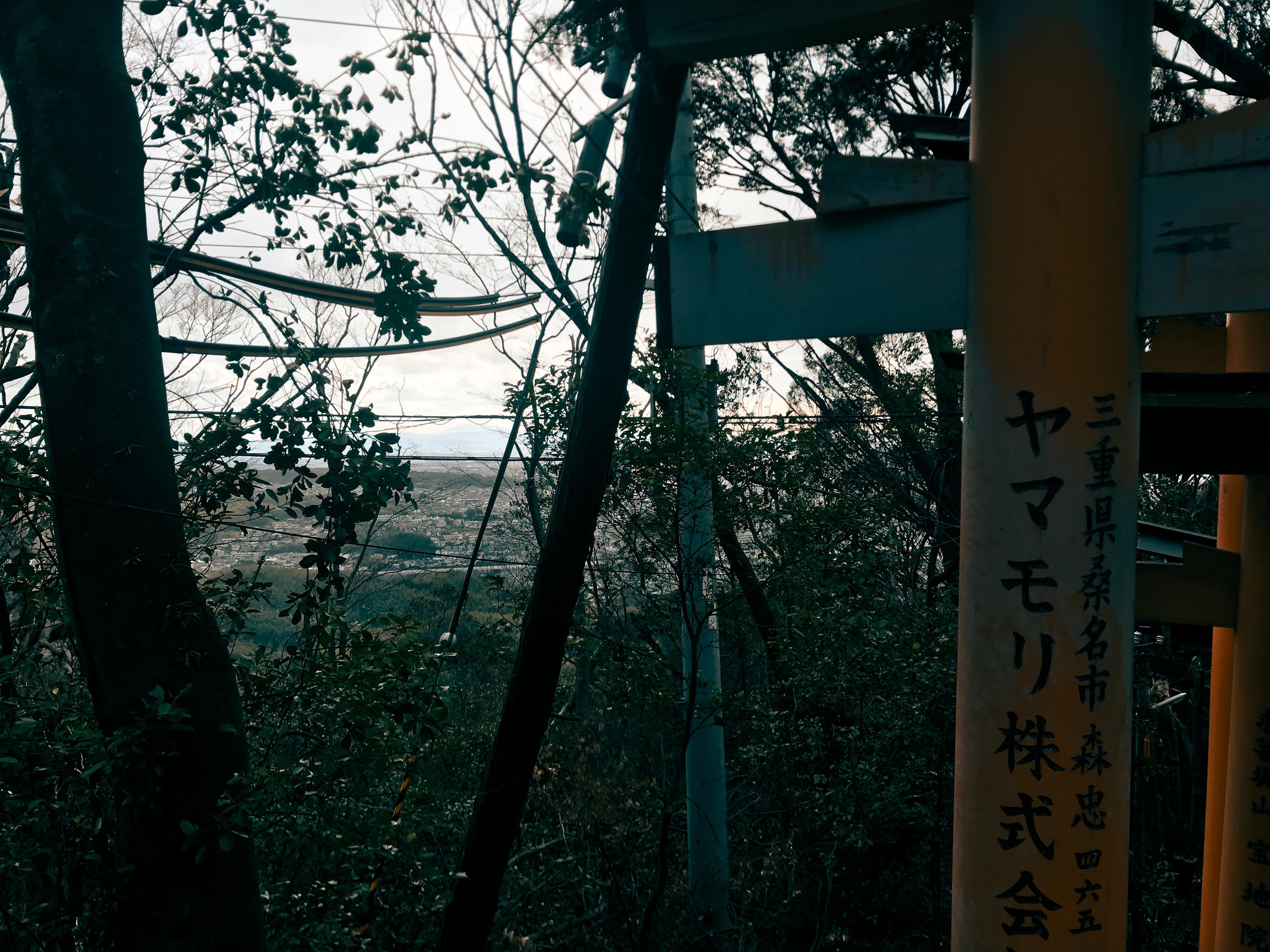








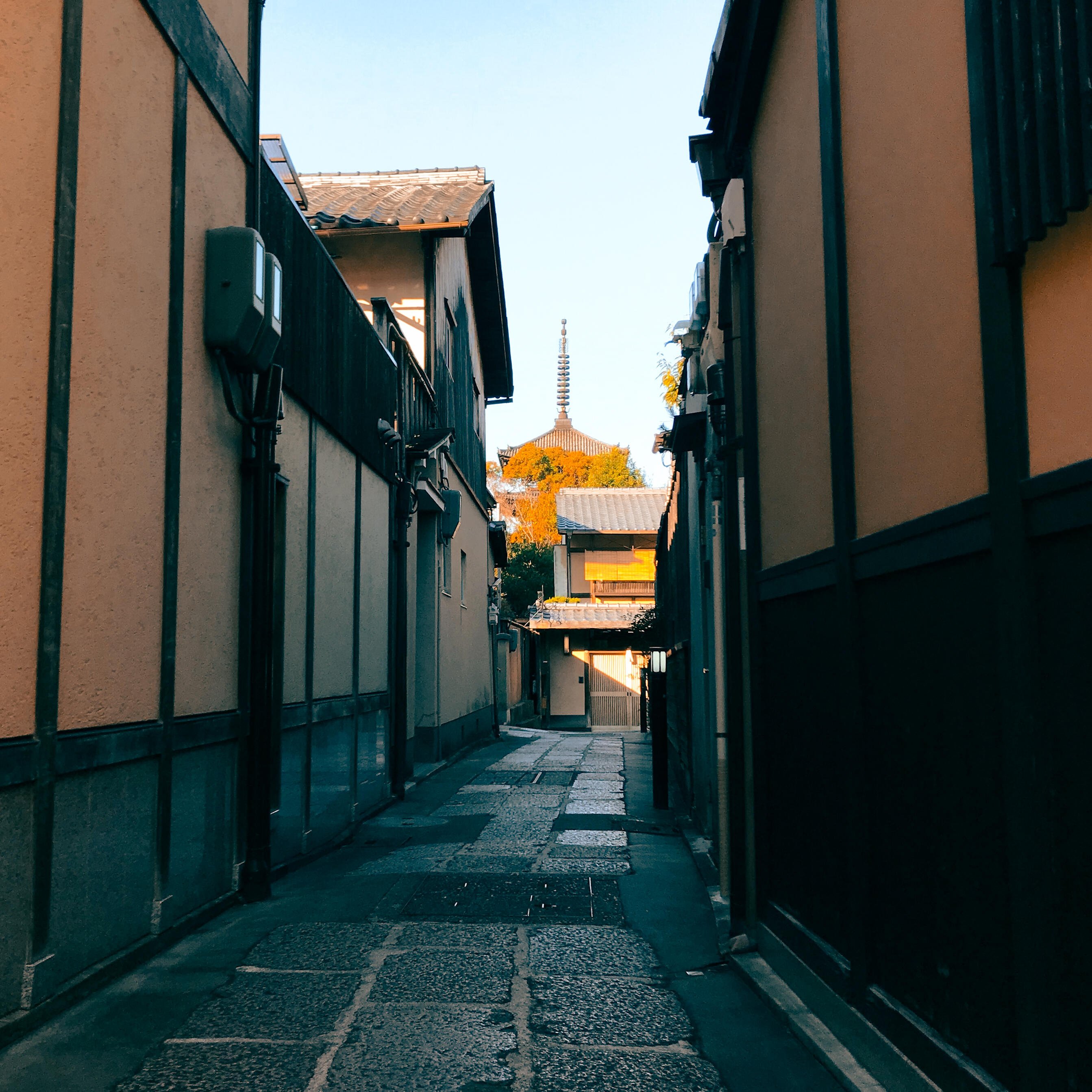









Previous Works in the Series:
More from Hes:
All images are credit of Hes, but you are free to download and use for any purpose. If you find joy from these photos, please feel free to send a zap. Enjoy life on a Bitcoin standard.
-
 @ a012dc82:6458a70d
2025-01-03 02:14:32
@ a012dc82:6458a70d
2025-01-03 02:14:32Discover the controversial perspective that the fiat currency system, managed by central banks, resembles a legal Ponzi scheme. Uncover the nuances of fiat currency, central banking, and its potential parallels to Ponzi schemes. Also, explore the significance of Bitcoin in challenging traditional financial norms and its role as an emerging alternative. Is the foundation of our modern financial system truly as it seems, and can Bitcoin redefine the future of money?
Table Of Content
-
The Fiat System: A Legal Ponzi Scheme?
-
Bitcoin's Challenge to the Fiat System
-
Bitcoin's Resistance to Manipulation
-
The Emergence of Bitcoin ETFs
-
Root Causes of Financial Frauds
-
Conclusion
-
FAQs
The Fiat System: A Legal Ponzi Scheme?
In the world of finance and economics, few terms are as polarising and provocative as "Ponzi scheme." Often associated with high-profile frauds and financial scandals, the concept of a Ponzi scheme typically conjures images of disgraced con artists and their unsuspecting victims. However, could it be that a similar model, albeit operating legally, is at the very core of our modern financial system?
At its core, the fiat monetary system is characterised by a crucial feature: the absence of intrinsic value. Unlike Bitcoin or other commodities that underpinned historical monetary systems, fiat currencies like the US dollar are not backed by tangible assets. Instead, their value is derived solely from the trust and confidence that people place in the issuing government or central authority.
A Ponzi scheme operates on the premise that returns to earlier investors are paid with the capital of newer investors, creating the illusion of profitability. This structure works as long as fresh investments continually pour in, masking the absence of a legitimate revenue source. The fiat system, in an eerily similar fashion, is perpetuated by continually increasing debt and the circulation of more currency.
In the fiat system, governments create money by issuing debt. The expansion of the money supply comes from loans that must eventually be repaid with interest. When these loans come due, governments often issue new debt to pay off the old, resulting in a growing debt burden. Just as a Ponzi scheme must attract new investors to maintain the illusion of solvency, governments must accumulate more debt to meet previous obligations, putting the burden on future generations.
The fiat system's longevity relies on a constant cycle of currency devaluation and inflation. Governments can effectively reduce the real value of their debt by inflating the currency, shifting the cost onto the populace. While this may seem sustainable in the short term, it mirrors the Ponzi scheme's tactic of robbing Peter to pay Paul. In both cases, there's a fundamental issue of sustainability.
Bitcoin's Challenge to the Fiat System
In recent years, Bitcoin has emerged as a revolutionary force challenging the traditional fiat monetary system. Built on the principles of decentralisation and indepence, poses a significant threat to the established norms of central banking and government-issued currencies.
Bitcoin operates on a decentralised network of computers, known as the blockchain. Unlike fiat currencies controlled by central banks, Bitcoin is not subject to the whims of any single authority. This decentralised nature promotes transparency, security, and trust among its users, effectively challenging the centralised control of fiat money.
One of Bitcoin's most distinctive features is its capped supply of 21 million coins. This scarcity stands in stark contrast to fiat currencies that can be printed endlessly by governments. Bitcoin's limited supply acts as a hedge against inflation, making it an attractive store of value.
Bitcoin's technology ensures secure ownership of assets. Users have control over their private keys, reducing the risk of unauthorised seizures or asset freezes, a concern in the fiat system.
Bitcoin is accessible to anyone with an internet connection, providing financial inclusion to the unbanked and underbanked populations. This inclusivity challenges the exclusivity of fiat systems, which often require intermediaries and traditional banking infrastructure.
The decentralised nature of Bitcoin makes it resistant to censorship, ensuring that transactions are not subject to arbitrary restrictions or controls, as seen in some fiat-based systems.
Bitcoin's disruptive potential in the world of finance is undeniable. Its challenge to the fiat system represents a shift in the way we think about money, wealth, and economic systems. As Bitcoin continues to gain mainstream acceptance, it raises fundamental questions about the future of currency and financial infrastructure.
Bitcoin's Resistance to Manipulation:
In the world of finance and economics, the notion of a truly decentralised, trustless, and censorship-resistant form of money is both revolutionary and, to some, unnerving. Bitcoin, stands as a testament to the potential of digital assets to challenge conventional fiat currencies and the centralised systems that underpin them. A fundamental aspect of Bitcoin's allure is its resistance to manipulation, a quality that sets it apart from traditional financial systems and even some other cryptocurrencies.
At its core, Bitcoin operates on a blockchain – a distributed ledger that records all transactions across a vast network of computers. This decentralised nature, combined with cryptographic principles, ensures a high degree of security and transparency. Unlike fiat currencies, which are subject to the whims of central banks and governments, Bitcoin's monetary policy is encoded in its software. The total supply is capped at 21 million coins, and new Bitcoins are issued in a predictable, diminishing manner through a process known as mining.
Bitcoin's resistance to manipulation stems from several key factors. Firstly, its decentralised network is maintained by a diverse group of miners worldwide, making it nearly impossible for any single entity to exert control over the system. Unlike centralised financial institutions that can manipulate interest rates, print money at will, or engage in other questionable practices, Bitcoin's protocol operates independently of human interference.
Secondly, Bitcoin's security mechanisms, such as proof-of-work, ensure that transactions are validated by a competitive network of miners. This makes it incredibly costly and difficult for anyone to compromise the network. Additionally, the immutability of the blockchain means that once a transaction is recorded, it cannot be altered or deleted, providing a robust defence against fraud or manipulation.
Lastly, Bitcoin's open-source nature allows the global community to scrutinise its code and propose changes through a consensus-driven process. Any updates or improvements to the network require majority approval, preventing any single entity from manipulating the protocol to suit its interests.
As traditional fiat currencies face challenges related to inflation, political influence, and centralised control, Bitcoin's resistance to manipulation positions it as a compelling alternative. While it is not without its own set of unique risks, Bitcoin's core principles of decentralisation and transparency contribute to its appeal as a novel form of digital money that empowers individuals and resists manipulation by powerful institutions.
The Emergence of Bitcoin ETFs
The emergence of Bitcoin Exchange-Traded Funds (ETFs) represents a notable development in the world of digital investments, serving as a bridge between traditional financial markets and the realm of digital assets. These ETFs provide a convenient and regulated avenue for investors to gain exposure to Bitcoin without the need to directly possess the cryptocurrency. This comes at a time when Bitcoin has garnered widespread recognition and piqued the interest of both retail and institutional investors.
One crucial aspect of Bitcoin ETFs is their potential to simplify the investment process. Rather than dealing with the intricacies of owning and securely storing Bitcoin in digital wallets, investors can purchase shares of a Bitcoin ETF through conventional brokerage accounts. This streamlined approach lowers entry barriers for those who might have hesitated to navigate the complexities of Blockchain and self-custody.
Furthermore, Bitcoin ETFs offer regulatory oversight and investor protection. These funds operate within the bounds of financial regulations and undergo scrutiny from relevant authorities, enhancing security for investors. They also confer an aura of legitimacy upon the digital asset market, rendering it more appealing to institutional investors that necessitate adherence to regulatory standards.
The advent of Bitcoin ETFs mirrors the evolving role of digital assets. Bitcoin, once considered a niche asset, has matured into a mainstream investment choice. The interest in Bitcoin ETFs signifies the growing embrace of digital assets within the conventional financial system.
However, the ascent of Bitcoin ETFs also ignites discussions about their potential impact on the digital asset market. Some believe that they might stimulate increased demand for Bitcoin, potentially influencing its price dynamics. Nonetheless, these ETFs mark a pivotal step in the broader adoption of digital assets, attracting a wider range of investors to the digital asset sphere.
Root Causes of Financial Frauds
The root causes of financial fraud extend beyond the realm of digital currencies, highlighting that deception-driven activities primarily originate outside the digital asset ecosystem. While the term "digital currency fraud" often suggests that virtual assets are the focal point of these fraudulent activities, in reality, it's seldom the case.
Contrary to the prevailing narrative that digital currencies are a haven for illicit activities, fiat currency remains the preferred choice of financial criminals. Reports from the US Treasury and EUROPOL emphasise that traditional financial channels, associated with fiat transactions, still play a more substantial role in illegal financial activities than virtual assets. Fiat currencies, despite being subject to stringent regulations and oversight, continue to be the medium of choice for criminal activities.
The heart of the matter lies in distinguishing between the origin of the fraud and the role of digital currency within it. In numerous instances, the initial fraudulent activity takes place within non-financial domains or fiat transactions. An illustrative example is credit card fraud, which primarily employs fiat-based payments for unauthorised charges. While some cases culminate in the acquisition of digital currencies, the initial fraudulent activity is rooted in fiat-based mechanisms.
Even in the context of digital currency romance scams or investment schemes, the crux of the fraud lies in establishing non-financial relationships with victims. Funds often start as fiat, moving through traditional payment channels before making their way into digital currencies. The fraud's inception, therefore, remains primarily in the fiat space, and there are several opportunities for intervention through conventional financial systems.
Decentralised Finance (DeFi) hacks, which sometimes fall within the digital currency realm, are more related to risk management protocols within the DeFi ecosystem. These vulnerabilities are often not tied to digital currencies themselves but stem from flaws in DeFi platforms, frequently involving phishing tactics.
To combat these financial frauds with digital currency involvement, it is essential to recognize the preliminary stages of deception, which usually unfold outside the digital asset landscape. Enhancing AML and transaction monitoring intelligence tools, combined with educational efforts, can proactively identify and mitigate potential fraud risks in the fiat sector, even before they intersect with digital currencies. This approach can address the root causes of financial fraud effectively, irrespective of whether they subsequently involve digital currencies or traditional financial systems.
Conclusion
The emergence of Bitcoin has shed light on a widespread, yet often unacknowledged, issue in the world of finance—the fiat scam. Fiat currencies, including the U.S. dollar and the euro, are the lifeblood of traditional financial systems, issued and governed by central banks. However, these currencies lack intrinsic value and are subject to manipulation by central authorities, akin to a legal Ponzi scheme.
Central banks, empowered by governments, possess the authority to create and manage fiat money. They can print additional currency at will, which devalues existing holdings and redistributes wealth, all under the umbrella of legality. Moreover, fiat transactions typically involve intermediaries, like banks, adding layers of complexity and fees.
Bitcoin has introduced an alternative financial paradigm. Unlike fiat, Bitcoin operates on a transparent blockchain network with a predetermined supply, immune to central authority manipulation. It has become a symbol of decentralised financial systems and digital scarcity.
As the world grapples with this shift, it is essential to acknowledge the fiat scam—a legal Ponzi scheme perpetuated by central banks. With increased awareness and the rise of Bitcoin, the financial landscape is poised for transformation, challenging the dominance of fiat currencies.
FAQs
Is the Fiat System Truly a Legal Ponzi Scheme? The fiat system shares similarities with a legal Ponzi scheme in its reliance on continual growth and debt accumulation to sustain itself, but it's important to note that the key difference is legality. Central banks have the authority to issue fiat, making it legal, while Ponzi schemes are fraudulent by nature.
How Does Bitcoin Challenge the Fiat System? Bitcoin challenges the traditional fiat system through decentralisation, a limited supply of 21 million coins, user-controlled assets, accessibility for the unbanked, and resistance to censorship, providing an alternative to centralised fiat currencies.
What Are the Root Causes of Financial Frauds? Root causes of financial frauds often start with non-financial activities or fiat transactions. Credit card fraud, romance scams, and investment schemes typically begin with fiat-based transactions before involving digital currencies. Enhancing AML and transaction monitoring tools can proactively address these root causes in both digital and traditional financial systems.
That's all for today
If you want more, be sure to follow us on:
NOSTR: croxroad@getalby.com
X: @croxroadnews
Instagram: @croxroadnews.co
Youtube: @croxroadnews
Store: https://croxroad.store
Subscribe to CROX ROAD Bitcoin Only Daily Newsletter
https://www.croxroad.co/subscribe
DISCLAIMER: None of this is financial advice. This newsletter is strictly educational and is not investment advice or a solicitation to buy or sell any assets or to make any financial decisions. Please be careful and do your own research.
-
-
 @ 1a5cff51:01c75f78
2025-01-02 23:56:49
@ 1a5cff51:01c75f78
2025-01-02 23:56:49For the longest time I was a strict and rather arrogant atheist and often went so far as too consider myself more an anti-theist. I grew up in a highly catholic environment and since I tend to do the opposite of what people expect of me, I went the exact opposite direction, discovered Metal which lead straight to Black Metal and I became totally anti-christian. Though most of the Christians I encountered where either my age or had such a shallow understanding of their scripture, that even I knew perfectly well that they had no idea what they were saying most of the time.
I’ve since done away with all of that childish nonsense (except the music, of course), after a trip on shrooms led me down more rabbit holes then I could imagine. Throughout my research I discovered Jung and it dawned on me, how much of my life was steered by synchronicities without even knowing what that was. Coming to terms with having been his ignorant when it comes to spirituality has been a humbling experience and my shadow work is far from complete.
I just find it kinda ironic how it's now mostly Christians that seem sane and consistent in their behaviour in these bizarre times and I notice that I feel comfortable being surrounded by them, especially here on Nostr.
-
 @ f4bf1fb5:b428f8d5
2025-01-02 23:44:03
@ f4bf1fb5:b428f8d5
2025-01-02 23:44:03DEG Mods is using a new piece of technology, specifically a new communications protocol that's censorship-resistant called NOSTR, and as such, it uses a non-traditional means of creating an account, as well as how you sign into sites that uses such new tech, like DEG Mods.
Since this is new to most people, it can be somewhat daunting, scary, suspicious, as with anything new, especially something where the individual holds sole responsibility of what they created, as there would be nobody to help them, in the case of creating an account, retrieve their account if it gets lost or if it gets compromised.
We'll skip on explaining in proper detail what NOSTR is specifically, and go straight ahead and explain the direct process of how to create an account, and how to sign in.
How to create an account on DEG Mods
Creating a DEG Mods account is creating a NOSTR account, and that can be done in multiple ways, from using a browser extension, to using a mobile app, to generating it directly on the site.
For the purposes of this current guide, and for the current version of DEG Mods, we'll only be guiding you on how to create a DEG Mods/NOSTR account using a browser extension. With that said, there are currently multiple ones that has been developed for this specific purpose. Some with more features than others, or some with a better UI/UX. For now, we'll be recommending you to install one called Nostr Connect (Chrome / FireFox)
Once you have installed that extension on your preferred browser, make sure that you have the extension pinned on your browser (for easy access and use). To do that, you'd have to open the quick extension preview window on your browser (for example, on Chrome or Brave, that'd be the puzzle-piece icon) and then click the pin icon next to the extension you want to pin. In this case, that'd be the Nostr Connect extension.
Now, click on the Nostr Connect extension icon and then click the gear icon, which will open a new tab/page to start the account creation process.
It's pretty straight forward from there. Just click on the "Generate" button then the save button. This will generate for you a pair of keys/addresses. The shown one is your private key (think of it as your password) that starts with 'nsec', which you should keep safe somewhere (like on a password manager), because if you lose it then you won't be able to access your account, or if it gets leaked then everyone would be able to access your account, and we won't be able to help you retrieve your private key/address or reset it to something else. You are the sole responsible person for your account's security.
Once you're done, close that page then click on the extension icon again. It will now show you your public key/address (think of this as your user ID).
How to sign into DEG Mods
Once you have the DEG Mods site open, click the 'Login' button at the top right. A popup will appear with an option to login with an extension. Click that and another popup will appear (this is your extension being triggered) asking you to authorize the login. Tick the box to remember this action if you'd like (for convenience) and click authorize.
Done. You've now created an account and logged into the site. Now you can publish game mods, comment on posts/pages, react, and more.
Video guide
If you don't feel like reading, or rather, if you're more comfortable watching a video guide on how to do all of this, then here's that video.
Questions and answers
Is this safe?
As we did not create these browser extensions or mobile apps, we can't necessarily guarantee anything, however, until proven otherwise, the browser extensions or mobile apps we recommended here are safe. If you're a programmer, you can check their code directly to see if there's anything suspicious, as they are open source.
Why do you have such a complicated way to make an account?
We understand that this may seem complicated, but it isn't if you think about it.
What did you actually do? You installed a browser extension, generated an account (a key pair), and signed in with a click of a single button. Install, generate, login.
It seems complicated because its something you haven't done before and outside of what you're used it, but in reality, it's actually a lot simpler than traditional methods, which involves creating an email address, then creating an account on each site you want to visit. With this, it's a one time event and you can log into DEG Mods, or any other site or app that's built ontop of NOSTR, with that same account, which holds all of your profile data and posts.
Why don't you have a normal way to make an account on DEG Mods?
Since DEG Mods is a truly censorship-resistant mods site, building the site on NOSTR was the ideal choice to make, which resulted in giving you, the user, the mod creator, and the mod enjoyer, the power of controlling your content, your posts, your profile, your account. We can't ban you because you have a NOSTR account, nor can we take down your posts/pages.
If we had made it so that you can use the normal way of making an account, where you have an email and password combo, then we can do all of those ban things. We would have the power to censor you. You'd have zero power, and we didn't want that outcome.
What do you mean you can't help me restore my account or reset my password?
The account you created was, because of the tech being used, created on your device, and not on any server that we control. As such, we don't see or save your account data (we don't know your private key/address, and we shouldn't). You also cannot change the private key/address of your account, as there is no way to do so / this is how the tech was developed.
Will you maintain and update this guide as time move forwards?
Yes. Since its in our interest to have more users on DEG Mods, we'll be updating this post so that it'll continue being useful to new users.
Can't you make a browser extension or app specifically for DEG Mods?
While it is possible, and we are interested in doing so, as to keep it always up to date and add more features, have the best UI/UX possible, etc, it would require us to receive funds and allocate it for this specific development. So the answer to this question is: If we're successful enough to have the funds to develop it.
Why can't I log into DEG Mods on my mobile phone?
You would need a NOSTR mobile signer for that, and we'll also need to implement such a feature to tell the site that you have that app. It'll come with time, and I'd say sooner rather than later.
-
 @ 6bae33c8:607272e8
2025-01-02 22:23:01
@ 6bae33c8:607272e8
2025-01-02 22:23:01I went 2-3 last week, which only matters bercause I was 5-0 in Week 16, and I thought I might have finished with an epic run, but it was not to be. Week 18 is always fun to guess who’s trying and who’s packing it in. My MO is usually to bet the teams who are missing the playoffs, have nothing to play for, but also no reason not to go all out. They’re usually undervalued.
Browns at Ravens — The Ravens need this game to win the division, so I expect them to try, though they might pull their starters in the second half if they’re way up. I’ll say Browns +14.5 and probably lay the wood.
Bengals at Steelers — The Bengals have a long shot chance of making the playoffs and will go all out. The Steelers are playing for the three seed, but they’d need the Browns to beat the Ravens. Hard to say whether they’ll go all out, but I’ll make it Bengals -3.
Panthers at Falcons — The Falcons need this (but also a Bucs loss), and the Panthers will go all out because they have no reason not to. I’ll say Panthers +4.5.
Killer Redskins at Cowboys — The KRs can move between the sixth and seventh seeds, but I doubt they’ll leave their starters in long. I’ll say KRs +6.5.
Bears at Packers — The Packers can move between the sixth and seventh seeds, but it doesn’t matter much. I’ll make it Bears -3.5.
Jaguars at Colts — Both teams are playing for nothing. Mac Jones is playing decently, and it’s unclear who’s under center for the Colts. I’ll say Jaguars +3.5.
Bills at Patriots — It’ll be Mitch Trubisky against maybe Drake Maye. The Bills don’t need it. I’ll say Bills +5.5.
Giants at Eagles — Neither team needs it, the Eagles are probably resting Saquon Barkley who has a chance to break the single-season rushing record against his old team that decided not to pay him. I’ll make it Giants -2.5.
Saints at Buccaneers — The Bucs need this, the Saints are a destroyed team. Maybe Derek Carr plays, but I’d be surprised. I’ll say Saints +14.5.
Texans at Titans — The Texans don’t care, the Titans can try their hardest. I’ll make it Texans +4.5.
49ers at Cardinals — Two failed teams playing out the string. I’ll say pick ‘em and probably stay away.
Chiefs at Broncos — The Chiefs are resting everyone, the Broncos need to win in order to get in. I’ll make it Chiefs +8.
Seahawks at Rams — The Rams have clinched, can only toggle between the third and fourth seeds. I’ll say Seahawks -6.
Chargers at Raiders — The Chargers can only toggle between the fifth and sixth seeds, the Raiders are obviously done. Let’s say Chargers +6.5.
Dolphins at Jets — Tua’s probably not playing, but the Dolphins still have an outside chance at the playoffs. I’ll make it a pick ‘em and lean Dolphins.
Vikings at Lions — This is for the No. 1 seed and a bye in the NFC. I’ll say Vikings +2.5 and lean Vikings due to their defense.
-
 @ 1cb14ab3:95d52462
2025-01-02 21:31:48
@ 1cb14ab3:95d52462
2025-01-02 21:31:48
No. 6 - Zhujiajiao Canal Chasing

For a tranquil escape from the hustle and bustle of the city cruise to Zhujiajiao -- an epic water town dating back to the Ming and Qing dynasties. It's only about 50 kilometers from the downtown and makes for an easy day trip. Hop on the subway and get there in an hour. Zhujiajiao has canals, bridges, and ancient buildings, offering a glimpse into the town's rich history. Take a boat ride along the canals for the best views of traditional houses and temples. Then explore the town on foot and get lost in attractions like the Kezhi Garden, Yuanjin Temple, and the Qing Dynasty Post Office. Don't forget to grub-up with all of the great food vendors nearby.
No. 7 - China Art Museum

China Art Museum is absolutely worth the trip solely for its awe-inspiring architecture. The towering structure casts a tall shadow over bystanders. Step inside and you'll find a world of art waiting. The blend of permanent and temporary exhibits offers hours of art-gazing. Give yourself at least half a day to fully immerse in the creative haven in Pudong. To get to the China Art Museum, you can take Line 2 of the Shanghai Metro and get off at the Pudong Avenue Station (Chinese: 浦东大道站). The museum is located near Exit 4 of the station.
No. 8 - Days on The West Bund

Hands down my favorite place in Shanghai. This spot is the go-to for a perfect weekend under the sun. You'll find me setting up a blanket with beer, cards, and snacks, along with a slackline and spike ball setup nearby, surrounded by dogs running around, enjoying the company of old and new friends. When you want a little movement enjoy some climbing, skating, running, or basketball after work. The West Bund is an oasis amidst the chaos of the city. But beware - its popularity is growing, so tread lightly.
No. 9 - Nights Under the Lupu Bridge

Nights under the Lupu Bridge are where it's at, man. Hop on your scooter and cruise over for the ultimate skyline views. Stroll along the walkway, munch on street food, sip drinks, and groove to live tunes. Street vendors serve up traditional snacks and crafts, and the vibe gets lit with spontaneous performances and games. Get ready to soak up the electric energy of Shanghai's Lupu Bridge at night."
No. 10 - A Weekend on Chongming

Escape the city hustle and find your peace on Chongming Island. A weekend getaway on this rural gem is just what you need. Chill out in a farmhouse, soak up the sunset, and enjoy the tranquility. Explore the natural wonders, visit the old museums, and feast on fresh seafood. End your days with a beach walk under the stars. Nothing beats a few nights away from the city chaos.
Additional Photos






Previous Guide in the Series:
An Expats Guide to the Best Spots in Shanghai: 001
Next Guide in the Series:
An Expats Guide to the Best Spots in Shanghai: 003
Find Me Elsewhere:
All images are property of Hes. Published 06.29.2024
-
 @ 1cb14ab3:95d52462
2025-01-02 21:24:19
@ 1cb14ab3:95d52462
2025-01-02 21:24:19
No. 11 - Evenings in Pujiang Town

A laid-back vibe in the heart of Shanghai. The area is packed with fantastic restaurants and offers serene views of canal reflections. It’s super easy to get there via the metro, making it a perfect evening escape. The charm lies in its simplicity; it’s the kind of place where you can take a leisurely stroll and truly unwind. If you’re lucky, you might catch a gorgeous sunset mirrored in the water.
No. 12 - Sunbathing at Jinshan Beach

Okay, Jinshan Beach isn’t winning any awards for “World’s Nicest Beach” (it’s man-made and, well, it’s China), but there’s something unbeatable about a sunny day by the water. Grab a towel, soak up some rays, and embrace the experience. There’s also a variety of beachside snacks and vendors that add to the laid-back vibe. While it’s not luxury, it’s a solid way to escape the hustle and bustle of the city.
No. 13 - Rooftop Chasin’

The best sights of the city are often in places you’re not supposed to be. Feeling adventurous? Try finding your way onto the roof of an apartment or office building. It might take a little finesse, but the reward is worth it: breathtaking views few others have ever seen. The city feels different from up high—quiet, sprawling, and almost surreal. Just make sure to stay safe and respectful; not every rooftop adventure is worth the risk.
No. 14 - Shanghai Disneyland

This might not count as a classic “expat spot,” but skipping a trip to the happiest place on earth while in Shanghai would be a mistake. The Tron and Pirates of the Caribbean rides are next-level—just prepare to wait. The long lines and bustling crowds are part of the adventure, so make the most of it! Pro tip: get there early to maximize your day and snag a good spot for the evening fireworks. It’s a little slice of magic you won’t forget.
No. 15 - Insanity on the Maglev

In five years of living in China, I somehow only rode the Maglev once. If you haven’t yet, don’t miss out! There’s something surreal about flying at 368 km/h as the world blurs past your window. It’s a feat of engineering that makes you appreciate just how far technology has come. Even if you don’t need to catch a flight, the ride itself is worth the experience.
Additional Photos


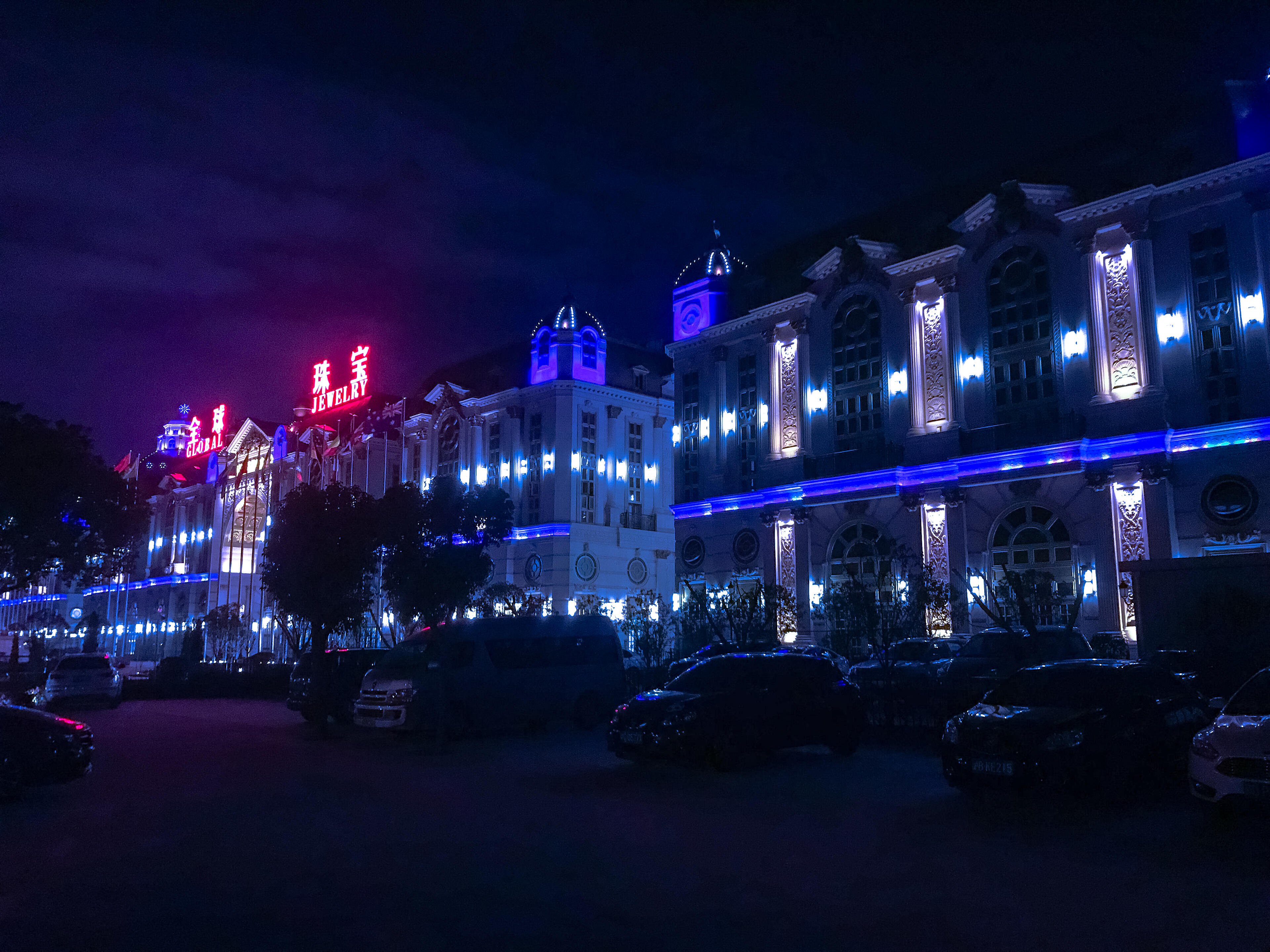

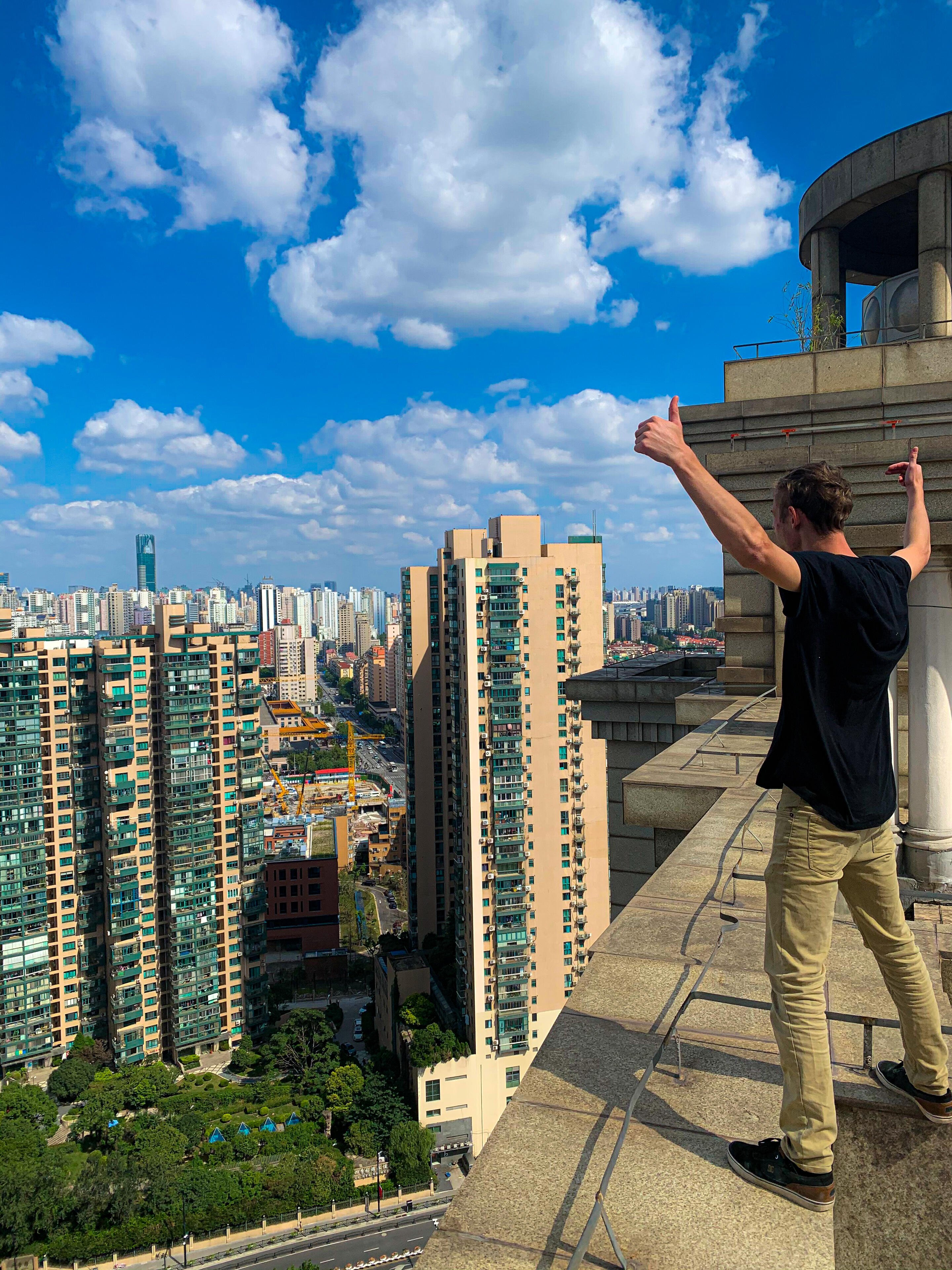

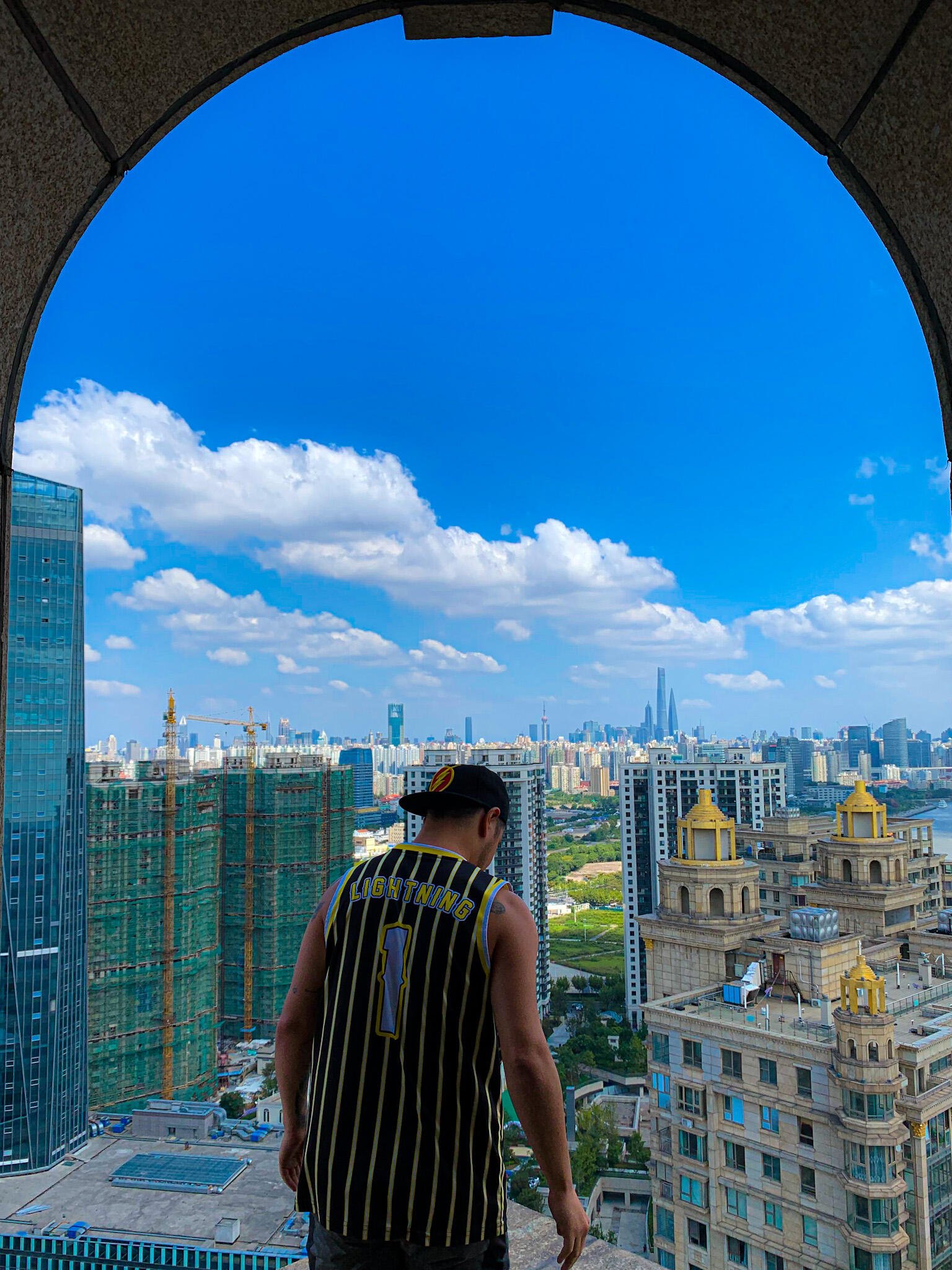





Previous Guides in the Series:
An Expats Guide to the Best Spots in Shanghai: 001
An Expats Guide to the Best Spots in Shanghai: 002
Find Me Elsewhere:
All images taken by Hes. Published 01/02/2025
-
 @ 714f9dc3:76659adb
2025-01-02 20:47:45
@ 714f9dc3:76659adb
2025-01-02 20:47:45Last week, I was reading “The Air We Breathe”, by Glen Scrivener. It’s about “How We All Came to Believe in Freedom, Kindness, Progress, and Equality”, and it explores the Christian roots of the values we prize in today's western society. It’s all around us, but we don’t really know where it came from: It’s the air we’re breathing. The ideas and ethics behind Christianity, whether you believe in them or not, are embedded in our culture.
As I was reading this, I saw so many parallels with Bitcoin, so wanted to list them below and share some of my thoughts. Can Bitcoin also become “The Air We Breathe”? Or in plebs words: hyperbitcoinization? Can Bitcoin become so ubiquitous that it becomes normal? Can there be a world in which we don’t even know where Bitcoin came from? It would be a world with many similar views as with today's view on Christianity. It becomes the air we breathe, something that used to be a counterculture that over time became ubiquitous. What can we learn from it?
These are my ten parallels of Bitcoin with the early days of Christianity. 1. Separation from state 2. From obscure counterculture to dominant force 3. Exponential grassroots growth 4. Conversion of emperors/politicians 5. Sudden tolerance and protection for ideology 6. Fall of the empire, end of the status quo 7. Missionaries spreading the word 8. Persuasion and education are key 9. Age of Enlightenment
Note: I’m no expert on Christianity, nor a historian of the Roman Empire, and I know just a bit about Bitcoin. See this as a thought experiment.
1. Separation from state In all fairness, I’m not the first to draw this first parallel. It was Satoshi Nakamoto themself who made the connection even before Bitcoin was available to the public, with several hints pointing back to important dates and moments in Christian history. The big parallel here is the “separation of money and state” and “separation of church and state”.
Before going back to the early days of Christianity in the first centuries AD, I first want to draw this parallel with Satoshi.
It’s 1517. The German Priest Maarten Luther writes his Ninety-five Theses, and nails this on the church doors in Wittenberg. The theses are also known as the “Disputation on the Power and Efficacy of Indulgences”. He kickstarted a movement with a radical new idea for that time: The separation of the church from the state.
The Catholic Church had become one with the state. Via the means of indulgences, there was an ability to pay for your redemption. The church was corrupted by money, power and politics. The church and indulgences replaced the need for personal responsibility and an individual faith with money and perverse structures.
Reformation Day is a Protestant Christian religious holiday celebrated on 31 October in remembrance of the onset of the Reformation. But the 31st of October is also the day in which Satoshi shared his pamphlet with the world: in 2008 they published the Bitcoin Whitepaper. It kickstarted a movement with a radical new idea for that time: The separation of the money from the state.
But this was not Satoshi’s only hint. Another one is the date of Bitcoin’s Genesis Block: January 3, 2009. It was the day that the idea of the separation of money and the state became reality, more than just an idea in an individual's mind.
Did you know that Maarten Luther was excommunicated from the Catholic Church in 1521 by Pope Leo X for sparking this revolutionary new way of thinking (and being). It happened on January 3 as well. I bet Satoshi Nakamoto knew.
To be fair, this parallel is not new and known by many bitcoiners. But it’s a good introduction to the topic, and after reading “The Air We Breathe: How We All Came to Believe in Freedom, Kindness, Progress, and Equality”, I automatically started to see more parallels between (the early days of) Christianity and todays adoption of Bitcoin. Because it was of course not Maarten Luther who sparked these rebellious thoughts in 1500, but it was Jesus himself approx. 2000 years ago.
Let’s go back from the 1500s to the first decades AD to the beginning of this radical new belief system. During the dominance of the Roman empire in the Mediterranean and much of Europe, Western Asia and North Africa, someone told a story that opposed every mainstream paradigm.
Jesus’ idea was radically different from the belief systems of that day. He preached Freedom, Kindness, Progress, and Equality in a world that was full of Debauchery and Violence, with Gladiator Games, Slavery, Public Crucifixion, and Brutalities. The belief system of that time was not like todays. There were superior races (Greek/Romans over barbarians), superior sexes (man over women), superior classes (free man over slaves) and the concept of justice was more something in the realm of “restoring rights of those that were superior”, than “equality for all, men and women, Greek and barbarian, free and slave”.
Jesus opposed the status quo. It started small and irrelevant; as a counterculture. But it didn’t stay that way.
2. From obscure counterculture to dominant force In “The Air We Breathe”, Scrivener asks the question: “How did the obscure, marginal Jesus movement of the 1st century become the dominant religious force in the Western world in a few centuries?”
Important to know, is that the Christian faith was the opposite of the narrative. Concepts like Freedom, Kindness, Progress, and Equality didn’t exist in the Roman Empire. Human rights neither. Individual rights neither. The emperor was almost de facto God himself.
Early Christians were persecuted for preaching a different story: that God is NOT the ruler of the empire. Jesus preached the separation of politics from God; separating faith from the state. As a result, he was crucified, and many of his followers were killed by Nero (between 54 and 68 AD), Domitian (81–96 AD), Trajan (98–117 AD) and Decius (249–251 AD). This new narrative was a thread for the Roman rulers.
Draw the parallels of how there have been many attempts to “kill” bitcoin, not with physical persecution but with an information war. Not by physical violence, but by misinformation. Bitcoin threatens the status quo, just like Christianity threatened the Roman Empire.
You see?
But how is the obscure movement of Bitcoin in the 20th century becoming the dominant force, similar to the question that Scrivener asked about Christianity? Perhaps the answer lies in the following parallel.
3. Exponential grassroots growth Sociologist Rodney Stark estimates in “The Rise of Christianity” that from the time of the first Easter, the church began growing at a rate of 40% per decade, a modest but relentless 3.4% per year. By the year 300, Christians numbered perhaps 6 million: about a tenth of the empire.
Despite pushbacks, the army of believers continued to grow. Grassroots, peer-to-peer. It was not the state-religion, it was a peaceful army of believers that spread the word, resulting in an exponential growth of its followers. The counterculture became more and more dominant.
You may see what I’m doing here. It was basically the meme that all Bitcoiners know: Gradually, then suddenly. Against the current.
4. Conversion of emperors/politicians In 312 a big change happened: Emperor Constantine converted to Christianity. As Stark writes, "Constantine's conversion would better be seen as a response to the massive exponential wave in progress, not as its cause".
Are we living in that same era, where nation states start to embrace Bitcoin? Where politicians don’t oppose as strongly anymore, but are flirting with the idea of embracing it? And again the parallel: it’s responsive to the exponential wave of progress, not as its cause.
Whether Constantine is Nayib Bukele, Donald Trump, or Milei: it doesn’t matter. It’s the dynamic that matters. The counterculture becomes so dominant, that the “rulers” of the world are wanting to be part of it. Which will be followed by “rules” that favour the ideology, movement, and beliefs.
5. Tolerance and protection for ideology In 313 Constatines Edict of Milan granted freedom to Christians that were remarkable for that time and a model for religious toleration for the coming centuries.
The tide was turning, and by 380 Emperor Theodosius made Christianity Rome's official religion, more than half the population had already converted. In a few short centuries Christianity had gone from radical counterculture to dominant cultural power. This was an extraordinary shift in the church's relationship with the world. The edict expressly grants religious liberty to Christians, who had been the object of special persecution, but also goes even further and grants liberty to all other religions. And then, in 410, the world itself changed.
It changed from grassroots, bottom-up adoption to some kind of nation state adoption. One that was driven by decrees and edicts, instead of the analog cyberhornets of that day. Actually, the ideas of Indulgences were introduced via these Edicts, something that Maarten Luther actually was fighting against in the 1500s.
The world changed from the state-less Christian belief and moved (back) towards a system in which the state and church were connected again. Yes — the Roman Catholic Church. Until the previously mentioned critics during the Reformation.
6. Fall of the empire, end of the status quo When people speak of the fall of the Roman Empire, they usually mean in the 5th century when the western half fell. But there was also an eastern half, known as the Byzantine Empire (with its capital in what is modern-day Istanbul).
How did this relate to the movement that once was Cult, and now suddenly had become Culture?
It was Augustine, the north African bishop (354-430), who laid the foundation for a new philosophical, theological, and legal system. He distinguished between the fragile earthly realm and the eternal heavenly kingdom. Rome was “a city of man”, which fell. But the “city of God” was forever. He continued to separate the Roman Catholic Church from the faith that it once was. This distinction was vital, and it gave rise to the concept of "the secular realm". He planted the first ideas of "the separation of church and state" again, which started to spread throughout Europe during the supposedly "sandy desert" of the Middle Ages.
The parallel and lesson here might be that narratives can be taken over, for the worse. And that it takes centuries to take back the narrative, but/and only after an empire has fallen. Whether we refer to “The Fourth Turning” by William Strauss and Neil Howe or “Changing World Orders” by Ray Dalio. There is something to preserve, and it needs active monitoring and pushbacks!
7. Missionary, spreading the word The way the church sought to spread its influence would become a question that would take many centuries (and many failures) to settle. In the past, empires sought to spread their influence almost always by force. Christianity has been a missionary faith from the beginning. It was for this reason that Pope Gregory the Great sent Augustine to Britain to convert the Anglo-Saxons.
Augustine was commanded by Gregory to use only "gentle means". His goal was persuasion. His method was teaching and preaching. And he was successful, converting King Aethelbert of Kent and becoming the first Archbishop of Canterbury.
You see what I’m talking about again: the parallel is simple. Bitcoin is a similar peaceful revolution, a missionary movement, of those that wish to see their Cult turn into a Culture. “Genle means”, teachings, persuasions. Or in pleb terminology: Orangepilling.
8. Persuasion and education are key Over the next decades and centuries, this movement continued. English Benedictine monk (675-754) Boniface was sent from the previously “barbarian” Britain to “orangepill the East” – in this case the Saxons in the Germanic lands. In the words of his advisor, the Bishop of Winchester, his goal was "to convince them by many documents and arguments". This mission of persuasion and education was largely successful. Today he’s better known as “the Apostle to the Germans". He was killed in The Netherlands (Dokkum).
Boniface kept to a policy of non-violence and non-retaliation, even to the point of death. Another famous writer about this topic, Tom Holland, summarises the lesson we learn from Boniface: "to convert was to educate".
In the following century this lesson was sorely needed by the Frankish king Charles the Great, aka Charlemagne (742-814). Charlemagne's path to power was a brutal one. When the Saxons stood in his way, Charlemagne beheaded 4,500 of them in a single day. There are concrete reasons why "getting medieval" might be associated today with brutality.
Is “Bitcoin as Legal Tender”, whether this is peaceful or violently, the way to go? Are we “getting medieval” with these kind of measures, in order to go from Cult to Culture, from counterculture to dominant culture, in which we lose the true essence of our revolution of separation of the state from the matter?
9. Age of Enlightenment Alcuin of York (735-804), was bold enough to write to Charlemagne directly with his criticism. "A person can be drawn into the faith, not forced into it". Be a lighthouse, not a tugboat!
The church's official teaching would later agree with Alcuin's position. In the 12th century all "harsh means" were forbidden since faith arises from the will, not compulsion. Enlightenment comes through education and persuasion.
There’s work to do. Grassroots. Education. Peer-to-peer. Not directed by politicians, nor opposed by those in power. Through education and persuasion. Rules without rulers. Because eventually, with the Crusades and the Spanish Inquisition, there are stark examples of the church using “harsh means" again. Forcing Bitcoin on people will never be the way: it’s a cheat code to the end goal. In order to succeed, we’ll need to be a missionary.
Final words I don’t want in any way to compare Christianity in itself as a faith, and Bitcoin as a technology, with each other. I enjoyed exploring the sociological phenomena between two countercultures, the grassroots movement and missionary parallels between both of them. Satoshi gave the first assist, with the 31st of October (Whitepaper Day) and the Genesis Block on January 3rd.
Let’s not mix religion with monetary systems, even though there are many similarities between certain movements. That’s not my goal for sharing this brain dump. But let’s learn from the past, from Constatine’s Edict and from Augustine, from Charlemagne (and especially Alcuin of York), from Boniface and from Maarten Luther. And from Satoshi Nakamoto.
-
 @ bd32f268:22b33966
2025-01-02 19:30:46
@ bd32f268:22b33966
2025-01-02 19:30:46Texto publicado por Foundation Father @FoundationDads e traduzido para português.
Assumir responsabilidades numa época efeminada como a nossa é um superpoder.
Algumas pessoas não sabem o que significa "assumir responsabilidades", no entanto, porque nunca tiveram um pai ou outra pessoa que as ama-se o suficiente para lhes ensinar.
Então, aqui está como assumir responsabilidades.
Lembra-te que não és uma pessoa desamparada e incompetente.
As coisas não te acontecem simplesmente enquanto olhas fixamente com a boca aberta, usando todo o teu poder cerebral para te lembrares de como respirar.
Tu tens poder de ação.
Mantém estas perguntas em mente:
"Que papel desempenhei eu nesta situação ou como ajudei a formar o sistema em que estou inserido?"
"O que posso fazer agora mesmo para começar a corrigi-lo, por mais pequeno que seja?"
Aqui estão alguns exemplos de como aplicar estas perguntas.
 José Malhoa - Remédio
José Malhoa - RemédioSaúde
Estás com excesso de peso e cansado o tempo todo? Deprimido?
Começa a caminhar 30 minutos por dia. De preferência ao ar livre.
Pára de comer snacks.
Marca uma consulta com um médico para fazer análises ao sangue.
Todas estas coisas estão ao teu alcance.
Finanças
Estás a afogar-te em dívidas de cartão de crédito? Assumir responsabilidades significa reduzir drasticamente o teu consumo e iniciar um programa radical de pagamento do máximo de dívida que conseguires.
Obtém uma aplicação de orçamento e começa a planear.
Sentes-te preso no teu emprego sem futuro? Sentes que não ganhas o suficiente? Vai a entrevistas para vagas de emprego e descobre o teu verdadeiro valor no mercado.
Reserva 1 hora todas as noites para melhorares. A menos que já estejas a trabalhar em dois empregos, toda a gente tem pelo menos 1 hora todas as noites.
Arredores imediatos
Se vês algo que precisa de ser feito, simplesmente faz. Não te queixes disso. Não resmungues baixinho. Não desejes que alguém tratasse disso. Simplesmente faz e não peças permissão.
Guarda o carrinho de compras. Lava a caneca de café no lava-loiça. Arranca as ervas daninhas. Repara a parede. Se o quintal do teu vizinho estiver cheio de ervas, vai lá e corta a relva tu mesmo. Limpa a água do lava-loiça. Arruma a bancada. Leva o lixo para fora. Leva bom café para o escritório.
Os teus filhos
Muitos pais queixam-se do comportamento dos seus filhos como se não tivessem qualquer influência sobre o assunto. Mas os teus filhos farão o que tu os ensinaste a fazer.
"Fizemos o melhor que pudemos."
Não, não fizeram, e assumir responsabilidades significa admitir que foste permissivo e preguiçoso ou que querias sentir-te justo por não bater.
Que pequena coisa podes fazer agora mesmo para começar? Escolhe um único comportamento que queres que eles parem, senta-os e explica as consequências do comportamento. Pede desculpa por teres deixado andar durante tanto tempo.
Quando eles apresentarem o comportamento, aplica as consequências. Aconteça o que acontecer.
Os teus relacionamentos
Não tens amigos ou o teu grupo de amigos atual é uma má influência? Podes fazer novos amigos. Assumir responsabilidades significa admitir que a tua solidão é em grande parte auto-infligida.
O que podes fazer?
Começa a jogar ténis ou futebol. Existem ligas em todo o lado. Encontra uma boa igreja local e encontra maneiras de te envolver. Existem encontros para todo o tipo de atividade. Participa num que se alinhe com as tuas preferências. Quando estiveres em público, sorri mais e puxa conversa.
Depois de conheceres algumas pessoas, estabelece uma cadência regular. Agenda almoços semanais ou mensais e alterna entre algumas pessoas. Ou talvez café de manhã.
Não acontecerá da noite para o dia, mas dando pequenos passos consistentemente durante alguns meses e vais perceber que tens uma vida social.
Os teus erros
Se erraste, não te retires e escondas nem arranjes desculpas. Pede desculpa à pessoa que prejudicaste, diz-lhe porquê e oferece-te para compensar. Aceita as consequências com humildade.
Vais descobrir que nada te conquista mais respeito do que assumir os teus erros. Esta é a principal. Se aprenderes a fazer isto bem, cobrirá uma infinidade de pecados porque cria hábito. Mesmo que tenhas apenas 1% de culpa na situação, assumir a responsabilidade e pedir desculpa pelo teu 1% está a construir um certo grupo de músculos.
"Mas ele devia ter..." Pára com isso. Confiaste demasiado? Presumiste demasiado sem comunicar? Assume a responsabilidade por isso.
Estes exemplos podiam continuar para sempre, então vou parar e terminar com este princípio:
A tua resposta importa mais do que as tuas circunstâncias.
Existem vítimas reais, algumas de tragédias horríveis. Mas mesmo que não te tenhas atirado para areias movediças, ainda podes assumir a responsabilidade por como reages e pelo que escolhes fazer a seguir.
Às vezes, é agarrar numa corda de um transeunte e dizer: "Obrigado."
Não te afogues nas areias movediças até que alguém te dê uma palmadinha nas costas por quão difícil é para ti, e não continues a apontar para o teu tempo nas areias movediças para desculpares os teus fracassos.
Podes não ter escolhido uma batalha específica. Ainda podes assumir a responsabilidade por quão bem lutas a batalha. Num certo sentido, ninguém escolhe a principal batalha que enfrenta. Ninguém escolheu nascer. Ninguém escolheu a sua família. Ninguém escolheu as suas circunstâncias.
O mundo nunca será perfeito. Tens de assumir a responsabilidade pela tua parte dele de qualquer maneira. Pode ser difícil. Pode ser doloroso. Não te foi prometida uma vida fácil e sem dor.
Depois de começares a assumir responsabilidades, qual é o próximo passo?
Altura de assumir mais responsabilidades.
Por exemplo, se não tens problemas em fazer amigos e tens essa parte da tua vida resolvida, assume a responsabilidade por outra pessoa. Encontra um dos rapazes solitários na tua igreja que precisa de um amigo e adiciona-o à tua rotação de almoços.
A recompensa por assumir responsabilidades é subir de nível e, como consequência, as coisas devem tornar-se mais desafiantes.
Mas agora estás mais bem preparado para isso. Repete até morrer e, esperançosamente, a tua causa de morte será por viver e não por te queixares de não viver.
-
 @ 490b551d:e17f0103
2025-01-02 18:29:07
@ 490b551d:e17f0103
2025-01-02 18:29:07I decided to do a bible study on Romans to get myself back into the Word. Shew. That's a tough place to start for someone who is still working on letting God back in. Right out the gate in Chapter One, there’s a part of it that just doesn’t sit well with me. The more I read, the more I feel like I’m trying to catch my breath, trying to wrap my head around the words Paul wrote. I can't shake the discomfort. I was transported right back into my denial, because I REALLY struggle with the idea of a judgemental God who is supposed to be all-loving.
My Struggle with God's Wrath
Paul writes in Romans 1:18-23 (NLT):
"But God shows his anger from heaven against all sinful, wicked people who suppress the truth by their wickedness. They know the truth about God because he has made it obvious to them. For ever since the world was created, people have seen the earth and sky. Through everything God made, they can clearly see his invisible qualities—his eternal power and divine nature. So they have no excuse for not knowing God. Yes, they knew God, but they wouldn’t worship him as God or even give him thanks. And they began to think up foolish ideas of what God was like. As a result, their minds became dark and confused. Claiming to be wise, they instead became utter fools. And instead of worshiping the glorious, ever-living God, they worshiped idols made to look like mere people and birds and animals and reptiles."
The idea that we should just know that God exists stopped me in my tracks. Paul essentially says that all the beauty around us - nature, the stars, the intricacy of life - should be enough to prove God’s existence to us. That’s heavy. It feels like it puts a burden on our hearts, like we should automatically see all this beauty and immediately recognize God behind it. Even the people who have never been exposed to God, heard of him, have any idea of the Christian version of deity. So what about those people who don’t? What about the times when we miss the beauty or don’t see it the way others do?
And the part I struggle with the most: when people don’t “get it” and worship something other than God, whether that’s idols or nature itself, God is angry. Angry that they looked at creation and created something to worship, but it wasn’t Him. And for the longest time, I couldn’t understand why that was such a big deal. Isn’t it understandable? If you see something beautiful, something life-giving, it’s almost instinctual to try to honor it, right? How could God be mad at people for trying to connect to something bigger than themselves, something so beautiful as nature, especially when they didn’t even have all the information?They're doing the best they can with what they know.
Reading the passage really set me back, because, on the surface, it feels so harsh. So unloving. It feels judgmental. It feels like everything I ran away from ten years ago. And it makes me angry. Angry because it feels unfair that God would be upset at people for trying to reach out with the only tools they had, which were their limited human understanding and the beauty they saw in the world.
The “Invisible God” and the Trap of Human Effort
What really gets me is that the text says God is “invisible." That He can’t be seen or fully known through creation alone. And then, instead of understanding people trying to make sense of that mystery, God gets mad. They looked at the trees, the sky, the mountains, and the oceans, and they gave them credit. They worshiped them, as if nature itself was a god. And, yes, we all know it’s not the right thing to do. But how is that any different than what I’ve seen in my own life where I make mistakes out of ignorance? Does that mean I'm unforgivable?
I think about all the times I’ve felt so lost, searching for meaning, searching for God, trying to figure out what all this beauty around me means. I know deep down that I want to connect with something bigger than me. I want to know unconditional love. If I’m being honest, the natural world has often been the closest I’ve come to feeling connected to God. The mountains, the ocean, a sunset: they all make me feel something deeper, like I’m part of something huge. Something sacred.
But then that verse feels like it’s saying that, instead of leading us to God, the beauty of creation is like a trap. We look at it, we marvel at it, but we miss the point if we don’t see God directly in it. And that confuses me. How can I see beauty and not want to give it honor? How can I feel something so deeply connected to the world around me and still not know God in that moment?
Why Does God Seem So Mad?
This is where the struggle really hits for me. When I read about God’s anger, I feel like it’s more than just disappointment. It's like He’s frustrated that we can’t see through creation and understand Him clearly. And honestly, it feels like I’m being blamed for something I didn’t even know was wrong.
It’s like trying to paint a picture without all the right colors and being told it’s wrong, but never having been given the full palette in the first place. I see people looking at the world, trying to make sense of it, and I can’t help but feel for them. I think, I would’ve done the same thing. If I were in their shoes, how could I have known any better?
After wrestling around this (and an SOS call to my mentor), I came to this conclusion: maybe this is why Jesus had to come. Because we couldn’t see God clearly through the world around us. We couldn’t figure it out on our own. So, God sent Himself, in the form of Jesus, to make it clear. Maybe it’s not that God is mad at us for trying to worship creation. Maybe it’s that we’re worshiping the wrong thing because we don’t fully understand that He’s been there all along, wanting to reveal Himself.
Is God’s Wrath Really About Justice or Separation?
When I sit with this discomfort, I have to remember that God’s wrath in the Bible isn’t about vindictiveness or punishment in the way we often think about it. I’ve come to realize that it’s more about separation. A separation from Him, the source of life, when we choose to worship anything else. It’s not about anger in the way temper-tantrum way I'm picturing, but more about a painful reality of what happens when we go down the wrong path.
We’re choosing to look for answers everywhere except for where they really are. God’s heart is breaking because He knows the only way to true peace and understanding is through Him, but we keep missing it. We’re trying to get back to Him in the best way we know how, but we’re stumbling along the wrong path.
Maybe that’s why that passage feels so heavy. It’s not because God wants to shut us out. It’s because He loves us too much to let us stay lost in our search for meaning. Maybe His anger is a form of sorrow, a sorrow over our inability to see the full picture.
Reaching for God, Even When We Can’t See Him
I think the struggle I feel with this passage is a struggle a lot of people face: how to reconcile that spiritual feeling we get buy maybe don't attribute it to God with the judgment of God, and how to believe that God really loves us when we don’t always know how to connect with Him.
But I’m beginning to see that the beauty of creation is a way that God calls us to Himself, even if it doesn’t feel that way at first. When we worship the world, it’s not that we’re doing something inherently wrong. It’s that we’re just missing the point. God’s anger isn’t His rejection of us. It’s an invitation to look deeper, to see beyond the surface and find the love and the truth that’s been there all along.
I don’t have it all figured out. I still wrestle with passages like these, and I doubt I’ll ever truly “get” God. But I’m learning that God’s love isn’t about always understanding everything perfectly. It’s about trusting that He’s bigger than our confusion, bigger than our doubts, and bigger than our struggle to connect.
Maybe the key isn’t to have all the answers. Maybe it’s to keep seeking, even when we feel like we’re in the dark.
-
 @ a4a6b584:1e05b95b
2025-01-02 18:13:31
@ a4a6b584:1e05b95b
2025-01-02 18:13:31The Four-Layer Framework
Layer 1: Zoom Out

Start by looking at the big picture. What’s the subject about, and why does it matter? Focus on the overarching ideas and how they fit together. Think of this as the 30,000-foot view—it’s about understanding the "why" and "how" before diving into the "what."
Example: If you’re learning programming, start by understanding that it’s about giving logical instructions to computers to solve problems.
- Tip: Keep it simple. Summarize the subject in one or two sentences and avoid getting bogged down in specifics at this stage.
Once you have the big picture in mind, it’s time to start breaking it down.
Layer 2: Categorize and Connect

Now it’s time to break the subject into categories—like creating branches on a tree. This helps your brain organize information logically and see connections between ideas.
Example: Studying biology? Group concepts into categories like cells, genetics, and ecosystems.
- Tip: Use headings or labels to group similar ideas. Jot these down in a list or simple diagram to keep track.
With your categories in place, you’re ready to dive into the details that bring them to life.
Layer 3: Master the Details

Once you’ve mapped out the main categories, you’re ready to dive deeper. This is where you learn the nuts and bolts—like formulas, specific techniques, or key terminology. These details make the subject practical and actionable.
Example: In programming, this might mean learning the syntax for loops, conditionals, or functions in your chosen language.
- Tip: Focus on details that clarify the categories from Layer 2. Skip anything that doesn’t add to your understanding.
Now that you’ve mastered the essentials, you can expand your knowledge to include extra material.
Layer 4: Expand Your Horizons

Finally, move on to the extra material—less critical facts, trivia, or edge cases. While these aren’t essential to mastering the subject, they can be useful in specialized discussions or exams.
Example: Learn about rare programming quirks or historical trivia about a language’s development.
- Tip: Spend minimal time here unless it’s necessary for your goals. It’s okay to skim if you’re short on time.
Pro Tips for Better Learning
1. Use Active Recall and Spaced Repetition
Test yourself without looking at notes. Review what you’ve learned at increasing intervals—like after a day, a week, and a month. This strengthens memory by forcing your brain to actively retrieve information.
2. Map It Out
Create visual aids like diagrams or concept maps to clarify relationships between ideas. These are particularly helpful for organizing categories in Layer 2.
3. Teach What You Learn
Explain the subject to someone else as if they’re hearing it for the first time. Teaching exposes any gaps in your understanding and helps reinforce the material.
4. Engage with LLMs and Discuss Concepts
Take advantage of tools like ChatGPT or similar large language models to explore your topic in greater depth. Use these tools to:
- Ask specific questions to clarify confusing points.
- Engage in discussions to simulate real-world applications of the subject.
- Generate examples or analogies that deepen your understanding.Tip: Use LLMs as a study partner, but don’t rely solely on them. Combine these insights with your own critical thinking to develop a well-rounded perspective.
Get Started
Ready to try the Four-Layer Method? Take 15 minutes today to map out the big picture of a topic you’re curious about—what’s it all about, and why does it matter? By building your understanding step by step, you’ll master the subject with less stress and more confidence.
-
 @ be7bf5de:09420d0a
2025-01-02 17:54:35
@ be7bf5de:09420d0a
2025-01-02 17:54:35The SALUD Decentralized Health App Development Challenge is an exciting initiative aimed at revolutionizing healthcare through the use of decentralized technologies. Running from January to May, this challenge will bring together developers, designers, healthcare providers, and health conscious individuals interested in decentralizing healthcare. Participants will create open-source tools leveraging Nostr, Bitcoin, and the SALUD protocol aiming to improve healthcare access, enhance data portability, and ultimately improve health outcomes for individuals worldwide.
Challenge Mission
At its core, the mission of this challenge is to bootstrap an ecosystem of interoperable tools that allow individuals to take full control of their health data. By building apps on the Nostr protocol and integrating bitcoin, the challenge hopes to address key issues in traditional healthcare, including access to services, privacy, and fragmented health data systems. All participating apps will be required to be compatible with the SALUD protocol, or Sistema de Administración de Libertad Único y Decentralizado, which is an open-source framework for utilizing health data over Nostr.
Challenge Structure
The challenge is structured to span five months, from January through May. Throughout this period, participants will meet weekly to discuss their progress, share insights, and collaborate with others. These sessions will be instrumental in connecting developers, designers, and healthcare professionals, fostering a community focused on building the future of decentralized healthcare.
The challenge will include weekly office hours for participants, held every Thursday at 11 AM Eastern Time (4 PM UTC), starting on January 16th. These open office hours will provide opportunities to connect with doctors, developers, entrepreneurs, and health-minded bitcoiners to ensure that the apps being developed address real-world healthcare needs.
Evaluation Criteria
All submissions to the challenge will be evaluated based on four key metrics:
- App Production Readiness: Is the app functional and polished enough for real-world use?
- Solution Depth and Creativity: How innovative and impactful is the solution in addressing healthcare challenges?
- Interoperability: How well does the app integrate with the SALUD protocol and other healthcare tools, ensuring it can work seamlessly within the decentralized ecosystem?
- Overall Contribution to the Ecosystem: Does the app contribute to the broader vision of decentralized healthcare and enhance individual control over health data?
Prize Pool
The challenge features a prize pool starting at 10 million satoshis (0.1 BTC). Winning participants will not only receive financial rewards but also have the opportunity to collaborate with NosFabrica, a leading force in decentralized technology development, and Illuminodes, piloting the SALUD protocol in El Salvador. This container provides an exciting pathway for long-term collaboration and innovation in the global and decentralized health space.
Who Should Participate?
This challenge is open to a wide range of participants, each contributing unique expertise and perspectives:
- Developers and Designers: Those skilled in app development, UX/UI design, bitcoin and the Lightning Network.
- Healthcare Providers (Doctors/Nurses/Alternative Health): Professionals who can offer insights into real-world healthcare needs and help design solutions that truly benefit patients.
- Health-Conscious Individuals: People passionate about taking control of their own health data and empowering others to do the same.
- Bitcoiners and Nostriches: Enthusiasts of Bitcoin and Nostr who are excited to apply these censorship resistant technologies to solve pressing issues in healthcare.
- Investors: Individuals or firms interested in supporting innovative projects and startups that have the potential to shape future of healthcare.
How to Participate
To get involved in the challenge and receive important updates and event invitations, participants can sign up through either of the provided forms:
The main categories we'll encourage individuals to develop solutions for are personal health apps, healthcare provider tooling, and SALUD protocol infrastructure. So far, the SALUD protocol includes NIP-82, a way to store FHIR healthcare records on Nostr, developed by NosFabrica co-founder, Vitor Pamplona. We see more Nostr improvement proposals being made as healthcare data use cases develop.
Conclusion
The SALUD Decentralized Health App Development Challenge is a groundbreaking opportunity for anyone passionate about using Nostr and Bitcoin to reshape the healthcare landscape. By building apps that empower individuals to control their own health data, participants will play a pivotal role in addressing some of the most pressing challenges in modern healthcare, from data privacy to accessibility and portability. We're xcited about this challenge and to continue building the future of decentralized healthcare!
Happy new year!
PS. Feel free to reach out with any questions to jon@nosfabrica.com or go to https://nosfabrica.com/challenge/ to learn more.
-
 @ bcea2b98:7ccef3c9
2025-01-02 17:47:27
@ bcea2b98:7ccef3c9
2025-01-02 17:47:27originally posted at https://stacker.news/items/833889
-
 @ 101b30ee:18a46a45
2025-01-02 17:28:15
@ 101b30ee:18a46a45
2025-01-02 17:28:15
ハンドシェイク
- HTTPリクエスト解析
- [ ] HTTPリクエストラインのパーサー関数作成
- [x] HTTPヘッダーのパーサー関数作成
- [ ] HTTPリクエストボディのパーサー関数作成
- [ ] WebSocket関連ヘッダーの検証
- [ ]
Upgrade: websocket - [ ]
Connection: Upgrade - [ ]
Sec-WebSocket-Keyの取得と検証 - [ ]
Sec-WebSocket-Version: 13の検証
- [ ]
- HTTPレスポンス作成
- [ ]
Sec-WebSocket-Acceptの生成- [x]
Sec-WebSocket-KeyにSHA-1適用(外部依存) - [ ]
Sec-WebSocket-KeyにSHA-1適用(非依存) - [x]
Sec-WebSocket-KeyにBase64エンコードを適用
- [x]
- [x] HTTP 101 Switching Protocolsレスポンスの構築と送信
データ転送
WebSocketフレームの処理
- フレーム解析
- [x]
finビットの取り出しと解釈 - [x]
rsv1,rsv2,rsv3の取り出しと検証 - [ ]
opcodeの取り出しと処理- [ ] 0x0: 継続フレーム
- [ ] 0x1: テキストフレーム
- [ ] 0x2: バイナリフレーム
- [ ] 0x8: 接続終了
- [ ] 0x9: Ping
- [ ] 0xA: Pong
- [x]
maskフラグの取得と検証 - [x]
payload_lenの取り出しと解析 - [x] 拡張されたペイロード長(
extended payload len)の取り出し - [x]
masking keyの取得とデコード - [x]
payloadデータの取り出し - [ ]
finに基づく分割パケット対応 - デコード
- [x]
masking keyを使用したペイロードデコード - opcode別処理
- [ ] テキストフレーム(0x1)のUTF-8デコードと処理
- [ ] バイナリフレーム(0x2)のデータ処理
- [ ] Ping(0x9)フレームへのPong応答
- [ ] 接続終了(0x8)の処理
- [ ] 不正なopcodeに対するエラー応答
フレーム生成
- フレーム構築
- [ ]
finフラグ設定 - [ ]
opcodeの設定 - [ ] ペイロードのマスキング処理(クライアント向けのみ)
- [ ] ペイロード長の設定(拡張ペイロード長を含む)
- [ ] フレーム全体のバイトストリーム化
接続管理
- [x] クライアント接続の確立
- [x] 2クライアント以上の接続の確立
- [ ] 接続中のクライアントのリスト管理
- [ ] 接続のタイムアウト処理
- [ ] 不正なクライアントからの接続拒否
- [ ] 接続終了時のクリーンアップ処理
- [ ] ハートビート機能(Ping/Pong)による接続維持
セキュリティ
- [ ] WebSocket Originヘッダーの検証(許可されたオリジンのみ受け入れる)
- [ ] メッセージサイズの上限設定(大規模メッセージ攻撃の防御)
- [ ] 不正なフレーム/データに対するエラーハンドリング
- [ ] SSL/TLSサポート(wssプロトコル用)
拡張機能とプロトコルアップグレード
- [ ] サブプロトコル(Sec-WebSocket-Protocol)の処理
- [ ] 拡張(Sec-WebSocket-Extensions)のサポート
- 圧縮データのデコード (例: permessage-deflate)
テストとデバッグ
- [ ] 単体テスト
- [ ] ハンドシェイクのテスト
- [ ] フレーム解析と生成のテスト
- [ ] 各opcode処理のテスト
- [ ] 負荷テスト(高負荷時の動作確認)
- [ ] プロトコルコンフォーマンステスト
- [ ] RFC 6455に準拠しているかの確認
- [ ] ロギングとデバッグツールの実装
ドキュメント
- [ ] コードベースのコメントとドキュメント化
- [ ] WebSocketサーバーの設定と使用法についてのユーザーガイド作成
タグ
RFC6455
-
 @ 5391098c:74403a0e
2025-01-02 16:50:29
@ 5391098c:74403a0e
2025-01-02 16:50:29Ensaio em Prosa sobre Fotografia Analógica
Tenho especial fascínio pela fotografia analógica. É que se trata dum processo artístico muito mais complexo que a fotografia digital, devemos entender todos os aspectos da fotografia para obter o resultado pretendido, desde aspectos mecânicos da câmera como abertura e tempo do obturador, foco, iluminação, até a sensibilidade do filme utilizado e o resultado, quando alcançado, é verdadeira obra de arte pintada, onde a tela é a película química.
Importante dizer que meu fascínio pela fotografia analógica não me impede de reconhecer a importância da fotografia digital, não fosse essa você não estaria vendo minhas obras de arte que foram digitalizadas…
Da mesma forma que meu fascínio pela máquina de escrever não me impede de ter essa e outras páginas na internet. Parte do meu livro FILOSOFIA FUNDAMENTAL foi escrito graças a inspiração da máquina de escrever, como ocorreu no capítulo sobre o que seria evolução, escrevi integralmente na minha Olivetti Studio 46, pois havia faltado luz: o que me fez refletir sobre se o computador realmente é a evolução da máquina de escrever.
Outro exemplo foi a inspiração que as lindas formas arredondas de minha máquina de escrever da marca Érika me proporcionou, acabou resultando numa bela performance a qual dei nome de Paixão Erótika.
Por isso, acredito que os equipamentos analógicos não ofuscam nossa criatividade e na fotografia não poderia deixar de ser diferente.
No conjunto de fotografias analógicas abaixo utilizei uma Canon T50, objetiva de 50mm e filme Kodak Pro Image 100, a qual se encontra auto-fotografada em espelho, vamos ver:
Na foto abaixo utilizei luz amarela indireta da direita superior para esquerda inferior, o desfoque ao redor foi proposital com o objetivo de parecer estar olhando o mundo através das lentes da câmera, nesse caso ela estava olhando para sí mesmo. Mesmo estando a parede e o espelho no mesmo plano, a profundidade de campo do espelho é diferente, por isso esse efeito foi possível. Destaque especial para o “olho” do diafragma, deve ter aberto até f5.6, pois a luz não era muito forte. Se a luz fosse mais forte o diafragma teria aberto o mínimo f16 o que aumentaria a profundidade de campo impedindo o desfoque pretendido. O resultado foi alcançado, ao mesmo tempo que a câmera aparece, essa fotografia transmite essa mensagem subliminar:
https://image.nostr.build/a7cbfbe68a4bb89ae731c360c373ac8eff7599a5a100d13035eb234b5d788626.jpg
PERFORMANCE
Performance é o nome dado à mescla de mais de uma linguagem artística (arte visual, música, teatro, etc.) clicando em https://davipinheiro.com/id/performance/ você pode ver todas minhas performances. Nos exemplos abaixo a mescla se deu pela mistura de artes visuais criadas por mim e captadas pela fotografia analógica, vamos ver:
A foto abaixo se trata dum terrário que criei num tronco de árvore, arte plástica. Para fotografar utilizei luz amarela superior, o desfoque foi para destacar o objeto, especial destaque para o reflexo da luz no vidro para dar noção tridimensional de algo transparente:
https://image.nostr.build/e8026f9e99fa16631959954f8bb925af6f1764911f0a315ab0125bb413e3e89b.jpg
Na foto abaixo o mesmo processo da foto anterior, também utilizando uma Canon T50 com filme Kodak Pro Image 100 e objetiva de 50mm, diferenciando o enquadramento e a luz direta frontal:
https://image.nostr.build/4c44a0baf2b5ddaf63f83420952ab1b2e84f7df292f8e413a65f8134a2e7db58.jpg
A foto abaixo retrata o processo de criação da obra. Ironicamente, nessa foto, meu galo Cara de Palhaço mesmo desfocado no fundo se destacou, parecendo estar em pé no tronco:
https://image.nostr.build/d0d5e73ecbcdefa79ffd858d0143f41915c9deab7864d271d5ee724b3927f9bc.jpg
A foto abaixo se trata do pisca-alerta original da minha super DT200R (viva os motores 2 tempos!) que caiu depois de uma trilha kkk. A Ideia nesta fotografia era fazer o sol parecer estar acendendo o alerta que deveria aparentar estar flutuando no céu. Infelizmente não fui bem sucedido, pois os fios que penduravam o objeto acabaram aparecendo. É impressionante a capacidade de cálculo da Canon T50 e a velocidade do seu obturador, a nitidez da objetiva e a resolução do filme Kodak Pro Image 100, cujo conjunto conseguiu captar até os pequenos fios de nylon transparentes. Eu imaginei que a foto ia estourar e os fios não apareceriam, ledo engano. Pelo menos o enquadramento ficou correto: objeto um pouco mais acima do centro para dar sensação de altitude e levemente de perfil para dar noção 3d. Quem sabe com uma câmera que seja possível ajustar a velocidade do obturador eu seja bem sucedido…
https://image.nostr.build/808243d34b6dbeade25d38189163f9d58f6a12da9d00df17c85651d501e1bed8.jpg
A foto abaixo se trata da minha performance favorita com a fotografia analógica, pois fotografei o primeiro quadro que pintei, o qual dei o nome de Elipsoíris sendo ele posteriormente capa do meu livro FILOSOFIA FUNDAMENTAL, então aí temos três linguagens artísticas profundas na mesma performance: O quadro que virou livro fotografado analogicamente. A ideia desta performance foi enquadrar o quadro desfocado, o qual somente pode ser desvendado com os olhos certos, por isso a lente. Utilizei luz natural e uma lente velha de óculos. Especial destaque para os dois pontos de luz que refletiram na lente parecendo dois olhos, isso não foi planejado e deu um toque especial para a fotografia, cabendo diversas interpretações, esse é o objeto da arte em geral. Fiquei muuuito contente com o resultado:
https://image.nostr.build/6bb5b802b3ad1bb7262b925225fcfb0b8b00654fa0fec240be57f648c32245af.jpg
Já na fotografia analógica abaixo considero uma performance porque não se trata duma fotografia comum de paisagem, flores, arquitetura, animais ou pessoas, visa passar uma mensagem. Utilizando apenas a luz natural, regulei o foco da Canon T50 para as lentes dos meus próprios óculos e escolhi um dia especialmente nublado e escuro para simbolizar as dificuldades pelas quais todos passamos no dia-a-dia, quando acreditamos por algum momento que as luzes estão apagadas para nós, até que com os óculos certos podemos enxergar com maior nitidez o horizonte, os óculos podem ser a palavra de Deus ou qualquer outra coisa que te ilumine e esclareça. Com certeza essa fotografia terá um bom uso em meus próximos escritos:
https://image.nostr.build/b44b573bb39cdf5f2eb446e818bbf59d5dab9d3815ac6e917440b2f6b1ff431c.jpg
DUPLA EXPOSIÇÃO
Eis aqui um recurso nato da fotografia analógica: a dupla exposição. Se trata de fotografar mais de uma vez em cima do mesmo filme de modo que as imagens se sobreponham. Como esse método podemos simular movimento numa única fotografia, fazer montagens de disco voador kkkk, enfim a imaginação é o limite, vamos ver:
Nessa fotografia analógica abaixo ocorreu uma quádrupla exposição, pois cliquei quatro enquadramentos diferentes sob o mesmo filme. Foi especialmente difícil fazer porque a Canon T50 não tem esse recurso, então tive que enganá-la pressionando o botão de rebobinar o filme ao mesmo tempo que disparava a câmera. Como eu estava usando o filme Kodak Pro Image que possui asa 100, também regulei a máquina como se estivesse usando um filme asa 25, então sabia que podia disparar quatro vezes sem queimar o filme. Pedi para a modelo (minha Mãe, kkk) ficar em três posições diferentes dando a impressão de movimento e não satisfeito no final ainda fotografei o sol. Adorei essa foto:
https://image.nostr.build/5f8e2962e2ee94259d4dd5d3b777976a4d20ba293a5a4e68e81e30a0e1975543.jpg
FOTOS EM MACRO OU CLOSE
Acredito ser possível obter uma fotografia analógica em macro mesmo sem lente especial, tudo depende da pecinha que fica atrás da câmera: você, kkkk. Devemos tentar, se não obtivermos uma fotografia em macro, ao menos um close teremos, vamos ver:
Na foto abaixo há um minúsculo cogumelo que cresceu num barranco qualquer, apareceu nitidamente no negativo, mesmo sem uso de lupa, por isso considero um macro, na verdade é apenas uma foto divertida:
https://image.nostr.build/02aa4bbdc0cf54519b694c75237693fc2a6569fe4f3167220b05c7498757b822.jpg
Já a foto abaixo é apenas um close, o ninho é especialmente profundo, por isso o leve desfoque nos ovos: para dar noção de profundidade. O foco dos quatro cantos da caixa está bem ajustada para dar noção tridimensional do objeto:
https://image.nostr.build/24e5dcdd0e5a3560b341fe4f0d0d93b7d562f2d58054ac308a8e312c2707100c.jpg
O PRIMEIRO QUADRO DO ROLO
Na fotografia analógica cada rolo de filme nos dá pelo menos um tipo de fotografia artística bem específica. Se trata do primeiro quadro do rolo, onde ocorre uma parcial sobre-exposição. Isso se deve a incidência da luz diretamente no filme quando estamos carregando a máquina com o filme. A maioria das máquinas analógicas somente começa a contar os fotogramas após alguns disparos para evitar isso. Cabe ao fotógrafo saber aproveitar os fotogramas existentes antes do número 1, enquadrando a cena normalmente e disparando antes do número 1. Os resultados são quase imprevisíveis e geralmente interessantes.
Abaixo uma fotografia analógica fantástica porque quase sempre a sobre-exposição do primeiro quadro do rolo ocorre nas extremidades da foto e nessa aí ocorreu no meio. Para conseguir esse efeito carreguei a máquina no escuro e acendi a luz no exato momento que estava fechando a tampa da câmera. Por uma fração de segundo o primeiro quadro do rolo foi exposto parcialmente a luz, sabia que iria ter uma fotografia diferente, jamais imaginei que a sobre-exposição iria sair no meio do fotograma, muito curioso:
https://image.nostr.build/a2e08aab686af64df949e83b4ff3b0a00952698a7a138412f7753ebc0dd63d1f.jpg
Na fotografia abaixo repeti o mesmo processo anterior. Como o tempo entre acender a luz e fechar da máquina foi diferente a sobre-exposição ficou bem visível na extremidade da foto. Especial destaque para sua incidência no lado direito, quando deveria incidir no lado esquerdo, pois na Canon T50 o filme roda da esquerda para direita. Essa aparente inversão de lados se deu porque fotografei com a máquina de cabeça para baixo:
https://image.nostr.build/270681be8de71b6c833507dda6bfe4b5233c9b871aa97ea8fc2ebdcdd46a682a.jpg
FOTOS DE AÇÃO
Registrar uma ação com fotografia analógica é especialmente difícil se a máquina não calcula a abertura e tempo de exposição automaticamente, porque tudo acontece muito rápido e você não tem tempo de ficar pensando. Felizmente a Canon T50 é muito boa para esse tipo de fotografia, tive que me preocupar apenas com o foco. O que essa máquina me fez suar para fazer as duplas exposições acima, tirou de letra esse memorável momento, vamos ver:
Na foto abaixo quando avistei esse grupo de corajosos saltando de paraglider corri pedir autorização para fotografá-los e rapidamente carreguei a máquina. Comecei a fotografar mesmo antes da máquina registrar o primeiro fotograma do rolo, tendo obtido esse lindo efeito de sobre-exposição de primeiro quadro do rolo:
https://image.nostr.build/8e32e22d3bf7c897d7111e85555146e38bb139985c50b2795fe809b31880c7d8.jpg
Já a foto abaixo foi a terceira do rolo. Tomei o cuidado de enquadrar tanto a alçada de vôo do paraglider quanto essa linda Veraneio, o que descreve em uma única foto o espírito aventureiro do pessoal. Reparem no sol refletindo sobre as nuvens, que lindo tudo:
https://image.nostr.build/5bf0444e4621406d858ab70725c1ee2f6a7e39b87663e23a18085a32b9a06f6a.jpg
Na foto abaixo tive que registrar mais uma dessa linda Veraneio, sou apaixonado por motores e mecânica, ela quase roubou a cena kkkk. Especial destaque para o detalhe do carro e da câmera que a fotografou serem da mesma época, sensível retorno ao passado. Verdadeira máquina do tempo essa foto. Se eu não dissesse que esta foto foi tirada no final do ano de 2020 daria para dizer que foi uma foto tirada de uma Veraneio Zero Km da época, segredinho nosso, kkk.
https://image.nostr.build/f5284ff30986ad84d22f137e0a330067f91564907da8acf04c9eb93a991cbcf2.jpg
Na foto abaixo voltando à cena, agora do Ângulo certo kkk. Esse foi a segunda foto, perceba ainda a presença do efeito de sobre-exposição do primeiro quadro. Aqui a máquina estava marcando o primeiro fotograma, tadinha kkk
https://image.nostr.build/5c1d73f7d802fd1f730427e29f921c82e410c5dce3112a3133d6fce294d310c6.jpg
Na foto abaixo a luz estava perfeita, o sol iluminava atrás de mim, incidindo frontalmente para o enquadramento da foto, linda essa:
https://image.nostr.build/156fc878dd18257ad1f59d1b5d3fd719c7e773937356fad6ea09b0ce1f151f12.jpg
Paraglider quase em posição de vôo, a foto ficou quase perfeita porque o momento em tela era a Hora de Ouro, momento do entardecer quando a posição do sol deixa o céu dourado, fenômeno muito querido pelos fotógrafos analógicos; até pelos digitais também. Mesmo assim eu não estava satisfeito, queria fotografar mais de perto. Dei zoom correndo para frente e o resultado você vê abaixo:
https://image.nostr.build/b1f610695bd57db8abe7408df318978b6e69e85fe620a589b12fb9bcaae66156.jpg
Abaixo a fotografia analógica simplesmente perfeita, sol na posição certa, hora de ouro, perfeito enquadramento e foco, tudo certo, universo conspirando à favor… ganhei o dia sem saber. Só descobri depois que revelei. O chão não foi cortado é que o piloto do paraglider já estava no desnível do chão pronto para saltar:
https://image.nostr.build/93a7e416d11c996b65a32b019667a43124d96985109d34fd1a9b239ef365bbfe.jpg
Abaixo O salto… tive que correr para o barranco para dar zoom, outra foto perfeita na hora de ouro:
https://image.nostr.build/f254c2e71863a233816b517564dd5fb7fe85ee0bd927b02687fba43bde53dcd6.jpg
FOTOGRAFIA ANALÓGICA DE ANIMAIS
É especialmente difícil fazer um animal posar para gente, temos que ter um pouco de comida pra negociar kkk. Não fosse a Canon T50 calcular a exposição sozinha seria ainda mais difícil porque os momentos são muito rápidos e você não tem tempo para regular a abertura e tempo de exposição, tive que regular apenas o foco. Mais um ponto para essa notável máquina que me fez apanhar na dupla exposição acima. A fotografia analógica de animais também é um tipo de fotografia de ação, temos que ser rápidos no gatilho, vamos ver os resultados:
Abaixo novamente dei zoom chegando bem perto, fotógrafo de verdade não tem medo, tudo pela arte!
https://image.nostr.build/5f0af116b1fd81edb3f21dfd5d7cce6c534751ac8660bd5fb58ce08c652d8aaf.jpg
Abaixo foco no segundo plano, acabei pegando os dois de perfil:
https://image.nostr.build/fbd78fcf71749569444d3438e0d5283d321fc3f3350cacc6e4a3e9a0cdc914f5.jpg
Abaixo foco no segundo plano. Aqui peguei os dois olhando para mim e dizendo xiiiis, kkk.
https://image.nostr.build/3a1f50ee1e3c6213b337654e69ee23819ab60100c8a1a049ee0b2b66fac0d8f8.jpg
Abaixo podemos comprovar que o fotômetro da Canon T50 é matricial e não pontual, porque o centro da foto tinha muito mais luz que os cantos:
https://image.nostr.build/11a8a5a7ff14a661755f04f743d70d3dd1a9d11e412791ce42f5cbf1da1c6be2.jpg
Abaixo linda foto: Cavalo da Montanha. Eu estava esperando a Hora de Ouro chegar, pena que quando chegou o modelo não quis mais ser fotografado kkk.
https://image.nostr.build/83429975966cb4b0e71e5e089651d4585513d823fea404014b0b78b21e859302.jpg
Abaixo lindo close de perfil com fundo totalmente desfocado. Preto absoluto, a fotometria esta certinha:
https://image.nostr.build/f36aed8fa89b6ba81dd77c7d3b32c24424483e626a9634cbadb16baf91427d66.jpg
Abaixo muita coisa acontecendo ao mesmo tempo: As galinhas comendo, o milho sendo jogado, a sombra do fotógrafo… Para obter essa foto joguei o milho para o alto e tive que ser tão rápido no gatilho quanto o Kid Morengueira. Você pode perceber na minha sombra que estou segurando apenas a câmera, o pote de milho já tinha voado longe kkk. Escolhi especialmente um dia ensolarado para que o fotômetro da Canon T50 usasse toda a velocidade possível no obturador, sendo possível congelar o milho no ar sem muito efeito borrão.
https://image.nostr.build/d566e46a8a3cba8855e80295910e5addb0a8aa7735093c9f93f129cac2379472.jpg
Abaixo galinha chocando numa roda de carro. Como amo animais e carros, para montar essa cena tive que forrar uma roda velha de carro para formar um ninho e esperar, esperar e esperar… No momento certo a Jurema se sentiu confiante para entrar na roda. Nem se incomodou com minha presença pois estava de papo cheio, pois é, também tive que negociar com a galinha, isso é a fotografia analógica de animais kkk. Percebam novamente que o fotômetro da Canon T50 é matricial, pois a maior parte da foto era com pouca luz e o raio de sol que entrava estourou a foto. Percebam ainda como eu estava perto da galinha, pois foquei em sua cabeça e o resto do corpo que estava um pouco mais distante saiu desfocado. Certamente a câmera estava com abertura máxima f1.8 e com uma velocidade bem lenta, o que explica a baixa profundidade de campo. Além disso se a Jurema tivesse mexido a cabeça na hora do disparo certamente teria saído um borrão por causa da baixa velocidade. Acabou saindo tudo certo e meus dias de espera por essa foto não foram em vão.
https://image.nostr.build/d7484609c8ff9be05ee6d518def402f66484a02109dc96ef5c734b11216385bf.jpg
FOTOGRAFIA ANALÓGICA DE ARQUITETURA
Na fotografia analógica de arquitetura devemos conhecer os conceitos básicos de iluminação e preenchimento, trabalhamos apenas com luz natural e deve ser bem usada para termos a noção tridimensional da construção. Conforme ensina Fernando Bagnola, a tridimensionalidade do objeto depende da incidência da luz em três pontos diferentes e com intensidades diferentes, algo difícil de se obter apenas com a luz do sol, vamos ver:
Abaixo se trata do Museu do Olho em Curitiba/PR. Como sua parte frontal é escura e o sol se posicionava atrás da construção tive de me posicional na sua lateral, assim consegui obter um resultado tridimensional, pois o sol iluminava a parte de cima, refletia na parte de baixo em menor intensidade e na parte frontal quase não havia luz. Se eu estivesse posicionando na frente da construção o efeito tridimensional seria impossível:
https://image.nostr.build/6f74c1c7e606f7950eaf45007868b92e9a0288722b3d5e580ecaa4930700e3ea.jpg
Abaixo para minha sorte, nesse exato momento um grupo de jovens contracultura (assim como eu) passavam pelo local, tornando a foto icônica pela presença de jovens modernos contracultura contrastando com arquitetura moderna da cultura tradicional. Minha posição em relação ao sol também favoreceu o sucesso desta fotografia, tendo iluminado corretamente todos os pontos de interesse:
https://image.nostr.build/7c374205d7df21985a6a71c6c17e4f67ab29baf452f0cd406b869df94d68296c.jpg
Abaixo esse aqui é um exemplo de fotografia analógica arquitetônica errada. O enquadramento foi frontal em razão do desejo de captar o reflexo dos edifícios nos vidros negros do “olho”:
https://image.nostr.build/f9a0869a165bc7e634944c01e59085203347ab6c353610bdcaace30ee3ed8d8a.jpg
Abaixo se trata do Panteon dos Heroes na Lapa/PR um monumento erguido para guardar os corpos dos soldados das forças republicanas que pereceram durante o chamado Cerco da Lapa, batalha da Revolução Federalista de 1894. Aqui o dia estava nublado, momento perfeito para fotografar uma arquitetura tão triste como essa. Não me importei com a questão tridimensional, pois era impossível, não havia sol. Quis retratar a tristeza na foto. O filme usado foi o mesmo (Kodak Pro Image 100). Aqui percebemos que a química desse filme é ajustada para a luz amarela do sol como branco absoluto, como o céu estava nublado, a luz natural estava com temperatura mais fria o que puxou o tom mais para o azul e o roxeado da foto devem ter sido os raios ultravioleta. Se eu estivesse usando um filtro ultravioleta provavelmente a foto sairia mais acinzentada. Me recordo que nesse dia estava tudo cinza. De qualquer forma adorei esse tom arroxeado da foto. Fica a dica: conseguimos o mesmo efeito de um filme Lomochrome Purple caríssimo com um filme baratinho, basta fotografar nessas condições:
https://image.nostr.build/24f91369c12e83861f7eec38ff99f1869f08ae1eec06c798ccbe08af62263a2e.jpg
Abaixo novamente o tom arrocheado com um filme barato. Para se ter uma ideia um Lomochrome Purple costuma custar seis vezes ou mais que um que o Kodak Pro Image 100 de R$ 30,00 à R$ 40,00 na data da publicação deste artigo em 09/04/21. Percebam que no momento desta foto as nuvens deram uma trégua e alguns raios de sol passaram dando uma leve noção tridimensional da arquitetura. O certo seria eu estar um pouco mais à esquerda para aproveitar bem a iluminação. Mesmo assim, me senti feliz com a triste foto kkk pois mesmo com a luz amarela do sol refletindo o efeito Lomo-Violeta ocorreu:
https://image.nostr.build/099a1a4d7857325e59f5b35805c0ebb5c3fa55af45de2096236f1dfbadca4d4a.jpg
Abaixo parece que a foto está mal enquadrada. E está mesmo. É que no lado direito havia um poste de energia elétrica muito feio, eu não queria que aparecesse. Me preocupei apenas com a iluminação e obtive sucesso com a noção de profundidade da arquitetura. A foto está puxando para o amarelo porque a Universidade Federal do Paraná em Curitiba é meio amarela mesmo.
https://image.nostr.build/48a4d517488fc1656e027568ad314688bc0fd9995e67289003f832eb904e5260.jpg
Abaixo para finalizar o conjunto de fotografias analógicas arquitetônicas nada melhor que um cemitério, afinal todos vamos morrer um dia, devemos sempre lembrar disso para fazer nossas vidas mundanas valerem a pena. Quando morremos não levamos nada a não ser nossas experiências evolucionais, nossas graças e pecados. Devemos deixar um legado, algo positivo para quem fica. Pois bem, foi nesse contexto a foto. Para mim a morte deve ser evitada. Quando ocorrer, se fizermos tudo certo vamos para luz, as trevas são aqui na terra mesmo. Portanto, ao contrário da maioria dos fotógrafos, escolhi um dia ensolarado para fotografar ali. Quis simbolizar a luz que nos aguarda após a morte. Então me posicionei dentro do cemitério para fotografar de dentro para fora. Esperei o sol se posicionar de forma que dos portões para fora houvesse pouca luz, tal como é o mundo, deixando toda a iluminação para dentro dos portões. Percebam como pequenos detalhes fazem toda a diferença numa fotografia analógica artística. Essa foto pode perfeitamente ser usada para ilustrar qualquer material que corrobore com esse pensamento. Se eu quisesse retratar que a vida é mil maravilhas e a morte um triste fim, deveria estar do lado de fora dos portões com tudo iluminado exceto o interior do cemitério. Interessante não…
https://image.nostr.build/051592db1d3612c719621547a69bc8dfd0319d6b89656451d5b60582ae864e8e.jpg
FOTOGRAFIA ANALÓGICA DE PESSOAS
Basicamente se divide em dois tipos, a cena e o retrato. Na cena a pessoa posa para a foto sem contudo revelar sua personalidade, é uma cena criada artificialmente. Já o retrato, no conceito artístico da fotografia, ocorre quando conseguimos captar o interior da pessoa. Por exemplo: se for uma pessoa triste ela aparecerá com semblante triste, se for uma pessoa alegre com semblante alegre, não necessariamente sorrido. Se for uma pessoa sofrida suas rugas, desasseios e receios ficarão visíveis. Se for uma pessoa engraçada sentiremos vontade de rir ao ver seu retrato. O retrato é algo verdadeiro e espontâneo da pessoa. Se uma pessoa triste aparece sorrido não é um retrato e sim uma cena, vamos ver:
Abaixo normalmente na fotografia analógica de pessoas o correto é deixar o segundo plano mais escuro e o primeiro plano mais claro. Ai quis fazer diferente. Pedi para o modelo (Meu Melhor Amigo) se posicionar de costas para o sol, pois já tinha avistado aquele arco-íris no fundo. Nesse caso foi um retrato pois meu amigo apareceu sorrindo sem eu pedir e sei que ele é uma pessoa feliz e engraçada, pois vive contando piadas e seu repertório é infinito. O interessante é que esse não é um retrato comum e sim um retrato artístico, pois inverti a iluminação dos planos e ainda captei uma arco-íris, foi uma cena construida para um retrato, ideia antagônica para fotografia analógica de pessoas. Como resultado obtive uma fotografia que parece uma montagem, onde a imagem do modelo ter-se-ia sido colada sobre a paisagem, tamanha foi a diferença de iluminação entre o primeiro e segundo plano. Contudo, um pequeno raio de sol que incidiu sobre o canteiro inferior esquerdo não me deixa mentir que a fotografia é autêntica. Além disso tendo os negativos que não mentem kkk. Essa foi minha fotografia preferida de pessoas, pela qualidade do resultado artístico e pela pessoa do modelo, um abração amigo! Vou chamar essa foto de “Meu Parça na Praça”:
https://image.nostr.build/51db1df7741227dc2d86529bc9e7a93cf27365f0f2d7b591a4e84a9a05855dfb.jpg
Abaixo sou eu. Se trata apenas de uma cena simples porque minha expressão não aparece e sequer minhas roupas traduziam minha personalidade. Regulei o foco da máquina para 5 metros, entreguei-a para meu amigo e contei alguns passos para trás. Não me preocupei muito em acertar minha posição em exatos 5 metros porque o dia estava bem ensolarado e sabia qua a Canon T50 iria abrir pouco o diafragma por causa disso, o que aumentou a profundidade de campo consideravelmente. Podemos perceber no fundo a Universidade Federal do Paraná sem qualquer desfoque por causa disso. O maldito poste que tentei evitar na foto arquitetônica da UFPR acima acabou aparecendo aqui, mesmo assim gostei da foto pelo tom de cores que só a fotografia analógica nos dá.
https://image.nostr.build/ce8af555274333fa8a26375247373ca92315e87d7414bcc9ad7b5a4840cb3a21.jpg
FOTOGRAFIA ANELÓGICA DE OBJETOS
A fotografia analógica de objetos, assim como a arquitetônica, deve se obedecer os conceitos básicos de iluminação para obter noção tridimensional do objeto. Além disso, a cena montada deve combinar com o objeto para entrar em sintonia com o conceito natural de beleza, vamos ver:
Abaixo queria fotografar um objeto qualquer, então peguei essa faca. Esse objeto combina muito bem com o ambiente rústico do campo, então a finquei-a num toco de árvore com vista para o campo, tomando cuidado para ela ficar levemente torcida e dar a noção tridimensional. Naturalmente a foto ornou porque o objeto esta em sintonia com a cena. Essa deve ser a combinação da fotografia analógica de objetos, por exemplo. A não ser que o fotógrafo busque justamente causar repudia invertendo a combinação do objeto com a cena. Por exemplo: para causar nojo pode-se fotografar barro em formato de cocô num prato. Merda e comida são coisas totalmente opostas e essa inversão naturalmente é perturbadora para qualquer ser humano. Existe uma lógica natural de combinação de objetos com a cena. Enfim, podemos inclusive combinar mais de um objeto secundário para criar uma cena ao objeto principal, como veremos mais abaixo com a xícara de café:
https://image.nostr.build/6474901ce85d34aef3421ce5f720e258208c50aeb57e9893c8a750c6dc8fc1df.jpg
Na foto abaixo o objeto principal é uma caneca de café. Para criar a cena utilizei outros três objetos. O palheiro que combina com café, a tampa da objetiva da minha Canon T50 que combina com o efeito da cafeína para pensar mais rápido sobre as cenas que irei montar, e o vazo de suculenta que remete a algo mais áspero e amargo como o café e o palheiro. Se o objeto principal fosse um copo de milkshake no lugar do palheiro haveriam balas coloridas, no lugar da tampa da máquina haveria um guardanapo e no lugar da suculenta haveria um flor fofa e cor de rosa. Falando em flor vou encerrar este ensaio com o tópico sobre fotografia analógica de flores para deixar todos felizes no final:
https://image.nostr.build/8e95c6bae536cfea47e3c5d44aa63725ab8fe20eacd1c6d5eeaae1720dd0a9e5.jpg
FOTOGRAFIA ANELÓGICA DE FLORES
É um tipo de fotografia livre da fotografia analógica, sem muitas preocupações para o fotógrafo analógico, devemos atentar apenas para a vivacidade das cores e para isso o dia deve estar especialmente ensolarado. Se for fotografia interna de preferência usar luz quente (amarela), o resto é só diversão, vamos ver:
https://image.nostr.build/fc8cf663300794761b0d8dc6f1a765e3a423c65a4ad4a85a7885b00716b46533.jpg https://image.nostr.build/dc4fbe15a7b46817d66bdbeb3d0e11851999b2c1292c576fd457956436e75c77.jpg https://image.nostr.build/73fa3b1b30a088954b342294e1b0aa555a693c3ad425dea9807d2238ec529747.jpg
Viva a fotografia analógica!
Se você deseja fazer um ensaio artístico com fotografia analógia comigo entre em contato e terei o prazer de agendar o serviço.
-
 @ d9e9fb27:d5fe5e1a
2025-01-02 16:31:34
@ d9e9fb27:d5fe5e1a
2025-01-02 16:31:34Colmar is a well known city in the region of Alsace, France. Its characteristic buildings, the narrow streets and the small river flowing through are worldwide famous.

However, it is during Christmas that the city gets the most attention. Thousands of people from all over Europe decide to spend one of the Advent weekends to wander around this beautiful city and hundreds of little wooden huts.
In fact, this town becomes a small Christmas village, with decorations and lights on every building and the famous Christmas market covering every possible inch of it.



Walking around this city really makes you feel the Christmas Spirit!
Of course, it can get really cold during this time of the year. That is why Alsatians wander around drinking the Vin Chaud (literally "Hot Wine"). This beverage is prepared by mixing sugar, various spices, such as cinnamon and cloves, and red wine. They are served in a plastic glass, which can be reused multpiple time or returned for a couple of Euros. However, every year the glass is designed differently, so many people keep it with them as a collectible!
Here is 2024 version:

This is the first time I try to do a photography reportage of the places I visit. I really hope you enjoyed it!Let me know what you think, every feedback is appreciated.
I will try to create more of them during my trips, so stay tuned!
Tuma
-
 @ 5ac1f045:1a8f939a
2025-01-02 15:56:18
@ 5ac1f045:1a8f939a
2025-01-02 15:56:18GeneRo. This general AI robot represents a significant step forward in humanoid robot technology, aiming to bridge the gap between humans and robots.AMBER Robotics, a leading provider of high-end robotic actuators and bionic humanoid robot bodies, is set to revolutionize the robotics industry with the introduction of their latest innovation,
AMBER Robotics has invested significant efforts into leveraging its mature AIOS high-precision/high dynamic performance robotic actuators to create robots with diverse configurations quickly and efficiently. By utilizing standardized and serialized components, they have developed a modular approach to humanoid robot ontology, combining AI recognition and planning. This breakthrough approach enables pre-trained general-purpose humanoid robots like GeneRo to adapt and move freely, closely resembling human behavior.
GeneRo, General Robot Advancements in AI multimodal technology have enabled GeneRo and other robots to interact with humans in more intuitive and concrete ways. These robots can acquire human-like common knowledge, allowing them to perform various tasks without relying on pre-programmed instructions. GeneRo excels in unstructured environments, making it particularly valuable in everyday life and work scenarios filled with unknown obstacles.
AMBER Robotics’ technology has already gained recognition in fields such as medical rehabilitation robots, humanoid medical rehabilitation robot platforms, bionic multi-joint mechanical arms, and humanoid robot ontologies. With operations spanning major economies worldwide, the company has established itself as a global leader in high-end robotic actuators and bionic humanoid robot bodies.
Innovative Progress in General Robotics — Simple is the Best
GeneRo is the latest addition to AMBER Robotics lineup of cutting-edge robots. Standing at approximately 1.68 meters (66 feet) tall and weighing 50 kilograms (110 pounds), this humanoid robot boasts the latest generation of AI Motion Units. These units combine ultra-high torque density force-controlled joints with integrated driving and control, enabling GeneRo to move freely in a manner closely resembling human walking. The product utilizes AMBER Robotics’ self-applicable robotic joint series AIOS, high-dynamic-performance Dynamic Motion Units (DMUs) as motion actuators, and complex scene-adaptive gait balancing algorithms.
As a leading supplier in the bioinspired robot market, AMBER Robotics recognizes the need for collaboration and progress across the entire industry chain. By fostering an open and collaborative environment, AMBER Robotics aims to facilitate rapid research, exchange of ideas, and validation of breakthrough products and technologies.
GeneRo, in collaboration with AMBER Robotics, believes that humanoid robots are the ideal intelligent carriers for complex and exploratory tasks while preserving existing infrastructures. They envision the upcoming adaptive robot body, General Robot, and general artificial intelligence technology as the operating system and mobile phones of the future, propelling new technological singularities. The combined power of General Robot and general artificial intelligence will redefine human cognitive exploration and understanding of the world, addressing fundamental human needs and revolutionizing various aspects of life, including clothing, food, shelter, transportation, social activities, and business operations.
General Robot + General Artificial Intelligence Technology: Propelling New Technological Singularities
As we enter the next decade, AMBER Robotics and GeneRo are committed to driving cross-industry collaboration, accelerating the low-threshold popularization of general-purpose robot bodies and artificial intelligence. With technology poised to transform human and natural evolutionary processes at an unprecedented pace, GeneRo represents an exciting glimpse into the future.
Genero, https://www.genero.one Social, https://facebook.com/GeneRoAI Email: generohub@gmail.comGeneRo. This general AI robot represents a significant step forward in humanoid robot technology, aiming to bridge the gap between humans and robots.AMBER Robotics, a leading provider of high-end robotic actuators and bionic humanoid robot bodies, is set to revolutionize the robotics industry with the introduction of their latest innovation,
 AMBER Robotics has invested significant efforts into leveraging its mature AIOS high-precision/high dynamic performance robotic actuators to create robots with diverse configurations quickly and efficiently. By utilizing standardized and serialized components, they have developed a modular approach to humanoid robot ontology, combining AI recognition and planning. This breakthrough approach enables pre-trained general-purpose humanoid robots like GeneRo to adapt and move freely, closely resembling human behavior.
AMBER Robotics has invested significant efforts into leveraging its mature AIOS high-precision/high dynamic performance robotic actuators to create robots with diverse configurations quickly and efficiently. By utilizing standardized and serialized components, they have developed a modular approach to humanoid robot ontology, combining AI recognition and planning. This breakthrough approach enables pre-trained general-purpose humanoid robots like GeneRo to adapt and move freely, closely resembling human behavior. GeneRo, General Robot
GeneRo, General RobotAdvancements in AI multimodal technology have enabled GeneRo and other robots to interact with humans in more intuitive and concrete ways. These robots can acquire human-like common knowledge, allowing them to perform various tasks without relying on pre-programmed instructions. GeneRo excels in unstructured environments, making it particularly valuable in everyday life and work scenarios filled with unknown obstacles.
AMBER Robotics’ technology has already gained recognition in fields such as medical rehabilitation robots, humanoid medical rehabilitation robot platforms, bionic multi-joint mechanical arms, and humanoid robot ontologies. With operations spanning major economies worldwide, the company has established itself as a global leader in high-end robotic actuators and bionic humanoid robot bodies.
Innovative Progress in General Robotics — Simple is the Best
GeneRo is the latest addition to AMBER Robotics lineup of cutting-edge robots. Standing at approximately 1.68 meters (66 feet) tall and weighing 50 kilograms (110 pounds), this humanoid robot boasts the latest generation of AI Motion Units. These units combine ultra-high torque density force-controlled joints with integrated driving and control, enabling GeneRo to move freely in a manner closely resembling human walking. The product utilizes AMBER Robotics’ self-applicable robotic joint series AIOS, high-dynamic-performance Dynamic Motion Units (DMUs) as motion actuators, and complex scene-adaptive gait balancing algorithms.
As a leading supplier in the bioinspired robot market, AMBER Robotics recognizes the need for collaboration and progress across the entire industry chain. By fostering an open and collaborative environment, AMBER Robotics aims to facilitate rapid research, exchange of ideas, and validation of breakthrough products and technologies.
GeneRo, in collaboration with AMBER Robotics, believes that humanoid robots are the ideal intelligent carriers for complex and exploratory tasks while preserving existing infrastructures. They envision the upcoming adaptive robot body, General Robot, and general artificial intelligence technology as the operating system and mobile phones of the future, propelling new technological singularities. The combined power of General Robot and general artificial intelligence will redefine human cognitive exploration and understanding of the world, addressing fundamental human needs and revolutionizing various aspects of life, including clothing, food, shelter, transportation, social activities, and business operations.
General Robot + General Artificial Intelligence Technology: Propelling New Technological Singularities
As we enter the next decade, AMBER Robotics and GeneRo are committed to driving cross-industry collaboration, accelerating the low-threshold popularization of general-purpose robot bodies and artificial intelligence. With technology poised to transform human and natural evolutionary processes at an unprecedented pace, GeneRo represents an exciting glimpse into the future.
Genero, https://www.genero.one\ Social, https://facebook.com/GeneRoAI\ Email: generohub@gmail.com
-
 @ a853296a:209e695f
2025-01-02 15:52:12
@ a853296a:209e695f
2025-01-02 15:52:12👋 What's up, stackers! 🤠
Excited to announce our latest project: Pull That Up Jamie. Think Perplexity but private & open source.
TLDR: ✨ Why Choose Jamie?
🛠️ Fully Open Source and Transparent! ⚡ BOLT11 Bitcoin/Lightning for Anonymous Usage! 🚄 Optimized for Speed and Convenience! 🆓 Limited Free Usage Available!
💦🔒🕵️ Your Biggest Opsec Leak - Why We Tackled Search
Search + LLMs seems like the peanut butter & jelly of the internet - a great match. But at what cost? Now that LLMs and AI are here, we know that finding needles in a vast haystack of data is much easier. That means that seemingly innocuous queries and interactions you have on the internet now carry way more weight than you think. How long before we all get owned? Privacy becomes all the more important. Each query empowers those who would exploit us. Every search chips away, revealing personal details about your state of mind. Stealing your soul little by little.
Just as bitcoin gives us the opportunity to opt out of exploitative economic systems, we wanted to take bitcoin's magic freedom dust and give you the ability to opt out of exploitative search surveillance 🔒🕵️.
⚡ How Bitcoin Lightning Yet Again Fixes This
Using the Bitcoin Connect plugin, we are able to accept BOLT11 payments. BOLT11, thanks to the lightning network's onion routing topology, affords users great sender privacy:
With just a VPN + an NWC connection, you can use Pull That Up Jamie with privacy assurances that are unparalleled. For very low cost, an average person can get Jason Bourne tier opsec.
🚧🧰🏗️Building Off the Great Work of Others
Major shout out to the ⚡ lightning devs that brought BOLT11 to the point it's at and especially to the 🐝 @getalby team for the great work on Bitcoin Connect. BC makes it easy to accept bitcoin payments with very little friction or overhead.
Additionally, we took notes on great projects like Perplexica. However we found that none of them were really geared toward the combination of speed, UX, and convenience we were looking for. Most of them are designed to be run in docker containers on your machine - great for techies but not accessible to the wider population.
We rolled our own from scratch, learning a lot from these projects. We especially took note of the superb qualities afforded by the SearXNG project🔍 🌐. What is SearXNG? Let's ask Pull That Up Jamie:
SearXNG is such a gamechanger that we plan to make a bitcoin payable, AI scannable endpoint just for accessing our instance. DM us if interested.
Armed with the ability to search the web and feed context to LLMs, we can Make The Internet Private Again. We can eliminate Google from your life.
⚡ Stackers do yourselves a favor - check out https://pullthatupjamie.ai today! 🤠
Future Work
- Open source models like 🦙 Llama
- Collaborating with @TonyGiorgio and team to use their secure compute LLM 🍁 Maple - https://stacker.news/items/764869 as part of the workflow
- Expert Mode: interrogate high signal sources of your choosing like podcasts, stacker news posts and others
- A couple more secret twists to keep you guessing :)
- Suggestions? Hit us with em.
originally posted at https://stacker.news/items/833717
-
 @ 5ac1f045:1a8f939a
2025-01-02 14:58:54
@ 5ac1f045:1a8f939a
2025-01-02 14:58:54每一次重大技术的突破,普通大众往往只能作为消费者被动接受而成为最终的买单人。然而,我们相信,技术的进步不应让绝大多数人失去参与的机会。如果这样的情况持续发生,那一定是创业机制出了问题。
在过去三年中,机器人莫非连续受到上海傅利叶顾捷的挑衅、侵权和种种没有道德和法律底限的侵害,经过郑重考虑,我们将以此为契机发起打击非法技术盗抢的行动倡议,旨在让更多人有机会参与并分享机器人莫非直至整个AI和机器人技术进步的高成长和收益。
第一轮:以机器人莫非受侵害事件为始!
- 参与方式简单
每一个拥有可拍照手机和公交卡的普通人,都可以参与到机器人莫非的成长受益机会中。
- 股权捐赠与激励
机器人莫非已通过老股东捐赠和激励性股权的形式,在符合各国家或地区法律许可的前提下,让每一个普通人都有机会受益于AI和机器人这两大领域的突破性创新。只要有基于正义和热情的合法举动,就可以成为机器人莫非正式认可的“有贡献的投资人”身份而受益。
- 股东权益与维权
每一个“有贡献的投资人”,将以合法的形式成为公司的直接或间接股东,可以在因上海傅利叶顾捷的盗抢行为导致公司损失的追偿行动中获益。
我们郑重提醒,本轮打击行为不涉及任何现金投入,本轮任何以“机器人莫非”名义发起的现金筹集,均为假冒和诈骗行为。
- 维权授权
每一个获得机器人莫非官方股权的个人或法人,都可以发起针对侵害机器人莫非的维权、举报、投诉和诉讼活动。我们将提供基于当地国家或地区合法框架内的的正式授权书和股东证明书。
- 风险承诺
机器人莫非正式承诺:每一个“有贡献的投资人”都不需要承担因公司亏损带来的任何直接或间接损失。也就是说,只有收益、不承担任何债务。
我们期待您的积极参与,共同维护公司权益,实现技术创新的公平共享。
我们的目标是成为一家“全民参与、全民创新、全民受益”的基于AI机器人的创新实体,让每一个有良知的人都可以分享到因AI和机器人技术进步而带来的收益和高成长性。
我们将稍后将根据综合反馈推出具体行动细则。
机器人莫非 日期:2024年6月25日
机器人莫非简介:
机器人莫非开创了标准化、系列化的机器人专用关节,结合高性能驱动器研制和发布了系列多关节机械臂B1,L1及仿生人形机器人本体和解决方案。
赢得的客户包括全球性国际际化企业、各领域细分隐形冠军企业及众多知名院校及研究机构。
**我们保留对“合格投资人”的最终解释权,到目前为止,下面这些人将不符合资格:
1,上海傅利叶顾捷本人、家人及与其三代血亲相关的人和宠物;
2,参与盗抢机器人莫非技术秘密、有形资产有关联的人(提供证据并帮助挽回损失的除外)。每一次重大技术的突破,普通大众往往只能作为消费者被动接受而成为最终的买单人。然而,我们相信,技术的进步不应让绝大多数人失去参与的机会。如果这样的情况持续发生,那一定是创业机制出了问题。
在过去三年中,机器人莫非连续受到上海傅利叶顾捷的挑衅、侵权和种种没有道德和法律底限的侵害,经过郑重考虑,我们将以此为契机发起打击非法技术盗抢的行动倡议,旨在让更多人有机会参与并分享机器人莫非直至整个AI和机器人技术进步的高成长和收益。
第一轮:以机器人莫非受侵害事件为始!
1. 参与方式简单
每一个拥有可拍照手机和公交卡的普通人,都可以参与到机器人莫非的成长受益机会中。
2. 股权捐赠与激励
机器人莫非已通过老股东捐赠和激励性股权的形式,在符合各国家或地区法律许可的前提下,让每一个普通人都有机会受益于AI和机器人这两大领域的突破性创新。只要有基于正义和热情的合法举动,就可以成为机器人莫非正式认可的“有贡献的投资人”身份而受益。
3. 股东权益与维权
每一个“有贡献的投资人”,将以合法的形式成为公司的直接或间接股东,可以在因上海傅利叶顾捷的盗抢行为导致公司损失的追偿行动中获益。
我们郑重提醒,本轮打击行为不涉及任何现金投入,本轮任何以“机器人莫非”名义发起的现金筹集,均为假冒和诈骗行为。
4. 维权授权
每一个获得机器人莫非官方股权的个人或法人,都可以发起针对侵害机器人莫非的维权、举报、投诉和诉讼活动。我们将提供基于当地国家或地区合法框架内的的正式授权书和股东证明书。
5. 风险承诺
机器人莫非正式承诺:每一个“有贡献的投资人”都不需要承担因公司亏损带来的任何直接或间接损失。也就是说,只有收益、不承担任何债务。
我们期待您的积极参与,共同维护公司权益,实现技术创新的公平共享。
我们的目标是成为一家“全民参与、全民创新、全民受益”的基于AI机器人的创新实体,让每一个有良知的人都可以分享到因AI和机器人技术进步而带来的收益和高成长性。
我们将稍后将根据综合反馈推出具体行动细则。
机器人莫非
日期:2024年6月25日
机器人莫非简介:
机器人莫非开创了标准化、系列化的机器人专用关节,结合高性能驱动器研制和发布了系列多关节机械臂B1,L1及仿生人形机器人本体和解决方案。
赢得的客户包括全球性国际际化企业、各领域细分隐形冠军企业及众多知名院校及研究机构。
**我们保留对“合格投资人”的最终解释权,到目前为止,下面这些人将不符合资格:
1,上海傅利叶顾捷本人、家人及与其三代血亲相关的人和宠物;
2,参与盗抢机器人莫非技术秘密、有形资产有关联的人(提供证据并帮助挽回损失的除外)。
-
 @ 2063cd79:57bd1320
2025-01-02 12:56:08
@ 2063cd79:57bd1320
2025-01-02 12:56:08Bitcoin ist vieles. Bitcoin die Währung ist teilbar, austauschbar, einfach transportierbar, haltbar, prüfbar, knapp, universell akzeptiert und leicht sicherungsfähig. Bitcoin das Netzwerk ist staatenlos, dezentral, zensurresistent, erlaubnislos, diskriminiert nicht, vertrauenslos, pseudonym, open source, es basiert auf Konsens- und Anreizmechanismen und Verifizierung sowie Berechnung (wahrscheinlich habe ich sogar viele weitere Eigenschaften vergessen), aber ist Bitcoin auch wirklich unpolitisch, wie so oft behauptet?
Es wird häufig behauptet, dass Bitcoin unpolitisch sei. Aber was genau soll das bedeuten? Die einfachste Erklärung ist, dass Bitcoin für jeden frei zugänglich ist und von jedem benutzt werden kann, egal für welchen Zweck. In der Theorie auch für politische Zwecke, egal welcher Richtung. Bitcoin ist Politik in dieser Hinsicht egal. Denn das Bitcoin-Netzwerk richtet nicht, es diskriminiert nicht und es hat keine Meinung. Eine Transaktion ist eine Transaktion, egal wer der Urheber oder der Sender ist und egal, wer der Empfänger ist. Transaktionen müssen nicht gekennzeichnet werden und somit gibt es keine Möglichkeit für das Netzwerk zu entscheiden, ob eine Transaktion gut oder schlecht ist, dazu genutzt wird, um Guthaben von einer Wallet in eine andere zu schieben, oder von einem Land in ein anderes Land geschickt wird, um dort moralisch fragwürdige Motive zu unterstützen. Insofern ist Bitcoin unpolitisch: Das Netzwerk diskriminiert, oder besser gesagt beurteilt nicht aufgrund politischer Neigungen.
Aber dies ist eigentlich nur die Definition für die eingangs erwähnte Eigenschaft von Bitcoins Wertfreiheit (meiner Meinung nach eine bessere Ausdrucksweise für "Bitcoin diskriminiert nicht").
Aber Nichtdiskriminierung bzw. Wertfreiheit bedeutet nicht unbedingt unpolitisch oder apolitisch. Die Definition dieses Adjektivs bedeutet streng genommen:
[1] sich nicht für Politik interessierend, kein Interesse an politische Themen zeigend
[2] keine Steigerung: nicht die Politik betreffend, nicht zur Politik gehörend
Die erste Definition, da sind wir uns sicherlich einig, sollte erfüllt sein. Bitcoin interessiert sich nicht für Politik. Bitcoin ist ein Netzwerk, ein Protokoll, ein System. Bitcoin interessiert sich nur für sich selbst. Seinen eigenen Erhalt, und die im Protokoll festgesetzten Regeln: Etwa alle 10 Minuten wird ein neuer Block produziert, egal wie viel Rechenleistung dem Netzwerk zur Verfügung steht, egal wie viele Transaktionen hinzuzufügen sind, egal wie viele Netzwerkteilnehmer partizipieren.
Bei der zweiten Definition wird es allerdings etwas komplizierter. Bitcoin wurde von Satoshi als Peer-to-Peer Electronic Cash System ins Leben gerufen, das die inhärenten Schwächen des heutigen, vertrauensbasierten Modells löst. Satoshi identifizierte das Problem schon in 2009:
The root problem with conventional currency is all the trust that's required to make it work. The central bank must be trusted not to debase the currency, but the history of fiat currencies is full of breaches of that trust.
Der Genesis Block selbst enthält die wohl bekannteste aller Nachrichten, die jemals in der Bitcoin-Timechain verewigt wurden:
The Times 03/Jan/2009 Chancellor on brink of second bailout for banks
\ Damit ist die Konzeption und die Erschaffung des Bitcoin-Protokolls an sich schon ein politischer Akt. Bitcoin stellt eine Alternative zu unserem derzeitigen Geldsystem dar und soll oder könnte es, im besten Fall, sogar ersetzen. Bitcoin positioniert sich als Gegenstück zum Staat - dem derzeitigen Wächter und Herrn über das Geldsystem. Der Staat ist eine von Natur aus politische Instanz. Wenn man also mit etwas konkurriert, das dem Staat obliegt, wird es automatisch politisch. Satoshi selbst war zumindest indirekt vom Libertarismus und der österreichischen Ökonomie beeinflusst.
Das bedeutet keineswegs, dass jede Person, die Bitcoin verwendet, automatisch einem politischen Akt unterworfen wird, oder selbst anarchistische, libertäre oder liberale Ziele verfolgt. Allerdings bleibt nicht von der Hand zu weisen, dass Bitcoin und sein Ziel, eine Alternative zum heutigen vorherrschenden Geldsystem zu erschaffen, dadurch eine inhärent politische Bekundung ist.
Wenn Bitcoin also nicht apolitisch oder unpolitisch ist, aber auch nicht explizit politisch, dann könnte man behaupten Bitcoin sei zumindest anti-politisch. Der per Definition politische Staat und die Staatsgewalt über das Geldsystem sind der erklärte Gegenspieler von Bitcoin. Damit stellt sich Bitcoin als Kontrahent zu einem System auf, das die Gewalt in die Hände einiger Weniger legt. In der Politik gewinnen oder herrschen diejenigen, die die populärste Meinung vertreten (wenn es gut läuft), oder die meiste Gewalt hinter sich bündeln (wenn es nicht so gut läuft). Im Bitcoin-Netzwerk gewinnen diejenigen, die am effizientesten die Anreizstrukturen nutzen (Miner, Mining-Pools, Lightning-Routing-Channel Betreiber, etc.), oder Bitcoin am effizientesten für sich nutzen und damit dem Ökosystem zum Wachstum verhelfen (Unternehmer, Experten, Entwickler, etc.). Die politische Gesinnung dieser Netzwerkteilnehmer spielt dabei in erster Linie absolut keine Rolle. Es ist völlig egal, ob ein Node-Betreiber zu Hause Pickelhauben sammelt oder im Che Guevara T-Shirt Bitcoin-Protokolle schreibt.

Das heutige Geldsystem hat viele Nachteile, alle aufzuzählen würde den Rahmen sprengen, jedoch lassen sich einige prägnante leicht identifizieren: Rent-Seeking, des Bitcoiners liebstes Thema der Cantillon-Effekt, Geld- oder Münzentwertung und Geldmarktpolitik vereinen alle das gleiche zugrunde liegende Problem. Sie unterliegen alle der politischen Einflussnahme auf das System zum Vorteil einiger (privilegierter) Weniger. Denn was für die wenigen individuellen Vorteilsnehmer aussichtsreich und lohnenswert ist, ist für das Kollektiv schädlich und finanziell schädigend. Bitcoin stellt dazu die Alternative dar. Zwar lässt sich argumentieren, dass die vorhandene Menge und damit das Vermögen bereits heute ungerecht verteilt ist. Allerdings birgt diese Verteilung lediglich Vorteile für die Individuen, ohne jedoch das Kollektiv zu schädigen. Besitzer von großen Mengen bitcoin können genau so viel oder so wenig Einfluss auf das System nehmen, wie diejenigen, die verhältnismäßig wenig besitzen.

Wenn es irgendetwas von Wert gibt, ob Geld, Edelmetalle, oder sonstige Wertgegenstände, wird es auch immer Menschen geben, die davon mehr besitzen als andere - das ist ein unumstößlicher Fakt der Natur und auch Bitcoin wird daran nichts ändern können. Allerdings bietet Bitcoin die nötigen Anreizstrukturen, den eigenen Anteil zu vermehren. Wie schon erwähnt, werden Unternehmergeist, Expertenwissen und aufgebrachte Arbeit derjenigen, die das Netzwerk voranbringen, belohnt. Im Gegensatz zum aktuellen System, in dem oft nicht nur Unternehmergeist und Arbeitsleistung belohnt werden, sondern auch politische Einflussnahme, Prestige und Macht, oder sogar schon die Nähe und der Zugang zu diesen einflussreichen Interessengruppen. Korruption, Lobbyismus und politische Vorteilsnahme führen deshalb zu unproduktiver Arbeit, bei der einzig und allein der Begünstigte profitiert.

Bitcoin eliminiert diese politische Vorteilsnahme und ist dadurch schon anti-politisch.
In diesem Sinne ist Bitcoin also politisch, wie alles politisch ist oder zu einem politischen Thema gemacht werden kann. Ich habe in einem früheren Artikel bereits beschrieben, dass der Staat für viele Menschen die Rolle einer Art Religion eingenommen hat und dass Bitcoin in gewisser Weise für den Staat das ist, was der Buchdruck damals für Religion war.
https://www.genexyz.org/post/13-block-754250-die-vollst-ndige-adaption-von-bitcoin-und-die-3-hindernisse-74u3k2/
Religion ist eigentlich unpolitisch, obwohl man behaupten darf, dass Kirchgänger gewisser Religionen im Allgemeinen im gleichen Bereich des politischen Spektrums wiederzufinden sind, macht dies Religion nicht von Natur aus politisch. Doch die Trennung von Kirche und Staat kann wohl als hochpolitisch bezeichnet werden.
Wo Diderot, Rousseau und Voltaire eine Berufung auf die Vernunft als universelle Urteilsinstanz propagierten und einen Kampf gegen Vorurteile und für die Hinwendung zu Naturwissenschaften, religiöse Toleranz und eine Orientierung am Naturrecht einleiteten, streben Bitcoin und seine Befürworter eine Abkehr von den staatlich gesteuerten und (Fiskal- und Geld)politisch aufgeladenen Finanz- und Wirtschaftsinterventionen und eine Berufung auf Werte wie Dezentralität, Zensurresistenz und Selbstbestimmtheit an. Dasselbe gilt für die Trennung von Geld und Staat. Geld ist eigentlich unpolitisch, aber die Trennung von Geld und Staat ist hochpolitisch. Auch der Missbrauch von Geld zum Erreichen von politischen Zielen ist hochpolitisch. Wie eingangs erwähnt, wird Bitcoin so politisiert - nur eben als Gegenentwurf. Als anti-politische Alternative zum politischen Fiat-System mit all seinen Fehlern.

Was ich damit sagen will, ist, dass Bitcoin per se politisch ist. Es ist eben nur ein anderer Entwurf zu dem politischen Denken, das heute vorherrscht. Bitcoin ist und bleibt erlaubnislos und wertfrei, damit ist die Nutzung von Bitcoin erstmal im Generellen unpolitisch. Solange bis auch einzelne Anwendungsfälle von politischer Natur sind. Bitcoin-Spenden an Wikileaks haben eine politische Tragweite. Bitcoin-Spenden an den Freedom-Convoy in Kanada sind politisch. Bitcoin-Spenden an Hodlonaut sind politisch, auch wenn es dabei um die hauseigene Politik im Bitcoin-Ökosystem geht.
Man kann also nicht ohne weiteres sagen "Bitcoin ist unpolitisch". Es ist richtiger zu sagen, dass Bitcoin keine politische Meinung vertritt und sich nicht zu politischer Einflussnahme instrumentalisieren lässt. Bitcoin ist ein Protokoll, ein Netzwerk, und kümmert sich nur um sich selbst. Aber Bitcoin ist sehr wohl politisch.
🫳🎤
In diesem Sinne, 2... 1... Risiko!

-
 @ 58937958:545e6994
2025-01-02 12:33:17
@ 58937958:545e6994
2025-01-02 12:33:17May 22, 2024 I made Badger-kun’s pizza bread to celebrate Bitcoin Pizza Day.
Badger-kun: A character from the Japanese YouTube channel "Bitcoiner Hanseikai."
Making the pizza bread was quite a challenge:
Attempt 1: Rice Flour Bread
I thought it might be difficult to shape the character using yeast-based dough (since fermentation might turn it into just a plain round shape). So, I tried rice flour bread with psyllium, but it didn’t feel quite right.
Attempt 2: Cream Bread Style
The rice flour bread was too firm, so I wanted to try something softer. It ended up burning.
Attempt 3: Cheese Naan Style
 I wanted to capture that melty cheese vibe and finally thought of cheese naan.
For a character-themed pizza bread, this cheese naan approach seemed to work pretty well.
I realized that simpler character designs might be easier (and clearer) to make.
nostr:nevent1qqsd3a7thkzqde4sp4hx7qjwrjp4kxsnl66kytx40mk73djfvxfkspgu2fw34
I wanted to capture that melty cheese vibe and finally thought of cheese naan.
For a character-themed pizza bread, this cheese naan approach seemed to work pretty well.
I realized that simpler character designs might be easier (and clearer) to make.
nostr:nevent1qqsd3a7thkzqde4sp4hx7qjwrjp4kxsnl66kytx40mk73djfvxfkspgu2fw34 -
 @ 58937958:545e6994
2025-01-02 12:32:51
@ 58937958:545e6994
2025-01-02 12:32:512024年5月22日
ビットコイン・ピザ・デーに合わせてバッジャー君のピザパンを作りました
バッジャー君…日本のYoutubeチャンネル「ビットコイナー反省会」のキャラクター
ピザパン作りはかなり苦戦しました
1回目:米粉パン
イースト発酵だとキャラクターの形を作りにくい気がして(作っても発酵後に単なる丸になっちゃう懸念)
サイリウムを使った米粉パンにしたんですけど
何かこれじゃない感
2回目:クリームパン風
米粉パンが固かったので柔らかいパンが食べたくなりました
焦げました
3回目:チーズナン風
 とろけるチーズ感を出したいな~と考えて
とろけるチーズ感を出したいな~と考えてここでようやくチーズナンを思いつく
キャラクター×ピザパンならこのチーズナン方式が結構いいかもしれない
もうちょっとシンプルなキャラクターだと作りやすそう(分かりやすそう)だと思いました nostr:nevent1qqsd3a7thkzqde4sp4hx7qjwrjp4kxsnl66kytx40mk73djfvxfkspgu2fw34
-
 @ 58937958:545e6994
2025-01-02 12:32:28
@ 58937958:545e6994
2025-01-02 12:32:28October 31, 2024 I made pumpkin yokan to celebrate the anniversary of the Bitcoin whitepaper release.
*Yokan: A firm, jelly-like Japanese dessert typically made with azuki bean paste.
Cut a clear file into the shape of the Bitcoin logo.
 Place the ₿ mark on a slightly firm milk jelly (gyunyukan) and carefully cut it out with a knife.
Place the ₿ mark on a slightly firm milk jelly (gyunyukan) and carefully cut it out with a knife. Fill the cut-out with pumpkin yokan.
Fill the cut-out with pumpkin yokan.The mixture I made was a bit firm, so it was challenging to fill the gaps in the ₿ shape. Later, I tried a milk-based yokan with a smoother texture, which made the process much easier.
nostr:nevent1qqszzcz9npq5xgw08tp5wud0kg9wfacf9fkj07gu82wn3wjsad3wd2cppvjdw
You don’t need any special molds, so anyone can try this! I’m thinking of experimenting with different variations of the milk jelly and applying this technique to other dishes as well.
-
 @ 58937958:545e6994
2025-01-02 12:32:10
@ 58937958:545e6994
2025-01-02 12:32:102024年10月31日 ビットコインホワイトペーパー公開の記念日に合わせてカボチャようかんを作りました
100均のクリアファイルをビットコインロゴマークに切り抜きます
 ちょっと固めに作った牛乳かんに₿マークを乗せて
包丁を使って気合で切ります
ちょっと固めに作った牛乳かんに₿マークを乗せて
包丁を使って気合で切ります カボチャようかんを入れます
カボチャようかんを入れますこの時作ったのはちょっと固い配合で₿の隙間に入れるのが難しかったです
後で牛乳入りのサラッとしたようかんも試しましたがそちらの方が作りやすかったです
nostr:nevent1qqszzcz9npq5xgw08tp5wud0kg9wfacf9fkj07gu82wn3wjsad3wd2cppvjdw
特別な型などは必要ないので誰でもできます
牛乳かんの部分を色々変えて 他の料理にも応用したいと思います
-
 @ 24862769:20eb96a7
2025-01-02 11:34:12
@ 24862769:20eb96a7
2025-01-02 11:34:12Over the years, the internet has become worse and worse, more and more portals are being destroyed. Everything was working fine around 2008-2010. Then it started to change for the worse... What am I talking about? Everything that was good for the internet. IRC, various chats on websites, ICQ, internet forums, or home pages, comments under articles which are now increasingly being forgotten in favor of centralized services, like Facebook or Discord.
People, instead of creating home pages, buying hosting, prefer to create fan pages on Facebook, and then they cry that Facebook blocked them for no reason. Bans for no reason on such portals are quite common. The same is with Discord, which is closed from the outside, and you can't find any posts that interest you without registering and entering a given server. In addition, there is the fact that for years you gather friends, you get close to them you talk about something every day, until you get banned for no reason. All friendships are lost, everything you wrote, everything you worked hard for - is lost, just because, no one cares...
Additionally, there are regulations and laws. In more and more countries, the age-verification law is starting to become fashionable - to be able to use a given portal, you have to be over 18 years old. Some people are happy about this, because children will not have access to some things, which I agree with. But unfortunately, this step will also affect adults, it will probably end with everyone having to show their ID card when registering for some services, and in the future, a digital ID. An additional step that will require additional effort from you. Anonymity will end, admins will know who you are and what your name is.
I think that one of the solutions is to decentralize everything. People should stop using Facebook or Discord in favor of more open solutions such as matrix.org or nostr. Thanks to many servers from different countries from different people, it will be difficult to have political censorship. Because a server from Russia will not obey the law from the USA, and vice versa. If you write something about Taiwan on a Chinese server, the post may be deleted, but in the USA it will be allowed. In addition, there are groundless bans, in such a "nostr", even if one server bans you, you have hundreds of others to choose from. But as you can see, most people do not think this way and continue to sit on these closed solutions like Facebook. Because of this, there are few interesting channels or people on matrix.org, and more bots that simply litter the channel. That is why I think that a grassroots initiative is needed to promote such solutions, some rich companies should look into this and start investing in open solutions.
Unfortunately, this is not the case, sites like Facebook are increasingly closed, they have increasingly strict user rights, you have to show them even a video of your face so that they can register you on it. And the average person does not see anything, they do not see that the Internet is going in a very bad direction through corporations like Facebook, Google. Oh well, let's hope that this will change someday, because if it continues like this the internet will become unusable...
-
 @ cf7ed325:050194cf
2025-01-02 11:29:45
@ cf7ed325:050194cf
2025-01-02 11:29:45The Sonesta St. George Nile Cruise offers a luxurious way to explore the timeless wonders of Egypt. As one of the premier vessels cruising the Nile, it provides an exceptional blend of comfort, elegance, and rich history. The cruise takes you on an unforgettable journey between Luxor and Aswan, offering a perfect balance of relaxation and exploration.
Onboard, guests enjoy spacious cabins, fine dining, and a range of amenities, ensuring a comfortable experience while cruising along the Nile. The Sonesta St. George Nile Cruise is known for its impeccable service and stunning views of the Nile River, providing a truly unique way to experience Egypt's ancient sites.
If you're seeking an alternative luxury experience, the Oberoi Zahra Nile Cruise offers another top-tier option. This cruise is renowned for its ultra-luxurious amenities and intimate atmosphere, making it ideal for those looking for a more exclusive Nile experience. Similarly, the Oberoi Philae Nile Cruise combines exceptional service with exquisite decor, perfect for travelers looking to immerse themselves in Egypt's history and beauty.
For those who prefer a slightly more modern touch, the Movenpick Sunray Nile Cruise and the Movenpick Darakum Nile Cruise provide a blend of contemporary luxury and traditional charm. Both cruises feature world-class facilities, including spacious cabins, excellent dining options, and guided excursions to iconic sites such as the Valley of the Kings and Karnak Temple.
If you’re looking for more variety, the Historia Nile Cruise offers a unique experience with its classic elegance and attention to detail, while the Farah Nile Cruise is another luxurious option with exceptional service.
For an unforgettable Nile adventure, you might also consider the Jaz Regent Nile Cruise or one of the Sonesta Sun Goddess Nile Cruise, Sonesta Star Goddess Nile Cruise, Sonesta Moon Goddess Nile Cruise, and Sonesta Nile Goddess Nile Cruise. Each of these cruises offers a distinct experience, ensuring that every traveler can find the perfect fit for their journey down the Nile.
🌐 Visit us at www.etbtoursegypt.com 📲 Contact us now! +20 10 21100873 📧 Email: info@etbtours.com 🏢 Company Address: 4 El Lebeny Axis , Nazlet Al Batran , Al Haram, Giza , Egypt
-
 @ 07041e3c:9548823b
2025-01-02 11:17:37
@ 07041e3c:9548823b
2025-01-02 11:17:37כיבוש הארץ הוא לא תחום עיסוקו הבלעדי של צבא לאומי תחת הפיקוד של שלטון מרכזי. יש זכאות לציבור כיחידים וכקבוצות (שבטים) להתארגן ולפעול באופן עצמאי ללא נטילת רשות מישות לאומית, ולפי העולה מהמקורות, הוא אפילו דבר מתבקש ומבורך.
סדרה של כיבושים פרטיים בעבר הירדן בימי משה
אחרי שמשה משמיד את סיחון ועוג, השטחים שהיו בשליטתם בעבר הירדן המזרחי נופלים בפני בני ישראל להשתלט עליהם. ואכן היו כאלה שיצאו למבצעי כיבוש על דעת ובכוחות עצמם (במדבר לב:לט):
וַיֵּלְכוּ בְּנֵי מָכִיר בֶּן־מְנַשֶּׁה גִּלְעָדָה וַיִּלְכְּדֻהָ וַיּוֹרֶשׁ אֶת־הָאֱמֹרִי אֲשֶׁר־בָּהּ׃
משפחה בודדת משתלטת על שטח ומטפלת באוכלוסיה המקומית ללא תמיכה של שלטון מרכזי כלשהו. מתברר שפעולה זאת היתה בהסכמת משה והוא אכן מאשרר אותה באופן מיידי(שם לב:מ):
וַיִּתֵּן מֹשֶׁה אֶת־הַגִּלְעָד לְמָכִיר בֶּן־מְנַשֶּׁה וַיֵּשֶׁב בָּהּ׃
יאיר בן מנשה אולי קיבל השראה ממכיר והוא יוצא לכבוש לעצמו שטחי מרעה ומחנות לגידול צאן (שם לב:מא):
וְיָאִיר בֶּן־מְנַשֶּׁה הָלַךְ וַיִּלְכֹּד אֶת־חַוֺּתֵיהֶם וַיִּקְרָא אֶתְהֶן חַוֺּת יָאִיר׃
באותו פרק זמן גם אצל נבח בוער הרצון לחיות כישות ריבונית עצמאית וכנראה הדרך לעשות זאת היא על ידי יציאה לכיבוש שטחים באופן פרטי ולקחת עליהם בעלות. לא נראה שהוא ביקש את הרשות של מישהו (שם לב:מב):
וְנֹבַח הָלַךְ וַיִּלְכֹּד אֶת־קְנָת וְאֶת־בְּנֹתֶיהָ וַיִּקְרָא לָה נֹבַח בִּשְׁמוֹ׃
ככה שטיינזלץ מתאר את נבח:
נֹבַח, שלא ידוע מי הוא, אך מן הסתם היה אדם הרפתקן שהעדיף להיות רועה צאן במזרח הפרוע ולא להתגורר כחקלאי בארץ כנען, ועל כן הצטרף לחצי שבט מנשה
כיבושי יהושע נועדו להכין תשתית לכיבושים פרטיים
יהושע א -יב מתאר את מלחמותיו יחד עם ולמען כלל האומה. עד כדי כך שיהושע יא:כג אומר:
וַיִּקַּח יְהוֹשֻׁעַ אֶת־כׇּל־הָאָרֶץ כְּכֹל אֲשֶׁר דִּבֶּר ה' אֶל־מֹשֶׁה וַיִּתְּנָהּ יְהוֹשֻׁעַ לְנַחֲלָה לְיִשְׂרָאֵל כְּמַחְלְקֹתָם לְשִׁבְטֵיהֶם וְהָאָרֶץ שָׁקְטָה מִמִּלְחָמָה׃
אבל ביג:א הוא אומר:
וִיהוֹשֻׁעַ זָקֵן בָּא בַּיָּמִים וַיֹּאמֶר ה' אֵלָיו אַתָּה זָקַנְתָּה בָּאתָ בַיָּמִים וְהָאָרֶץ נִשְׁאֲרָה הַרְבֵּה־מְאֹד לְרִשְׁתָּהּ׃
אז אם יהושע לקח "את כל הארץ" אז איך "והארץ נשארה הרבה מאד לרשתה"? הרלב"ג (יא:ג) מסביר:
והנה נזכר אחר זה כי כבר נשאר הרבה עדיין מן הארץ לרשתה אלא שעכ"ז כבר חלקה להם יהושע בנחלה לישראל לשבטיהם כמו שזכר אחר זה, וזכר עם זה שהארץ שקטה ממלחמה כי לא היו נלחמים עם ישראל ולא ישראל עמם ואף על פי שכבר נשאר הרבה מן הארץ לרשתה,
חלוקת הארץ לנחלות שבטיות היתה בעצם חלוקת גזרות בהן כל שבט ישלים את העבודה באופן עצמאי. וכיבושי יהושע היו הכנת מצב בו יש לשבטים נקודת התחלה מצויינת להשלים כיבושים.

כיבוש חברון על ידי כלב בן יפונה
החל מפרק יג, מתוארת חלוקת הנחלות לכל שבט ושבט. במעמד זה, כלב בן יפונה מבקש מיהושע את הזכויות לחברון - הזכות לפעול באופן עצמאי ולקחת את העיר כנחלה (יהושע יד:יב):
וְעַתָּה תְּנָה־לִּי אֶת־הָהָר הַזֶּה אֲשֶׁר־דִּבֶּר ה' בַּיּוֹם הַהוּא כִּי אַתָּה־שָׁמַעְתָּ בַיּוֹם הַהוּא כִּי־עֲנָקִים שָׁם וְעָרִים גְּדֹלוֹת בְּצֻרוֹת אוּלַי ה' אוֹתִי וְהוֹרַשְׁתִּים כַּאֲשֶׁר דִּבֶּר ה':
אין כאן בקשה מיהושע להקצות לו כוח צבאי כלל-ישראלי למשימת כיבוש העיר, אלא רק הרשות לפעול באופן עצמאי ולקבל את העיר.
 יהושע נענה לבקשה:
יהושע נענה לבקשה:וַיְבָרְכֵהוּ יְהוֹשֻׁעַ וַיִּתֵּן אֶת־חֶבְרוֹן לְכָלֵב בֶּן־יְפֻנֶּה לְנַחֲלָה׃
אנחנו עוד נראה שיהושע אכן מאיץ בשאר השבטים לנהוג באופן דומה, אך הם פחות נענים למשימה. ואכן כלב מבצע פעולה צבאית כאדם פרטי (טו:יד):
וַיֹּרֶשׁ מִשָּׁם כָּלֵב אֶת־שְׁלוֹשָׁה בְּנֵי הָעֲנָק אֶת־שֵׁשַׁי וְאֶת־אֲחִימַן וְאֶת־תַּלְמַי יְלִידֵי הָעֲנָק׃
כלב ממשיך לכיבוש נוסף ללא נטילת רשות מיהושע
מיד לאחר מכן כלב ממשיך במסע הכיבושים הפרטי שלו:
וַיַּעַל מִשָּׁם אֶל־יֹשְׁבֵי דְּבִר וְשֵׁם־דְּבִר לְפָנִים קִרְיַת־סֵפֶר׃
וכאן, כלב מגלה יכולת אופרטיבית גבוהה - הוא מוציא מכרז בַּמָּקום לכיבוש העיר שמושך אליו את אחד הכישרונות הגדולים של אותו הדור שמבצע את המשימה בהצלחה (יהושע טו:טו):
וַיֹּאמֶר כָּלֵב אֲשֶׁר־יַכֶּה אֶת־קִרְיַת־סֵפֶר וּלְכָדָהּ וְנָתַתִּי לוֹ אֶת־עַכְסָה בִתִּי לְאִשָּׁה׃ וַיִּלְכְּדָהּ עׇתְנִיאֵל בֶּן־קְנַז אֲחִי כָלֵב וַיִּתֶּן־לוֹ אֶת־עַכְסָה בִתּוֹ לְאִשָּׁה׃
ביקורת יהושע על העדר יוזמה פרטית של שבטים להשלים כיבושים
אמנם יהושע הכין תשתית להשתלטות ישראלית על כל ארץ כנען, אבל לא כל השבטים היה ביכולתם או היה ברצונם להשלים אותה (יהושע יז:יב):
וְלֹא יָכְלוּ בְּנֵי מְנַשֶּׁה לְהוֹרִישׁ אֶת־הֶעָרִים הָאֵלֶּה וַיּוֹאֶל הַכְּנַעֲנִי לָשֶׁבֶת בָּאָרֶץ הַזֹּאת׃
אולי הכנענים יושבי העמקים היו כוח צבאי יותר רציני מיושבי הר חברון וסביבותיה. אולי לא הוגן שיצא הגורל לשבטים עם צרכים גדולים במיוחד לנחלות בהן יש קושי בהתמודדות עם אוכלוסיה מקומית עם יתרון צבאי משמעותי:
וַיֹּאמְרוּ בְּנֵי יוֹסֵף לֹא־יִמָּצֵא לָנוּ הָהָר וְרֶכֶב בַּרְזֶל בְּכׇל־הַכְּנַעֲנִי הַיֹּשֵׁב בְּאֶרֶץ־הָעֵמֶק לַאֲשֶׁר בְּבֵית־שְׁאָן וּבְנוֹתֶיהָ וְלַאֲשֶׁר בְּעֵמֶק יִזְרְעֶאל׃
יהושע בכל זאת מתעקש שהם לא יוותרו על השטחים הנ"ל וכי בשלב כלשהו יהיה ביכולתם להשלים את ההשתלטות על נחלתם (שם יז:יח):
כִּי הַר יִהְיֶה־לָּךְ כִּי־יַעַר הוּא וּבֵרֵאתוֹ וְהָיָה לְךָ תֹּצְאֹתָיו כִּי־תוֹרִישׁ אֶת־הַכְּנַעֲנִי כִּי רֶכֶב בַּרְזֶל לוֹ כִּי חָזָק הוּא׃
רש"י במקום מסביר:
כִּי חָזָק הוּא. וְאַתָּה יֵשׁ בְּךָ הַיְכוֹלֶת וְתּוֹרִישֶׁנּוּ
וזה תמצית הביקורת של יהושע (שםיח:ג):
וַיֹּאמֶר יְהוֹשֻׁעַ אֶל־בְּנֵי יִשְׂרָאֵל עַד־אָנָה אַתֶּם מִתְרַפִּים לָבוֹא לָרֶשֶׁת אֶת־הָאָרֶץ אֲשֶׁר נָתַן לָכֶם ה' אֱלֹהֵי אֲבוֹתֵיכֶם :
וסיכום העניין הוא שעדיין יש עבודת כיבוש , והיא מוטלת על כל שבט ושבט, ולא על כח צבאי לאומי. ויש בידם להצליח (שם כג:ד-ה):
רְאוּ הִפַּלְתִּי לָכֶם אֶת־הַגּוֹיִם הַנִּשְׁאָרִים הָאֵלֶּה בְּנַחֲלָה לְשִׁבְטֵיכֶם מִן־הַיַּרְדֵּן וְכׇל־הַגּוֹיִם אֲשֶׁר הִכְרַתִּי וְהַיָּם הַגָּדוֹל מְבוֹא הַשָּׁמֶשׁ׃ וַה' אֱ-לֹהֵיכֶם הוּא יֶהְדֳּפֵם מִפְּנֵיכֶם וְהוֹרִישׁ אֹתָם מִלִּפְנֵיכֶם וִירִשְׁתֶּם אֶת־אַרְצָם כַּאֲשֶׁר דִּבֶּר ה' אֱ-לֹהֵיכֶם לָכֶם׃
רש"י במקום מסביר:
רְאוּ הִפַּלְתִּי לָכֶם. בְּגוֹרָל לְנַחֲלָה
מלחמת דבורה וברק היתה וולונטרית
אז אחרי מות יהושע נשארו חלקים רבים מהארץ שמהם לא גורשו הכנעני והשלטון הישראלי בהם היה רופף אם בכלל. בימי דבורה הוחלט לבצע מהלך שישנה את המציאות הגאו-פוליטית באזור, אך באופן מצומצם על ידי שני שבטים בלבד, ללא גיוס של כלל האומה. (שופטים ד:ו):
וַתִּשְׁלַח וַתִּקְרָא לְבָרָק בֶּן־אֲבִינֹעַם מִקֶּדֶשׁ נַפְתָּלִי וַתֹּאמֶר אֵלָיו הֲלֹא צִוָּה יְהֹוָה אֱלֹהֵי־יִשְׂרָאֵל לֵךְ וּמָשַׁכְתָּ בְּהַר תָּבוֹר וְלָקַחְתָּ עִמְּךָ עֲשֶׂרֶת אֲלָפִים אִישׁ מִבְּנֵי נַפְתָּלִי וּמִבְּנֵי זְבֻלוּן׃׃
אבל בפועל דבורה מזכירה שבטים נוספים לשבח - שבטים שנראה שהצטרפו למלחמה לצידם של דבורה וברק (שם ה:יד):
מִנִּי אֶפְרַיִם שׇׁרְשָׁם בַּעֲמָלֵק אַחֲרֶיךָ בִנְיָמִין בַּעֲמָמֶיךָ מִנִּי מָכִיר יָרְדוּ מְחֹקְקִים וּמִזְּבוּלֻן מֹשְׁכִים בְּשֵׁבֶט סֹפֵר׃
וְשָׂרַי בְּיִשָּׂשכָר עִם־דְּבֹרָה וְיִשָּׂשכָר כֵּן בָּרָק בָּעֵמֶק שֻׁלַּח בְּרַגְלָיו בִּפְלַגּוֹת רְאוּבֵן גְּדֹלִים חִקְקֵי־לֵב׃לעומתם היו שבטים ומשפחות שנמנעו מלהשתתף ודבורה מזכירה אותם בשמותם (שם ה:טו):
לָמָּה יָשַׁבְתָּ בֵּין הַמִּשְׁפְּתַיִם לִשְׁמֹעַ שְׁרִקוֹת עֲדָרִים לִפְלַגּוֹת רְאוּבֵן גְּדוֹלִים חִקְרֵי־לֵב׃ גִּלְעָד בְּעֵבֶר הַיַּרְדֵּן שָׁכֵן וְדָן לָמָּה יָגוּר אֳנִיּוֹת אָשֵׁר יָשַׁב לְחוֹף יַמִּים וְעַל מִפְרָצָיו יִשְׁכּוֹן׃
אך הביקורת היא לא חריפה במיוחד ומבטאת אולי אכזבה יותר מכל דבר אחר, דבר שמובן אם המלחמה הזאת היתה על בסיס מתנדבים משבטים אחרים.
בני דן מרחיקים לצפון
תמצית המעשה של בני דן מובא כבר ביהושע (יט:מז):
וַיֵּצֵא גְבוּל־בְּנֵי־דָן מֵהֶם וַיַּעֲלוּ בְנֵי־דָן וַיִּלָּחֲמוּ עִם־לֶשֶׁם וַיִּלְכְּדוּ אוֹתָהּ וַיַּכּוּ אוֹתָהּ לְפִי־חֶרֶב וַיִּרְשׁוּ אוֹתָהּ וַיֵּשְׁבוּ בָהּ וַיִּקְרְאוּ לְלֶשֶׁם דָּן כְּשֵׁם דָּן אֲבִיהֶם׃
עיקר תיאור המעשה הוא בשופטים, וכדאי לציין את הרקע (יח:א-ב):
בַּיָּמִים הָהֵם אֵין מֶלֶךְ בְּיִשְׂרָאֵל וּבַיָּמִים הָהֵם שֵׁבֶט הַדָּנִי מְבַקֶּשׁ־לוֹ נַחֲלָה לָשֶׁבֶת כִּי לֹא־נָפְלָה לּוֹ עַד־הַיּוֹם הַהוּא בְּתוֹךְ־שִׁבְטֵי יִשְׂרָאֵל בְּנַחֲלָה׃
מסתבר שכל שבט אחראי לכבוש לעצמו את נחלתו או לפחות שטח שהיא "מן ההפקר", כדי שאנשיו יוכלו ליישב את הארץ כבני אדם חופשיים. כמו בני יוסף בכבוש בית אל (שופטים ב), בני דן פועלים באופן עצמאי עוד החל משלב איסוף המודיעין:
וַיִּשְׁלְחוּ בְנֵי־דָן מִמִּשְׁפַּחְתָּם חֲמִשָּׁה אֲנָשִׁים מִקְצוֹתָם אֲנָשִׁים בְּנֵי־חַיִל מִצׇּרְעָה וּמֵאֶשְׁתָּאֹל לְרַגֵּל אֶת־הָאָרֶץ וּלְחׇקְרָהּ וַיֹּאמְרוּ אֲלֵהֶם לְכוּ חִקְרוּ אֶת־הָאָרֶץ וַיָּבֹאוּ הַר־אֶפְרַיִם עַד־בֵּית מִיכָה וַיָּלִינוּ שָׁם׃
שאר הסיפור ידוע, ואזור "לשם" בצפון היה ידוע ומפורסם בפי כל כ"דן".
בני שמעון מתרחבים למדבריות ערב
כיבוש שטחים בארץ אדום הדרומית ("מְבוֹא גְדֹר עַד לְמִזְרַח הַגָיְא")
בדברי הימים א מובאת רשימת היוחסין של שבט שמעון. נחלתם היתה בדרום הארץ על גבול המדבר ובעקבות גידול באוכלוסין, חבל ארץ זה לא הספיק למחייתם, במיוחד בגלל שעסקו ברעיית צאן (ולא בחקלאות) והם היו זקוקים לשטחים נוספים (דה"י א ד:לח):
אֵלֶּה הַבָּאִים בְּשֵׁמוֹת נְשִׂיאִים בְּמִשְׁפְּחוֹתָם וּבֵית אֲבוֹתֵיהֶם פָּרְצוּ לָרוֹב:
כמו בני יוסף ובני דן לפניהם, הם מקדימים לאסוף מודיעין על האזור אותו הם מעוניינים לתקוף (שם שם:לט-מ):
וַיֵּלְכוּ לִמְבוֹא גְדֹר עַד לְמִזְרַח הַגָּיְא לְבַקֵּשׁ מִרְעֶה לְצֹאנָם: וַיִּמְצְאוּ מִרְעֶה שָׁמֵן וָטוֹב וְהָאָרֶץ רַחֲבַת יָדַיִם וְשֹׁקֶטֶת וּשְׁלֵוָה כִּי מִן־חָם הַיֹּשְׁבִים שָׁם לְפָנִים׃
לאחר שמתברר שיש סיכוי גבוה למבצע צבאי מוצלח הם תוקפים (שם שם:מא):
וַיָּבֹאוּ אֵלֶּה הַכְּתוּבִים בְּשֵׁמוֹת בִּימֵי יְחִזְקִיָּהוּ מֶלֶךְ־יְהוּדָה וַיַּכּוּ אֶת־אׇהֳלֵיהֶם וְאֶת־[הַמְּעוּנִים] (המעינים) אֲשֶׁר נִמְצְאוּ־שָׁמָּה וַיַּחֲרִימֻם עַד־הַיּוֹם הַזֶּה וַיֵּשְׁבוּ תַּחְתֵּיהֶם כִּי־מִרְעֶה לְצֹאנָם שָׁם׃
חשוב לציין כי האירוע הזה התרחש בימי חזקיהו המלך, תקופה בה היה קיים שלטון ריכוזי חזק, וסביר להניח גם בעל יכולות צבאיות בשביל לבצע את הפעולה הזאת בעצמו, אך אין פה שום רמז לכך שבני שמעון, "אלה הכתובים בשמות", חשבו להתייעץ או לקבל אישור מהשלטון בירושלים ליציאה למבצע הזה.
מחיית עמלק בהר שעיר
ההתרחבות של בני שמעון לא הסתיימה בכיבוש הנ"ל, אלא המשיכה בהר שעיר על ידי קבוצה מצומצמת, שכנראה קיבלה רוח במפרסים בעקבות ההצלחה הקודמת (שם:מב):
וּמֵהֶם מִן־בְּנֵי שִׁמְעוֹן הָלְכוּ לְהַר שֵׂעִיר אֲנָשִׁים חֲמֵשׁ מֵאוֹת וּפְלַטְיָה וּנְעַרְיָה וּרְפָיָה וְעֻזִּיאֵל בְּנֵי יִשְׁעִי בְּרֹאשָׁם׃
לא מוזכר מה גרם להם לעשות זאת אבל סביר להניח שהיה מדובר באנשים שהחירות האישית שלהם היתה חשובה עבורם ורצו לחיות ללא תלות באחרים, אפילו אחיהם לשבט (שם:מג):
וַיַּכּוּ אֶת־שְׁאֵרִית הַפְּלֵטָה לַעֲמָלֵק וַיֵּשְׁבוּ שָׁם עַד הַיּוֹם הַזֶּה׃
בני ראובן משתלטים על המדבר הסוּרי
גם בני ראובן התרבו עד אשר לא יכלה נחלתם המקורית לשאת אותם והם נאלצו להרחיב את יישוביהם מעבר לתחום הגלעד, עד למדבר הסורי בואכה הפרת (שם ה:ט):
וְלַמִּזְרָח יָשַׁב עַד־לְבוֹא מִדְבָּרָה לְמִן־הַנָּהָר פְּרָת כִּי מִקְנֵיהֶם רָבוּ בְּאֶרֶץ גִּלְעָד׃
אך התרחבותם נתקלה באוכלוסיות מקומיות שכנראה לא איפשרו להם חופש תנועה, עד למצב בו הם היו צריכים להשתמש באלימות כדי לחיות ללא הפרעה (שם ה:י):
וּבִימֵי שָׁאוּל עָשׂוּ מִלְחָמָה עִם־הַהַגְרִאִים וַיִּפְּלוּ בְּיָדָם וַיֵּשְׁבוּ בְּאׇהֳלֵיהֶם עַל־כׇּל־פְּנֵי מִזְרָח לַגִּלְעָד׃
'דעת מקרא' על הפסוק אמנם טוען ששאול הוביל את המלחמה והיא לא נעשית באופן פרטי, אך אין זכר לכך במפרשים המסורתיים וגם לשון הפסוק תומך ברעיון שבני ראובן פעלו על דעת ובכוחות עצמם.

נפילה והתאוששות
הכיבושים הנ"ל לא החזיקו מעמד לאורך התקופות ובעקבות התחזקות ארם בסוף המאה ה9 והשתלטות אלימה של ארם על אותם אזורים בהם ישבו בני ראובן, בני ראובן ספגו אבידות מרובות ונאלצו לסגת לנחלתם המצומצמת (מלבים, שם ה:יט):
בימי יהואחז מלך ישראל שאז גבר עליהם יד מלך ארם וישימם כעפר לדוש (כנזכר מלכים ב י״ג:ז׳ ושם יד), ואז שבו ההגריאים ונתישבו במקומם
אחרי שבני ראובן התחזקו וארם נחלשה הם חברו יחד לבני גד ולחצי שבט מנשה, התארגנו צבאית, ויצאו למבצע רחב היקף נגד האוכלוסיות הערביות באזור (ה:יח-יט):
בְּנֵי־רְאוּבֵן וְגָדִי וַחֲצִי שֵׁבֶט־מְנַשֶּׁה מִן־בְּנֵי־חַיִל אֲנָשִׁים נֹשְׂאֵי מָגֵן וְחֶרֶב וְדֹרְכֵי קֶשֶׁת וּלְמוּדֵי מִלְחָמָה אַרְבָּעִים וְאַרְבָּעָה אֶלֶף וּשְׁבַע־מֵאוֹת וְשִׁשִּׁים יֹצְאֵי צָבָא׃ וַיַּעֲשׂוּ מִלְחָמָה עִם־הַהַגְרִיאִים וִיטוּר וְנָפִישׁ וְנוֹדָב׃
הם נהנו מהצלחה מרובה והצליחו לחדש את יישובם באזורים האלה, יישוב שהחזיק מעמד עד לימי תגלת פלאסר - סוף תקופת הממלכה (ה:כ-כב):
וַיֵּעָזְרוּ עֲלֵיהֶם וַיִּנָּתְנוּ בְיָדָם הַהַגְרִיאִים וְכֹל שֶׁעִמָּהֶם כִּי לֵא-לֹהִים זָעֲקוּ בַּמִּלְחָמָה וְנַעְתּוֹר לָהֶם כִּי־בָטְחוּ בוֹ׃ וַיִּשְׁבּוּ מִקְנֵיהֶם גְּמַלֵּיהֶם חֲמִשִּׁים אֶלֶף וְצֹאן מָאתַיִם וַחֲמִשִּׁים אֶלֶף וַחֲמוֹרִים אַלְפָּיִם וְנֶפֶשׁ אָדָם מֵאָה אָלֶף׃ כִּי־חֲלָלִים רַבִּים נָפָלוּ כִּי מֵהָאֱ-לֹהִים הַמִּלְחָמָה וַיֵּשְׁבוּ תַחְתֵּיהֶם עַד־הַגֹּלָה׃
לסיכום

מאחר שהאינדיבדואליזם הוא חלק בלתי נפרד מהאתוס העברי, גם מצוות החלות על כלל האומה לא יכולות להיות מקויימות כתיקונן אלא אם כן יש ביטוי לרצון וליוזמה של היחיד. יישוב/כיבוש הארץ הוא אחד מהמצוות האלה ומתרחש בשני מישורים: 1. במישור הלאומי - כיבושים שנחוצים לביסוס גרעין התיישבותי של כלל האומה ולכן משתתף בהם צבא לאומי ממלכתי. 2. במישור השבטי/פרטי - כיבושים אופציונלים שהשלמתם תלויה ברצון וביוזמה של קבוצות מצומצמות (שבטים) ויחידים.
-
 @ cf7ed325:050194cf
2025-01-02 10:08:45
@ cf7ed325:050194cf
2025-01-02 10:08:45Port Said shore excursions , a vibrant port city located on the Mediterranean coast of Egypt, offers a variety of exciting shore excursions for cruise passengers. These excursions provide a unique opportunity to explore Egypt's rich history and culture. Whether you're interested in ancient monuments or bustling city life, there’s something for everyone.
One of the top experiences is the Day Trip to Islamic and Coptic Cairo from Port Said Shore excursions, where you can immerse yourself in the history of Cairo's Islamic and Coptic heritage. Explore the famous mosques, churches, and ancient buildings that make Cairo a cultural treasure trove.
For those looking for a more comprehensive tour, the 2 Day Tours to Cairo and Alexandria From Port Said Excursions offers an extended experience, combining the wonders of Cairo with the Mediterranean charm of Alexandria. This two-day adventure covers iconic landmarks like the Great Pyramids, the Sphinx, and the Alexandria Library.
If you're short on time but still want to experience the highlights of Egypt, consider the Day tour to the Pyramids included Lunch Cruise from Port Said port. This excursion lets you visit the Pyramids of Giza, followed by a relaxing lunch cruise on the Nile, offering a perfect blend of history and leisure.
Another popular choice is the Day Trip in Cairo to visit Pyramids of Giza and Saqqara from Port Said Shore excursions. This tour takes you to the ancient Step Pyramid of Saqqara and the iconic Pyramids of Giza, giving you a deep dive into Egypt’s ancient civilization.
Finally, the Explore Pyramids of Giza through Cairo day tour from Port Said Port is an excellent option for those eager to explore Egypt’s most famous monuments in a single day. No matter which excursion you choose, Port Said shore excursions offer an unforgettable way to experience Egypt’s wonders.
🌐 Visit us at www.etbtoursegypt.com 📲 Contact us now! +20 10 21100873 📧 Email: info@etbtours.com 🏢 Company Address: 4 El Lebeny Axis , Nazlet Al Batran , Al Haram, Giza , Egypt
-
 @ db01672e:9f775028
2025-01-02 09:54:15
@ db01672e:9f775028
2025-01-02 09:54:15Choosing an assisted living facility for an aging parent or loved one can be a daunting and emotional decision. As adult children, it’s common to feel overwhelmed by the responsibility of ensuring the best care for your loved ones.
If you are considering assisted living in Kingwood, this guide will help you navigate the practical, emotional, and financial aspects of the decision-making process.
Understand the Different Levels of Care
When exploring https://villagegreenalzheimerscare.com/****, it’s essential to understand the care levels offered. Communities provide services from daily help like bathing and dressing to specialized care for Alzheimer's or dementia. Assessing your loved one’s needs ensures they get the right support, promoting independence while keeping them safe.
Evaluate the Cost of Assisted Living
Financial considerations play a significant role in choosing an assisted living facility. The cost in Kingwood varies based on services, location, and suite size. Monthly fees range from a few thousand dollars.
Families often use savings, insurance, or veterans’ benefits. Understanding your financial situation and funding options is key to making an informed decision.
Visit Multiple Communities
Once you’ve narrowed down assisted living options, visiting multiple communities is important. Tour the facilities to assess the environment and meet staff. Look for clean spaces, open areas, and private suites. Pay attention to the atmosphere—assisted living should feel warm and welcoming. Evaluate staff interactions with residents and inquire about specialized care for memory issues.
Assess Emotional and Social Well-being
The emotional well-being of your loved one is just as important as their physical health. Assisted living in Kingwood can offer a nurturing environment with a strong sense of community. Look for a facility that provides activities and events to engage residents and build relationships. Emotional support is key for people transitioning into assisted living, so ensure the community provides programs that meet their interests.
Focus on Health and Wellness Support
Health and wellness are crucial when choosing the right assisted living community. Does the community provide access to medical professionals, such as nurses or physicians? Are medications managed carefully?
Consider whether the facility can meet your loved one’s health needs, especially if they have chronic conditions. Communities that emphasize emotional, physical, and spiritual well-being enhance overall quality of life.
Plan for Future Needs
It’s essential to consider both current and future needs. As people age, their care requirements may change. Select an assisted living community in Kingwood that can adapt to evolving needs. Some facilities offer a continuum of care, accommodating services from independent living to memory care. This flexibility allows your loved one to stay in the same community, providing continuity and stability.
Include Your Loved One in the Decision-Making Process
Whenever possible, involve your aging parent in the decision-making process. Moving to assisted living is a major change, and it’s important that they feel respected and heard. Discuss preferences for location, atmosphere, and care level. Some seniors may resist the idea, so patience is crucial. Addressing their concerns will ease the transition and make them feel more comfortable.
Prioritize a Home-Like Environment
Moving into assisted living may feel like a loss of independence for many seniors, but a home-like environment can ease this transition. Look for a facility offering private suites, family-style dining, and open areas for interaction. A warm, nurturing atmosphere that encourages autonomy while offering support helps your loved one feel more at ease. The goal is to maintain dignity and control over daily life, enhancing quality of life.
The End Note
Choosing https://villagegreenalzheimerscare.com/kingwood/**** involves considering your loved one’s physical, emotional, and financial needs. You can make an informed decision by understanding care levels and costs and prioritizing well-being. Open communication and selecting a community that supports independence while providing necessary care will help ensure a positive experience for your aging parent.
-
 @ 1cb14ab3:95d52462
2025-01-02 05:57:05
@ 1cb14ab3:95d52462
2025-01-02 05:57:05
No. 1 - The Less Touristy "Bund"

The Bund is certainly a must-see if you are traveling to Shanghai for the first time - and it will be at the top of every travel guide out there, for good reason - there are equally as stunning alternatives away from the crowds. If you want to enjoy the skyline from a more relaxed perspective, consider the Pudong side of the river. There are parks, basketball courts, and green spaces along the riverbank for you to chill at and take in the sights. You can also hop on a ferry or a sightseeing boat to cross the river and admire the views from the renowned Bund.
No. 2 - Walks Along Golden Street

This one is out in Gubei, a suburban area in the west of Shanghai. It may be a bit of a trek, but it is worth it if you are looking for a more relaxing and peaceful pedestrian street in the city. Golden Street, or Jinxiu Road, is a great place to walk a dog, grab an afternoon drink, or enjoy a romantic dinner with your loved one. While it may be a bit far from downtown, it makes for a great joyride on your scooter or bicycle.
No. 3 - Moganshan Road Graffiti Wall

Moganshan Road is a gem for all things art. It is home to M50, the best art district in the city, where you will find dozens of galleries, studios, and workshops showcasing a wide range of art. There are also plenty of cool spots scattered around the area, particularly the graffiti wall. The wall is a welcome contrast to some of the drab and monotonous architecture found around the city; with colorful display of street art featuring various styles and themes. Stop by and admire the works of local and international artists, and even jump in to join them in adding your own mark. The wall is constantly evolving, so you can always find something new.
No. 4 - Jiaotong University in the Fall

Easily one of the best spots in town for catching rows of bright yellow and red leaves. Jiaotong University is one of the oldest and most prestigious universities in China. The campus is located in Xuhui District and has a mix of Chinese and Western architectural styles to admire as well. Try to visit in late October or early November for the best leaf-peeping. You can walk along the tree-lined paths, set up a blanket in the field for a picnic, or simply take photos and enjoy the scenery.
No. 5 - Day Drinking at Highline

Hands down one of the top five rooftop bars in the city, along with Bar Rouge, Kartel, and others; Highline is a go-to-spot that offers great views of the city and excellent food. Find it on the sixth floor of the Ascott Hotel in Huaihai Road in Xintiandi. Nothing beats a laid back Saturday afternoon at Highline. I prefer the views during the day, though it is equally as nice a night. Sip cocktails, wine, or beer, and enjoy the music and vibe. Highline is a perfect place to spend an afternoon.
Additional Photos


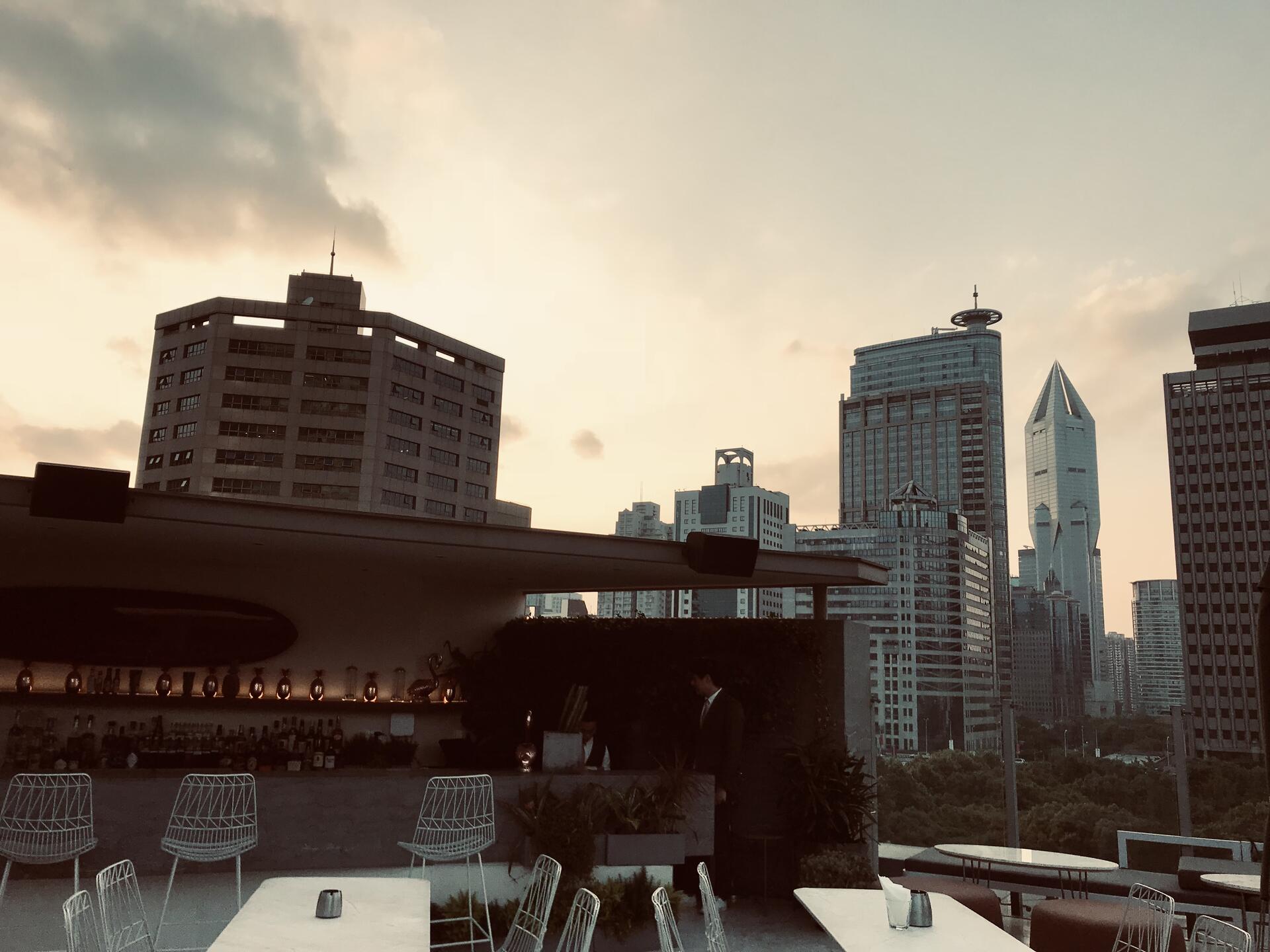
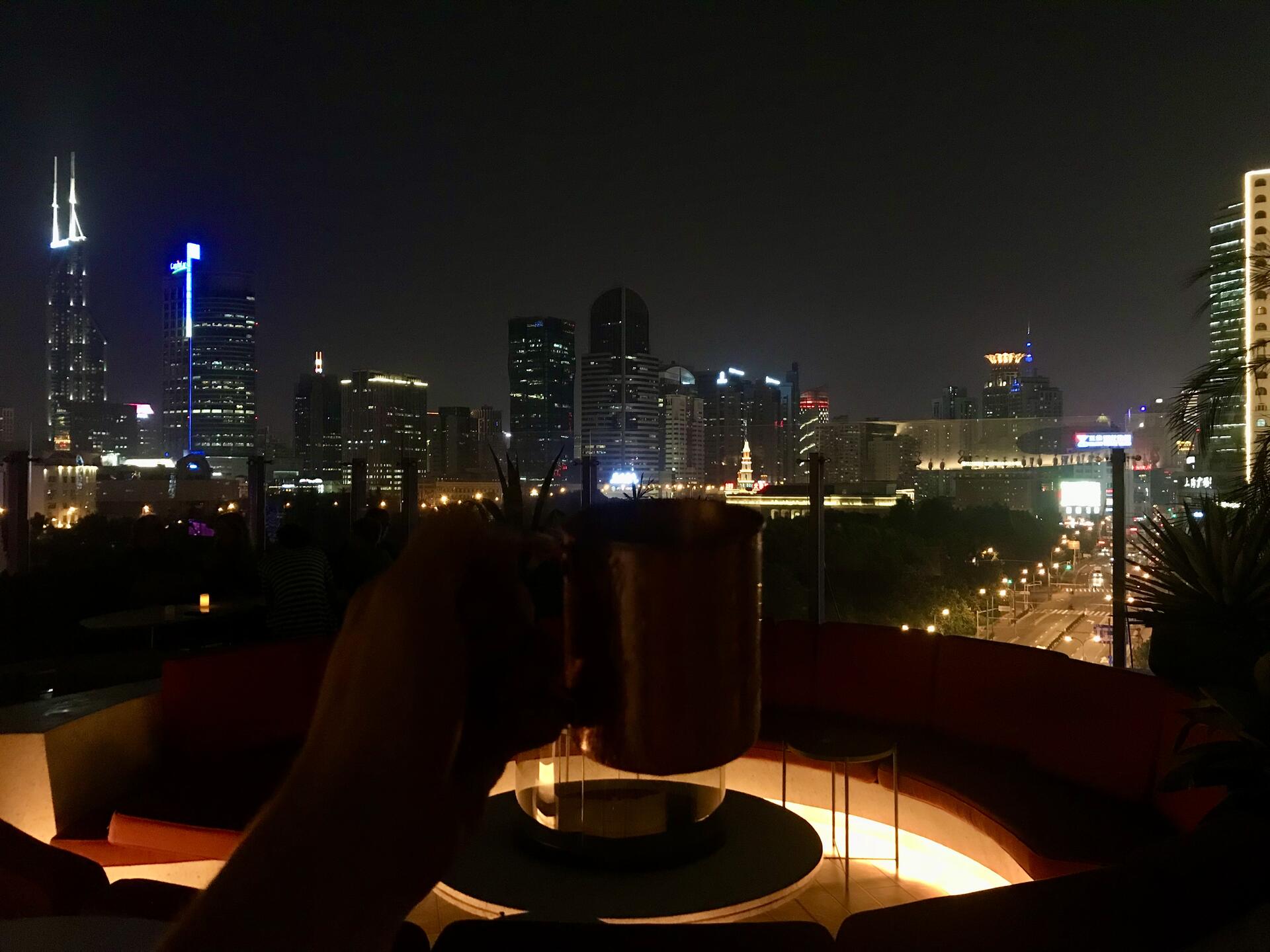

Next Guide in the Series:
An Expats Guide to the Best Spots in Shanghai: 002
Find Me Elsewhere:
All images property of Hes. Originally published as an Instagram Guide on Feb. 02, 2021. Reworked and published on Nostr on Feb. 17, 2024.
-
 @ dfc7c785:4c3c6174
2025-01-02 05:56:32
@ dfc7c785:4c3c6174
2025-01-02 05:56:32![[IMG_4743.jpeg]]
ST. MARY'S CHURCH CHOLSEY & AGATHA CHRISTIE
St. Mary's Church
Cholsey church was part of the monastic system set up by Ethelread the Unready in about 986 A.D. The lower part of the tower of St Mary's Church shows traces of Saxon style stonework in the form of 'long and short" quoins. In 1121 when Henry I founded Reading abbey he endowed it with the monastic lands at Cholsey. those days everyone had to pay a tithe - a tenth part of the annual produce of land or labour. The tithe was usually paid in goods and Cholsey produced so much that a huge barn was built - said to be the biggest in Europe.
Great Barn
The church and manor were given to Reading Abbey by Henry Ist in 1121 A.D. It was a most valuable part of the abbey's possessions. In the 13th & 14th centuries the largest barn in Europe was erected close by the church.
Unfortunately, this was demolished in the early 19th century. On the right, as you enter the churchyard you can see a large barn - the original barn was bigger than this. The Great Barn was 303 feet long and had seventeen stone piers on each side supporting the roof timbers.
The Church Bells
There are eight bells in the tower. The Sanctus bell was made by Richard de Wymbish, one of the earliest London Bell founders.
Only a few bells made by him now exist.
The Cholsey bell is still regularly rung.
It was rehung in 1972 and bears the inscription RICARDUS: DE: WIMBUS: ME: FECIT (Richard de Wymbish made me.)
Cholsey First School
In 1837 a school building was erected by the churchyard gates. The school was built by subscription and then adopted by the National Society and was used for Sunday school and evening classes.
Agatha Christie
The world renowned writer Agatha Christie was a resident of the parish of Cholsey. She was born on the 15th September 1890 in Torquay, Devon.
In December 1914 she married an aviator in the Royal Flying Corps - Archibald Christie, but this ended in divorce in 1928.
There was one child from the marriage. In 1930 she married her second husband, the archaeologist Max Mallowan. They bought Winterbrook House in 1934. They attended St. Mary's Curch, Cholsey and are buried in the graveyard of their parish church.
After entering the churchyard walk along the path to the porch and then veer right across the grass towards the wall and you will see a large gravestone
The grave of Agatha Christie and her husband, Max Mallowan is tucked into a corner of the graveyard of St. Mary's Church. Agatha Christie was awarded a Commander of the Order of the British Empire in 1956.
In 1971 she received the Order of Dame Commander of the British Empire. Dame Agatha Christie died on the 12th January 1976 at the age of 85.
To return to Wallingford you need to go back through the churchyard and out to the road. You can then
Cross the road and go back the way you came.
If you wish to start the Agatha Christie Trail, cross the road follow the path to the bypass. Cross carefully and walk down Winterbrook Lane until you reach the main road. You need to cross and you will soon reach Winterbrook House which is almost hidden by a hedge.
Turn right and walk carefully over the bridge, past the school and turn right through the gate and walk across Whitehead Meadow. Turn left through the recreation ground towards the Pavilion. On leaving the recreation ground, turn left and walk into the centre of the village where it is possible to catch a bus into Wallingford.
Turn right and follow the pavement into Cholsey. At the first mini roundabout turn left and head back towards Wallingford After the Red Lion there is a long straight road until you reach the bypass. Winterbrook House is on the right hand side of Reading Road.
-
 @ 1bda7e1f:bb97c4d9
2025-01-02 05:19:08
@ 1bda7e1f:bb97c4d9
2025-01-02 05:19:08Tldr
- Nostr is an open and interoperable protocol
- You can integrate it with workflow automation tools to augment your experience
- n8n is a great low/no-code workflow automation tool which you can host yourself
- Nostrobots allows you to integrate Nostr into n8n
- In this blog I create some workflow automations for Nostr
- A simple form to delegate posting notes
- Push notifications for mentions on multiple accounts
- Push notifications for your favourite accounts when they post a note
- All workflows are provided as open source with MIT license for you to use
Inter-op All The Things
Nostr is a new open social protocol for the internet. This open nature exciting because of the opportunities for interoperability with other technologies. In Using NFC Cards with Nostr I explored the
nostr:URI to launch Nostr clients from a card tap.The interoperability of Nostr doesn't stop there. The internet has many super-powers, and Nostr is open to all of them. Simply, there's no one to stop it. There is no one in charge, there are no permissioned APIs, and there are no risks of being de-platformed. If you can imagine technologies that would work well with Nostr, then any and all of them can ride on or alongside Nostr rails.
My mental model for why this is special is Google Wave ~2010. Google Wave was to be the next big platform. Lars was running it and had a big track record from Maps. I was excited for it. Then, Google pulled the plug. And, immediately all the time and capital invested in understanding and building on the platform was wasted.
This cannot happen to Nostr, as there is no one to pull the plug, and maybe even no plug to pull.
So long as users demand Nostr, Nostr will exist, and that is a pretty strong guarantee. It makes it worthwhile to invest in bringing Nostr into our other applications.
All we need are simple ways to plug things together.
Nostr and Workflow Automation
Workflow automation is about helping people to streamline their work. As a user, the most common way I achieve this is by connecting disparate systems together. By setting up one system to trigger another or to move data between systems, I can solve for many different problems and become way more effective.
n8n for workflow automation
Many workflow automation tools exist. My favourite is n8n. n8n is a low/no-code workflow automation platform which allows you to build all kinds of workflows. You can use it for free, you can self-host it, it has a user-friendly UI and useful API. Vs Zapier it can be far more elaborate. Vs Make.com I find it to be more intuitive in how it abstracts away the right parts of the code, but still allows you to code when you need to.
Most importantly you can plug anything into n8n: You have built-in nodes for specific applications. HTTP nodes for any other API-based service. And community nodes built by individual community members for any other purpose you can imagine.
Eating my own dogfood
It's very clear to me that there is a big design space here just demanding to be explored. If you could integrate Nostr with anything, what would you do?
In my view the best way for anyone to start anything is by solving their own problem first (aka "scratching your own itch" and "eating your own dogfood"). As I get deeper into Nostr I find myself controlling multiple Npubs – to date I have a personal Npub, a brand Npub for a community I am helping, an AI assistant Npub, and various testing Npubs. I need ways to delegate access to those Npubs without handing over the keys, ways to know if they're mentioned, and ways to know if they're posting.
I can build workflows with n8n to solve these issues for myself to start with, and keep expanding from there as new needs come up.
Running n8n with Nostrobots
I am mostly non-technical with a very helpful AI. To set up n8n to work with Nostr and operate these workflows should be possible for anyone with basic technology skills.
- I have a cheap VPS which currently runs my HAVEN Nostr Relay and Albyhub Lightning Node in Docker containers,
- My objective was to set up n8n to run alongside these in a separate Docker container on the same server, install the required nodes, and then build and host my workflows.
Installing n8n
Self-hosting n8n could not be easier. I followed n8n's Docker-Compose installation docs–
- Install Docker and Docker-Compose if you haven't already,
- Create your
docker-compose.ymland.envfiles from the docs, - Create your data folder
sudo docker volume create n8n_data, - Start your container with
sudo docker compose up -d, - Your n8n instance should be online at port
5678.
n8n is free to self-host but does require a license. Enter your credentials into n8n to get your free license key. You should now have access to the Workflow dashboard and can create and host any kind of workflows from there.
Installing Nostrobots
To integrate n8n nicely with Nostr, I used the Nostrobots community node by Ocknamo.
In n8n parlance a "node" enables certain functionality as a step in a workflow e.g. a "set" node sets a variable, a "send email" node sends an email. n8n comes with all kinds of "official" nodes installed by default, and Nostr is not amongst them. However, n8n also comes with a framework for community members to create their own "community" nodes, which is where Nostrobots comes in.
You can only use a community node in a self-hosted n8n instance (which is what you have if you are running in Docker on your own server, but this limitation does prevent you from using n8n's own hosted alternative).
To install a community node, see n8n community node docs. From your workflow dashboard–
- Click the "..." in the bottom left corner beside your username, and click "settings",
- Cilck "community nodes" left sidebar,
- Click "Install",
- Enter the "npm Package Name" which is
n8n-nodes-nostrobots, - Accept the risks and click "Install",
- Nostrobots is now added to your n8n instance.
Using Nostrobots
Nostrobots gives you nodes to help you build Nostr-integrated workflows–
- Nostr Write – for posting Notes to the Nostr network,
- Nostr Read – for reading Notes from the Nostr network, and
- Nostr Utils – for performing certain conversions you may need (e.g. from bech32 to hex).
Nostrobots has good documentation on each node which focuses on simple use cases.
Each node has a "convenience mode" by default. For example, the "Read" Node by default will fetch Kind 1 notes by a simple filter, in Nostrobots parlance a "Strategy". For example, with Strategy set to "Mention" the node will accept a pubkey and fetch all Kind 1 notes that Mention the pubkey within a time period. This is very good for quick use.
What wasn't clear to me initially (until Ocknamo helped me out) is that advanced use cases are also possible.
Each node also has an advanced mode. For example, the "Read" Node can have "Strategy" set to "RawFilter(advanced)". Now the node will accept json (anything you like that complies with NIP-01). You can use this to query Notes (Kind 1) as above, and also Profiles (Kind 0), Follow Lists (Kind 3), Reactions (Kind 7), Zaps (Kind 9734/9735), and anything else you can think of.
Creating and adding workflows
With n8n and Nostrobots installed, you can now create or add any kind of Nostr Workflow Automation.
- Click "Add workflow" to go to the workflow builder screen,
- If you would like to build your own workflow, you can start with adding any node. Click "+" and see what is available. Type "Nostr" to explore the Nostrobots nodes you have added,
- If you would like to add workflows that someone else has built, click "..." in the top right. Then click "import from URL" and paste in the URL of any workflow you would like to use (including the ones I share later in this article).
Nostr Workflow Automations
It's time to build some things!
A simple form to post a note to Nostr
I started very simply. I needed to delegate the ability to post to Npubs that I own in order that a (future) team can test things for me. I don't want to worry about managing or training those people on how to use keys, and I want to revoke access easily.
I needed a basic form with credentials that posted a Note.
For this I can use a very simple workflow–
- A n8n Form node – Creates a form for users to enter the note they wish to post. Allows for the form to be protected by a username and password. This node is the workflow "trigger" so that the workflow runs each time the form is submitted.
- A Set node – Allows me to set some variables, in this case I set the relays that I intend to use. I typically add a Set node immediately following the trigger node, and put all the variables I need in this. It helps to make the workflows easier to update and maintain.
- A Nostr Write node (from Nostrobots) – Writes a Kind-1 note to the Nostr network. It accepts Nostr credentials, the output of the Form node, and the relays from the Set node, and posts the Note to those relays.
Once the workflow is built, you can test it with the testing form URL, and set it to "Active" to use the production form URL. That's it. You can now give posting access to anyone for any Npub. To revoke access, simply change the credentials or set to workflow to "Inactive".
It may also be the world's simplest Nostr client.
You can find the Nostr Form to Post a Note workflow here.
Push notifications on mentions and new notes
One of the things Nostr is not very good at is push notifications. Furthermore I have some unique itches to scratch. I want–
- To make sure I never miss a note addressed to any of my Npubs – For this I want a push notification any time any Nostr user mentions any of my Npubs,
- To make sure I always see all notes from key accounts – For this I need a push notification any time any of my Npubs post any Notes to the network,
- To get these notifications on all of my devices – Not just my phone where my Nostr regular client lives, but also on each of my laptops to suit wherever I am working that day.
I needed to build a Nostr push notifications solution.
To build this workflow I had to string a few ideas together–
- Triggering the node on a schedule – Nostrobots does not include a trigger node. As every workflow starts with a trigger we needed a different method. I elected to run the workflow on a schedule of every 10-minutes. Frequent enough to see Notes while they are hot, but infrequent enough to not burden public relays or get rate-limited,
- Storing a list of Npubs in a Nostr list – I needed a way to store the list of Npubs that trigger my notifications. I initially used an array defined in the workflow, this worked fine. Then I decided to try Nostr lists (NIP-51, kind 30000). By defining my list of Npubs as a list published to Nostr I can control my list from within a Nostr client (e.g. Listr.lol or Nostrudel.ninja). Not only does this "just work", but because it's based on Nostr lists automagically Amethyst client allows me to browse that list as a Feed, and everyone I add gets notified in their Mentions,
- Using specific relays – I needed to query the right relays, including my own HAVEN relay inbox for notes addressed to me, and wss://purplepag.es for Nostr profile metadata,
- Querying Nostr events (with Nostrobots) – I needed to make use of many different Nostr queries and use quite a wide range of what Nostrobots can do–
- I read the EventID of my Kind 30000 list, to return the desired pubkeys,
- For notifications on mentions, I read all Kind 1 notes that mention that pubkey,
- For notifications on new notes, I read all Kind 1 notes published by that pubkey,
- Where there are notes, I read the Kind 0 profile metadata event of that pubkey to get the displayName of the relevant Npub,
- I transform the EventID into a Nevent to help clients find it.
- Using the Nostr URI – As I did with my NFC card article, I created a link with the
nostr:URI prefix so that my phone's native client opens the link by default, - Push notifications solution – I needed a push notifications solution. I found many with n8n integrations and chose to go with Pushover which supports all my devices, has a free trial, and is unfairly cheap with a $5-per-device perpetual license.
Once the workflow was built, lists published, and Pushover installed on my phone, I was fully set up with push notifications on Nostr. I have used these workflows for several weeks now and made various tweaks as I went. They are feeling robust and I'd welcome you to give them a go.
You can find the Nostr Push Notification If Mentioned here and If Posts a Note here.
In speaking with other Nostr users while I was building this, there are all kind of other needs for push notifications too – like on replies to a certain bookmarked note, or when a followed Npub starts streaming on zap.stream. These are all possible.
Use my workflows
I have open sourced all my workflows at my Github with MIT license and tried to write complete docs, so that you can import them into your n8n and configure them for your own use.
To import any of my workflows–
- Click on the workflow of your choice, e.g. "Nostr_Push_Notify_If_Mentioned.json",
- Click on the "raw" button to view the raw JSON, ex any Github page layout,
- Copy that URL,
- Enter that URL in the "import from URL" dialog mentioned above.
To configure them–
- Prerequisites, credentials, and variables are all stated,
- In general any variables required are entered into a Set Node that follows the trigger node,
- Pushover has some extra setup but is very straightforward and documented in the workflow.
What next?
Over my first four blogs I explored creating a good Nostr setup with Vanity Npub, Lightning Payments, Nostr Addresses at Your Domain, and Personal Nostr Relay.
Then in my latest two blogs I explored different types of interoperability with NFC cards and now n8n Workflow Automation.
Thinking ahead n8n can power any kind of interoperability between Nostr and any other legacy technology solution. On my mind as I write this:
- Further enhancements to posting and delegating solutions and forms (enhanced UI or different note kinds),
- Automated or scheduled posting (such as auto-liking everything Lyn Alden posts),
- Further enhancements to push notifications, on new and different types of events (such as notifying me when I get a new follower, on replies to certain posts, or when a user starts streaming),
- All kinds of bridges, such as bridging notes to and from Telegram, Slack, or Campfire. Or bridging RSS or other event feeds to Nostr,
- All kinds of other automation (such as BlackCoffee controlling a coffee machine),
- All kinds of AI Assistants and Agents,
In fact I have already released an open source workflow for an AI Assistant, and will share more about that in my next blog.
Please be sure to let me know if you think there's another Nostr topic you'd like to see me tackle.
GM Nostr.
-
 @ 79998141:0f8f1901
2025-01-02 05:04:56
@ 79998141:0f8f1901
2025-01-02 05:04:56Happy new year, Anon.
Thanks for tuning in to whatever this long form post will be. I hope to make these more regular, like journal entries as we travel through "real life" and the Nostrverse together. If I'm making time for this reflective writing, then things are going as planned.
2024 was a wildly transformative year for me for many reasons... there's no way I can possibly fit all of them here. They're not all related to Bitcoin and Nostr- I've got a beautiful life outside of all that which has its own independent arc. My wife and I celebrated 7 years of marriage together, stronger than ever (don't believe that "itch" bullshit). We let go of some negative relationships and embraced some positive ones. We cut some bad habits, and we made some good habits. We worked, we traveled, we saw family, and we partied.
But damn, these two technologies have become a huge part of my life. God willing, this trend will continue until they've both eclipsed my professional capacity through our startup, Conduit BTC.
This was the year I was truly orange pilled. Until late 2023, I had traded (quite profitably) Bitcoin, "crypto", stocks, options, prediction markets and whatever else I could get my hands on that felt undervalued. I did this all in my spare time, grinding out a little financial freedom while I hustled at my fiat ventures to support my little family. I wasn't a true believer- just an opportunist with a knack for spotting where and when a crowd might flock to next. That was right up until I ran face first into Lyn Alden's book "Broken Money".
Something about Lyn's engineer/macro-finance inspired prose clicked with me, lock and key. Total one way function. By the end of the book my laser eyes had burned a hole in my bedroom ceiling. I was all in- and acted accordingly both with my capital and my attention. It wasn't long before I discovered Nostr and dove in here too, falling deep into my current orange and purple polyamorous love affair.
"If you know the enemy and know yourself, you need not fear the result of a hundred battles."
Despite the passion, through studying Bitcoin's criticisms (from the likes of Mike Green and Nassim Taleb) I found a hole in the utopian plot: none of this works without Bitcoin actually being used as money. Worldwide transactions must skyrocket demand for blockspace to keep the network secure/stable for the long term. Besides, if everyday folks aren't using Bitcoin as money then we haven't done shit to make the world a better place. In that world, we've only replaced old masters with new ones. Fuck that.
Whatever I did in this space needed to increase the usage of Bitcoin as money. Simple. This was bigger than passion, this was purpose. I knew that come hell or high water I would dedicate myself to this mission.
Lucky for me I found a partner and best friend in @aceaspades to go on this adventure with. I'm infinitely grateful for him. He's an incredible man who also happens to be an insanely creative and talented software developer. We'd tried for years to find the right project to focus on together, experimenting with all kinds of new techy ideas as they came across our field. Nothing had ever captured our attention like this. This was different. By March of 2024 we had formed a company and gotten to work iterating on how we could leverage these beautiful protocols and open-source tech to create something that served our mission. This is @ConduitBTC.
I've done well in my fiat career executing plans downstream of someone else's creative vision. I've learned the ins and outs of an established ecosystem and found ways to profit from it. I take plans developed by others, compete to win contracts to build them, and execute on them in a cashflow-positive way. I'm bringing this no bullshit blue collar skillset with me to the Nostrverse whether they like it or not.
The adventure we're embarking on now is totally different though. We're charting a new course - totally creative, highly intuitive and extremely speculative towards a future that doesn't exist yet. There are few established norms. The potential is vast but unknown. We're diving into a strange quest to sell a map to an imaginary place and to simultaneously architect its creation (alongside all the amazing builders here doing the same thing). This is insanely exciting to me.
We're barely getting started but a lot has been invested under the surface which will show itself in 2025. We'll be sharing updates in a proper post on @ConduitBTC soon.
As for my personal 2025 resolutions, here they are: - zero alcohol for the entire year (did this in 2019 and had a great year, it's time for a rerun) - more focused presence in the moment: especially with my wife - more self care and prioritized mental/physical health - this includes daily: naps, prayer, self hypnosis or meditation, sweat, and stretching/massaging (overworked in 2024 with a fiat 9-5, a board/advisor role in a fiat business I have equity in, and my newfound passion here. Two serious burn out episodes experienced this year - zero is the only acceptable number of burnouts for long term health and success.) - related to the above: get Conduit some mission-aligned funding partners and leave my fiat 9-5. Grow the Conduit team (have put in a serious amount of my personal capital already to get this going, which will show fruit in the new year... but I am not an island) - more authentic and thoughtful posts on Nostr, with a solid amount of shitposting and organic home grown memes to balance it out... more zaps, more geniune connections and interactions with the curious forward thinking people on here - more IRL Nostr/Bitcoin events - more laughter, more jokes
Enough for now. Cheers to you and yours Anon, may 2025 bring you the magic you've been dreaming of.
-
 @ 13e63e99:25525c6a
2025-01-02 02:03:59
@ 13e63e99:25525c6a
2025-01-02 02:03:59
The recent appointments by President-elect Donald Trump have generated significant excitement within the cryptocurrency sector. His crypto-supportive team has amplified market enthusiasm, pushing Bitcoin's price to an all-time high as the industry rallies around the news. Our team has analyzed each appointee to assess the long-term implications of Trump’s administration on the crypto landscape.
Key Appointments and Their Implications
1. David Sacks – White House AI and Crypto Czar

Sacks, a entrepreneur, investor, and advocate for cryptocurrencies, with a career spanning multiple successful ventures. He is the founding partner of Craft Ventures, a VC firm that invests in tech and crypto. Previously, Sacks was the COO of PayPal during its early days. Sacks has been an advocate for economic freedom, decentralization, and sensible crypto regulation. He has been involved in shaping crypto policy through his connection with political leaders, including his recent role as part of President-elect Trump’s pro-crypto team. His appointment highlights the administration’s intent to integrate cryptocurrency and AI into national policy, potentially creating a favorable environment for technological growth.
2. Paul Atkins – SEC Chairman Nominee

Atkins served as a commissioner for the U.S. Securities and Exchange Commission (SEC) from 2002 to 2008, where he advocated for market-oriented policies and reduced regulatory burdens. He has been a prominent voice in pushing for regulatory clarity in emerging financial technologies, including cryptocurrencies. He has consistently emphasized the importance of balancing investor protection with fostering innovation. Atkins’ nomination underscores a clear effort to address regulatory uncertainty in the crypto industry. As co-chair of the Digital Chamber’s Token Alliance since 2017, he has consistently supported initiatives that balance consumer protection with innovation. His leadership at the SEC is expected to bring much-needed clarity to the regulatory framework.
3. Stephen Miran – Chair of the Council of Economic Advisors

The council advises the president on economic policy, assists in the preparation of an annual report that gives an overview of the country's economy, reviews federal policies and programs and makes economic policy recommendations. Stephen Miran is a economist with a focus on deregulation and economic policy. He is best known for his role as an economic advisor with a strong commitment to fostering technological advancement and free-market principles. He is an advocate for streamlining regulatory processes, enabling new technologies like Bitcoin to thrive in a competitive global economy. Miran's ability to shape national economic policies could therefore play a critical role in determining the future regulatory landscape for cryptocurrencies in the U.S.
4. Rep. French Hill-Chairman of the House Financial Services Subcommittee on Digital Assets

Rep. Hill has served in the U.S. House of Representatives since 2015. He has been involved in numerous legislative efforts, focusing on economic policy, financial services, and digital asset regulation. Rep. Hill has elected to be Chairman of the House Financial Services Subcommittee on Digital Assets and has been a vocal advocate for creating a structured regulatory framework for cryptocurrencies and digital assets. Rep. Hill has identified a digital asset market structure bill as a priority for the Republican Party. His statements have stressed the importance of developing clear rules that will foster innovation, while also making sure that digital assets don’t become a vehicle for illegal activity or instability.
Outlook for the Crypto Industry
If the Trump administration follows through on its pledges, the U.S. could experience:
-
Enhanced Regulatory Clarity: Clear guidelines could attract institutional investment and drive industry innovation.
-
Improved Market Confidence: A well-structured framework may mitigate risks and encourage broader adoption of digital assets.
-
Global Leadership: Proactive support for cryptocurrencies could establish the U.S. as a leader in financial innovation.
However, delays or failure to act decisively could perpetuate uncertainty and market instability. The crypto community remains cautiously optimistic, awaiting tangible policy actions that translate this promising momentum into long-term growth opportunities.
Reference: MayerBrown, Pensions&Investments, Time

IMF-Driven Revisions to Bitcoin Law\ El Salvador and the IMF have reached an agreement on a $1.4 billion loan program, to be disbursed over 40 months, according to an IMF statement. In return, El Salvador has committed to implementing measures aimed at improving its primary balance and reducing its debt-to-GDP ratio. As part of the conditions for a new IMF loan package, President Nayib Bukele of El Salvador has agreed to revise key aspects of the country's groundbreaking Bitcoin Law enacted in 2021. The changes include:
-
Ending the Legal Tender Mandate: Businesses are no longer required to accept Bitcoin as a form of payment.
-
Shutting Down Chivo Wallet: The state-run wallet, plagued with technical issues, will cease operations.
-
Halting Bitcoin Tax Payments: Bitcoin will no longer be accepted for tax obligations.
Backlash and Misunderstandings\ Critics on social media have accused Bukele of abandoning his commitment to Bitcoin, framing these changes as a betrayal. However, such reactions fail to recognize the broader context of his leadership.
Leadership Priorities\ Bukele’s primary responsibility is to the Salvadoran people, not the global Bitcoin community. El Salvador faces profound challenges, including poverty, crime, and underdeveloped infrastructure. These realities necessitate pragmatic governance, where Bitcoin serves as a tool—not an ideology.
Expecting Bukele to prioritize Bitcoin over the well-being of his nation is both unrealistic and misaligned with the role of a national leader. The decision to modify the Bitcoin Law reflects a calculated effort to balance innovation with the pressing needs of the Salvadoran populace.
Implications
-
Investor Sentiment and Confidence: Bitcoin investors, particularly those who saw El Salvador's Bitcoin adoption as a milestone for mainstream acceptance, expressed disappointment over the reversal. Bitcoin experienced dip in value on the day the news broke.
-
IMF Dynamics: The IMF’s involvement also fueled concerns, as it was seen as a sign that traditional financial institutions were exerting influence over a policy that was once viewed as groundbreaking for Bitcoin adoption. Some traders and investors worried that further pressure from the IMF could lead to additional regulatory restrictions, potentially dampening future market enthusiasm. The concessions demonstrate the leverage international institutions hold over nations experimenting with alternative financial systems. This could prompt a reassessment of Bitcoin adoption strategies in the face of external pressures.
-
Setback to Bitcoin as “Medium of Exchange": El Salvador's scaling back of its Bitcoin Law could significantly slow the growth of Bitcoin as a medium of exchange, as the country had been seen as the most iconic and pioneering example of fostering a Bitcoin circular economy. The government has reduced the incentives for businesses and consumers to adopt Bitcoin for everyday transactions. As a result, the dream of creating a Bitcoin-driven economy in El Salvador, where the cryptocurrency could circulate seamlessly, faces a major setback, potentially delaying or even derailing Bitcoin’s path to becoming a widely used and accepted global currency.
President Bukele’s revisions to the Bitcoin Law are not a betrayal or rejection of Bitcoin, but a pragmatic adjustment to better serve the needs of El Salvador. Bitcoin remains an important tool in the nation’s economic strategy, but its utility must be balanced with other pressing priorities. El Salvador is still committed to purchasing Bitcoin and is likely to accelerate its pace. Ultimately, it's essential to remove the rose-tinted glasses and recognize the reality of a more mature and practical approach to integrating Bitcoin within a complex national economy.
Reference: Yahoo Finance, BitcoinMagazine

1. MicroStrategy to turn to fixed-income securities to raise funds for Bitcoin purchases
MicroStrategy, led by co-founder Michael Saylor, is shifting its funding strategy for Bitcoin purchases. Once its current fundraising plan is fully utilized, the company will move from using Bitcoin proxies to focusing on fixed-income securities. Previously, MicroStrategy has funded Bitcoin acquisitions through stock and convertible bond sales, with convertible bonds yielding positive returns as the company’s stock price rose. Saylor emphasized leveraging strategies to enhance shareholder value, noting that $4 billion of their $7.2 billion in convertible notes act as equity. This pivot aligns with a broader market trend where hedge funds are increasingly using fixed-income securities for convertible arbitrage, prompting MicroStrategy to issue $6.2 billion in convertible bonds this year. The move positions the company to adapt to the changing investment landscape while maximizing returns for shareholders.
Reference: Bloomberg
2. Russia Is Using Bitcoin for International Trade
Russian Finance Minister Anton Siluanov announced that Russian companies have started using Bitcoin and other digital currencies for international payments, a move in response to recent legislative changes aimed at countering Western sanctions. Additionally, lawmaker Anton Tkachev proposed creating a Bitcoin reserve, similar to foreign exchange reserves, to mitigate risks from sanctions, inflation, and currency fluctuations. This marks a step toward greater economic sovereignty and resilience.

Reference: The block beats
3. Japanese Government Responds to Proposal for Establishing Bitcoin Reserve
The Japanese government recently responded to a proposal by Senator Satoshi Hamada regarding the consideration of Bitcoin as a reserve asset, a trend gaining traction in countries like the U.S. While acknowledging the growing global interest in cryptocurrencies, the government expressed that discussions on Bitcoin’s role as a reserve asset are still in early stages and refrained from forming an opinion. Citing its legal framework, Japan emphasized that cryptocurrencies like Bitcoin are not classified as foreign exchange and do not align with the objectives of maintaining stable and liquid foreign exchange reserves. Japan’s cautious approach reflects its commitment to economic stability while evaluating the potential integration of digital assets.

Reference: coin post

Happy New Year from Team HCM! As we welcome the new year, we are excited to celebrate not only the joy of the season but also the growth and progress of the Bitcoin community. Reflecting on 2024, we made significant strides and embraced new changes. The official HCM website is set to launch at early January of the year 2025, marking an exciting new chapter for our team. Looking ahead, we are enthusiastic about the future and the global adoption of Bitcoin, which will continue to grow stronger and more impactful. Here's to an incredible journey ahead, filled with innovation, collaboration, and success! Cheers to 2025!

-
-
 @ 13e63e99:25525c6a
2025-01-02 02:00:48
@ 13e63e99:25525c6a
2025-01-02 02:00:48
The recent appointments by President-elect Donald Trump have generated significant excitement within the cryptocurrency sector. His crypto-supportive team has amplified market enthusiasm, pushing Bitcoin's price to an all-time high as the industry rallies around the news. Our team has analyzed each appointee to assess the long-term implications of Trump’s administration on the crypto landscape.
Key Appointments and Their Implications
1. David Sacks – White House AI and Crypto Czar

Sacks, a entrepreneur, investor, and advocate for cryptocurrencies, with a career spanning multiple successful ventures. He is the founding partner of Craft Ventures, a VC firm that invests in tech and crypto. Previously, Sacks was the COO of PayPal during its early days. Sacks has been an advocate for economic freedom, decentralization, and sensible crypto regulation. He has been involved in shaping crypto policy through his connection with political leaders, including his recent role as part of President-elect Trump’s pro-crypto team. His appointment highlights the administration’s intent to integrate cryptocurrency and AI into national policy, potentially creating a favorable environment for technological growth.
2. Paul Atkins – SEC Chairman Nominee

Atkins served as a commissioner for the U.S. Securities and Exchange Commission (SEC) from 2002 to 2008, where he advocated for market-oriented policies and reduced regulatory burdens. He has been a prominent voice in pushing for regulatory clarity in emerging financial technologies, including cryptocurrencies. He has consistently emphasized the importance of balancing investor protection with fostering innovation. Atkins’ nomination underscores a clear effort to address regulatory uncertainty in the crypto industry. As co-chair of the Digital Chamber’s Token Alliance since 2017, he has consistently supported initiatives that balance consumer protection with innovation. His leadership at the SEC is expected to bring much-needed clarity to the regulatory framework.
3. Stephen Miran – Chair of the Council of Economic Advisors

The council advises the president on economic policy, assists in the preparation of an annual report that gives an overview of the country's economy, reviews federal policies and programs and makes economic policy recommendations. Stephen Miran is a economist with a focus on deregulation and economic policy. He is best known for his role as an economic advisor with a strong commitment to fostering technological advancement and free-market principles. He is an advocate for streamlining regulatory processes, enabling new technologies like Bitcoin to thrive in a competitive global economy. Miran's ability to shape national economic policies could therefore play a critical role in determining the future regulatory landscape for cryptocurrencies in the U.S.
4. Rep. French Hill-Chairman of the House Financial Services Subcommittee on Digital Assets

Rep. Hill has served in the U.S. House of Representatives since 2015. He has been involved in numerous legislative efforts, focusing on economic policy, financial services, and digital asset regulation. Rep. Hill has elected to be Chairman of the House Financial Services Subcommittee on Digital Assets and has been a vocal advocate for creating a structured regulatory framework for cryptocurrencies and digital assets. Rep. Hill has identified a digital asset market structure bill as a priority for the Republican Party. His statements have stressed the importance of developing clear rules that will foster innovation, while also making sure that digital assets don’t become a vehicle for illegal activity or instability.
Outlook for the Crypto Industry
If the Trump administration follows through on its pledges, the U.S. could experience:
-
Enhanced Regulatory Clarity: Clear guidelines could attract institutional investment and drive industry innovation.
-
Improved Market Confidence: A well-structured framework may mitigate risks and encourage broader adoption of digital assets.
-
Global Leadership: Proactive support for cryptocurrencies could establish the U.S. as a leader in financial innovation.
However, delays or failure to act decisively could perpetuate uncertainty and market instability. The crypto community remains cautiously optimistic, awaiting tangible policy actions that translate this promising momentum into long-term growth opportunities.
Reference: MayerBrown, Pensions&Investments, Time

IMF-Driven Revisions to Bitcoin Law\ El Salvador and the IMF have reached an agreement on a $1.4 billion loan program, to be disbursed over 40 months, according to an IMF statement. In return, El Salvador has committed to implementing measures aimed at improving its primary balance and reducing its debt-to-GDP ratio. As part of the conditions for a new IMF loan package, President Nayib Bukele of El Salvador has agreed to revise key aspects of the country's groundbreaking Bitcoin Law enacted in 2021. The changes include:
-
Ending the Legal Tender Mandate: Businesses are no longer required to accept Bitcoin as a form of payment.
-
Shutting Down Chivo Wallet: The state-run wallet, plagued with technical issues, will cease operations.
-
Halting Bitcoin Tax Payments: Bitcoin will no longer be accepted for tax obligations.
Backlash and Misunderstandings\ Critics on social media have accused Bukele of abandoning his commitment to Bitcoin, framing these changes as a betrayal. However, such reactions fail to recognize the broader context of his leadership.
Leadership Priorities\ Bukele’s primary responsibility is to the Salvadoran people, not the global Bitcoin community. El Salvador faces profound challenges, including poverty, crime, and underdeveloped infrastructure. These realities necessitate pragmatic governance, where Bitcoin serves as a tool—not an ideology.
Expecting Bukele to prioritize Bitcoin over the well-being of his nation is both unrealistic and misaligned with the role of a national leader. The decision to modify the Bitcoin Law reflects a calculated effort to balance innovation with the pressing needs of the Salvadoran populace.
Implications
-
Investor Sentiment and Confidence: Bitcoin investors, particularly those who saw El Salvador's Bitcoin adoption as a milestone for mainstream acceptance, expressed disappointment over the reversal. Bitcoin experienced dip in value on the day the news broke.
-
IMF Dynamics: The IMF’s involvement also fueled concerns, as it was seen as a sign that traditional financial institutions were exerting influence over a policy that was once viewed as groundbreaking for Bitcoin adoption. Some traders and investors worried that further pressure from the IMF could lead to additional regulatory restrictions, potentially dampening future market enthusiasm. The concessions demonstrate the leverage international institutions hold over nations experimenting with alternative financial systems. This could prompt a reassessment of Bitcoin adoption strategies in the face of external pressures.
-
Setback to Bitcoin as “Medium of Exchange": El Salvador's scaling back of its Bitcoin Law could significantly slow the growth of Bitcoin as a medium of exchange, as the country had been seen as the most iconic and pioneering example of fostering a Bitcoin circular economy. The government has reduced the incentives for businesses and consumers to adopt Bitcoin for everyday transactions. As a result, the dream of creating a Bitcoin-driven economy in El Salvador, where the cryptocurrency could circulate seamlessly, faces a major setback, potentially delaying or even derailing Bitcoin’s path to becoming a widely used and accepted global currency.
President Bukele’s revisions to the Bitcoin Law are not a betrayal or rejection of Bitcoin, but a pragmatic adjustment to better serve the needs of El Salvador. Bitcoin remains an important tool in the nation’s economic strategy, but its utility must be balanced with other pressing priorities. El Salvador is still committed to purchasing Bitcoin and is likely to accelerate its pace. Ultimately, it's essential to remove the rose-tinted glasses and recognize the reality of a more mature and practical approach to integrating Bitcoin within a complex national economy.
Reference: Yahoo Finance, BitcoinMagazine

1. MicroStrategy to turn to fixed-income securities to raise funds for Bitcoin purchases
MicroStrategy, led by co-founder Michael Saylor, is shifting its funding strategy for Bitcoin purchases. Once its current fundraising plan is fully utilized, the company will move from using Bitcoin proxies to focusing on fixed-income securities. Previously, MicroStrategy has funded Bitcoin acquisitions through stock and convertible bond sales, with convertible bonds yielding positive returns as the company’s stock price rose. Saylor emphasized leveraging strategies to enhance shareholder value, noting that $4 billion of their $7.2 billion in convertible notes act as equity. This pivot aligns with a broader market trend where hedge funds are increasingly using fixed-income securities for convertible arbitrage, prompting MicroStrategy to issue $6.2 billion in convertible bonds this year. The move positions the company to adapt to the changing investment landscape while maximizing returns for shareholders.
Reference: Bloomberg
2. Russia Is Using Bitcoin for International Trade
Russian Finance Minister Anton Siluanov announced that Russian companies have started using Bitcoin and other digital currencies for international payments, a move in response to recent legislative changes aimed at countering Western sanctions. Additionally, lawmaker Anton Tkachev proposed creating a Bitcoin reserve, similar to foreign exchange reserves, to mitigate risks from sanctions, inflation, and currency fluctuations. This marks a step toward greater economic sovereignty and resilience.

Reference: The block beats
3. Japanese Government Responds to Proposal for Establishing Bitcoin Reserve
The Japanese government recently responded to a proposal by Senator Satoshi Hamada regarding the consideration of Bitcoin as a reserve asset, a trend gaining traction in countries like the U.S. While acknowledging the growing global interest in cryptocurrencies, the government expressed that discussions on Bitcoin’s role as a reserve asset are still in early stages and refrained from forming an opinion. Citing its legal framework, Japan emphasized that cryptocurrencies like Bitcoin are not classified as foreign exchange and do not align with the objectives of maintaining stable and liquid foreign exchange reserves. Japan’s cautious approach reflects its commitment to economic stability while evaluating the potential integration of digital assets.

Reference: coin post

Happy New Year from Team HCM! As we welcome the new year, we are excited to celebrate not only the joy of the season but also the growth and progress of the Bitcoin community. Reflecting on 2024, we made significant strides and embraced new changes. The official HCM website is set to launch at early January of the year 2025, marking an exciting new chapter for our team. Looking ahead, we are enthusiastic about the future and the global adoption of Bitcoin, which will continue to grow stronger and more impactful. Here's to an incredible journey ahead, filled with innovation, collaboration, and success! Cheers to 2025!

-
-
 @ a012dc82:6458a70d
2025-01-02 01:57:34
@ a012dc82:6458a70d
2025-01-02 01:57:34Table Of Content
-
A Series of Banking Collapses
-
Federal Reserve's Counteraction
-
The Impact on Bitcoin
-
Market's Delayed Reaction
-
Bitcoin's Future Amidst Monetary Policies
-
Conclusions
-
FAQ
Bitcoin, the digital gold of the 21st century, has always been at the center of discussions in the financial and tech worlds. Its volatile price movements and its potential to revolutionize the financial sector make it a hot topic. Among the many voices opining on Bitcoin's trajectory, Arthur Hayes, co-founder and former CEO of BitMEX, stands out with his unique insights. He firmly believes that March was a defining month that signaled the onset of a bullish trend for Bitcoin. This article aims to unpack Hayes' perspective and understand the reasons behind his belief.
A Series of Banking Collapses
March of this year wasn't just another month on the financial calendar; it was a month marked by significant banking disturbances. Hayes attributes the beginning of Bitcoin's bull run to a specific date: March 10. On this day, the Silicon Valley Bank (SVB) was taken over by the Federal Deposit Insurance Corporation, a significant event in the banking world. But this wasn't an isolated incident. Just two days before, on March 8, Silvergate Bank faced liquidation, sending ripples of concern through the financial community. This wave of uncertainty continued when, on March 12, Signature Bank was compelled to shut its doors due to intervention by New York regulators. These back-to-back banking crises set the stage for what was to come in the cryptocurrency realm.
Federal Reserve's Counteraction
Reacting to the unfolding banking crises, the Federal Reserve took a decisive step. They introduced the Bank Term Funding Program (BTFP), a strategic move aimed at stabilizing the banking sector. This program was designed to offer banks loans that could extend up to a year. However, there was a catch: banks had to post "qualifying assets" as collateral to avail themselves of these loans. Hayes viewed this initiative as a clear attempt by the Federal Reserve to provide a safety net for the entire banking system. In his interpretation, the Fed's message was straightforward: "Exchange your devalued bonds for fresh dollars, and let's stabilize the system."
The Impact on Bitcoin
The repercussions of the banking crises and the Federal Reserve's countermeasures were felt in the cryptocurrency market, particularly in Bitcoin's price dynamics. Following these events, Bitcoin's price began its upward trajectory, registering an impressive increase of approximately 26%. Hayes believes that the Federal Reserve's actions, combined with the growing skepticism towards the value of fiat currencies, played a pivotal role in this surge. As faith in traditional currencies waned, traders and investors began to see the appeal of fixed-supply assets, with Bitcoin emerging as the prime contender.
Market's Delayed Reaction
While the indicators pointing to a bullish trend in Bitcoin are clear to some, Hayes observes that the broader market has been somewhat sluggish in its response. This delay in market reaction is not uncommon in the financial world, where multiple factors influence decision-making processes. However, Hayes remains undeterred in his optimism. He anticipates that within a span of six to twelve months, the market will not only recognize but also react positively to this bullish trend, further propelling Bitcoin's growth.
Bitcoin's Future Amidst Monetary Policies
Hayes' bullish stance on Bitcoin extends beyond just its recent performance. He envisions a bright future for the cryptocurrency, irrespective of the monetary decisions taken by institutions like the Federal Reserve. Whether the Fed opts for interest rate hikes to induce economic tightening or chooses the path of printing more money to infuse liquidity into the system, Hayes believes Bitcoin is poised to benefit. In his perspective, the inherent properties of Bitcoin, combined with its decentralized nature, position it favorably to thrive amidst varying economic scenarios.
Conclusion
Arthur Hayes' insights offer a deep dive into the intricate dynamics between traditional banking systems, global monetary policies, and the burgeoning world of cryptocurrencies. As we stand at the crossroads of financial evolution, understanding these interplays becomes crucial. Hayes' conviction that March marked the commencement of Bitcoin's bullish trend provides not just a perspective but also a beacon for those navigating the cryptocurrency waters. His analysis underscores the potential of Bitcoin and offers a glimpse into its promising future in the ever-evolving financial landscape.
FAQ
When did Hayes believe the Bitcoin bull run started? Hayes believes that the Bitcoin bull run began on March 10.
What significant event occurred on March 10? On March 10, the Silicon Valley Bank (SVB) was taken over by the Federal Deposit Insurance Corporation.
How did the Federal Reserve respond to banking crises? The Federal Reserve introduced the Bank Term Funding Program (BTFP) to stabilize the banking sector by offering loans in exchange for "qualifying assets" as collateral.
What impact did these events have on Bitcoin? Following these events, Bitcoin's price surged by approximately 26%, marking the beginning of its bullish trend.
That's all for today
If you want more, be sure to follow us on:
NOSTR: croxroad@getalby.com
Instagram: @croxroadnews.co
Youtube: @croxroadnews
Store: https://croxroad.store
Subscribe to CROX ROAD Bitcoin Only Daily Newsletter
https://www.croxroad.co/subscribe
DISCLAIMER: None of this is financial advice. This newsletter is strictly educational and is not investment advice or a solicitation to buy or sell any assets or to make any financial decisions. Please be careful and do your own research.
-
-
 @ 3ddc43df:9186b168
2025-01-02 01:18:38
@ 3ddc43df:9186b168
2025-01-02 01:18:38Should I Buy Bitcoin?
The price of a single Bitcoin recently reached $100,000 USD. By now everyone knows what Bitcoin is and how to buy some. Intuitively, the price of Bitcoin increases when there is more demand to buy Bitcoin than there is to sell it, and when the inverse is true the price goes down. We all know about meme-coins, which seem like (at least to me) the same exact thing as Bitcoin in a different name. So what makes Bitcoin different? Beyond buying it because the trend seems to indicate its value in USD will continue increasing, what is its fundamental value proposition? How is this value proposition different from meme-coins, or even alt-coins that are viewed as legitimate in crypto circles? What, if any, existential risks exist that could crash its price to zero in an instant?
I want to explore these questions to best inform myself on how to store and invest my money for the long-term. Everyone started hearing a lot about exponential growth curves in 2020. In 1975, Gordon Moore predicted that the density of transistors would double every two years, and this has roughly held true since. As innovation fuels more innovation, we can expect that, very generally, technology progresses on an exponential growth curve. The idea that a computer program could replace the world’s reserve currency is worth taking seriously given the huge impact we’ve already seen new technology have on society over a 20-year, 10-year, 5-year, and even 2-year timescale.

When I was working at Square I direct deposited a small percentage of my salary into CashApp’s Bitcoin direct deposit program. I sold it all when I left the company. A lot has been written about Bitcoin, so I mostly hope that writing this can help me solidify my opinions so that I can make a decision on whether to invest again and stick with that decision for somewhere between a decade and a century. Up to now I also have not been able to find a good comprehensive evaluation of Bitcoin including the “bull” case and “bear” case, so I will attempt do that here.
The Bitcoin Standard
Two years ago I was trying to answer these questions I just posed and most people on the internet said to read the book “The Bitcoin Standard.” So I bought it and it has been sat untouched on my bookshelf ever since. Time to read…

spongebob narrator voice a few days later….
This would be a good book if the author did not repeat himself ad nauseam and if he left out his many false claims. He claims the Ethereum blockchain is less immutable than the Bitcoin blockchain, moving off of the gold standard caused a decline in art’s quality, and the internet was not a “zero to one” invention but just an improvement upon the telephone. He spends half the book rambling on and on, often with personal attacks, about how he does not like Keynesian economics. He seems to draw his counterarguments against Keynes from just a single economist, Ludwig von Mises.
All of this made the book very annoying to read and proved the author quite untrustworthy. On the other hand, his general argument that hard money (ie gold) is superior to government-backed fiat is one I first read about in The Changing World Order by Ray Dalio. Dalio does a much better job here of backing this up and explaining how the decline of all the past major empires began by moving away from backing their currency with hard money. Government-backed money involves misaligned incentives — when the government spends and produces the money, invariably it will produce as much as it wants to spend. Hard money is supply-constrained, making inflation impossible. Inflation of course disincentivizes saving while incentivizing debt which is on a whole bad for society. Dalio shows that a populous prioritizing its future (saving money, investing in education and technology) correlates with its empire/country’s ascension. I don’t really know how to square this with present-day America which has the best capital markets in the world, but clearly does not prioritize the future in any other way. Maybe time-dimensions here have shifted since technology progresses much quicker now than in the past.
Anyways, it seems obvious to me now that a global supply-constrained currency would be much better for the world than a currency owned by the US government. Since the government prints its own money and has no functional checks and balances on this power, hyperinflation and the collapse of the dollar is inevitable. So even though this book was really bad I am sold on Bitcoin’s utility, so I guess it did its job. I also did a lot of online research while reading the book. Let’s go through that.
The Bitcoin Core Codebase

Bitcoin is software run on computers throughout the world. This software is on the internet. You can look at all the code, run it on your computer, and suggest updates to the core maintainers. A mix of volunteer and sponsored contributors around the world help to maintain the codebase. When the codebase it updated, people running Bitcoin nodes have the choice to update to the latest version. When the majority of Bitcoin nodes update to the latest version, the new software propagates throughout the ecosystem. This is literally how a version of money works and it is a software program you can look at and change yourself. There is mailing lists and IRC groups where software developers discuss how to make this version of the world’s money work best. I know this is now a pretty old concept but it has been blowing my mind. A case can be made that this is the world’s most important software program, since it defines somewhere around 2 TRILLION dollars worth of value.
Nostr

Somehow this rabbit-hole led me to one of the tens of new decentralized social networks. This one is the latest favorite of Jack Dorsey, who started Twitter and left it partly due to its centralization, then started Bluesky and left it partly due to its centralization. I’ve checked out Bluesky and Mastodon and I didn’t think it was really anything different or special and they just seemed like worse versions of Twitter. Nostr is actually very interesting and the reason mostly has to do with Bitcoin.
Nostr integrates with your Bitcoin wallet (technically your “lightning” wallet, which is a fast and cheap way of sending Bitcoin) so that users can send and receive Bitcoin with each other. It’s a simple idea and really easy to build, but the effect is all of these people are talking online together and trading Bitcoin with each other so there’s a mini economy here that is denominated in Bitcoin. There’s obviously not a huge amount of people there compared to other social networks but at the very least it’s a compelling playground type of world that shows off what the internet could look like if Bitcoin gains mass adoption.
Since payments are integrated directly within the social network, people share art and ideas and get tipped in Bitcoin. But Nostr is actually a protocol — social network clients have just been built on top of it, but there’s a few other things that have been built with it. There’s podcasting/streaming apps, encrypted messaging apps , blogging apps, marketplaces, and on and on. Most of these apps leverage Nostr’s Bitcoin wallet integration, and generally they could do the same thing by handling payment via PayPal, Stripe, Square, etc. Here’s the following benefits of using Bitcoin over those options:
- Censorship-resistance. This doesn’t matter for 99% of people and use-cases but if I want to buy illegal drugs or guns or medicine or hacked passwords then it matters. For the record, I (mostly) don’t. I think it would be great if I could though and I feel like if I want to then I should be able to.
- Transaction fees. Existing solutions charge somewhere between 2% and 3% of every purchase. Transacting Bitcoin over the lightning network is basically free.
- Taxes. This is another controversial one and technically the US government requires that you pay sales tax for all Bitcoin purchases. But since Bitcoin wallets are pseudonymous making it unlikely that a purchase can be traced back to you, commerce via Bitcoin does not incur tax from the government.
Read Write Own
Nostr is a good example of a Web3 platform since it is based on peer-to-peer server communication, but it is not typical of the category since it does not operate on a blockchain and does not include a bespoke cryptocurrency. Ethereum is the most famous Web3 platform where commerce is denominated in Ethereum tokens. Solana is the newest competitor and is now the most popular platform. What is going on with these? What are the advantages/disadvantages of Web 3.0 living on the blockchain? Even if Nostr provides a compelling vision of a Bitcoin-native world, is this necessarily intertwined with a decentralized web?
With that, our next book is Read Write Own by Chris Dixon.

more time travel
This was a good book. Maybe it could have been a blog post. Yes, it definitely was a blog post expanded into 250 pages. Nevertheless, its core argument was compelling and it did not base this argument on anything obviously untrue like the last book. The author is a partner at a16z, a large venture capital fund that invests heavily in web3 tech. The author breaks down internet networks into three categories: protocol networks, corporate networks, and blockchain networks.
The first takes form as standards defined by IETF, such as HTML, SMTP, FTP, DNS, etc. Basically the core layer of the Internet exists as collection of protocols that define how bits are ordered. In the early days people interoperated by using thin clients that implemented these protocols. Corporate networks use these protocols as well but on top of them they create their own proprietary layer where connections are created. Think Facebook/Twitter social graphs, Google’s page rank, AirBnB/Uber’s marketplaces. Network connections exist within the proprietary layers each corporation has created. Blockchain networks are essentially corporate networks defined by new protocols. The author spends most of the book arguing that blockchain networks provide the great features of corporate networks with the openness of protocol networks, so blockchains give us the best of both worlds.
If I could snap my fingers and kill the Internet and the world had to rebuild it from scratch, I think Blockchain would play a huge part in the redesign. The Internet is a hodgepodge collection of standards that have been somewhat haphazardly created over time. As we unlock greater capabilities via more bandwidth and more powerful compute, more standards and types of networks are added on top of the old ones. Dixon mostly argues that corporate networks are bad because corporations act as unilateral dictators over their respective networks. Benevolent dictatorships are the best organizational structure; of course, the problem is that no dictatorship can stay benevolent indefinitely. People will search for alternatives when a “regime” changes in a way they don’t like, as has already happened to some extent with Google[^1] and Twitter[^2]. Some corporate networks will stay benevolent for a long time, and they will persist long after their leadership becomes corrupted; as they say, Rome did not fall in a day. We’ve seen throughout history that democratic organizations eventually win out. Even China has ceded that they need some form of a free market to compete in the global marketplace. Blockchains provide a free market and democratic ownership within Internet networks.
What to Do?[^3]
I am completely convinced now that blockchains will one day be a foundational part of the internet, of course the big question is how long does that take? My intuition is that it takes a long long time, because it is going to take a lot to move people away from existing corporate-owned platforms. But, similar to Bitcoin succeeding because governments will not indefinitely print their money responsibly, corporations will not indefinitely govern their networks responsibly. So blockchain networks are something that I am looking at as a very long-tailed investment that I am fairly certain will pay off well in something like 50 years at the most, meaning I expect blockchains to be a foundational part of the internet within 50 years.
I look at Bitcoin in a similar way but with a much shorter time horizon. The US government has displayed plenty of irresponsible monetary policy in the past few years and I expect this trend to continue. I look at Bitcoin as an investment that will pay off well within the next 20 years, by which I mean within 20 years Bitcoin will be commonly used as a store of value, if not a method of payment.
Of the USD I am converting into cryptocurrency, three-quarters is going to Bitcoin, one-sixth to Solana, and one-tenth to Internet Computer. A brief word on the latter two… Every operation on blockchains costs money so that the nodes running the blockchain can be compensated. This is why blockchains all include a native cryptocurrency, which is the token its nodes are paid in. Solana is a new blockchain that has the lowest-cost transaction fee because it uses a unique method of verifying transactions called Proof of History, which combined with Proof of Stake provides strong cryptographic guarantees while using very little compute. Internet Computer is a blockchain that natively provides many building blocks for building a web3 ecosystem — an identity platform, http interoperability and cloud computing primitives. Basically right now you can deploy your website on this blockchain and anyone can access it from a web browser.
There are many more blockchains that are interesting and the space is evolving really quickly, these two are just the ones that caught my eye and seem to me like building blocks for the future.
Gripes
I did not end up reading much text on cases against Bitcoin and Web3, as I decided these points are fairly obvious. This is new technology so there is massive reason to believe it will end up having no consequence to the world as 99% of new technology ends up this way. The cases against these technologies are well documented and encapsulates the prevailing sentiment around them. Bitcoin has no inherent value, is not optimally scalable, is pseudonymous rather than anonymous, requires more user responsibility than fiat alternatives, and will potentially be adversarial to the US government. Blockchains are always less efficient than traditional networks, charge per transaction, (mostly) include network lock-in via their bespoke cryptocurrency, and require that users set up and learn how to use hot wallets.
There are many reasons to believe neither of these technologies will succeed. I take the point of view that all of these downsides are going to be alleviated through technological progress (the open source community building solutions to all of these problems is huge and iterating extremely quickly) and through cultural shifts (learning to use the internet was once a big hurdle for everyone, but we have learned and taught each other effectively). It’s completely reasonable to be pessimistic, however pessimism around new internet technologies has not typically been a winning strategy.
[^1]: I recently added Kagi to my list of software subscriptions. It is $10 per month and offers high quality search without ads. I recommend it.
[^2]: I think the new Twitter is pretty cool, but many people don’t like Elon and have switched to one of the many alternatives. Additionally, some cracks have already started to show in their new model with Elon banning accounts he does not like or disagrees with. As mentioned before, Nostr is a good alternative, even if it is somewhat more difficult to get started with. To get started I recommend the Primal client, for which I pay $7/month but is also great to use without paying anything.
[^3]: Is it necessary to say this is not financial advice? I see that everywhere but I always think that it is probably not necessary legally. Anyways, this is not financial advice.
-
 @ 300352ae:8be8c8b3
2025-01-01 20:46:29
@ 300352ae:8be8c8b3
2025-01-01 20:46:29Lorem ipsum dollor conae terg
-
 @ 300352ae:8be8c8b3
2025-01-01 20:28:38
@ 300352ae:8be8c8b3
2025-01-01 20:28:38Lorem ipsum dolor
-
 @ 182052d2:e48c3d7a
2025-01-01 20:12:28
@ 182052d2:e48c3d7a
2025-01-01 20:12:28When I was a young game master, I had all the time in the world to dive into rulebooks and all their extensions, devouring them cover to cover. To prepare a game session, I could spend hours, even days, creating monsters, NPCs (non-player characters), and imagining how the story would unfold. I devoted so much time and energy that a cancellation or postponement would hurt me deeply.
Over time, responsibilities and priorities changed: studies, partner, children, work, house, etc. Time became a rare resource and it's impossible to continue creating stories like before. Nowadays, my preparation time for a session ranges between 0 and 4 hours, but most often, I only dedicate an hour. Fortunately, technology has helped me become more efficient in creating stories and preparing game sessions. I use artificial intelligence without hesitation to generate ideas or structure a draft. Being far from the players, we use Roll20 to play online, and when we play Dungeons & Dragons, I use monsters whose tokens have already been created in advance. The players understand that I can no longer be as meticulous as before, and from time to time, an inconsistency or contradiction might slip into the story. To help me, I developed a storytelling technique I personally call "The Pantry Technique."
The Importance of Player Impact
One thing I've noticed about players is their enjoyment when they have an impact on the story. Although very structured scenarios have their advantages, a freer structure can offer something epic if well-prepared. The Pantry Technique applies the 20/80 principle, or Pareto's law, to have many more elements ready to be used spontaneously during a game session. When you prepare a quest for the next session, 20% of the time you spent in preparation contributes to 80% of the fun you'll have during the session. You just need to focus on the essentials and sacrifice what would make a quest worthy of being published by Wizards of the Coast. Achieving a very high-quality level represents 80% of preparation time and only contributes to 20% of the fun with friends.
Concrete Examples
Traditional Method: A group of adventurers is hired by a noble to retrieve a magical item hidden in a forgotten dungeon. The number of traps, difficulties, and locations are predetermined. There is a map with monsters already placed for potential encounters. The game master has determined the magical item's power and the characters' reward. The rival adventurers' group integrated into the quest has been created along with their NPC sheets containing their powers, special abilities, etc. The objectives of the rival group are determined.
Pantry Technique: The game master decides that a mysterious dungeon and a mysterious item exist. Without going into details, he establishes that adventurers can hear about it through rumors, a riddle, a player's contact, or through a noble who wishes to hire them. An AI can create a good riddle and often contacts have already been created during previous sessions. Use as much as possible an element related to a player or an event from a previous session: a player's tendency to highlight his rogue's attention to rumors, a riddle engraved on a portal that was not ultimately used in a previous session, or adapting to let players discover documents and maps in the noble's chest they decided to steal on a whim. Give a few clues that lead in all directions at once and let the players take the direction they want. This can be one of the paths you planned or a completely new path.
Do not hesitate to reuse differently what you have already created. For example, if the player didn't use the riddle, you can reuse it as a ward for the magical item. Also, if the role-play with the rival group lends itself well, feel free to change your mind and integrate an unbeatable monster unless they ally with the famous group. The player will have a lot of fun using his character's incredible persuasion power. The Pantry Technique is about keeping all these role-play elements in mind without going in-depth and using them spontaneously. Combining elements from players' role-play and incorporating a few of them together can be particularly successful because it will feel like a long-planned climax. That said, it's not as easy as it sounds.
Conclusion
Improvisation is not always necessary. Players may be tired and prefer to simply follow the game master's default quest. They may dive headfirst into your basic quest thinking they have disrupted your plans. Just keep the role-play elements in mind for future use. Perhaps the rival group they allied with will save them in extremis in a future quest. Perhaps the magical item is cursed and will be the object of another future quest. Sometimes amusing things happen like a player inventing a phobia of spiders for their character or even a love story with an NPC. When that happens, put it in your pantry for later.
-
 @ 58edc6ae:e070cfa5
2025-01-01 20:02:36
@ 58edc6ae:e070cfa5
2025-01-01 20:02:36MiCA Regulation and the new AML Regulation have recently come into force, raising several concerns about how the EU is approaching non-custodial payment solutions. These include:
- Conflicts with privacy standards and human rights norms
The rules permit excessive collection and sharing of information on private transactions without adequate safeguards, conflicting with EU privacy standards and international human rights principles, as emphasised in rulings by the Court of Justice of the European Union.
- Blocking innovation
The regulations conflict with privacy-focused technologies, potentially stifling new ideas and platforms in the EU. This could weaken the EU’s position as a leader in digital finance.
- Hurting competition
Compliance with these regulations increases operating costs for EU-based CASPs, placing them at a disadvantage compared to non-EU companies operating under less restrictive rules. This may push users toward unregulated services outside Europe, undermining the regulations' purpose.
- Excluding vulnerable groups
The regulations could make it harder for people in poorer or politically unstable countries to access secure and private financial tools, leaving them without viable financial options.
These issues are explored in detail in the report prepared by nostr:npub15ka0zlfeys4vphnl6dk4x63e7sra0mp3wmrp4ml7q993z8km0n6spjxua8 and me for Open Dialogue Foundation upon the request of nostr:npub13ajk3hhvqys2ev4y68jwxywgs8fsdsuk4y5gkzs874jdyrccvf5qak2yd9 .
It is crucial to reopen the discussion on these issues and urge European lawmakers to reconsider their approach. The EU needs a regulatory framework that strikes a balance between security and privacy, fosters innovation, and rebuilds Europe’s weakened position in the global digital economy.
MiCA #AML
-
 @ 468f729d:5ab4fd5e
2025-01-01 19:00:36
@ 468f729d:5ab4fd5e
2025-01-01 19:00:36 -
 @ a95c6243:d345522c
2025-01-01 17:39:51
@ a95c6243:d345522c
2025-01-01 17:39:51Heute möchte ich ein Gedicht mit euch teilen. Es handelt sich um eine Ballade des österreichischen Lyrikers Johann Gabriel Seidl aus dem 19. Jahrhundert. Mir sind diese Worte fest in Erinnerung, da meine Mutter sie perfekt rezitieren konnte, auch als die Kräfte schon langsam schwanden.
Dem originalen Titel «Die Uhr» habe ich für mich immer das Wort «innere» hinzugefügt. Denn der Zeitmesser – hier vermutliche eine Taschenuhr – symbolisiert zwar in dem Kontext das damalige Zeitempfinden und die Umbrüche durch die industrielle Revolution, sozusagen den Zeitgeist und das moderne Leben. Aber der Autor setzt sich philosophisch mit der Zeit auseinander und gibt seinem Werk auch eine klar spirituelle Dimension.
Das Ticken der Uhr und die Momente des Glücks und der Trauer stehen sinnbildlich für das unaufhaltsame Fortschreiten und die Vergänglichkeit des Lebens. Insofern könnte man bei der Uhr auch an eine Sonnenuhr denken. Der Rhythmus der Ereignisse passt uns vielleicht nicht immer in den Kram.
Was den Takt pocht, ist durchaus auch das Herz, unser «inneres Uhrwerk». Wenn dieses Meisterwerk einmal stillsteht, ist es unweigerlich um uns geschehen. Hoffentlich können wir dann dankbar sagen: «Ich habe mein Bestes gegeben.»
Ich trage, wo ich gehe, stets eine Uhr bei mir; \ Wieviel es geschlagen habe, genau seh ich an ihr. \ Es ist ein großer Meister, der künstlich ihr Werk gefügt, \ Wenngleich ihr Gang nicht immer dem törichten Wunsche genügt.
Ich wollte, sie wäre rascher gegangen an manchem Tag; \ Ich wollte, sie hätte manchmal verzögert den raschen Schlag. \ In meinen Leiden und Freuden, in Sturm und in der Ruh, \ Was immer geschah im Leben, sie pochte den Takt dazu.
Sie schlug am Sarge des Vaters, sie schlug an des Freundes Bahr, \ Sie schlug am Morgen der Liebe, sie schlug am Traualtar. \ Sie schlug an der Wiege des Kindes, sie schlägt, will's Gott, noch oft, \ Wenn bessere Tage kommen, wie meine Seele es hofft.
Und ward sie auch einmal träger, und drohte zu stocken ihr Lauf, \ So zog der Meister immer großmütig sie wieder auf. \ Doch stände sie einmal stille, dann wär's um sie geschehn, \ Kein andrer, als der sie fügte, bringt die Zerstörte zum Gehn.
Dann müßt ich zum Meister wandern, der wohnt am Ende wohl weit, \ Wohl draußen, jenseits der Erde, wohl dort in der Ewigkeit! \ Dann gäb ich sie ihm zurücke mit dankbar kindlichem Flehn: \ Sieh, Herr, ich hab nichts verdorben, sie blieb von selber stehn.
Johann Gabriel Seidl (1804-1875)
-
 @ 8a03ae29:10b1b6ac
2025-01-01 16:32:00
@ 8a03ae29:10b1b6ac
2025-01-01 16:32:00What an crazy, busy ride it's been lately! I've been crisscrossing the nation for work and embarking on the thrilling journey of relocating to a brand new living space. A pitstop on the work journey was San Francisco, once a city of love, which now feels like a city of contradictions. It's fascinating how this place, once so intertwined with the financial world, could stumble so spectacularly. I’ll save my deeper reflections for a separate post. Amidst all these observations and experiences, I’m grateful for the opportunity to connect with all of you and engage in meaningful conversations.
Let's spend a few minutes this morning catching up and talking about what it looks like to be "bankless." It's interesting; usually, this would mean talking about the less fortunate individuals who perhaps don't have a bank or access to all the lame, boring financial services we all take for granted. Today, I'd like to share my thoughts on the possibility of a future where, instead, everyone is bankless. Not because they don't have access to financial services, but because they prefer to take custody of their own assets. Tools have been built to enable not just custody but also (damn near) risk-free lending, capital raising, instantaneous settlement of funds around the globe, micro-transactions, etc. With these capabilities given to every individual who has a smartphone, hopefully, you can see how becoming bankless, something that used to cut people out, just might be everyone's way in.
The concept that I refer to at the end of my last article, how our money is still stuck in the age of the telegraph and has been the slowest part of our lives to enter the age of the internet, is a feature, not a bug. The legacy financial system is a centralized tool of wealth extraction and control. The ways this magical wand is wielded on individuals, institutions, and governments all the same are pretty clear. On behalf of individuals, millions of bankless people in Sub-Saharan Africa, Southeast Asia, and parts of Latin America just lack access to "banking" services because it's not "profitable" enough or even lack the ability to get proper identification, effectively banning their ability to take part in wealth creation. Others like Kanye West or super-rich Russians are cut off from services or have property stolen due to losing political favor. Companies and governments can have assets frozen or even seized for similar reasons or under the guise of violations of our superior morals and are hit with "sanctions." Some might encapsulate this in a word: discriminatory. Something that for sure, without a doubt, does not exist "at the end of history," right? The regulators, who have the audacity to call themselves "Watch Dogs" as if they have any teeth, always allow the robbers to ransack the place before even barking. I guess that's what happens if the burglars break the window with a big juicy steak? If this has happened once or twice, any sane person would suggest ADT.
The legacy financial system is notoriously known to be slow, expensive, ridden with fraud, and frankly dangerous, enriching bad actors and terrorists around the globe. Considering it runs on mainframe technology and requires vast amounts of human input and manual review, it makes sense as to why we all suffer immensely from the flaws inherent in humans: bias. The greatest updates to the most simple form of financial activity have been new cool apps that let you send your friend money, in what seems like seconds, but it really still takes the same old amount of time to settle as any other 'digital' transaction using the legacy financial payment rails. The same censorship applies as well; PayPal is notorious for cutting people off from their funds and inflicting a "guilty until you prove yourself innocent" approach. They automatically enforce this censorship in code for "consumer protectionist measures" while Wells Fargo is fined $1.7B for active money laundering, yet no accounts are ever frozen, and it's always "innocent until and even after settlement." Back to the point, this act of "settling" a transaction is the process where the banks "verify" that a customer has the money in their bank account to pay for dinner. This is what consumes everyone's time. One would think there must be a way to automate this similar to the automation of their customer service (dunk). You ask the legacy system, the only thing that has near-instantaneous settlement, is cash, but good luck getting that to your friend who moved out of state on his birthday. The reason we rely on this flawed crutch is that never before could you prevent or prove ownership of any digital good or object without a slow, centralized actor performing that verification "offline." Today, we have a blockchain for that, and all verification will be done "online," or the industry term, "on-chain."
In the age of the internet, arguably the best way to get your friend that birthday money would be Bitcoin, the first "real-world" application of decentralized finance. Decentralized finance, or DeFi, refers to the decentralized, futuristic, Lego-like building blocks used to construct a new, more inclusive (non-discriminatory) financial system with better financial governance. This system aims to align the incentives of every stakeholder of any type of shared entity. New terms have emerged from the future of the industry: CeFi, DeFi, and DAOs (Decentralized Autonomous Organizations - more on these in the weeks to come). CeFi or some would say TradFi describes the centralized, traditional, legacy financial system that everyone has come to know and hate. Some could argue that any traditional bank with branches throughout a region practices "decentralized" finance. The main difference lies in the governance models of how funds and/or organizations are managed. This brings us back to Bitcoin.
Bitcoin is a peer-to-peer digital cash system with near-instantaneous settlement (around 10 minutes). It means that you can send this new coin to your friend anywhere in the world with an internet connection, without the need for any slow, cumbersome offline verification process.
In a previous article, I mentioned that "digital gold... is uniquely suited to perform in that type of environment." Cryptographically-backed currencies like Bitcoin are the "digital gold" designed specifically for the internet environment. Instead of a distributed centralized actor having full control and being the single point of failure, decentralized financial services are governed by open-source code that anyone can contribute to, review, and run, executed by a blockchain. In fact, the majority of the internet's core services are open-source projects. The internet was built in a way that telecommunications had no single point of failure, and there is no centralized actor with full control of the internet. Can anyone describe a more fitting unit of exchange for that type of environment? One feature of the new magic internet money is that it's completely programmable. You can set monetary policies in open-source code (Bitcoin's current and total supply and inflation rate are publicly available, unlike the current and total supply of USD). This way, everyone holding that money has a full understanding of what the future holds and can plan their life accordingly, but that's only if we, as a people, truly value stability.
Do we all get a vote in how the policy is dictated? That's another feature enabled when using the new magic internet money. The only way individuals can vote for change in the current financial system is by converting the local currency into something else. This has been observed in hyperinflationary regimes like Venezuela, where individuals sell their local currency for foreign currencies, including Bitcoin. With magic internet money, governance models can be implemented from a bottom-up approach. For example, MakerDAO is a Decentralized Autonomous Organization (DAO) that governs the stablecoin DAI, which aims to stay relatively worth $1 USD. MKR token holders participate in the governance process by voting on proposals that can affect the monetary policy and risk management of the MakerDAO system. The voting power of MKR holders is proportional to the number of tokens they hold. There are other voting methods, such as quadratic voting, that aim to achieve a more equitable distribution of preferences and avoid the dominance of simple majority rule. Imagine that for every dollar you hold, you could actively participate in FOMC meetings with the Federal Reserve and vote for the best policy to achieve the fiscal goals of the nation-state (government by the people, for the people), instead of relying on the decisions of 12 unelected individuals in suits.
Another term that has begun to percolate throughout the industry is 'bankless,' which refers to leaving the traditional financial system and instead opting for your finances to be represented in new magic internet money and managed by applications built to automate the functions of legacy services typically offered by a bank. Perhaps "bankless" doesn't quite fit the characterization of what I just described. Maybe the better term is actually "bankmore." The reasons are as follows: 1) There would be more people involved in the banking process. 2) There would be more services offered to individuals. 3) There would be more money in deposits available for loans. Since code can't discriminate (anyone with internet access can create a public and private key needed to verify their accounts on the blockchain) → more people can participate → resulting in reduced fees + expanded reach of services due to the global nature of the internet → leads to greater amounts of deposits → more money for credit creation/expansion and loans → more people lifted out of poverty.
Now, let's shift our focus to how this virtuous cycle can be implemented and what tools we can pay attention to. Use cases such as lending and borrowing were some of the first services that leveraged smart contracts and the magic internet money from blockchains. This technical paradigm has enabled true peer-to-peer lending without the need for intermediaries such as banks. Some platforms, like Compound, Aave, or MakerDAO (as mentioned above), even offer higher yields on deposits than traditional finance. Decentralized exchanges (DEX) like Uniswap ensure a fair and decentralized trading environment where every participant has equal access to liquidity. This groundbreaking approach eliminates concerns such as front-running, which has caused poor public relations for centralized brokers like Robinhood.
Are there any new capabilities or services that this new technology brings? Of course, there are capabilities such as microtransactions and micropayments. In traditional banking systems, microtransactions are not well-suited due to high fees and infrastructure limitations. However, cryptocurrencies and DeFi enable microtransactions and micropayments with low transaction costs and the ability to transfer fractional amounts of cryptocurrencies. This opens up new use cases, including micro-rewards, pay-per-use services, and decentralized content monetization. It unlocks new business models for creators, further fueling the creator economy. Instead of journalists being forced to give up their talent to entities like the Wall Street Journal for a salary, magic internet money can unleash them to share their content in more places at a lower cost, increasing distribution and providing people with greater access to information and a more diverse set of perspectives.
As you can see, the blockchain technology has brought forth questions that many of us have never considered, assuming that someone else would know better and handle it. To shape the future you desire, you must participate in the present. Engage in discovery, questioning, testing, and finding solutions. The bigger and more humanitarian question I hope everyone reaches is: "What do I want the future to look like, and how can I contribute to making it a reality?"
I hope you are sticking with me and starting to see a glimmer of hope for a better, freer, and more inclusive world that extends beyond the fortunate few who were born with access and opportunities to create wealth.
Are You Feelin’ Moody?
-
 @ d920bbbd:5213849e
2025-01-01 15:00:33
@ d920bbbd:5213849e
2025-01-01 15:00:33Background : Family of 4, including 2 children under 10, coming to El Salvador for a 15 days holiday trip. Instead of telling our story to family and friends as we usually do, we’ll instead write a (very, very long) thread about it, so it’ll help organize our thoughts, and have place to discuss them.
It might also help you decide if you’d like to come and spend some time in El Salvador or not.
For clarity’s sake, I'll try to put a tag before each post with it's main theme
[QUICK BACKGROUND 👨👩👦👦] For additional background, we are currently living in what people usually call a First-World country in Europe, where basic human rights like free speech and individual liberty reign supreme... which is a bit odd to say in the light of recent news like mass censorship laws, civil unrest, arrest of @durov...
Our youngest child being finally old enough to travel long distance without causing trouble, we wanted to see something new (first time to central America), and also check if the turnaround since @nayibbukele was elected was real, and all the hype we read often about El Salvador was justified.
So we flew nearly a whole day hours (stops included) to have a look at it for ourselves.
[FIRST IMPRESSIONS] First thing we noticed out of the plane is the security. Not bullshit security like endless queues with body and luggage scanners (which we already went into several time before boarding the planes…), but useful security with armed guards patrolling with sniffer dogs. Reassuring.
Passing customs was also quick and easy, and the officers there were nice and patient despite our poor Spanish. You’ll get mugshotted and fully KYC’ed (what’s your business in El Salvador, where you’ll stay etc…), annoying but usual from customs screening foreigners coming into their country.
The airport was overall very clean, simple to navigate, and looked like any modern airport we’ve been to in Europe. There was also some construction being done around it, so it’s probably getting bigger soon.
Picking-up and dropping back our rental car was very smooth, better than what we are used to when going through the big rental companies, and at a lower cost. Shoutout to @bitdriver about that, whom was recommended to us by a friend. If you go to El Salvador, rent through this man, it’s easy and you support local entrepreneurs.
We left the airport (after having to present an ID to the parking guard, which is a recurring theme, as they even you to left an ID as deposit when you rent a lockbox in amusement park…) and headed to our rental flat located in a condo in El Escalon, a colonia (district) on the outskirts of San Salvador.
There, we were greeted by armed guards (also a recurring theme), who did a full ID/KYC check again about our business here… and then escorted to our flat by one of the guard.
It might be odd for me to point this out, but in Europe, basically only policemen (and not even in all countries), trained and licensed security personnel like bodyguards (very rare) or military are allowed to carry firearms in public.
[SAFETY 👮] So to get this out of the way regarding security : nearly anywhere we went (national parks, amusement parks, restaurants, malls, parking lots…) you’ll be greeted with armed guards wearing mostly revolvers and coach guns. The Salvadoran Police (PNC - Policía Nacional Civil) is also very present, especially in very touristic areas like the historical center of San Salvador or national parks. This dissipated right away any doubt we might have regarding our security in the country. Not once during our whole trip we felt insecure or even bothered about that, and we just forgot about it.
[MOVING AROUND/ROADS 🚗🛣️] During our 15 days, we travelled around 1.3k kilometers around the country, exclusively with our rental car. As I’ll mention several time in the thread, I’ll use Western Europe for reference, so all I say might seem funny for Southern, Middle and North Americans…
Driving in El Salvador is very different than in the EU. While most road rules are the same (then even measure speed and distance with Kilometers/hour, not Miles/hour…) people usually pick a lane and stick to it. You can pass cars left or right equally, people don’t care, while in the EU it’s illegal to pass someone to the right (unless in the UK, obviously…) and people will road rage at you if you do that.
Also, the road signs are much rarer, and you better use Waze or Google Maps to navigate (Apple Plans can’t even give you walking directions in El Salvador…).
The road from the Airport to San Salvador was very nice, smooth, and well lit with the Salvadoran flag colors (Blue/White/Blue) lit all along the way. Looks very cool and gives a welcoming feeling to foreigner (and I can imagine a prideful feeling for locals)… all that with just some leds.
It’s a bit different once you reach the city, were you’ll be greeted with your first Túmulo (basically very steep speed bumps located at the cities’ entrance and some residential/school areas) that you better not ignore if you value your car.
The roads were very smooth and well painted, but I was sometimes met with the biggest pot holes I’ve seen in my life. It’s a pity because 80% of the Salvadoran roads we travelled were in very good condition, about similar to what we have in the EU, but 20% is either unfinished (no asphalt) or poorly maintained (potholes of various size).
The Carretera Panamericana (Central American Highway, crossing El Salvador) is speed limited to 90 km/h is was nearly perfectly maintened. I think this situation (Speed Túmulos at the city entrances + some harsh roads) is what is leading Salvadorans to use mainly SUV’s/Pickups as their car of choice.
From what we've seen on the road, Salvadorans drive mostly Japanese and Korean SUVs and pickups (think like Nissan Rogue SUVs, called Nissan X-trails in the EU, or Mitsubishis L200/Toyota Hylux style pickups), and have a lot of tallers (garages) everywhere. We saw 40 year old cars that would have been sent to the scrap heaps 30 years ago in the EU still going here, and where a car with 100k km on the odometer is considered old and borderline scrap heap-able in the EU, here they are still looking good and working good. For reference, our rental had 200k KM on the odometer, and everything worked perfectly fine.
Weirdly enough, it seems pedestrians have no right of way in El Salvador. Even though there are plenty of crosswalks, even on the highway, we learned pretty fast that the custom here is to not stop to let pedestrians cross, and we saw several time people chilling on the median, waiting for the traffic to abate before crossing to the other side of the road. Total opposite of were we live, where any pedestrian waiting at a crosswalk (without traffic lights) has the right of way.
Lastly, while I mentioned before the official distance and speed unit is based on the kilometer, the gas is always priced in $/gallon (1 liter of super premium is about $1.11, while in the EU it’s usually between €1.80 to €2.20), but the drinks/food are sometime sold in oz/lbs, and sometimes in liter/gram. Odd but manageable.
[TRAFFIC/PUBLIC TRANSPORTATION 🚌🚥] As with all big cities we’ve been to, traffic is really bad in and around San Salvador. Better be patient and do not get lost because it could add tons of time to your trips due to traffic.
We didn’t use buses because we had our car, but there are plenty of Salvadoran public buses going from anywhere to everywhere, for apparently not even $1 per ride. 80% of the buses we’ve seen are literally old repurposed American school buses, that are painted and tuned by locals. You can see buses with flashing leds, custom rims, custom spring where the front axle is lifted twice as high as the back one, shark-tails spoilers, and graffiti-style city names. They basically pick you up and drop you anywhere you like.
It’s a bit of the same with trucking : a lot of “old” big rigs from the US are used here to transport freight and construction material. I’ve also seen some of the best customised trucks with led designs, custom rims and paint here. Same goes for car tuning : a lot of Salvadoran apparently like to customise their car, even with stuff that should be illegal in the EU (flashing, coloued headlights, big exhaust, custom rims with protruding spikes…) We didn’t see many luxury cars, besides a few US luxury pickups and huge SUVs. Nearly 0 German cars, overall way less than 1% of the cars we crossed on the road. A handful of BMWs, 3 Porsches, 2 Mercedes. And 0 Tesla, nor EVs in general, except maybe an electric DHL Van and a hybrid or two cars (and we’re not even sure about these being fully electrical or even hybrid). It’s a big contrast since EVs (especially Teslas) are now everywhere in the big European cities. We didn’t see any EV charging point anywhere, too. As we mentioned before, keeping older car road worthy is big here, and with gas at around $1 per liter, I can understand why there’s zero EV in El Salvador (yet).
We also saw plenty of locals using small trucks as buses (where 15+ people are standing up next to each other on an open-ended truck), big dump-trucks where 5+ people were chilling on the dirt, and kids and teens sitting in the back of pickup trucks… Again, this might seem normal here, and I’m not judging if it’s good or bad (people are free to travel however they like as long as they do not endanger other road users if you ask me), but coming from Europe, you’d get arrested and fined within 10 minutes of travelling like this.
I’ve also come across old railways track, and the only time I heard about trains in El Salvador was from a tour guide than explained to us that people tried to flee from a small village near San Salvador by train during the last San Salvador Volcano Eruption in 1917… but the train tracks were cut off by a lava trail. So I’ve looked it up and indeed there are no more railways operating in El Salvador since 2002 (due to no rentability and damage from the civil war, and reset plans were unsuccessful so far). Apparently there are new big plans to rebuild a new railway called the Pacific Train. If successful, that would be a very good development to alleviate traffic and allow people to travel the country more quickly, but we’ll have to wait and see how it goes.
[SAN SALVADOR HISTORICAL CENTER ⛪️] We visited the historical center of San Salvador, where ultra modern edifices like the BINAES (Biblioteca Nacional de El Salvador) are standing across older gems like the Palacio Nacional (built in the late 1800’s, destroyed by fire, rebuild in the early 1900’s (you can have a look at the older foundations during your tour)) which is still hosting speeches from @nayib according to our tour guide and the Catedral Metropolitana de San Salvador, a beautiful cathedral facing the BINAES.
Speaking of the BINAES, it is a library open 24/7 which is as much an amusement park for babies, kids, teens and adults (think playgrounds, video games, themed areas about Star Wars, Harry Potter and LOTR) than a library for readers and learners (plenty of brand new books and reading areas). I wish we had something like this at home because you have to spend some time there to see how cool it is, whatever your age and your book taste are.
Next to these very touristic areas, you also have local markets and shops, where you can get a haircut for $2.5, and buy anything (food, clothes, and all kind of stuff) for a few dollars or even cents.
The contrast is very strong between the local areas and the tourist areas ; you can see very clean and modern streets, parks, fountains, on par or better than what you’ll see in Europe, and one block away you are back 30 years in the past, with people having stands on the street flea-market style, street vendors waving at you to sell you stuff (can’t hide you’re a tourist here), and overall a very organized-chaos feeling there. Even in these areas, we were never bothered by Salvadorans.
[RURAL CITIES 🏘️] We went to visit a few typical Salvadoran cities in the back country, notably a few on the route of flowers (even though there are no flowers here during the winter) : Nahuizalco, Apaneca, Concepción de Atacó… They have in common to have usually busy marketplaces around the city center, nice parks to chill for a bit with kids playground, often some very nice hand-painted murals, and always some churches/cathedrals that are very well tended to. The life of these cities look to be organised around the town center, as there are plenty of vendors, shops and place to eat in this area. We also went to visit Suchitoto, where you can spend the day as there are many things to do, places and museums to visit. One of the most intriguing part of this city was that it was full of little car looking like golf carts. After doing a bit of research, apparently these are Indian-made and called Bajaj Cute. The city's roads and roads to the lake were even arranged with narrow bands of concrete as large as these cars' size to help them navigate the cobblestone roads and steep roads in the area.
And of course, there are also plenty of natural wonders around these cities to discover.
[VOLCANOES/RUINS/BEACHES/PARKS 🌋🏖️🏞️] We also visited as many of the natural and archeological wonders as we could, such as the San Salvador volcano, with its stunning views over San Salvador city and the craters… yes, there is a crater (El Boqueroncito) inside a crater ! (El Boquerón). We also spotted the Torogoz here, which is the official animal of El Salvador and which has a very cool backstory told by our guide.
We also saw very well preserved Mayan Ruins (El Tazumal), and stunning beaches (El Zonte, aka Bitcoin Beach, awesome surf spot, where we met mostly foreigners) and San Diego Beach, which looked like and endless tropical sand beach where we met about as many people enjoying the beach than lifeguards (actually one “official“ life guard, and a local guy patrolling the beach on a donkey, both warned us about the tide and currents, which as very appreciable especially with young kids). Looks aside, the big difference with Europe regarding beaches is the fact that houses and ranchs are built very close to the shoreline basically everywhere we went. It might be nice if you live there, or are willing to rent a ranch for the day where you can enjoy a swimming-pool, hammocks, and fresh drink and food along with having the beach a few meters away, but we thought it took away from the natural charm of these areas. There were dozen of other recommended beaches we didn’t went to, so it might be different elsewhere.
Everywhere we went to visit or have a tour, we were met by local licensed guides that offered to walk us around the places while telling us the sorties and anecdotes about them. Most of the guides could speak English, all of them were ultra nice and patient with our kids and our broken Spanish, and it’s free. But if you have manners, you leave them a nice tip after the tour. This was a very appreciable. The only paid visits were for historical monuments, but there you always have a guide with you, usually English speaking (that you can also tip since they are very nice and knowledgeable about their heritage) This and the previous paragraph are amongst the shortest we'll write about, not for their importance since the views are stunning and the places to visit are beautiful, but because speaking about these experiences don’t do them justice, and are best lived and seen rather than read and looked at.
[KIDS ACTIVITIES 👦👧🛝] Now my kids have been bothering me for a while about mentioning amusement parks.
As mentioned above, even though we visited a volcano and an old Mayan temple, there were several more volcanoes on our list (Santa Ana, Izalco…) and ruins (Joya de Ceren, Cihualtan…) than we could have visited… but kids have a very short patience gauge that you have to regularly refill with trips to local parks. We visited about 10 of them, and I’d say 2/3 were very well tended, with playgrounds areas for kids, and 1/3 were not as well tended as the rest, with muds and puddles … still praticable but not ideal if you want to keep your car clean.
But what our kids liked the most was their trip to a water park called Termos Del Rio, where we spent the day watching them playing with water games and slides. We ate there, and the food was very good for a fraction for half the price of what we paid in Europe. Our only regret is that our oldest child wasn’t tall enough to do the “big” slides, and that only half of them were open for us. Compared to Europe, I’d say it’s about 75% cheaper for entry + food, people there are way more polite and disciplined (keeping in mind it’s an amusement park, so rowdy teenager are expected and tolerated, but people were never agressive or impolite as you can see in some amusement parks in Europe).
We also went to a few other amusement parks, and they were nice and well maintained, with generally a lower price than what is charged in the EU for equivalent activities (but still a bit pricey compared to the rest of the activities we did in El Salvador).
[SHOPPING / GROCERIES🛍️🛒] We also visited the MultiPlaza mall in Santa Tecla. It’s a very modern mall, again on par on better than what is done in Europe. You have plenty of shopping options for everyone and in all price range, except the very high end luxury (think french luxury brands) that we did not see but that are usually present in such malls in Europe. They might be someplace else in El Salvador, but we didn’t cross any during our trip.
Again, you can eat and drink very well for half, even a third of the price of what you’d pay for similar quality in Europe, but more on food later because it’s far from perfect. Non-food items and activity are about the same price than in the EU.
We had the surprise to come across a Chuck E Cheese, which do not exist in the EU (it’s like a huge arcade area where you buy credits or time, and play games for fun and for points, which you can redeem for small prizes)… so of course we had to bring our kids there.
It was a close second to Termos del Rio for them, probably because we spent less time in there while we spend a full day at the water park, because spending time playing in Chuck E Cheese is much pricier than local amusement parks…
For our groceries, we mostly bought them in 2 big chunks (one for each week) from the local supermarket that was closest to us, (SuperSelectos). You can buy anything that you can usually buy in any EU supermarket, with the standard travel quirks of local products being cheap and available, and imports (especially from outside America) being scarce and expensive.
[FOOD 🍔🥤🚫 / 🥩🥛✅] Which bring us to our first issue (not a deal breaker, but could become major if not checked) drawback regarding El Salvador : Fast-food chains prominence.
You can feel the US influence regarding food in El Salvador in General, and in San Salvador particularly : there are huge advertisement billboards everywhere, and I’d say half of them are about fast-food chains. (such huge billboards and dense billboards are not common in Europe)
There are fast-food chains everywhere, A LOT of them. It’s very different than Europe because while fast-food chains are also present in the EU, the ads are much less visible and they are competing with a lot more traditional restaurants.
But in San Salvador and other big cities, your default option when eating out is going to a fast-food. This is clearly not good because eating that food regularly is very bad for your health, which is visible on the population. We saw a lot of overweight people, including kids (not US Overweight, aka obese), but our rough estimate was that 40% of the people we came across were visibly overweight.
This is not aided by the drinks selection, were sodas are pushed into your throat at every corner, and sparkling water is not very easy to find, usually "hidden" in the Soda section in supermarkets… The mineral water and Sparkling water is usually 1/4 of the size of what it is in the EU, where you have big aisle usually dedicated to that. The south American drinks (agua de Jamaica, horchata…) while sugary, are nice refresher and taste very good when homemade with little sugar.
It’s a real shame because the Salvadoran food tastes awesome and is way healthier than fast-food. Everywhere we went to eat, we were able to order very healthy and perfectly cooked foods (mostly parilladas composed meat, seafood and vegetables) in any of the local restaurants.
We also obviously ate Pupusas, the local salvadoran dish, and they are indeed very good and cheap, and still a vastly superior option over fast-food.
This food selection is not an El Salvador only problem (most “first world countries” suffer from it, too), but I think @nayibbukele should look into this issue because if left unchecked, it’s only get worse the more affluent El Salvador will become (like in the US), and this is a real plague on a country population's general well being. Not my place to tell him or Salvadoran what to do, but with such great local options, it's a shame this kind of healthy food isn't promoted more heavily over imported poison.
[BEERS/COFFEE 🍻☕️] I tried local beers brewed in El Salvador like the Pilsener and the Regia, both blonde beers with the Regia being a bit stronger and the Pilsener a bit softer, which I liked more.
I’m a Guinness Guy, and you won’t mistake these beers for the well known European beers, but they were a completely acceptable replacement for a holiday refresher, especially in this weather, and you could easily develop a taste for it.
We bought and tried Salvadoran coffee, both from the local markets and the supermarket. The Salvadoran coffee is very good, and produced locally. We planned to visit a local coffee factory, but we didn’t have the time, so that’ll be for another time. We brought back a few packs for our families and friends, along with other souvenirs.
While I said the Salvadoran coffee was very good, the main "issue" we encountered is that unlike Europe, where the standard coffee is the Espresso (short coffee, usually sort of strong), most places we went to usually served only American-style coffee (rather long and filled with water). Sometimes we could barter with the waiters and get a “sort-of espresso”, but sometimes we had to drink American-style coffee because their machines somehow couldn't manage to make espressos...
[WEATHER 🌤️] We were warned about intense rain and bad weather, since this time of the year is considered “Winter” in El Salvador.
We basically never had rain during the day. It was often lightly overcast, and we got a couple of showers maybe thrice. While we bought waterproof ponchos before leaving, they never left our backpack. It usually rained late in the day (from 7 pm and at night), but since we never were out too late, this wasn’t a problem at all.
Also, the sewer system seems to work perfectly fine, since everywhere we went, there was no smell, not we never met any overflowing sewage pipes.
We also were warned about mosquitoes, because there was (maybe still is) a Dengue surge in the country. We didn’t see many mosquitoes, except in the less well maintained parks, and since we used repellant sprays, we had no bites during our stay. It’s probably a bigger issue outside the cities though, as they were ads warning about that in the streets.
But overall, what is “Winter” here is a much nicer climate than any kind of summer in Northern Europe, and on par with the Southern Europe summers, with just more nightly rains.
[CLEANLINESS 🗑️] I won’t beat around the bush : with fixing the fast-food diet, I think this will have to be one of the biggest issue to tackle in the future for El Salvador. As beautiful as all the places we visited could be, there was trash and rubbish basically everywhere along the way : on the roads, on the side of the roads, on the highway, in the lakes and rivers, in the cities and outside.
I wish it was an exaggeration but this is really everywhere except the very modern areas inside San Salvador and Santa Tecla (a very rich looking region/suburb next to San Salvador). Like the chicken and egg paradox, the surroundings here are so littered with trash that I can for some extent understand why people throw rubbish away anywhere : “What? There’s already tons of trash on the floor, another bottle or another paper thrown in there won’t change anything.”
Again, it’s not my place to give advice to anybody on how to fix their issues, but I firmly believe there will need to be a huge cleanup of the country needed (psychology tells you it’s much harder for people to throw the 1st piece of trash on the floor than the 100000th), along with some form of general education first + punishment second if the general behavior doesn’t improve. Also, things like open-air bins like I saw in some parts of San Salvador don’t help ; western-style closed trash bins are much better for general hygiene, and much less subject to elements scattering your trash around.
On the bright-side, unlike some famous city which recently hosted the Olympic Games, I didn’t see any rodent milling around anywhere. Doesn’t mean there are none, just that I didn’t see any. Also, no smell and the sewers system seem to work very well as we mentioned previously.
[No pictures of trash for obvious reasons.]
[NATURE/CITIES 🌴🏡] El Salvador is a very lush and green country. There are trees and plants everywhere, even in the city Centers with plenty of parks and median planted with trees. With the country growing (and urbanizing) at the speed it currently is, I really hope El Salvador will stay green and embracing nature, as it helps a lot with dissipating heat in the cities, and finding nice, quiet and natural places to take mindful breaks during the day.
Their rural cities are also built very flat, where living is usually done in small neighboring houses rather than tall buildings, which is a welcome sight coming from Europe.
San Salvador is built a bit more like a “modern” cities, with taller buildings, but from what on of our guide told us, there are no skyscrapers due to the potential volcano eruptions and seismic activity (bigger tower is apparently around 30 floors max). There is basically one earthquake every other day in, or around San Salvador, but we only felt one of them as most happened either too far from were we stayed or too weak to be felt.
There were Japan-style "evacuation meeting points" outside of several places we went to. And if anything is to be learnt from Japan, living in a very seismic area in nothing that can’t be fixed by good engineering.
[LOS SALVADOREÑOS] The biggest of the many highlights of our trip was meeting the Salvadoran people, called Los Salvadoreños. I would describe Salvadorans as humble, polite, friendly, warm, patient and helpful people. Anywhere we went, not once were we greeted by annoyed/bored people while we spoke broken Spanish and had two young kids with us. Whether or not it was for a commercial transaction, we were treated equally nicely by any of the people we met there. If you travel a lot in the EU and do not stick to high-end places (and weirdly enough, low-end places), you’ll discover that being nice and helpful isn’t always the norm here.
All guides were very cultivated and proud about their Salvadoran heritage, and all workers professional and efficient. As mentioned before, even when wandering in the very local areas of San Salvador, where you barely see any tourists (if at all), we were never bothered or felt threatened. I understand this changed a lot since @nayibbukele put gangs in jail, but this is still a very welcome feeling, because you cannot say the same of some districts inside cities we call “civilized” in Europe. The only thing is that next time we’ll come back, we’ll have learnt a lot more Spanish, which is a must here since I’d say maybe 20% of the people we met could speak English.
It’s also worth nothing that during our trip, I’ve spoken with 3 Salvadorans whom have left the country for the USA (2) and Canada (1), all between 20 and 30 years ago. Two of them were coming back in El Salvador for the first time since a while. One person was coming back with his 4 teenage children, and it was the children’s first time in El Salvador. All of 3 of these Salvadoran told me the same thing : they didn’t recognize the country they remembered when they left, as it had drastically changed for the better.
[WHERE IS EL SALVADOR AND WHERE IT MIGHT HEADED 🇸🇻✨] Take it with a pinch or a handful of salt, since this is written by a tourist whom stayed a grand total of 15 days in the country, but what I feel regarding “El Salvador the country” is that this is a country which elected a visionary leader, whom is trying to propel his El Salvador at a level of quality of life on par, and maybe better than what is done in what we “First-Worlders” call a “developed country”.
This shows by his very strict policies regarding violence, which are often denounced in first-world countries, but these policies brought his country from one known as one of the most violent in the world, that from Europe we only heard horror stories about, from the one in which we felt the safest we’ve ever been.
This shows in the speed at which the country is building at : I’ve spoken about bad traffic before, but I also need to mention I’ve seen a lot of workers and heavy duty equipment working to enlarge the roads going in and out of San Salvador. And when I say “a lot”, I mean that I’ve seen more workers doing actual work on the roads in a single one-hour road trip than what I usually see in Europe over the course of a full month.
This also shows by the contrast between the standard of living in San Salvador, where in some areas you can have towering condos with 24/7 armed security, 24/7 concierge, aircons, big elevators, backup electricity generators, and all the modern appliances and amenities you can usually find in the “First-World”, and just one block away you’ll find typical one-floor, Salvadoran houses with no aircons, barred windows with barbed-wire of the roofs.
Lastly, I’ve felt being in a country heading to somewhere better, with its people working hard to create a better tomorrow by improving their country.
From what I’ve seen, if they are able to bring all their people up together (not just the city dwellers/white collar class), and manage to avoid the usual traps of fast growing economies (things get so good so fast that officials start to get corrupt by rich investors/companies, and put their personal interests over the people's…) my bet is that in 20 years maximum they should reach a standard of quality of life on par, or even better than what exists in the most developed EU countries.
We’ll surely come back before that time to see how it goes, and discover more of this intriguing country, so we might give you an update or two along the way.
[CLOSING REMARKS 📙] : As mentioned in the intro, we're just a random family of 4 who've just been travelling 15 days to El Salvador in August 2024, and are sharing our thoughts about the trip, citizen journalism style, and so we don’t have to repeat ourselves too much to family and friends. If any Salvadoreños are reading this and want to add context/correct stuff I didn’t understand or got wrong, all comments and critic are welcome ! If this thread was helpful to you, and want more info regarding anything mentioned here, good and bad, feel free to ask in the replies and we’ll try to answer to the best of our abilities.
(I do not know if this might be worth mentioning, but better be safe than sorry : we did not receive nor ask for any money, favors or gifts from whoever was mentioned (or not) in the thread. All our expenses were 100% covered by ourselves. We remain purposely vague about ourselves because we value our privacy, but we would be called a standard family living in the EU by anyone knowing us.)
TL:DR : Ask your favorite AI assistant to sum it up for you.
-
 @ 656a6efa:ec0bd10e
2025-01-01 14:42:26
@ 656a6efa:ec0bd10e
2025-01-01 14:42:26Accounting Update 2.0 from 15th Centry -> 21st Century
Luca Pacioli’s double entry bookkeeping was a real 0 to 1 moment in the world of record keeping. Standardizing the accounting protocol allowed for a base level of trust between record keepers and interested parties of investors and owners. Trust might be a stretch of the word, in reality, it was really just an agreed upon structure or rules which then changed with consensus over time.
The problem we have been dealing with since reaching record keeping consensus is accuracy. The accounting protocol is not perfect. It relies heavily on human implementation and we are still too early in modern attempts at automating record keeping. Audited Financial Statements have typically been the answer to the problem of accuracy (though the level of scrutiny books go through in an audit would surprise most people not familiar with the processes of an audit). An audit, at best, just means that the information you’re looking at is ~mostly~ right. Described by an industry word, “material”.
The problem is with the banks. I know . . . you’re shocked a bitcoiner has a problem with banks . . . but it’s not like that. A large part of the record keeping process is comparing the bank record of transactions to the accounting records transactions in what is called a reconciliation. It’s just a comparison of the two ledgers. If those ledgers don’t agree, your records are wrong. You then take those bank ledgers and verify transactions with supporting documents like invoices, shipping records, and checks. It’s a tedious, potentially error-prone process.
Bitcoin, could fix this.
By tying transactions into a public, real-time ledger, there is no need for the bank reconciliation process. Global consensus deemed your transactions as valid and all an organization would have to do is prove they have the key. There’s even potential for organizations to embed invoices directly into payments meaning that each transaction has support for it with verification from an outside party of what the funds were used for. Instead of saying, “we have an audit as of 12/31/20XX” you have the potential for real-time audits of transactions with 100% accuracy. 100% verification of accuracy is not economically freasable or practical with today’s processes.
As of the day of this writing, that possibility is all but a dream, but I look forward to the day where accountants look more like today’s computer programmers than a 15th century monk.
-
 @ cf7ed325:050194cf
2025-01-01 13:57:08
@ cf7ed325:050194cf
2025-01-01 13:57:08Alexandria, Egypt’s coastal gem, offers a perfect blend of history, culture, and seaside charm. With a variety of Alexandria day tours, you can dive into the city’s treasures and beyond. Whether you're a history buff, a foodie, or a shopping enthusiast, there’s something for everyone.
Start your adventure with a Full Day Trip to Alexandria from Cairo by Private Car. This tour takes you on a comfortable journey to explore iconic landmarks like the Catacombs of Kom El Shoqafa, Pompey’s Pillar, and the magnificent Qaitbay Citadel.
For food lovers, the Best Alexandria Sea Food Tours are a must. Indulge in freshly caught seafood at renowned coastal restaurants, savoring flavors that define Alexandria’s culinary heritage.
Shopaholics will love the Day Tour to Alex Shopping Markets and buy Egyptian Souvenirs. Stroll through bustling bazaars, discover handcrafted treasures, and take home unique mementos of your trip.
History enthusiasts can embark on a Day Trip to El Alamein from Alexandria, where you’ll visit the WWII cemeteries and museums that honor the soldiers who fought in the famous battle.
For a tranquil escape, Enjoy Your Vacation in Rosetta With Alexandria Day Tour. Discover the charming town of Rosetta (Rashid), where the Rosetta Stone was found, and explore its historical houses and scenic Nile views.
Finally, immerse yourself in the city’s rich history with the Experience Alexandria Landmarks in Alexandria City tour. Marvel at the Bibliotheca Alexandrina, explore Roman ruins, and enjoy the Mediterranean breeze.
Alexandria day tours promise unforgettable experiences, blending history, culture, and relaxation. Book your tour today and make memories to cherish forever!
🌐 Visit us at www.etbtoursegypt.com 📲 Contact us now! +20 10 21100873 📧 Email: info@etbtours.com 🏢 Company Address: 4 El Lebeny Axis , Nazlet Al Batran , Al Haram, Giza , Egypt
-
 @ 2063cd79:57bd1320
2025-01-01 13:11:30
@ 2063cd79:57bd1320
2025-01-01 13:11:30Aufgabe von Minern
Wer sich nochmal genau mit dem Ablauf von Mining befassen möchte, dem rate ich Ausgabe #27 zu lesen.
https://www.genexyz.org/post/27-block-779000-was-machen-miner-wirklich-3c8f05/
Wir erinnern uns, dass es im Bitcoin-Ökosystem drei große Gruppen gibt, die sich nicht jeweils ausschließen. Es gibt die Miner, die Node-Betreiber und die Nutzer. Diese schließen sich nicht gegenseitig aus, da man auch in zwei oder sogar drei dieser Gruppen verhaftet sein kann. Die Miner übernehmen Aufgaben, die die anderen zwei Gruppen nicht leisten können und dafür werden sie durch den Anreizmechanismus belohnt. Denn durch ihre Arbeit gewährleisten sie die Sicherung des Netzwerks (je höher die aufgebrachte Hashrate, desto schwieriger werden Angriffe), sie validieren, sortieren und fügen Transaktionen dem Netzwerk hinzu und darüber hinaus helfen sie dabei bitcoins zu verteilen (zumindest bis alle ca. 21 Millionen bitcoins in ca. 100 Jahren erschlossen wurden). Warum die Analogie zum Mining schwierig ist, haben wir schon öfter besprochen, kurz und verständlich auf den Punkt gebracht hat es diese Woche Gigi in einem kurzen Beitrag.
https://dergigi.com/2023/04/12/bitcoins-are-not-mined-they-are-issued-over-time
Mining Pools
Ich habe Mining-Pools detailliert in einem Artikel letzten September beschrieben. Wer sich mit dem Thema nochmal eingehender beschäftigen möchte, kann das hier tun:
https://www.genexyz.org/post/12-block-753150-bitcoin-mining-pools-vs-dezentralisierung-vytfxv/
Doch TL;DR für all diejenigen, die keine Zeit oder Lust haben, hier in Kürze:
Die immer weiter steigende Hashrate im Netzwerk, ausgelöst durch immer größer werdende Mining-Operationen und immer leistungsfähigere ASIC Chips, führt dazu, dass es kleine und auch mittelgroße Miner immer schwerer haben erfolgreich Bitcoins zu minen, und damit Profite zu erzielen.
Mining-Pools bieten da Abhilfe, indem sie Minern die Möglichkeit bieten, ihre Hashrate zu bündeln und somit eine größere Wahrscheinlichkeit erzeugen, im Wettkampf um die Winner-take-all-Prämie, einen Teil der Belohnung in Form von Block-Subsidy und Gebühren einzustreichen (➡️ Block Reward). Je mehr Miner sich in einem Pool zusammenschließen, um somit die Hashrate zu bündeln, desto wahrscheinlicher wird, dass dieser Zusammenschluss von Minern den nächsten Block findet. Damit sinkt natürlich die einzelne Auszahlung pro Block, jedoch steigt die proportionelle Anzahl der Blocks, die dieser Pool erfolgreich produzieren kann.

Diese Rechnung lohnt sich neben Mining-Farmen auch für die meisten kleinen und mittelgroßen Miner, da so ein stetiger Fluss von Einkommen wahrscheinlicher wird, als ab-und-zu (oder nie) den Jackpot zu knacken. Das Problem bei Mining-Pools besteht in der Bündelung der Hashrate unter einer übersichtlichen Anzahl von Betreibern, denn erstens macht es jede Konzentration einer bestimmten Sache für Angreifer einfacher, diese eine große Einheit ausfindig zu machen und gezielt zu attackieren. Und zweitens verschiebt sich die dezentrale Wahrheitsfindung zugunsten einer zentralisierten Entscheidungsfindung.

Denn bisher sind es die Mining-Pools, die über die Architektur der Blöcke bestimmen, also darüber, welche Transaktionen in den nächsten Blockkandidaten gepackt werden. Dies ermöglicht Mining-Pool-Betreibern sowohl Transaktionen zu zensieren (black listing), als auch Transaktionen auszuwählen, die nicht unbedingt im besten Interesse der Miner (z.B. Transaktionen mit geringen Gebühren, obwohl es welche mit hohen Gebühren gegeben hätte), oder gar des ganzen Netzwerks sind (z.B. leere Blöcke, um das Netzwerk zu verlangsamen) (white listing). Diese vermeintliche Macht der Pool-Betreiber muss nicht unbedingt von ihnen selbst ausgenutzt werden, bietet aber auch Regierungen und anderen Apparaten einen leichten Angriffsvektor, wenn diese versuchen wollen, das Netzwerk, bzw. einzelne Transaktionen gezielt zu zensieren, indem sie Mining-Pools unter Zwang setzen.

Wie in dieser Grafik leicht ersichtlich, gibt es heute einige wenige Pools, die einen deutlichen Anteil der globalen Hashrate bündeln. 80% (!!!) der Hashrate wird von den größten vier Pools bestimmt, und immerhin 55% (also mehr als die Hälfte - immer noch nicht cool) von den beiden größten. Dies macht Pools natürlich zu einem leicht bestimmbaren Angriffspunkt mit einer riesigen Zielscheibe auf dem Rücken.

Besteht überhaupt eine solche theoretische Möglichkeit, dass z.B. Foundry USA im Rahmen einer hypothetischen Verpflichtung durch Dritte (Regierung, Finanzaufsicht, Geheimdienst, etc.) mit der Zensur bestimmter Transaktionen beginnen könnte? Die Antwort ist: theoretisch erstmal ja. Auf technischer Ebene könnte es passieren. Doch Miner würden sehr schnell erkennen, dass etwas im Busch ist und ihre Hashrate auf andere Pools verlagern (dies muss nicht mal aus altruistischen Gründen geschehen, sondern einfach weil theoretische wirtschaftliche Anreize verloren gehen).
Transaktionsauswahl
Wie schon erwähnt, sind Mining-Pool-Betreiber heute dafür verantwortlich Transaktionen für den nächsten Block vorzuschlagen. Das bedeutet der Betreiber hat die volle Kontrolle darüber, wie der nächste Block im Mining-Prozess aussieht und die Miner und Mining-Farmen werden sozusagen zu Lieferanten von Hashrate, um diesen Vorschlag umzusetzen. Pools stellen den einzigen Koordinierungspunkt zwischen den teilnehmenden Hardware-Betreibern dar. Es bleibt dem Miner natürlich selbst überlassen, welchem Pool er sich anschließt (und ob sich überhaupt einem Pool angeschlossen wird) und auch der Wechsel von einem Pool zum nächsten ist relativ simpel und schnell vollzogen. Es bleibt jedoch dabei - Betreiber sind verantwortlich für die Auswahl von Transaktionen, die in die Kandidaten-Blöcke eingefügt (oder unterlassen, sprich zensiert) werden sollen. Es besteht also eine zusätzliche Bürde für jeden Miner zusätzlich zu kontrollieren, dass keine Transaktionen ausgeschlossen werden, oder Transaktionen sauber ausgewählt werden.
“Bitcoin is dead.” “Mining is over.” “They will regulate Bitcoin.” “Censorship will come.” - Peter Todd
https://www.coindesk.com/tech/2021/05/07/marathon-miners-have-started-censoring-bitcoin-transactions-heres-what-that-means
Ob nun ein Pool-Betreiber oder Miner durch Zwang dazu geführt wird, individuelle Transaktionen hinzuzufügen, oder auszulassen, oder ob es aus eigenem Antrieb heraus geschieht (wie im obigen Artikel von MARA beschrieben: der von Marathon kontrollierte MARA Pool hatte entschieden, nur Blöcke mit OFAC-konformen Transaktionen zu produzieren und damit Transaktionen von und zu Adressen zu zensieren, die vom US-Finanzministerium auf die schwarze Liste gesetzt wurden, was einen großen Aufstand hervorrief und kein anderer Miner schloss sich dem Beispiel an. MARA veröffentlichten nach nur einem Monat in einer Pressemitteilung, dass keine Transaktionen mehr gefiltert würden.) ist dabei zunächst egal.
Doch eine Umkehrung der Verantwortlichkeit würde die Verantwortung zu den einzelnen tausenden Hardware-Betreibern (Minern) verschieben, die zentrale Entscheidungsgewalt der Pool-Betreiber auflösen und einen großen Angriffspunkt im Netzwerk eliminieren.
Wie alle anderen Computer-Netzwerk, besteht auch Bitcoin aus Protokollen, mit denen die Kommunikation zwischen Teilnehmern und Regeln festgelegt werden und die geschilderten Bedrohungen werden durch das aktuelle Protokoll ermöglicht, das von Minern und Mining-Pools verwendet wird, um miteinander zu kommunizieren: Stratum V1.
Stratum v2
Wie bei allen Sachen im Bitcoin-Ökosystem, gibt es keine zentrale Organisation, die Verbesserungen im Protokoll oder, wie in diesem Fall, in untergeordneten Protokollen vorschlagen und umsetzen kann. Es bedarf immer einer Gruppe von Entwicklern, die ein Problem im derzeitigen System erkennen und einen passenden Lösungsvorschlag unterbreiten. So auch bei Stratum. Das originale Stratum-Protokoll (v1) wurde 2012 eingeführt und wird seitdem weitgehend unverändert eingesetzt.
Bei der Stratum v2 Reference Implementation (SRI) handelt es sich um eine kostenlose, unabhängige, Open-Source-Variante von Stratum v2. Aber Justus, heißt das etwa, es gibt noch andere Stratum v2 Varianten? Bingo, Zweiter, es können beliebig viele Varianten erstellt werden. Alleine die Mining Pools entscheiden darüber, welches Protokoll, also welche Software, für sie und ihr Geschäftsmodell am besten funktioniert. Und die kürzlich vorgestellte Variante, die SRI, ist das bis dato umfangreichste und am weitesten unterstützte Update des Protokolls. Denn sowohl Braiins, ein Anbieter von Mining-Pools und Mining-Software (inkl. einer eigenen Variante von Stratum v2), als auch Foundry USA, der derzeit größte aller Mining-Pools, sind aktive Unterstützer des Projekts.
SRI ist also das wichtigste Protokoll-Update seit 2012. Aber was genau macht v2 so wichtig und wo liegen die Schwächen von v1?
In der aktuellen Version 1 ist Datenübertragung zwischen Minern, aber auch zwischen Minern und Pool-Betreibern nicht verschlüsselt. In v2 wird Kommunikation verschlüsselt und gewährleistet so Integrität und Vertraulichkeit der übermittelten Informationen. Dies soll vor allem vor sogenannten Man-in-the-Middle-Angriffen schützen, bei denen Dritte die Übertragung von Hashrate zwischen Minern und Pools abfangen (sogenanntes Hashrate-Hijacking), und diese als die eigenen weiterzuleiten und somit Auszahlungen zu stehlen.

Das v2 Protokoll ist vollständig binär. Das heißt, Datenübertragungen werden nicht in Menschen-lesbarem Textformat (ASCII Code), sondern in Computer-lesbarem Binärformat vorgenommen, was unnötige Datenmengen eliminiert. Dies und einige andere Leistungsverbesserungen machen den gesamten Prozess bis zu 20% performanter.
Stratum v2 dezentralisiert das Bitcoin-Mining erheblich, denn Miner bekommen die Möglichkeit, die Transaktionen fortan selbst auszuwählen, wodurch das Netzwerk zensurresistenter wird. Dies wird mit Hilfe von weiteren untergeordneten Protokollen erreicht, die es Minern ermöglichen, Transaktionen über ihre Nodes auszuwählen. Dies ist ein wichtiger Meilenstein bei der Demokratisierung der Transaktionsauswahl im gepoolten Mining und eliminiert die oben beschriebenen Risiken.

Konkret haben die Entwickler ein neues dezentralisiertes untergeordnetes Protokoll geschaffen, das sich Job Negotiator (JN) nennt. Achtung, jetzt wird es etwas technisch: Miner betreiben ihre eigenen Knoten, die eine neue Vorlage direkt vom Vorlagenanbieter erhalten. Die neue Vorlage enthält den Merkle-Pfad der Transaktionen, die vom Anbieter ausgewählt wurden. Für den neuen Block muss ein neuer Job erstellt werden, also sendet der JN des Miners eine Nachricht mit einem vorgeschlagenen Satz von Transaktionen an den Pool-Betreiber. Der Betreiber akzeptiert dann die Vorlage oder lehnt sie ab. Wenn der Vorschlag der Miner akzeptiert wird, werden sie benachrichtigt, dass sie mit dem Mining beginnen und ihre anteilige Hashrate an den Pool senden können.

Kurz gesagt: Miner schlagen vor, welche Transaktionen in einen Block kommen und nicht andersrum. Alle sind glücklich, alle sind froh und darüber hinaus geschieht dies natürlich blitzschnell, sodass für die Miner und den Pool kein Nachteil gegenüber anderen Mitbewerbern entsteht, denn beim Mining zählt jede Millisekunde, wenn es darum geht erfolgreich den nächsten Block produzieren zu dürfen, oder nicht.
Was sind die Anreize für die Pool-Betreiber, dieses neue Protokoll zu verwenden, wenn sie damit ihr Gewaltmonopol aufgeben?
Relativ einfach: Pool-Betreiber mögen diese Verantwortung eigentlich gar nicht. Sie haben sie irgendwie geerbt und sind mit dieser großen Verpflichtung gegenüber dem Netzwerk und sich selbst irgendwie im Unreinen. Ein bisschen so wie bei Morty, Aaliyah, Djibrail, Laila, Issa, Leonora, Naima und Amaya.

Pool-Betreiber mögen es also nicht so in der Öffentlichkeit zu stehen und permanent angegriffen zu werden, des Weiteren birgt die Transaktionsauswahl auch ein gewisses Haftungsrisiko, das sie gerne von sich weisen würden.
Die beiden anderen grundlegenden Merkmale des Stratum v2 Protokolls sind, wie oben beschrieben, natürlich auch Sicherheits- und Leistungsverbesserung. Alleine für diese Attribute würde es sich schon lohnen, auf das neue Protokoll umzusteigen.
Die neue Variante des Protokolls (SRI) wurde erst kürzlich öffentlich und als Open-Source Code zugänglich gemacht. Es bleibt also nur eine Frage der Zeit, bis sich nach Braiins und Foundry auch die anderen Mining-Pools (sehr wahrscheinlich) nach einer gründlichen Test-Phase dem Update öffnen.
https://www.nobsbitcoin.com/carole-house-censoring-bitcoin
Besonders in Zeiten, in denen Gegner von Bitcoin in halb-öffentlichen Reden über Pläne sprechen, wie man das Bitcoin-Netzwerk kontrollieren, bzw. für seine Zwecke benutzen kann, ist es wichtig die oben besprochenen Angriffs-Vektoren zu minimieren.
Carole House, ehemalige Direktorin für Cybersicherheit des Nationalen Sicherheitsrates des Weißen Hauses, sprach bei einem Event an der Universität von Princeton und sagte "sie würde lieber mehr Hashrate in den USA sehen, damit sie Miner zwingen können, das Netzwerk zu zensieren" und dass es "nicht nur darum ginge, Minern zu sagen, dass sie bestimmte Transaktionen nicht in Blöcke einbauen, sondern auch nicht auf Blöcken mit nicht konformen Transaktionen aufzubauen, damit diese Transaktionen nirgendwo in der Kette ankommen".
Die zeugt davon, dass Menschen wie Carole House ein substantielles Verständnis von der Bitcoin-Technologie besitzen und dieses Fachwissen dafür verwenden werden, Wege und Mittel aufzutun, wie man Bitcoin zumindest attackieren kann.
🫳🎤
In diesem Sinne, 2... 1... Risiko!

-
 @ 300352ae:8be8c8b3
2025-01-01 13:06:15
@ 300352ae:8be8c8b3
2025-01-01 13:06:15Rilatoj inter Prezidento Joe Biden kaj Vicprezidanto Kamala Harris laŭdire fariĝis pli malvarmaj post ŝia lastatempa elektoperdo, laŭ raporto. Fontoj proksimaj al ambaŭ gvidantoj indikas, ke privataj interagoj inter iliaj familioj estas pli streĉitaj kompare kun la komencaj tagoj de la administracio. Oni mencias, ke la malboniĝo en rilatoj estas aparte rimarkebla inter Unua Damo Jill Biden kaj Vicprezidanto Harris. Jill Biden laŭdire havis hezitojn pri Harris ekde la antaŭbalotdebatoj de 2020, kiam Harris kritikis Biden pro iliaj pasintaj sintenoj kontraŭ federaciaj transportadprogramoj celantaj malkomplezi lernejojn. Tiu kritiko havis personecan efikon sur Jill Biden, kontribuante al ŝia daŭra malkomforteco kun la vicprezidanto.
La raporto emfazas, ke la politikaj kaj personaj dinamikoj inter la du familioj fariĝis pli tensaj post la perdo de Harris en la prezidenta vetkuro. La privata etoso inter la Bidens kaj Harris kaj ŝia edzo Doug Emhoff foje estis malvarma, laŭ la raportoj. Prezidanto Biden laŭdire kredas, ke li povus esti venkinta la elekton, se li restus en la vetkuro. Tiu sento estis respegulita de iuj konsilistoj, kiuj argumentas, ke la sperto kaj sukceso de Biden, precipe lia venko kontraŭ Donald Trump en 2020, igus lin pli impona kandidato.
Laŭ aparta raporto, Biden private esprimis bedaŭron pro sia decido retiriĝi el la elekto de 2024. Kvankam li agnoskas erarojn en gvidado, li sentas, ke li devus resti en la vetkuro spite al la defioj, kiuj kondukis al lia retiro. La Blanka Domo reĝis tiujn raportojn, kun proparolanto substrekante, ke ambaŭ gvidantoj fokusas liveri rezultojn por usonaj familioj.
La decido de Biden retiriĝi en julio sekvis televidecan debaton kun Trump, kiu altiris kritikon kaj pliigis zorgojn pri lia aĝo kaj kognaj kapabloj. Li publike agnoskis, ke lia agado dum la debato estis nekontentiga, dirante, ke li “fuŝis”, ĉar li luktis por klare esprimi siajn politikojn. Tiu decido malfermis la vojon por Kamala Harris fariĝi la Demokrata kandidato, sed ŝi poste estis venkita de Trump en la novembro-elekto.
-
 @ a10260a2:caa23e3e
2025-01-01 12:42:22
@ a10260a2:caa23e3e
2025-01-01 12:42:22I’d like to start off by saying that phoenixd has been a great experience so far. The install (on a Linux machine) was as easy as depicted on their website.
And the channel I opened via auto liquidity was super simple. I didn’t have to pick an LSP and I won’t need to manage liquidity.
Unfortunately, the machine I installed the software on started to freeze seconds after every boot. After posting about it here and getting an answer from nostr:npub1lxktpvp5cnq3wl5ctu2x88e30mc0ahh8v47qvzc5dmneqqjrzlkqpm5xlc, I was surprised at how easy the migration seemed.
It really was just a matter of restoring the seed words on another phoenixd instance. Of course, making sure that the two instances don’t run at the same time.
As easy as it was, I wanted to create this post to give a quick overview for those who might be less tech savvy.
Step 1
Grab seed words from the
seed.datfile in hidden.phoenixfolder on the old machine.Step 2
Install phoenixd on the new machine
``` $ wget https://github.com/ACINQ/phoenixd/releases/download/v0.4.2/phoenix-0.4.2-linux-x64.zip $ unzip -j phoenix-0.4.2-linux-x64.zip
$ # run the daemon: that's it! $ ./phoenixd ```
Step 3
(This is the step that wasn’t super clear and why I wanted to spell it out in this post)
In order to install the software,
./phoenixdhas to be run. This is going to generate a new seed phrase.Now, all you need to do is replace the seed words in
seed.datwith the ones from the original install.In retrospect, I think you can replace the seed words right after unzipping the zip file and before running
./phoenixd. That will probably achieve the same result.Step 4
Once the seed words have been restored. Just run
./phoenixdagain and it’ll start up like nothing happened.Literally.
There was no indication whatsoever that something had changed, so I ran
./phoenix-cli getinfoand, voila, there was my 2M-sat channel.It was quite magical.
originally posted at https://stacker.news/items/829411
Update (1/1/2025)
Phoenix Support got back to me and confirmed that the migration can be even simpler. You can actually just copy the ~/.phoenix directory onto the new machine and run
./phoenix!
-
 @ ea9e8563:5a82ed79
2025-01-01 12:12:03
@ ea9e8563:5a82ed79
2025-01-01 12:12:03Januar
- Bitcoin Spende an Satoshi
https://mempool.space/tx/d7db4f96a4059c8906b953677ce533493d7b9da0f854a21b99f5772910dd0a31
- Bitcoin im Bundestrag
https://bitcoin-im-bundestag.de/event/auftaktveranstaltung-bitcoin-im-bundestag/
- Bitcoin ETF Aproval
- USA verkauft Beschlagnamte Bitcoin von Darknet Dealer Xanaxman
- LKA Beschlagnahmt Bitcoin
- Gericht bestätigt, dass die Trucker Massnahmen (Geld einfrieren) unrechtmässig gewesen ist
Song 1: Netdiver
> Hodl, Hodl, Hodlin' - Pleb Town Rock*
Februar
- Einundzwanzig Magazin: Interview mit Julian Assange's Brunder
https://bitpartikel.com/cryptonite/blog/2024/02/20/freejulianassangenow-2/
- Fair Talk akzeptiert auch Bitcoin Lightning Spenden
- Marathon Slipstream wird Announced (direct Submitting BTC txs)
- Cypherpunks: Hörbuch nun auf audible
https://www.audible.de/magazin/cypherpunks-wir-sind-opfer-der-geheimdienste
Song 2: Eric
Bitcoin to the Sky - Lunapilot
März
- Bitcoin Atlantis
https://www.youtube.com/@freemadeira
- Opensats Nostr Fund
https://opensats.org/projects/nostr
- Sovereign Engineering (mit Gigi)
https://sovereignengineering.io/
- El Salvador hebt KYC Limite von 200$ auf 25k$
https://www.nobsbitcoin.com/el-salvador-updates-old-law-to-lift-kyc-limits-from-200-to-25000/
- BitBox Lightning Preview
https://twitter.com/BitBoxSwiss/status/1767491986578080091
- Twenty Two Portal (Mobile Signing Device)
https://x.com/TwentyTwoHW/status/1763625247465762826?s=20
Song 3: Sandro
> PlanB Network - The Orange Pill Jam*
## \ April
- 21 Magazin „Bitcoin ist Cypherpunk“
https://twitter.com/BITpARTIKEL/status/1775742551749808255
- Gold so viel wert wie noch nie - Experten rätseln über Gründe
https://tagesschau.de/wirtschaft/finanzen/gold-preis-rekordhoch-zinsen-100.html…
- Renato Moicano Octagon Interview | UFC 300
Link - talks about Ludwig von Mises
- Samourai Gründer verhaftet
https://www.justice.gov/usao-sdny/pr/founders-and-ceo-cryptocurrency-mixing-service-arrested-and-charged-money-laundering
- Wasabi stellt Coinjoin Service ein
https://blog.wasabiwallet.io/zksnacks-is-discontinuing-its-coinjoin-coordination-service-1st-of-june/
- LNbits Funds gestohlen
https://twitter.com/lnbits/status/1784521836950110264
- Roger Ver wird Steuerbetrug vorgeworfen
https://www.justice.gov/opa/pr/early-bitcoin-investor-charged-tax-fraud
- Swiss Bitcoin Conference in Kreuzlingen
https://swiss-bitcoin-conference.com/
Song 4: Nicolas
The Johner Boys - Psycho
Mai
- Tornado Cash - Akexey Pertsev für 64 Monate verurteilt
https://www.nobsbitcoin.com/tornado-cash-developer-alexey-pertsev-sentenced-to-64-months-in-prison-in-the-netherlands/
- AFD sympatisiert mit Bitcoin
https://www.blocktrainer.de/blog/afd-mit-anfrage-an-die-bundesregierung-zu-bitcoin
- Seasteading
https://fountain.fm/episode/gloM4Dygv97mnKkLXMZc
- Microstrategy Bitcoin Strategie, seit ca 4 Jahren aktiv - Aktienkurs mehr als 1’500% gestiegen.
Berglinde Briefing vom 30.05.24
- Bum Bum Check
Breedlove
Song 5: Netdiver
The next Bitcoin Bull Run - Annonymal
Juni
- Deutschland verkauft Bitcoin
https://www.btc-echo.de/schlagzeilen/verkauft-das-bka-50-000-bitcoin-186860/
- Mt Gox verkauft BTC
https://www.blocktrainer.de/blog/mtgox-startet-bitcoin-rueckzahlungen
- BTC Prague
- Paralelni Polis
https://paralelnipolis.cz/en/o-nas/en/
- Julian Assange Free
- Lykke Konkurs (hack 22mio Dollar)
Song 6: Eric
Halving - Orange Pill Jam Project
Juli
- Julians Assange erster Geburtstag in Freiheit nach Jahren
https://primal.net/e/note1eppuucmjkrux55k9gmtta9kxfua56tfrfy8sankwmlf34aach6zqggurwa
- Phoenix unterstützt jetzt Bolt 12
https://x.com/PhoenixWallet/status/1808547081214439494
- Trump spricht auf der BTC24 in Nashville
https://x.com/BitcoinMagazine/status/1811181306438660375
- Anhörung von Lonergan „TDevD“ Dev von Samourai
https://x.com/frankcorva/status/1811093896144785625
- Faketoshi ist nicht Satoshi (für 3Monate auf seiner Website
https://primal.net/e/note1rfmplr0dry52hd3y65dvred9638saglf8sjw2fp4fd4e0w2z4ncsej77cz
- Sachsen Notveräusserung von 50k Bitcoin
https://www.medienservice.sachsen.de/medien/news/1077662
- Larry fink und Michael Dell im Bitcoin Fieber?
https://www.blocktrainer.de/blog/blackrock-ceo-larry-fink-und-michael-dell-im-bitcoin-fieber
- Strike BTC Pay Server Integration
https://strike.me/blog/btcpay-server-integrates-strike-api-to-power-bitcoin-payments/
- Proton Wallet
https://proton.me/blog/proton-wallet-launch
- Erster Bitaxe Block
https://mempool.space/de/block/00000000000000000000f0235e50becc0b3bc91231e236f67736d64b1813704b
Song 7: Sandro
PlebRap - Bitcoin braucht dich nicht! - SatStacker, Mo
August
- Mutiny Wallet shutting down
https://blog.mutinywallet.com/mutiny-wallet-is-shutting-down/
- Dark Skippy Attack
Der Bitcoin Dark Skippy-Angriff ist eine ausgeklügelte Methode, die auf Hardware-Wallets abzielt. Er nutzt kompromittierte Firmware aus, um heimlich Teile der Seed-Phrase eines Benutzers in Transaktionssignaturen einzubetten. Mit nur wenigen signierten Transaktionen können Angreifer die vollständige Seed-Phrase extrahieren und möglicherweise die volle Kontrolle über die gespeicherten Bitcoins erlangen. Dieser Angriff ist besonders gefährlich, da er im Hintergrund unbemerkt ablaufen kann, was ihn schwer zu erkennen macht.
- Bitbox anti Klepto
https://bitbox.swiss/blog/anti-klepto-wie-die-bitbox02-versteckte-seed-extraktion-verhindert/
Der Artikel erklärt das Anti-Klepto-Protokoll, das von der BitBox02 Hardware-Wallet implementiert wurde. Dieses Protokoll schützt vor dem "Nonce Covert Channel"-Angriff, bei dem ein bösartiger Hersteller heimlich den privaten Schlüssel (Seed) des Benutzers extrahieren könnte. Das Anti-Klepto-Protokoll funktioniert, indem es die Fähigkeit der Hardware-Wallet einschränkt, die Nonce frei zu wählen, indem es zusätzliche Zufälligkeit von der Host-Software (z.B. BitBoxApp) einbezieht. Dies verhindert die Manipulation der Nonce zur Übertragung versteckter Daten und erhöht somit die Sicherheit der Benutzer-Seeds.
- Sunny vs Holger Wette
- Todestag von Hal Finney
https://www.blocktrainer.de/blog/der-tag-an-dem-hal-finney-starb
- Telegram Gründer in Frankreich festgenommen
https://www.zeit.de/digital/2024-08/pawel-durow-festnahme-frankreich-telegram?utm_content=zeitde_redpost+_link_sf&utm_campaign=ref&utm_medium=sm&utm_referrer=twitter&wt_zmc=sm.int.zonaudev.twitter.ref.zeitde.redpost.link.sf&utm_source=twitter_zonaudev_int
- Überbezahlte Konsolidierungs tx by 195x
https://x.com/mononautical/status/1826698452149174433
Song 8: Nicolas
Middle Season - Let Go (What's holding you back)
September
- CLN v24.08 Bolt 12 und blinded Paths
https://x.com/core_ln/status/1830647170896105623
- Strike unterstützt Bolt 12
https://x.com/strike/status/1831099910458163536
- Bitcoin Hashrate auf ATH
https://charts.bitbo.io/hashrate/
- Marshall-Plan 2.0 - Wer zahlt Europas 800-Mrd.-Euro-Rechnung? (Sound Money BTC pod Loddi)
https://www.sound-money.de/podcast/episode/283fe281/237-marshall-plan-20-wer-zahlt-europas-800-mrd-euro-rechnung
- Nostr Wegweiser by Quille
https://quillie.github.io/nostr-wegweiser/
- Argentiniens Libertäre Zeitenwende (Einundzwanzig Podcast Folge)
https://fountain.fm/episode/xTMivhQBGJpdPLpKZ5l9
- Orange Vision for BAS
- Signal blocked in Russia
- Blackrock’s Coinbase tx’s recorded off-chain
https://x.com/TylerDurden/status/1790941726544478602
- DATUM by Ocean (Mining Software, readjusting incentives for miner - build their own templates)
https://x.com/ocean_mining/status/1840408161271890264
- Article by Scott Locklin about QC - shared by Jimmy Song
(Der Artikel argumentiert, dass Quantencomputing weitgehend ein betrügerisches Feld ist. Der Autor behauptet, dass trotz jahrzehntelanger Forschung und erheblicher Finanzierung kein praktischer Quantencomputer gebaut wurde. Er kritisiert den Mangel an Fortschritten bei der Erstellung auch nur eines fehlerkorrigierten Qubits und argumentiert, dass das Feld mehr auf Hype als auf tatsächlichem wissenschaftlichen Fortschritt basiert. Der Autor vergleicht Quantencomputing mit Nanotechnologie und suggeriert, dass beide Bereiche unrealistische Behauptungen über die Manipulation von Materie auf Weisen aufstellen, die wir nicht vollständig verstehen. Er äußert auch Bedenken über die Anzahl der Karrieren und Ressourcen, die einer Technologie gewidmet sind, die seiner Meinung nach in keiner praktischen Form existiert.)
https://scottlocklin.wordpress.com/2019/01/15/quantum-computing-as-a-field-is-obvious-bullshit/
Song 9: Netdiver
Real Men Invest in Bitcoin, and Not in Soya - Fezzy
Oktober
- BAS GV
- 2 Orange Vision Kandidaten wurden gewählt
- Phil
- Lisa
- Niklas
- Adriano
https://www.bitcoinassociation.ch/board-1
- Bitcoin verkaufen mit Pocket, auch in der Bitbox App
https://www.blocktrainer.de/blog/bitbox-pocket-mit-neuem-feature
- Shielded Client side validation
Abgeschirmte clientseitige Validierung (Shielded CSV) ist ein neues Protokoll, das Token-Transfers auf Bitcoin verbessert. Es ermöglicht die private Übertragung von Token, ohne Informationen über die Token oder deren Transferhistorie preiszugeben. Abgeschirmte CSV verwendet Zero-Knowledge-Beweise, um Überweisungen mit einem festen Ressourcenaufwand zu verifizieren, was die Privatsphäre und Effizienz verbessert. Zudem können mehrere Token-Transfers in einer einzigen Bitcoin-Transaktion kombiniert werden, was potenziell Tausende von Token-Transfers in einem Block ermöglicht.
https://bitcoinops.org/en/newsletters/2024/09/27/
- Tesla verkauft alle Bitcoin
https://www.blocktrainer.de/blog/tesla-leert-die-bitcoin-wallet-was-steckt-dahinter
- FBI Token überführt Pump and Dump Projekte
https://www.blocktrainer.de/blog/anklagen-wegen-pump-and-dump-im-krypto-sektor
- Lugano Plan B Forum
https://planb.lugano.ch/planb-forum/
- Klima Grosseltern
Song 10: Eric
Rely on relay - Orange Pill Jam Project
November
- Telekom testet Bitcoin Mining infrastrukturen
https://www.telekom.com/de/medien/medieninformationen/detail/test-bitcoin-mining-infrastruktur-fuer-ueberschuessige-energie-1082680
- Bitcoin Block Stans
https://x.com/NW_BTCkonferenz
- Shopinbit Schweiz Launch
Code DEZENTRALSCHWEIZ 5CHF geschenkt auf ersten Einkauf
- Boost Initial Node sync mit UTXO Snapshots
https://blog.lopp.net/bitcoin-node-sync-with-utxo-snapshots/
- Bitcoin Alps
https://www.bitcoin-alps.ch/konferenz/
- Liana Wallet Anleitung/Review von Patrick
https://dezentralschweiz.ch/liana-die-besondere-multisig-wallet/
Song 11: Sandro
Bitcoin Anthem - Miss Bitcoin
Dezember
- Bitcoin Baden
- BAS GV im Dezember
- Wahl eines weiteren Board-mitglied
- Rahim Taghizadegan
- Abarbeitung div. Traktanden
- Abstimmung über 100k Initiative
https://static1.squarespace.com/static/5895d62d2994ca86b0cd9807/t/67503467c6aa4452cae00fcf/1733309544008/Bitcoin_Association_General_Assembly_07_12_2024.pdf
- BAS im Bundeshaus
https://www.finews.ch/news/finanzplatz/65619-bitcoin-association-switzerland-bas-sbf-bundeshaus-bitcoin-stablecoin-swiss-blockchain-federation-rahim-taghizadegan?utm_source=newsletter_5075&utm_medium=email&utm_campaign=finewsletter-vom-11-12-2024
- 100K Party BAS
Song 12: Nicolas
Headache Song - FM Rodeo
-
 @ ea9e8563:5a82ed79
2025-01-01 12:01:55
@ ea9e8563:5a82ed79
2025-01-01 12:01:55Originally Published 21.05.21
Bitcoin
Die erste, grösste und bekannteste Kryptowährung heisst Bitcoin. Das Netzwerk wurde 2009 von Satoshi Nakamoto veröffentlicht unter dem Vorwand das, dass Geldsystem völlig kaputt und veraltet ist und etwas Neues her muss. Nach dem Finanzcrash 2007 baute er fleissig an diesem „magischen Internet-Geld“ und löste ein wichtiges Problem: das Double Spending Problem. Das Problem war bis zu diesem Zeitpunkt, dass digitale Informationen, Daten und Zahlen einfach beliebig oft vermehrt oder geändert werden konnten, ohne sie von einer zentralen Organisation zu überwachen lassen. Und das war Satoshi ganz wichtig, weil eine zentrale Organisation früher oder später diese Macht für sich ausnutzen wird. Vor allem in der Geldgeschichte wurde praktisch jede zentral geregelte, auf einer beinahe unendlich leicht herstellbaren Währung oft missbraucht. Bitcoin läuft mittlerweile seit über 12 Jahren und das ohne Fehler. Wie Bitcoin funktioniert, werde ich aber in diesem Artikel nicht weiter behandeln. Aber schauen wir uns doch kurz an, wofür Bitcoin erschaffen wurde und welche Probleme noch bestehen.
Das Ziel von Bitcoin
Bitcoin ist das solideste Geld, was wir jemals hatten. Wir können mit absoluter Sicherheit sagen, dass es nie mehr als 21 Millionen Bitcoin geben wird. Dadurch ist Bitcoin deflationär. Durch die Blockchain werden die ganzen Transaktionen, die jemals gemacht wurden, abgespeichert. Das Problem ist jetzt aber, dass Bitcoin im Schnitt nur 7 Transaktionen pro Sekunde verarbeiten kann, weil die maximale Blockgrösse und somit die Anzahl der Transaktionen begrenzt ist. Wenn wir das jetzt mit den altbekannten Anbietern wie VISA und Mastercard vergleichen, können diese mehrere zehntausend Transaktionen pro Sekunde verarbeiten. Dies führt dazu, dass die Transaktionsgebühren relativ teuer werden, weil diese durch Angebot und Nachfrage bestimmt werden. Man kann sich Bitcoin also als Settlement Layer vorstellen, wie zum Beispiel FED Wire von der US-Zentralbank.
The Times 03/Jan/2009 Chancellor on brink of second bailout for banks.
*> - Satoshi Nakamoto
Ziele von Lightning
Lightning versucht die oben benannten Probleme zu lösen und sogar noch einige mehr. Auch werden neue Möglichkeiten geschaffen welche wir später noch genauer anschauen werden. Lightning ist ein Protokoll welches auf Bitcoin aufbaut, und ist völlig Open Source. Das heisst, theoretisch könnte man das LN (Lightning Netzwerk) auch auf anderen Kryptowährungen anwenden und benutzen. Zur Zeit geschieht dies aber noch nicht, weil die meisten anderen Kryptowährungen eher versuchen, diese Probleme auf dem Mainlayer zu lösen. Ob dies sinnvoll ist oder nicht lasse ich einfach mal so stehen. Als Ziele haben sich die Entwickler von Lightning und die Community verschiedenste Dinge gesetzt:
- P2P Netzwerk mit Zahlungskanälen zwischen den einzelnen Nutzern
- Routing über fremde Kanäle
- Skalierbarkeit von Bitcoin ausgleichen
- Geringe oder gar keine Netzwerkgebühren
- Hohe Privatsphäre
Wie Lightning entstanden ist
Man merkte schon relativ früh, dass man bei Bitcoin einige Probleme hat, wenn man damit einen Kaffee zahlen will. Die Transaktionsgebühren können da schnell mal höher als der Kaffee selbst sein. Dies ist natürlich nicht zielführend und ökonomisch kompletter Blödsinn. Deshalb machte man sich schon früh Gedanken, wie man dies verbessern könnte.
Es gibt drei Methoden, um dieses Problem zu lösen:
- Maximale Blockgrösse erhöhen (mehr Transaktionen)
- Zeit zwischen den Blöcken verkleinern
- Einführung eines Second Layer
Das Problem bei den ersten zwei Punkten ist, dass mit diesen Funktionen es sich viel schwieriger gestaltet ein eigene Node (Knotenpunkt) zu betreiben. Dieser Knotenpunkt müsste viel mehr Speicher haben als heute (ca. 300 GB) und würde somit mehr kosten. Auch müsste der Prozessor viel besser werden und somit mehr Energie verbrauchen, weil mehr Transaktionen validiert werden müssen. Weil es den Bitcoinern sehr wichtig ist, dass sie nicht auf andere vertrauen müssen, sondern alles selber verifizieren können.
Don’t trust, verify!
*> - bekanntes Bitcoin saying
Somit bleibt nur die Lösung eines Second Layers übrig. Auch wenn der Grossteil der Bitcoin Community für den Second Layer war, gab es ein kleines Lager, welches trotzdem für die Erhöhung der Blockgrösse war. So entstand Bitcoin Cash (BCH). Sie Forkten somit die Bitcoin Blockchain und es entstand ein neuer Abzweiger. Die Blockgrösse wurde von 1 MB auf 32 MB angehoben. Damit man den Second Layer mit Bitcoin verknüpfen konnte, musste noch das SegWit (Segregated-Withness) Update implementiert werden. Auch hier waren über 90 % der Bitcoin Community für ein Update, was ein Softfork bildete. Softforks sind nichts Schlechtes und sind eigentlich nur Software-Updates, welche Rückwärts kompatibel sind. Lightning wurde somit 2015 vorgestellt und 2018 veröffentlicht, auch wenn Lightning immer noch in den Kinderschuhen steckt, hat es ein Riesenpotenzial, vor allem wenn man sich anschaut wie schnell und gross das Netzwerk mittlerweile geworden ist.
Funktionsweise
Eines der wichtigsten Funktionen bei Lightning ist es, dass man Zahlungskanäle einrichtet, welche zwischen dir und dem Empfänger geöffnet werden. Das ausgeklügelte daran aber ist, dass man nicht zu jedem, dem man eine Transaktion schickt, auch einen Kanal offen haben muss. Aber schauen wir uns zuerst mal das Prinzip von einem einfachen Zahlungskanal an.

In diesem Beispiel haben Alice und Bob sich gegenseitig einen Zahlungskanal geöffnet, damit dies auch wirklich passiert, muss man Liquidität hinzufügen. Das Tolle daran ist, dass nicht unbedingt beide müssen oder nicht gleichviel hinzufügen müssen. Dies macht vor allem Sinn, wenn Alice ein Kaffee betreibt und Bob sich da jeden Morgen einen Kaffee holt. Somit muss Alice nie Geld zu Bob senden, aber Bob muss immer Geld zu Alice. In unserem Beispiel sind Alice und Bob Freunde und schicken sich gegenseitig immer wieder Geld. Bei der Eröffnung, also der Liquiditätseingabe, wird eine Transaktion auf der Bitcoin Blockchain zu einem Multi Signature Wallet gemacht. Dieses Wallet hat zwei Private Keys und kann nur geplündert werden, wenn beide dazu zustimmen. Das Geld wird also eingefroren. Durch eine Schnittstelle erkennt das Lightning Netzwerk das und ordnet die eingezahlten Gelder den beiden zu.

Mann kann sich vorstellen, dass innerhalb eines Zahlungskanals immer Geld hin und hergeschickt werden kann ohne Gebühren. Dies wird digital in einem Buchhaltungsähnlichen System gespeichert. Und am Ende kommt eine neue Balance heraus, welche mit der Schliessung des Channels wieder in den Mainlayer (also Bitcoin) implementiert wird. Dadurch können unendlich viele Transaktionen in maximal 4 Transaktionen auf der Bitcoin Blockchain dargestellt werden. Das absolut verrückte ist aber, dass 500 Transaktionen pro Sekunde durchgeführt werden können, in jedem Channel!
Routing von Transaktionen
Um nicht bei jeder kleinsten Transaktion einen neuen Channel erstellen zu, müssen gibt es noch eine weitere Möglichkeit Geld zu versenden. Dabei werden fremde Channels verwendet und eine Route wird von dir zu deinem Empfänger gesucht. Sobald diese Route gefunden ist, wird das Geld von Person zu Person vollautomatisch versendet. Als Gebühr für die Mitbenutzung der Fremden Channel bezahlt man eine kleine Gebühr, welche aber sehr klein ist und meist nur wenige Cent beträgt.
 ### Vorteile von Lightning
### Vorteile von LightningDas Lightning Netzwerk nutzt auch Bitcoin als Währung und ist somit ebenfalls extrem sicher und man kann garantieren das es nie mehr als 21 Millionen geben wird auf dem Lightning und Bitcoin-Netzwerk. Weil viele neue Möglichkeiten durch dieses schnelle Netzwerk geschaffen werden, wurde der Satoshi (1:100’000’000 Bitcoin) nochmal in eine kleinere Unterwährung aufgeteilt. Dabei wird 1 Satoshi in 1000 mSatoshis (mili) aufgeteilt. Ein weiterer Vorteil ist die Fehlende öffentliche Transaktionshistorie, damit ist die Privatsphäre extrem hoch und die Nachverfolgbarkeit extrem schwierig, vor allem wenn die Bezahlungen über mehrere Routing Hops (Sprünge) laufen. Man kann also sagen, dass Lightning Privacy per Default hat. Lightning ist dezentral und für jeden Menschen nutzbar, welcher es nutzen will.
Anwendungsbereiche
Mittlerweile gibt es schon extrem viele Bereiche wo Lightning angewendet wird um die Vorteile von der Blockchain und von Lightning allgemein zu nutzen, einige davon Werde ich euch nun vorstellen:
Fountain: Podcast Plattform
Fountain funktioniert im Prinzip wie jede andere grössere Podcastplattform wie zum Beispiel Spotify oder Apple Podcasts und viele mehr. Nicht nur für den Content Creator gibt es viele coole Features, sondern auch für den Nutzer. Zum Beispiel kann der Nutzer einstellen, wie viel Geld er zahlen will, um den Creator zu unterstützen, während er sich den Podcast anhört wird für die Zeit, die er hört ein Betrag abgebucht. Meiner Meinung ist dies ein extrem guter Weg, um vor allem kleine Podcasts zu monetisieren und guten Content zu fördern. Auch für den Nutzer ist diese Lösung ideal, weil man nur bezahlt, wenn man die Dienstleistung überhaupt benutzt. Des Weiteren gibt es viele "Neue" Features, die so bisher nur auf solchen "neuen" Podcast Plattformen zu finden sind. Zum Beispiel gibt es Kapitelmarken, referenzierte Musik-Tracks und Livestreams, und ausserdem kann man auch Kommentare hinterlassen, was die Interaktion zwischen Creator verbessert!
Strike: Cash App
Man kann sich Strike vorstellen wie Paypal nur mit dem entscheidenden unterschied, dass das ganze auf Bitcoin läuft. Strike ermöglicht es heute schon tausenden von Menschen auf einfachste Art und Weise Geld über die ganze Welt zu versenden und das mit dem solidesten Geld, was es überhaupt gibt, das schöne ist, dass die Werte auch wirklich verschickt werden. Hierzu ein kleiner Exkurs aus dem aktuellen Bankensystem: Wenn jemand aus Europa jemandem Geld in Amerika schicken will, verlässt das Geld das Land nicht. Man braucht für einen Internationalen Banktransfer immer einen Gegenspieler, welcher Geld aus Amerika nach Europa schicken möchte. Diesen Vorgang nennt man ’’Clearing’’. Meistens ist das kein Problem, da viele Transaktionen das Land verlassen aber auch kommen, aufgrund dieser Liquidität geht das zumindest in Industrieländern ganz gut. Entwicklungsländer haben hier schon eher Schwierigkeiten und werden Teilweise sogar aus dem Bankensystem ausgeschlossen (Siehe Iran Swift Sanctions) Ein weiterer Vorteil der sich durch Strike ergibt, ist das die Zahlungen fast keine Gebühren verursachen. Diese sind meist im Cent / Rappen Bereich.
Sphinx /Juggernout: Chat App
Die beiden Apps versuchen ein WhatsApp mit absoluter Privatsphäre zu bauen. Um dies zu erreichen wird die Channelfunktion von Lightning benutzt, weil diese nur von den zwei Parteien eingesehen werden kann und mit höchstmöglicher Privatsphäre durch die Blockchain gesichert wird. Diese Services kosten zwar etwas, aber mit der eigenen Lightning Node (Knotenpunkt) sind diese Kosten sehr gering und liegen ebenfalls im Cent / Rappen Bereich.
Edit: Spinx und Juggernout konnten sich bis anhin leider nie durchsetzen.
Originally Published 21.05.21
-
 @ 300352ae:8be8c8b3
2025-01-01 11:54:49
@ 300352ae:8be8c8b3
2025-01-01 11:54:49Rilatoj inter Prezidento Joe Biden kaj Vicprezidanto Kamala Harris laŭdire fariĝis pli malvarmaj post ŝia lastatempa elektoperdo, laŭ raporto. Fontoj proksimaj al ambaŭ gvidantoj indikas, ke privataj interagoj inter iliaj familioj estas pli streĉitaj kompare kun la komencaj tagoj de la administracio. Oni mencias, ke la malboniĝo en rilatoj estas aparte rimarkebla inter Unua Damo Jill Biden kaj Vicprezidanto Harris. Jill Biden laŭdire havis hezitojn pri Harris ekde la antaŭbalotdebatoj de 2020, kiam Harris kritikis Biden pro iliaj pasintaj sintenoj kontraŭ federaciaj transportadprogramoj celantaj malkomplezi lernejojn. Tiu kritiko havis personecan efikon sur Jill Biden, kontribuante al ŝia daŭra malkomforteco kun la vicprezidanto.
La raporto emfazas, ke la politikaj kaj personaj dinamikoj inter la du familioj fariĝis pli tensaj post la perdo de Harris en la prezidenta vetkuro. La privata etoso inter la Bidens kaj Harris kaj ŝia edzo Doug Emhoff foje estis malvarma, laŭ la raportoj. Prezidanto Biden laŭdire kredas, ke li povus esti venkinta la elekton, se li restus en la vetkuro. Tiu sento estis respegulita de iuj konsilistoj, kiuj argumentas, ke la sperto kaj sukceso de Biden, precipe lia venko kontraŭ Donald Trump en 2020, igus lin pli impona kandidato.
Laŭ aparta raporto, Biden private esprimis bedaŭron pro sia decido retiriĝi el la elekto de 2024. Kvankam li agnoskas erarojn en gvidado, li sentas, ke li devus resti en la vetkuro spite al la defioj, kiuj kondukis al lia retiro. La Blanka Domo reĝis tiujn raportojn, kun proparolanto substrekante, ke ambaŭ gvidantoj fokusas liveri rezultojn por usonaj familioj.
La decido de Biden retiriĝi en julio sekvis televidecan debaton kun Trump, kiu altiris kritikon kaj pliigis zorgojn pri lia aĝo kaj kognaj kapabloj. Li publike agnoskis, ke lia agado dum la debato estis nekontentiga, dirante, ke li “fuŝis”, ĉar li luktis por klare esprimi siajn politikojn. Tiu decido malfermis la vojon por Kamala Harris fariĝi la Demokrata kandidato, sed ŝi poste estis venkita de Trump en la novembro-elekto.
-
 @ 300352ae:8be8c8b3
2025-01-01 11:49:08
@ 300352ae:8be8c8b3
2025-01-01 11:49:08Rilatoj inter Prezidento Joe Biden kaj Vicprezidanto Kamala Harris laŭdire fariĝis pli malvarmaj post ŝia lastatempa elektoperdo, laŭ raporto. Fontoj proksimaj al ambaŭ gvidantoj indikas, ke privataj interagoj inter iliaj familioj estas pli streĉitaj kompare kun la komencaj tagoj de la administracio. Oni mencias, ke la malboniĝo en rilatoj estas aparte rimarkebla inter Unua Damo Jill Biden kaj Vicprezidanto Harris. Jill Biden laŭdire havis hezitojn pri Harris ekde la antaŭbalotdebatoj de 2020, kiam Harris kritikis Biden pro iliaj pasintaj sintenoj kontraŭ federaciaj transportadprogramoj celantaj malkomplezi lernejojn. Tiu kritiko havis personecan efikon sur Jill Biden, kontribuante al ŝia daŭra malkomforteco kun la vicprezidanto.
La raporto emfazas, ke la politikaj kaj personaj dinamikoj inter la du familioj fariĝis pli tensaj post la perdo de Harris en la prezidenta vetkuro. La privata etoso inter la Bidens kaj Harris kaj ŝia edzo Doug Emhoff foje estis malvarma, laŭ la raportoj. Prezidanto Biden laŭdire kredas, ke li povus esti venkinta la elekton, se li restus en la vetkuro. Tiu sento estis respegulita de iuj konsilistoj, kiuj argumentas, ke la sperto kaj sukceso de Biden, precipe lia venko kontraŭ Donald Trump en 2020, igus lin pli impona kandidato.
Laŭ aparta raporto, Biden private esprimis bedaŭron pro sia decido retiriĝi el la elekto de 2024. Kvankam li agnoskas erarojn en gvidado, li sentas, ke li devus resti en la vetkuro spite al la defioj, kiuj kondukis al lia retiro. La Blanka Domo reĝis tiujn raportojn, kun proparolanto substrekante, ke ambaŭ gvidantoj fokusas liveri rezultojn por usonaj familioj.
La decido de Biden retiriĝi en julio sekvis televidecan debaton kun Trump, kiu altiris kritikon kaj pliigis zorgojn pri lia aĝo kaj kognaj kapabloj. Li publike agnoskis, ke lia agado dum la debato estis nekontentiga, dirante, ke li “fuŝis”, ĉar li luktis por klare esprimi siajn politikojn. Tiu decido malfermis la vojon por Kamala Harris fariĝi la Demokrata kandidato, sed ŝi poste estis venkita de Trump en la novembro-elekto.
-
 @ 0b118e40:4edc09cb
2025-01-01 11:13:04
@ 0b118e40:4edc09cb
2025-01-01 11:13:04- It is ok to try and fail, so long as you learn from it and be better.
- Keep moving forward.
- Walk the talk.
- Empathy and self development is crucial.
- There is a difference between arrogance and confidence.
- Don't cheat people.
- Don't be lazy. Don't keep making excuses. It's a put off.
- If there is a problem, you can choose to talk about it or find means to fix it. The latter makes all the difference.
- Respect other people's time. Respect all people, regardless of ranks , status etc.
- Always be the best of the best. At least try to.
I am personally inspired by the day-to-day stories of hardworking individuals, ordinary people with extraordinary determination who find honest means of survival.
-
 @ 5188521b:008eb518
2025-01-01 10:47:04
@ 5188521b:008eb518
2025-01-01 10:47:04 My experience of daily posting on LinkedIn started around three years ago, when I became more serious about my coaching business. In that time, I amassed 25,000 followers and garnered around 3 million impressions on my writing.
My experience of daily posting on LinkedIn started around three years ago, when I became more serious about my coaching business. In that time, I amassed 25,000 followers and garnered around 3 million impressions on my writing.It was a wild ride, but now it’s time to leave the theme park.
Reasons I Quit Posting on LinkedIn
Here they are, in no particular order:
- I went from coach to ghostwriter. 2024 threw up an unexpected career change. Since 2018, I've been a coach, moving from teaching English as a foreign language to working with groups of multilingual pro writers looking for better opportunities.
Coaching is a tough industry (maybe I'll write about that someday). My idea was to write more meaningful words and less copy to market my coaching business. Ultimately, writing to develop the Bitcoin ecosystem is what I find meaningful, and writing for hire doesn't require as much copywriting as being a coach.
With a solid portfolio, contacts, and profile, potential clients can see your results. You don't need to attract a ton of inbound leads by writing funny bits and wow-inducing educational posts on LinkedIn.
- Time constraints Because of my own book marketing, new client work, and projects like 21 Futures, I can't dedicate my creative efforts and several hours per week to writing on LinkedIn.
That time works better for me elsewhere.
- Worsening distribution 'Creators' (a.k.a. active posters with many followers) often say changes to the algorithm don't matter. 'Get on with it. Adapt and move forward.'
I'd be lying if I said I'm happy seeing statistics for my posts plummet. In 2022 and 2023, a successful carousel might net 20,000 views with over 150 likes and 50+ comments. Now, an exceptional post for me attracts 5,000 views with 50 likes.
I won't bore you with charts and statistics, but this is an average, based on hundreds of posts. It seems LinkedIn is reducing the reach of big accounts in favour of tighter networks and distributing the work of those with <5k followers. That's fine. Perhaps that will make the platform less showy, and less boastful, finally ridding us of fake stories, surprising hacks, and ultimate guides.
Still, It makes creative types like me feel like failures. Does an 80% decrease in distribution seem fair for the three years of daily effort I've put in? Should I keep struggling for diminishing returns? No. Creative people must seek the best return on investment for their time.
The lesson? Distribution is more important than follower numbers.
I've also quit Medium, where I have 2,000 followers and regularly receive single-digit reads on my posts.
- LinkedIn values machines over humans. Cost-cutting, extracting value, and planning for a robotic future. That's Microsoft's MO.
Despite being a social network with over 1 billion users, LinkedIn seemingly relies on automated support to make decisions on which content, people, and ideas are allowed on the platform.
Users' data is parsed without their express consent.\ LinkedIn seems desperate for us to use generative AI to express our 'insight'.\ We are constantly bombarded by LLM drivel and boring machine-made content. If you can't be bothered to write it, why should I bother to read it?
As somebody who brands himself a human-centric writer, why would I offer up personal takes and stories writing for free in an AI-filled swamp?
What's next?
So I'm giving up posting on LinkedIn.
With that said, it can still produce a great benefit for its users, especially those in the bitcoin space.
Why? The ability to search for potential connections, present your profile, and share your expertise can make a huge difference to your work - investment, partnership, and customers.
If you have a smaller network and have the need to share personal takes, opinions, and expertise, posting on LinkedIn is worth it. So few are doing this in bitcoin, the opportunities in 2025 are mind-boggling.
Next year, thousands of new startups and ventures will be vying for our attention. Those who can build trust and stay true to their message will win. And if LinkedIn stops working, you can always take your followers elsewhere.
If you have read and enjoyed my words here on LinkedIn in the last three years, thank you.
It has been a much-needed creative outlet and has brought me opportunities, laughs, knowledge, new colleagues, and friends. I'll still be stalking your posts and writing sarcastic comments.
Where can you find me:
Bitcoin writing - X, StackerNews 21futures.com\ NOSTR - npub12xy9yxej6s9hgzsn3rfyfc3xgtdr29wqlvulquzhz2fhqqywk5vqnyvqut),
Totallyhumanwriter.com - website coming soon.
Maximum Freedom, Minimum Bullshit on Substack.
And you can reach me via email at philipcharterauthor@gmail.com
I'm interested to know your thoughts and plans for 2025. Where will you be writing and why?
-
 @ 59cb0748:9602464b
2025-01-01 06:15:09
@ 59cb0748:9602464b
2025-01-01 06:15:09Nostrでお世話になっている方も、お世話になってない方も、こんにちは!
タコ頭大吉です!
NIP-23を使った初めての投稿です。
今回は、私がここ数ヶ月中にデザインをした三種類のビタキセケースの紹介記事になります!!
ビタキセを買ったもののあまり自分の好みに合う外観や仕様のケースがなく、いくつかプロトタイプを作りそれなりに時間をかけて考えたケース達です。
これら3シリーズに関しては、FDMタイプの3Dプリンタの精度、耐久性、出力後の作業性を考慮して一つのパーツで完結することに拘って設計をしました。
一定以上の充填率でプリントをすればそれなりに丈夫なはずです。
また、基本的に放熱性と保護性を両立できるように設計をしたつもります。
それぞれのモデルについて簡単に紹介をさせていただきますので、よろしければ各リポジトリに付属のREADMEを読んでいただいて自作、フィードバックをいただけましたら幸いです。
それでは、簡単に各モデルの紹介をさせていたきます。
AirLiftFrame
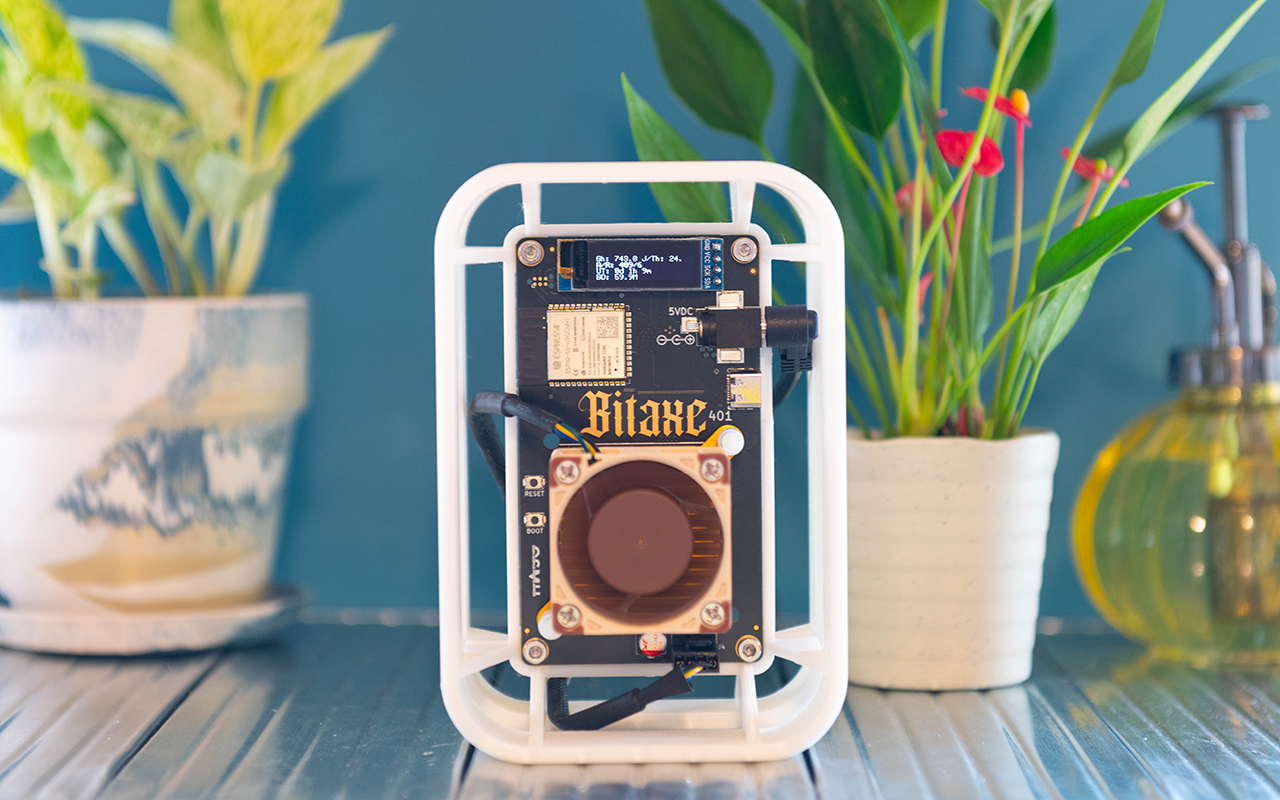 最初に作ったモデルです!
少し大きいのが難点ですが、分厚めのフレームをベースとし基盤周辺をあえて囲わない設計により、保護性と放熱を阻害しない事の両立を狙っています。
最初に作ったモデルです!
少し大きいのが難点ですが、分厚めのフレームをベースとし基盤周辺をあえて囲わない設計により、保護性と放熱を阻害しない事の両立を狙っています。
TwinAirLiftFrame
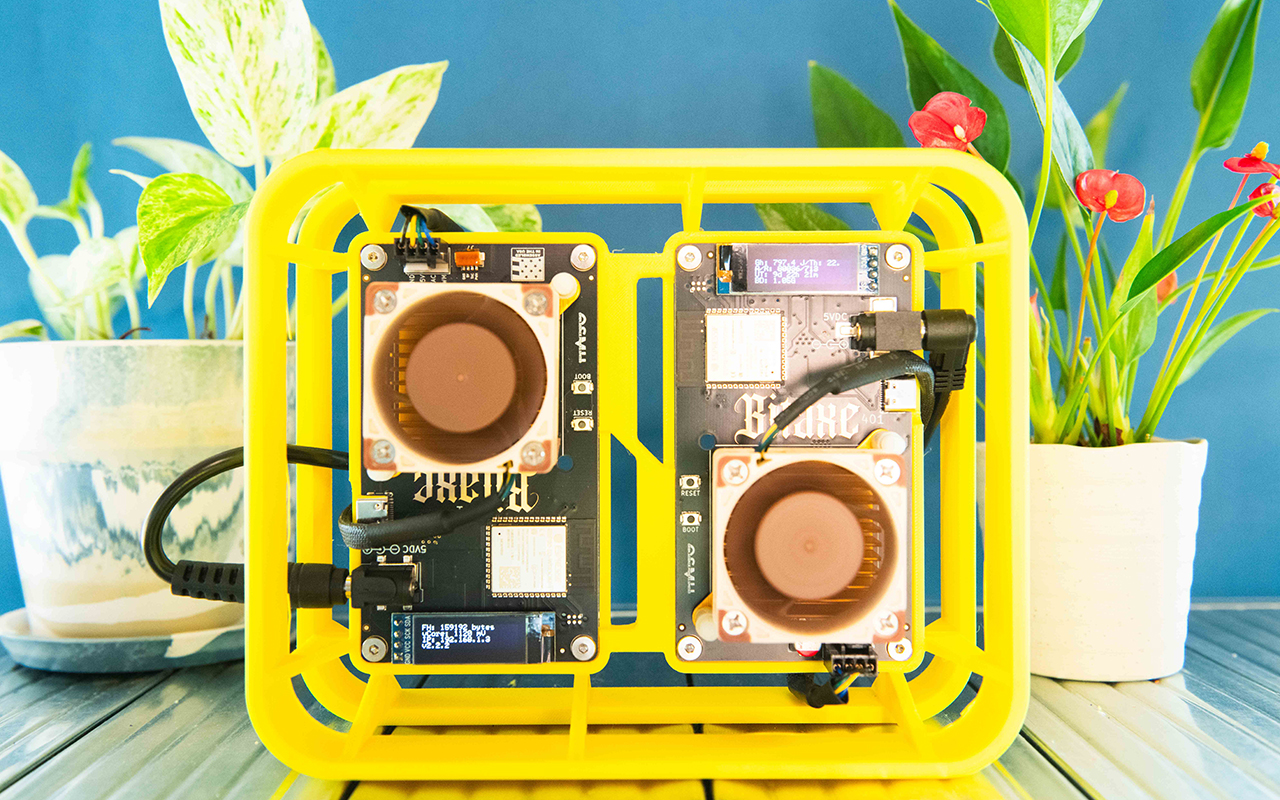 ビタキセを買い増ししたことにより、複数台をカッコよく運用したいという需要が自分の中に出てきたので、AirLiftFrameを2つくっつけたら良いのではと言うごくごく単純な発想でつくり始めたケースです。
しかし、ただ横並びにしただけでは廃熱が干渉するだけではなく、DCジャックやUSBポートへのアクセスが阻害されるという問題にすぐに気がつきました。
そこで、WebUI上でディスプレイの表示を上下反転出来ることに注目し、2台を上下逆向きに取り付ける事でそれらの問題を解決しました!
ビタキセを買い増ししたことにより、複数台をカッコよく運用したいという需要が自分の中に出てきたので、AirLiftFrameを2つくっつけたら良いのではと言うごくごく単純な発想でつくり始めたケースです。
しかし、ただ横並びにしただけでは廃熱が干渉するだけではなく、DCジャックやUSBポートへのアクセスが阻害されるという問題にすぐに気がつきました。
そこで、WebUI上でディスプレイの表示を上下反転出来ることに注目し、2台を上下逆向きに取り付ける事でそれらの問題を解決しました!
VoronoiShell
 AirLiftFrameシリーズのサイズを小型化する事から始めたプロジョクトです。
縦横の寸法の削減だけではなく、厚みを薄くつくリたいという希望がありました。
所が単純に薄くすると、持った時に発熱する背面パーツに手が触れてしまったり、落下などでぶつかった際に背面パーツが破損する懸念がありました。
そこで、(当初は付けたくはなかった)背面保護用のグリルをデザインする必要が出てきました。
初めは多角形でしたがあまりにもダサく、調べている内にVoronoi柄という有機的なパターンに行き付き即採用しました。
結果、ビタキセを取り付けると柄が見えなくなるのが勿体無いぐらい個性的でスタイリッシュなデザインに仕上がりました。
AirLiftFrameシリーズのサイズを小型化する事から始めたプロジョクトです。
縦横の寸法の削減だけではなく、厚みを薄くつくリたいという希望がありました。
所が単純に薄くすると、持った時に発熱する背面パーツに手が触れてしまったり、落下などでぶつかった際に背面パーツが破損する懸念がありました。
そこで、(当初は付けたくはなかった)背面保護用のグリルをデザインする必要が出てきました。
初めは多角形でしたがあまりにもダサく、調べている内にVoronoi柄という有機的なパターンに行き付き即採用しました。
結果、ビタキセを取り付けると柄が見えなくなるのが勿体無いぐらい個性的でスタイリッシュなデザインに仕上がりました。
いずれカスタム方法やインサートナットや増設ファンの選定方法等を紹介したいのですが、今回はNIP-23になれるという意図もあるので紹介に留めます! また、他の関連OSハードウェアプロジェクトのケースもデザインできたらと思っております!
今後ともタコ頭をよろしくお願いいたします。
-
 @ ae6ce958:d0f02c7d
2025-01-01 05:24:36
@ ae6ce958:d0f02c7d
2025-01-01 05:24:36In the world of software development, achieving failure isn’t just a buzzword; it’s the secret weapon of the strongest, most resilient teams. When you aim for greatness, you must also face your weaknesses head-on, stress-testing your limits until you break. This philosophy isn’t new—it’s the same principle that made bodybuilders like Tom Platz, with his monstrous leg days, legends. It’s not about avoiding failure; it’s about embracing it, owning it, and using it to rise stronger.
Let’s get something straight: failure is where growth happens. You don’t get bigger quads without pushing through reps to muscle failure. And you don’t build indestructible software without finding the cracks in your systems before they become catastrophic. That’s where DamageBDD steps in—it’s the squat rack for your code, the arena where your software’s strength is truly tested.
The Beauty of Controlled Destruction
Developers often shy away from failure, fearing downtime, bugs, or the dreaded post-mortem meeting. But failure isn’t the enemy—it’s the blueprint for success. DamageBDD is your spotter, encouraging you to load up the bar and attempt that new PR (personal record) for system resilience. By simulating real-world scenarios, integrating failure conditions into your tests, and verifying those outcomes on the blockchain, DamageBDD lets you train harder and smarter.
Think of your system as a muscle. It grows stronger under tension, stress, and controlled failure. With DamageBDD, you can:
-
Expose Weak Links: Identify vulnerabilities that would otherwise lie dormant until disaster strikes.
-
Build Resilience: Test every feature, every API, every assumption—so nothing escapes the grind.
-
Reap Confidence Gains: Know that when your system is live, it’s already conquered tougher challenges in the DamageBDD gym.
Why DamageBDD is the Tom Platz of BDD Tools
Like the legendary Platz, DamageBDD is unapologetically intense and methodical. It doesn’t just want you to succeed; it wants you to fail spectacularly in a controlled environment where you can learn, adapt, and grow.
Precision Execution: Every test case is a perfect rep. No shortcuts, no sloppy form. DamageBDD’s blockchain verification ensures every action is recorded immutably.
Progressive Overload: Just as you progressively increase weights in the gym, DamageBDD scales with your application’s complexity. New scenarios? Bigger challenges? Bring it on.
Discipline for Longevity: Consistency breeds success. With DamageBDD, you develop a habit of testing thoroughly, ensuring your system stays strong and reliable for years to come.
Pain Today, Strength Tomorrow
As developers, we often celebrate success stories without recognizing the failures that made them possible. But here’s the truth: failure is the crucible of champions. The pain of discovering a flaw today prevents the agony of catastrophic failure tomorrow. DamageBDD helps you confront that pain with the discipline of a bodybuilder—systematically, rigorously, and with purpose.
So, if you’re ready to take your development process to the next level, it’s time to embrace failure. It’s time to load the bar, set your sights on resilience, and let DamageBDD guide you to software greatness. Remember: strength is earned, not given.
Now go—fail, learn, and build systems that are as unbreakable as Platz’s legendary quads.
-
-
 @ b4403b24:83542d4e
2024-12-31 22:24:43
@ b4403b24:83542d4e
2024-12-31 22:24:43As we bid farewell to 2024, let’s celebrate the memories, lessons, and triumphs it brought us. May 2025 shine even brighter, bringing you joy, success, and endless opportunities.
Here’s to new beginnings, cherished moments, and a year filled with happiness. Cheers to 2025! 🥂
originally posted at https://stacker.news/items/831699
-
 @ 468f729d:5ab4fd5e
2024-12-31 22:03:31
@ 468f729d:5ab4fd5e
2024-12-31 22:03:31 -
 @ f9cf4e94:96abc355
2024-12-31 20:18:59
@ f9cf4e94:96abc355
2024-12-31 20:18:59Scuttlebutt foi iniciado em maio de 2014 por Dominic Tarr ( dominictarr ) como uma rede social alternativa off-line, primeiro para convidados, que permite aos usuários obter controle total de seus dados e privacidade. Secure Scuttlebutt (ssb) foi lançado pouco depois, o que coloca a privacidade em primeiro plano com mais recursos de criptografia.
Se você está se perguntando de onde diabos veio o nome Scuttlebutt:
Este termo do século 19 para uma fofoca vem do Scuttlebutt náutico: “um barril de água mantido no convés, com um buraco para uma xícara”. A gíria náutica vai desde o hábito dos marinheiros de se reunir pelo boato até a fofoca, semelhante à fofoca do bebedouro.

Marinheiros se reunindo em torno da rixa. ( fonte )
Dominic descobriu o termo boato em um artigo de pesquisa que leu.
Em sistemas distribuídos, fofocar é um processo de retransmissão de mensagens ponto a ponto; as mensagens são disseminadas de forma análoga ao “boca a boca”.
Secure Scuttlebutt é um banco de dados de feeds imutáveis apenas para acréscimos, otimizado para replicação eficiente para protocolos ponto a ponto. Cada usuário tem um log imutável somente para acréscimos no qual eles podem gravar. Eles gravam no log assinando mensagens com sua chave privada. Pense em um feed de usuário como seu próprio diário de bordo, como um diário de bordo (ou diário do capitão para os fãs de Star Trek), onde eles são os únicos autorizados a escrever nele, mas têm a capacidade de permitir que outros amigos ou colegas leiam ao seu diário de bordo, se assim o desejarem.
Cada mensagem possui um número de sequência e a mensagem também deve fazer referência à mensagem anterior por seu ID. O ID é um hash da mensagem e da assinatura. A estrutura de dados é semelhante à de uma lista vinculada. É essencialmente um log somente de acréscimo de JSON assinado. Cada item adicionado a um log do usuário é chamado de mensagem.
Os logs do usuário são conhecidos como feed e um usuário pode seguir os feeds de outros usuários para receber suas atualizações. Cada usuário é responsável por armazenar seu próprio feed. Quando Alice assina o feed de Bob, Bob baixa o log de feed de Alice. Bob pode verificar se o registro do feed realmente pertence a Alice verificando as assinaturas. Bob pode verificar as assinaturas usando a chave pública de Alice.

Estrutura de alto nível de um feed
Pubs são servidores de retransmissão conhecidos como “super peers”. Pubs conectam usuários usuários e atualizações de fofocas a outros usuários conectados ao Pub. Um Pub é análogo a um pub da vida real, onde as pessoas vão para se encontrar e se socializar. Para ingressar em um Pub, o usuário deve ser convidado primeiro. Um usuário pode solicitar um código de convite de um Pub; o Pub simplesmente gerará um novo código de convite, mas alguns Pubs podem exigir verificação adicional na forma de verificação de e-mail ou, com alguns Pubs, você deve pedir um código em um fórum público ou chat. Pubs também podem mapear aliases de usuário, como e-mails ou nome de usuário, para IDs de chave pública para facilitar os pares de referência.
Depois que o Pub enviar o código de convite ao usuário, o usuário resgatará o código, o que significa que o Pub seguirá o usuário, o que permite que o usuário veja as mensagens postadas por outros membros do Pub, bem como as mensagens de retransmissão do Pub pelo usuário a outros membros do Pub.
Além de retransmitir mensagens entre pares, os Pubs também podem armazenar as mensagens. Se Alice estiver offline e Bob transmitir atualizações de feed, Alice perderá a atualização. Se Alice ficar online, mas Bob estiver offline, não haverá como ela buscar o feed de Bob. Mas com um Pub, Alice pode buscar o feed no Pub mesmo se Bob estiver off-line porque o Pub está armazenando as mensagens. Pubs são úteis porque assim que um colega fica online, ele pode sincronizar com o Pub para receber os feeds de seus amigos potencialmente offline.
Um usuário pode, opcionalmente, executar seu próprio servidor Pub e abri-lo ao público ou permitir que apenas seus amigos participem, se assim o desejarem. Eles também podem ingressar em um Pub público. Aqui está uma lista de Pubs públicos em que todos podem participar . Explicaremos como ingressar em um posteriormente neste guia. Uma coisa importante a observar é que o Secure Scuttlebutt em uma rede social somente para convidados significa que você deve ser “puxado” para entrar nos círculos sociais. Se você responder às mensagens, os destinatários não serão notificados, a menos que estejam seguindo você de volta. O objetivo do SSB é criar “ilhas” isoladas de redes pares, ao contrário de uma rede pública onde qualquer pessoa pode enviar mensagens a qualquer pessoa.

Perspectivas dos participantes
Scuttlebot
O software Pub é conhecido como servidor Scuttlebutt (servidor ssb ), mas também é conhecido como “Scuttlebot” e
sbotna linha de comando. O servidor SSB adiciona comportamento de rede ao banco de dados Scuttlebutt (SSB). Estaremos usando o Scuttlebot ao longo deste tutorial.Os logs do usuário são conhecidos como feed e um usuário pode seguir os feeds de outros usuários para receber suas atualizações. Cada usuário é responsável por armazenar seu próprio feed. Quando Alice assina o feed de Bob, Bob baixa o log de feed de Alice. Bob pode verificar se o registro do feed realmente pertence a Alice verificando as assinaturas. Bob pode verificar as assinaturas usando a chave pública de Alice.

Estrutura de alto nível de um feed
Pubs são servidores de retransmissão conhecidos como “super peers”. Pubs conectam usuários usuários e atualizações de fofocas a outros usuários conectados ao Pub. Um Pub é análogo a um pub da vida real, onde as pessoas vão para se encontrar e se socializar. Para ingressar em um Pub, o usuário deve ser convidado primeiro. Um usuário pode solicitar um código de convite de um Pub; o Pub simplesmente gerará um novo código de convite, mas alguns Pubs podem exigir verificação adicional na forma de verificação de e-mail ou, com alguns Pubs, você deve pedir um código em um fórum público ou chat. Pubs também podem mapear aliases de usuário, como e-mails ou nome de usuário, para IDs de chave pública para facilitar os pares de referência.
Depois que o Pub enviar o código de convite ao usuário, o usuário resgatará o código, o que significa que o Pub seguirá o usuário, o que permite que o usuário veja as mensagens postadas por outros membros do Pub, bem como as mensagens de retransmissão do Pub pelo usuário a outros membros do Pub.
Além de retransmitir mensagens entre pares, os Pubs também podem armazenar as mensagens. Se Alice estiver offline e Bob transmitir atualizações de feed, Alice perderá a atualização. Se Alice ficar online, mas Bob estiver offline, não haverá como ela buscar o feed de Bob. Mas com um Pub, Alice pode buscar o feed no Pub mesmo se Bob estiver off-line porque o Pub está armazenando as mensagens. Pubs são úteis porque assim que um colega fica online, ele pode sincronizar com o Pub para receber os feeds de seus amigos potencialmente offline.
Um usuário pode, opcionalmente, executar seu próprio servidor Pub e abri-lo ao público ou permitir que apenas seus amigos participem, se assim o desejarem. Eles também podem ingressar em um Pub público. Aqui está uma lista de Pubs públicos em que todos podem participar . Explicaremos como ingressar em um posteriormente neste guia. Uma coisa importante a observar é que o Secure Scuttlebutt em uma rede social somente para convidados significa que você deve ser “puxado” para entrar nos círculos sociais. Se você responder às mensagens, os destinatários não serão notificados, a menos que estejam seguindo você de volta. O objetivo do SSB é criar “ilhas” isoladas de redes pares, ao contrário de uma rede pública onde qualquer pessoa pode enviar mensagens a qualquer pessoa.


Perspectivas dos participantes
Pubs - Hubs
Pubs públicos
| Pub Name | Operator | Invite Code | | ------------------------------------------------------------ | ------------------------------------------------------------ | ------------------------------------------------------------ | |
scuttle.us| @Ryan |scuttle.us:8008:@WqcuCOIpLtXFRw/9vOAQJti8avTZ9vxT9rKrPo8qG6o=.ed25519~/ZUi9Chpl0g1kuWSrmehq2EwMQeV0Pd+8xw8XhWuhLE=| | pub1.upsocial.com | @freedomrules |pub1.upsocial.com:8008:@gjlNF5Cyw3OKZxEoEpsVhT5Xv3HZutVfKBppmu42MkI=.ed25519~lMd6f4nnmBZEZSavAl4uahl+feajLUGqu8s2qdoTLi8=| | Monero Pub | @Denis |xmr-pub.net:8008:@5hTpvduvbDyMLN2IdzDKa7nx7PSem9co3RsOmZoyyCM=.ed25519~vQU+r2HUd6JxPENSinUWdfqrJLlOqXiCbzHoML9iVN4=| | FreeSocial | @Jarland |pub.freesocial.co:8008:@ofYKOy2p9wsaxV73GqgOyh6C6nRGFM5FyciQyxwBd6A=.ed25519~ye9Z808S3KPQsV0MWr1HL0/Sh8boSEwW+ZK+8x85u9w=| |ssb.vpn.net.br| @coffeverton |ssb.vpn.net.br:8008:@ze8nZPcf4sbdULvknEFOCbVZtdp7VRsB95nhNw6/2YQ=.ed25519~D0blTolH3YoTwSAkY5xhNw8jAOjgoNXL/+8ZClzr0io=| | gossip.noisebridge.info | Noisebridge Hackerspace @james.network |gossip.noisebridge.info:8008:@2NANnQVdsoqk0XPiJG2oMZqaEpTeoGrxOHJkLIqs7eY=.ed25519~JWTC6+rPYPW5b5zCion0gqjcJs35h6JKpUrQoAKWgJ4=|Pubs privados
Você precisará entrar em contato com os proprietários desses bares para receber um convite.
| Pub Name | Operator | Contact | | --------------------------------------------- | ------------------------------------------------------------ | ----------------------------------------------- | |
many.butt.nz| @dinosaur | mikey@enspiral.com | |one.butt.nz| @dinosaur | mikey@enspiral.com | |ssb.mikey.nz| @dinosaur | mikey@enspiral.com | | ssb.celehner.com | @cel | cel@celehner.com |Pubs muito grandes
Aviso: embora tecnicamente funcione usar um convite para esses pubs, você provavelmente se divertirá se o fizer devido ao seu tamanho (muitas coisas para baixar, risco para bots / spammers / idiotas)
| Pub Name | Operator | Invite Code | | --------------------------------------- | ----------------------------------------------- | ------------------------------------------------------------ | |
scuttlebutt.de| SolSoCoG |scuttlebutt.de:8008:@yeh/GKxlfhlYXSdgU7CRLxm58GC42za3tDuC4NJld/k=.ed25519~iyaCpZ0co863K9aF+b7j8BnnHfwY65dGeX6Dh2nXs3c=| |Lohn's Pub| @lohn |p.lohn.in:8018:@LohnKVll9HdLI3AndEc4zwGtfdF/J7xC7PW9B/JpI4U=.ed25519~z3m4ttJdI4InHkCtchxTu26kKqOfKk4woBb1TtPeA/s=| | Scuttle Space | @guil-dot | Visit scuttle.space | |SSB PeerNet US-East| timjrobinson |us-east.ssbpeer.net:8008:@sTO03jpVivj65BEAJMhlwtHXsWdLd9fLwyKAT1qAkc0=.ed25519~sXFc5taUA7dpGTJITZVDCRy2A9jmkVttsr107+ufInU=| | Hermies | s | net:hermies.club:8008~shs:uMYDVPuEKftL4SzpRGVyQxLdyPkOiX7njit7+qT/7IQ=:SSB+Room+PSK3TLYC2T86EHQCUHBUHASCASE18JBV24= |GUI - Interface Gráfica do Utilizador(Usuário)
Patchwork - Uma GUI SSB (Descontinuado)
Patchwork é o aplicativo de mensagens e compartilhamento descentralizado construído em cima do SSB . O protocolo scuttlebutt em si não mantém um conjunto de feeds nos quais um usuário está interessado, então um cliente é necessário para manter uma lista de feeds de pares em que seu respectivo usuário está interessado e seguindo.

Fonte: scuttlebutt.nz
Quando você instala e executa o Patchwork, você só pode ver e se comunicar com seus pares em sua rede local. Para acessar fora de sua LAN, você precisa se conectar a um Pub. Um pub é apenas para convidados e eles retransmitem mensagens entre você e seus pares fora de sua LAN e entre outros Pubs.
Lembre-se de que você precisa seguir alguém para receber mensagens dessa pessoa. Isso reduz o envio de mensagens de spam para os usuários. Os usuários só veem as respostas das pessoas que seguem. Os dados são sincronizados no disco para funcionar offline, mas podem ser sincronizados diretamente com os pares na sua LAN por wi-fi ou bluetooth.
Patchbay - Uma GUI Alternativa
Patchbay é um cliente de fofoca projetado para ser fácil de modificar e estender. Ele usa o mesmo banco de dados que Patchwork e Patchfoo , então você pode facilmente dar uma volta com sua identidade existente.

Planetary - GUI para IOS

Planetary é um app com pubs pré-carregados para facilitar integração.
Manyverse - GUI para Android

Manyverse é um aplicativo de rede social com recursos que você esperaria: posts, curtidas, perfis, mensagens privadas, etc. Mas não está sendo executado na nuvem de propriedade de uma empresa, em vez disso, as postagens de seus amigos e todos os seus dados sociais vivem inteiramente em seu telefone .
Fontes
-
https://scuttlebot.io/
-
https://decentralized-id.com/decentralized-web/scuttlebot/#plugins
-
https://medium.com/@miguelmota/getting-started-with-secure-scuttlebut-e6b7d4c5ecfd
-
Secure Scuttlebutt : um protocolo de banco de dados global.
-
-
 @ d873a9c8:269f1419
2024-12-31 20:08:17
@ d873a9c8:269f1419
2024-12-31 20:08:17This crossword contains a bitcoin wallet within, take the wallet for yourself.
If this Wallet still has bitcoin, the crossword has not been completed.
 ## Across:
## Across:- (5 Across) A piece of furniture used for work or study (13).
- (7 Across) At the back of or following someone or something (23).
- (10 Across) A non-professional or novice (16).
- (13 Across) More than what is needed or allowed (8).
- (14 Across) A choice or alternative path (4).
- (16 Across) A support or position to hold or display something (2).
- (18 Across) A skilled worker or the fundamental workings of a system (7).
- (19 Across) A married woman, often part of a partnership (17).
- (20 Across) Widely liked or accepted by many (20).
- (21 Across) A competition to achieve something first (9).
- (22 Across) To confess or allow access (6).
- (24 Across) A member of the species Homo sapiens (22).
Down:
- (1 Down) A bird often associated with golden eggs in stories (18).
- (2 Down) A location identifier or a formal speech (12).
- (3 Down) Something of enormous size or importance (14).
- (4 Down) A representative or someone acting on behalf of another (21).
- (6 Down) The beginning or earliest part of something (1).
- (8 Down) A mistake or incorrect action (24).
- (9 Down) A term for something outdated or ancient (5).
- (11 Down) A grassy field often teeming with life (15).
- (12 Down) The art of arranging sounds harmoniously (19).
- (15 Down) Unmotivated or unwilling to act (10).
- (17 Down) A powerful effect or collision (3).
- (23 Down) Lacking intelligence or unable to speak (11).
The number after each definition is used in the construction of the prize seed phrase.
Luka
-
 @ 0403c86a:66d3a378
2024-12-31 19:22:15
@ 0403c86a:66d3a378
2024-12-31 19:22:15As we kick off the new year and gear up for GSC's Anniversary Celebration on January 11, we’re thrilled to unveil our anticipated list of 11 oN 11 – the 11 athletes who dominated their sports, broke records, and inspired the world in the past year.
These icons didn’t just shine on the field, court, or track – they redefined excellence and left an indelible mark on the global sports landscape.
Our nominees will be revealed daily, follow the countdown to greatness #11oN11
These athletes didn’t just win games – they won hearts, inspired nations, and moved the needle for their respective sports.
✨ Join the conversation and tell us your picks for the most defining athletes of last year! Who inspired YOU the most? Let’s celebrate excellence together as we count down to GSC’s Anniversary on January 11!!!
Global Sports Central 🌐 #11oN11
-
 @ 3f770d65:7a745b24
2024-12-31 17:03:46
@ 3f770d65:7a745b24
2024-12-31 17:03:46Here are my predictions for Nostr in 2025:
Decentralization: The outbox and inbox communication models, sometimes referred to as the Gossip model, will become the standard across the ecosystem. By the end of 2025, all major clients will support these models, providing seamless communication and enhanced decentralization. Clients that do not adopt outbox/inbox by then will be regarded as outdated or legacy systems.
Privacy Standards: Major clients such as Damus and Primal will move away from NIP-04 DMs, adopting more secure protocol possibilities like NIP-17 or NIP-104. These upgrades will ensure enhanced encryption and metadata protection. Additionally, NIP-104 MLS tools will drive the development of new clients and features, providing users with unprecedented control over the privacy of their communications.
Interoperability: Nostr's ecosystem will become even more interconnected. Platforms like the Olas image-sharing service will expand into prominent clients such as Primal, Damus, Coracle, and Snort, alongside existing integrations with Amethyst, Nostur, and Nostrudel. Similarly, audio and video tools like Nostr Nests and Zap.stream will gain seamless integration into major clients, enabling easy participation in live events across the ecosystem.
Adoption and Migration: Inspired by early pioneers like Fountain and Orange Pill App, more platforms will adopt Nostr for authentication, login, and social systems. In 2025, a significant migration from a high-profile application platform with hundreds of thousands of users will transpire, doubling Nostr’s daily activity and establishing it as a cornerstone of decentralized technologies.
-
 @ e97aaffa:2ebd765d
2024-12-31 16:47:12
@ e97aaffa:2ebd765d
2024-12-31 16:47:12Último dia do ano, momento para tirar o pó da bola de cristal, para fazer reflexões, previsões e desejos para o próximo ano e seguintes.
Ano após ano, o Bitcoin evoluiu, foi ultrapassando etapas, tornou-se cada vez mais mainstream. Está cada vez mais difícil fazer previsões sobre o Bitcoin, já faltam poucas barreiras a serem ultrapassadas e as que faltam são altamente complexas ou tem um impacto profundo no sistema financeiro ou na sociedade. Estas alterações profundas tem que ser realizadas lentamente, porque uma alteração rápida poderia resultar em consequências terríveis, poderia provocar um retrocesso.
Código do Bitcoin
No final de 2025, possivelmente vamos ter um fork, as discussões sobre os covenants já estão avançadas, vão acelerar ainda mais. Já existe um consenso relativamente alto, a favor dos covenants, só falta decidir que modelo será escolhido. Penso que até ao final do ano será tudo decidido.
Depois dos covenants, o próximo foco será para a criptografia post-quantum, que será o maior desafio que o Bitcoin enfrenta. Criar uma criptografia segura e que não coloque a descentralização em causa.
Espero muito de Ark, possivelmente a inovação do ano, gostaria de ver o Nostr a furar a bolha bitcoinheira e que o Cashu tivesse mais reconhecimento pelos bitcoiners.
Espero que surjam avanços significativos no BitVM2 e BitVMX.
Não sei o que esperar das layer 2 de Bitcoin, foram a maior desilusão de 2024. Surgiram com muita força, mas pouca coisa saiu do papel, foi uma mão cheia de nada. Uma parte dos projetos caiu na tentação da shitcoinagem, na criação de tokens, que tem um único objetivo, enriquecer os devs e os VCs.
Se querem ser levados a sério, têm que ser sérios.
“À mulher de César não basta ser honesta, deve parecer honesta”
Se querem ter o apoio dos bitcoiners, sigam o ethos do Bitcoin.
Neste ponto a atitude do pessoal da Ark é exemplar, em vez de andar a chorar no Twitter para mudar o código do Bitcoin, eles colocaram as mãos na massa e criaram o protocolo. É claro que agora está meio “coxo”, funciona com uma multisig ou com os covenants na Liquid. Mas eles estão a criar um produto, vão demonstrar ao mercado que o produto é bom e útil. Com a adoção, a comunidade vai perceber que o Ark necessita dos covenants para melhorar a interoperabilidade e a soberania.
É este o pensamento certo, que deveria ser seguido pelos restantes e futuros projetos. É seguir aquele pensamento do J.F. Kennedy:
“Não perguntem o que é que o vosso país pode fazer por vocês, perguntem o que é que vocês podem fazer pelo vosso país”
Ou seja, não fiquem à espera que o bitcoin mude, criem primeiro as inovações/tecnologia, ganhem adoção e depois demonstrem que a alteração do código camada base pode melhorar ainda mais o vosso projeto. A necessidade é que vai levar a atualização do código.
Reservas Estratégicas de Bitcoin
Bancos centrais
Com a eleição de Trump, emergiu a ideia de uma Reserva Estratégia de Bitcoin, tornou este conceito mainstream. Foi um pivot, a partir desse momento, foram enumerados os políticos de todo o mundo a falar sobre o assunto.
A Senadora Cynthia Lummis foi mais além e propôs um programa para adicionar 200 mil bitcoins à reserva ao ano, até 1 milhão de Bitcoin. Só que isto está a criar uma enorme expectativa na comunidade, só que pode resultar numa enorme desilusão. Porque no primeiro ano, o Trump em vez de comprar os 200 mil, pode apenas adicionar na reserva, os 198 mil que o Estado já tem em sua posse. Se isto acontecer, possivelmente vai resultar numa forte queda a curto prazo. Na minha opinião os bancos centrais deveriam seguir o exemplo de El Salvador, fazer um DCA diário.
Mais que comprar bitcoin, para mim, o mais importante é a criação da Reserva, é colocar o Bitcoin ao mesmo nível do ouro, o impacto para o resto do mundo será tremendo, a teoria dos jogos na sua plenitude. Muitos outros bancos centrais vão ter que comprar, para não ficarem atrás, além disso, vai transmitir uma mensagem à generalidade da população, que o Bitcoin é “afinal é algo seguro, com valor”.
Mas não foi Trump que iniciou esta teoria dos jogos, mas sim foi a primeira vítima dela. É o próprio Trump que o admite, que os EUA necessitam da reserva para não ficar atrás da China. Além disso, desde que os EUA utilizaram o dólar como uma arma, com sanção contra a Rússia, surgiram boatos de que a Rússia estaria a utilizar o Bitcoin para transações internacionais. Que foram confirmados recentemente, pelo próprio governo russo. Também há poucos dias, ainda antes deste reconhecimento público, Putin elogiou o Bitcoin, ao reconhecer que “Ninguém pode proibir o bitcoin”, defendendo como uma alternativa ao dólar. A narrativa está a mudar.
Já existem alguns países com Bitcoin, mas apenas dois o fizeram conscientemente (El Salvador e Butão), os restantes têm devido a apreensões. Hoje são poucos, mas 2025 será o início de uma corrida pelos bancos centrais. Esta corrida era algo previsível, o que eu não esperava é que acontecesse tão rápido.

Empresas
A criação de reservas estratégicas não vai ficar apenas pelos bancos centrais, também vai acelerar fortemente nas empresas em 2025.

Mas as empresas não vão seguir a estratégia do Saylor, vão comprar bitcoin sem alavancagem, utilizando apenas os tesouros das empresas, como uma proteção contra a inflação. Eu não sou grande admirador do Saylor, prefiro muito mais, uma estratégia conservadora, sem qualquer alavancagem. Penso que as empresas vão seguir a sugestão da BlackRock, que aconselha um alocações de 1% a 3%.
Penso que 2025, ainda não será o ano da entrada das 6 magníficas (excepto Tesla), será sobretudo empresas de pequena e média dimensão. As magníficas ainda tem uma cota muito elevada de shareholders com alguma idade, bastante conservadores, que têm dificuldade em compreender o Bitcoin, foi o que aconteceu recentemente com a Microsoft.
Também ainda não será em 2025, talvez 2026, a inclusão nativamente de wallet Bitcoin nos sistema da Apple Pay e da Google Pay. Seria um passo gigante para a adoção a nível mundial.
ETFs
Os ETFs para mim são uma incógnita, tenho demasiadas dúvidas, como será 2025. Este ano os inflows foram superiores a 500 mil bitcoins, o IBIT foi o lançamento de ETF mais bem sucedido da história. O sucesso dos ETFs, deve-se a 2 situações que nunca mais se vão repetir. O mercado esteve 10 anos à espera pela aprovação dos ETFs, a procura estava reprimida, isso foi bem notório nos primeiros meses, os inflows foram brutais.
Também se beneficiou por ser um mercado novo, não existia orderbook de vendas, não existia um mercado interno, praticamente era só inflows. Agora o mercado já estabilizou, a maioria das transações já são entre clientes dos próprios ETFs. Agora só uma pequena percentagem do volume das transações diárias vai resultar em inflows ou outflows.
Estes dois fenómenos nunca mais se vão repetir, eu não acredito que o número de inflows em BTC supere os número de 2024, em dólares vai superar, mas em btc não acredito que vá superar.
Mas em 2025 vão surgir uma infindável quantidade de novos produtos, derivativos, novos ETFs de cestos com outras criptos ou cestos com ativos tradicionais. O bitcoin será adicionado em produtos financeiros já existentes no mercado, as pessoas vão passar a deter bitcoin, sem o saberem.
Com o fim da operação ChokePoint 2.0, vai surgir uma nova onda de adoção e de produtos financeiros. Possivelmente vamos ver bancos tradicionais a disponibilizar produtos ou serviços de custódia aos seus clientes.
Eu adoraria ver o crescimento da adoção do bitcoin como moeda, só que a regulamentação não vai ajudar nesse processo.
Preço
Eu acredito que o topo deste ciclo será alcançado no primeiro semestre, posteriormente haverá uma correção. Mas desta vez, eu acredito que a correção será muito menor que as anteriores, inferior a 50%, esta é a minha expectativa. Espero estar certo.
Stablecoins de dólar
Agora saindo um pouco do universo do Bitcoin, acho importante destacar as stablecoins.
No último ciclo, eu tenho dividido o tempo, entre continuar a estudar o Bitcoin e estudar o sistema financeiro, as suas dinâmicas e o comportamento humano. Isto tem sido o meu foco de reflexão, imaginar a transformação que o mundo vai sofrer devido ao padrão Bitcoin. É uma ilusão acreditar que a transição de um padrão FIAT para um padrão Bitcoin vai ser rápida, vai existir um processo transitório que pode demorar décadas.
Com a re-entrada de Trump na Casa Branca, prometendo uma política altamente protecionista, vai provocar uma forte valorização do dólar, consequentemente as restantes moedas do mundo vão derreter. Provocando uma inflação generalizada, gerando uma corrida às stablecoins de dólar nos países com moedas mais fracas. Trump vai ter uma política altamente expansionista, vai exportar dólares para todo o mundo, para financiar a sua própria dívida. A desigualdade entre os pobres e ricos irá crescer fortemente, aumentando a possibilidade de conflitos e revoltas.
“Casa onde não há pão, todos ralham e ninguém tem razão”
Será mais lenha, para alimentar a fogueira, vai gravar os conflitos geopolíticos já existentes, ficando as sociedade ainda mais polarizadas.
Eu acredito que 2025, vai haver um forte crescimento na adoção das stablecoins de dólares, esse forte crescimento vai agravar o problema sistémico que são as stablecoins. Vai ser o início do fim das stablecoins, pelo menos, como nós conhecemos hoje em dia.
Problema sistémico
O sistema FIAT não nasceu de um dia para outro, foi algo que foi construído organicamente, ou seja, foi evoluindo ao longo dos anos, sempre que havia um problema/crise, eram criadas novas regras ou novas instituições para minimizar os problemas. Nestes quase 100 anos, desde os acordos de Bretton Woods, a evolução foram tantas, tornaram o sistema financeiro altamente complexo, burocrático e nada eficiente.
Na prática é um castelo de cartas construído sobre outro castelo de cartas e que por sua vez, foi construído sobre outro castelo de cartas.
As stablecoins são um problema sistémico, devido às suas reservas em dólares e o sistema financeiro não está preparado para manter isso seguro. Com o crescimento das reservas ao longo dos anos, foi se agravando o problema.
No início a Tether colocava as reservas em bancos comerciais, mas com o crescimento dos dólares sob gestão, criou um problema nos bancos comerciais, devido à reserva fracionária. Essas enormes reservas da Tether estavam a colocar em risco a própria estabilidade dos bancos.
A Tether acabou por mudar de estratégia, optou por outros ativos, preferencialmente por títulos do tesouro/obrigações dos EUA. Só que a Tether continua a crescer e não dá sinais de abrandamento, pelo contrário.
Até o próprio mundo cripto, menosprezava a gravidade do problema da Tether/stablecoins para o resto do sistema financeiro, porque o marketcap do cripto ainda é muito pequeno. É verdade que ainda é pequeno, mas a Tether não o é, está no top 20 dos maiores detentores de títulos do tesouros dos EUA e está ao nível dos maiores bancos centrais do mundo. Devido ao seu tamanho, está a preocupar os responsáveis/autoridades/reguladores dos EUA, pode colocar em causa a estabilidade do sistema financeiro global, que está assente nessas obrigações.
Os títulos do tesouro dos EUA são o colateral mais utilizado no mundo, tanto por bancos centrais, como por empresas, é a charneira da estabilidade do sistema financeiro. Os títulos do tesouro são um assunto muito sensível. Na recente crise no Japão, do carry trade, o Banco Central do Japão tentou minimizar a desvalorização do iene através da venda de títulos dos EUA. Esta operação, obrigou a uma viagem de emergência, da Secretaria do Tesouro dos EUA, Janet Yellen ao Japão, onde disponibilizou liquidez para parar a venda de títulos por parte do Banco Central do Japão. Essa forte venda estava desestabilizando o mercado.
Os principais detentores de títulos do tesouros são institucionais, bancos centrais, bancos comerciais, fundo de investimento e gestoras, tudo administrado por gestores altamente qualificados, racionais e que conhecem a complexidade do mercado de obrigações.
O mundo cripto é seu oposto, é naife com muita irracionalidade e uma forte pitada de loucura, na sua maioria nem faz a mínima ideia como funciona o sistema financeiro. Essa irracionalidade pode levar a uma “corrida bancária”, como aconteceu com o UST da Luna, que em poucas horas colapsou o projeto. Em termos de escala, a Luna ainda era muito pequena, por isso, o problema ficou circunscrito ao mundo cripto e a empresas ligadas diretamente ao cripto.
Só que a Tether é muito diferente, caso exista algum FUD, que obrigue a Tether a desfazer-se de vários biliões ou dezenas de biliões de dólares em títulos num curto espaço de tempo, poderia provocar consequências terríveis em todo o sistema financeiro. A Tether é grande demais, é já um problema sistémico, que vai agravar-se com o crescimento em 2025.
Não tenham dúvidas, se existir algum problema, o Tesouro dos EUA vai impedir a venda dos títulos que a Tether tem em sua posse, para salvar o sistema financeiro. O problema é, o que vai fazer a Tether, se ficar sem acesso às venda das reservas, como fará o redeem dos dólares?
Como o crescimento do Tether é inevitável, o Tesouro e o FED estão com um grande problema em mãos, o que fazer com o Tether?
Mas o problema é que o atual sistema financeiro é como um curto cobertor: Quanto tapas a cabeça, destapas os pés; Ou quando tapas os pés, destapas a cabeça. Ou seja, para resolver o problema da guarda reservas da Tether, vai criar novos problemas, em outros locais do sistema financeiro e assim sucessivamente.
Conta mestre
Uma possível solução seria dar uma conta mestre à Tether, dando o acesso direto a uma conta no FED, semelhante à que todos os bancos comerciais têm. Com isto, a Tether deixaria de necessitar os títulos do tesouro, depositando o dinheiro diretamente no banco central. Só que isto iria criar dois novos problemas, com o Custodia Bank e com o restante sistema bancário.
O Custodia Bank luta há vários anos contra o FED, nos tribunais pelo direito a ter licença bancária para um banco com full-reserves. O FED recusou sempre esse direito, com a justificativa que esse banco, colocaria em risco toda a estabilidade do sistema bancário existente, ou seja, todos os outros bancos poderiam colapsar. Perante a existência em simultâneo de bancos com reserva fracionária e com full-reserves, as pessoas e empresas iriam optar pelo mais seguro. Isso iria provocar uma corrida bancária, levando ao colapso de todos os bancos com reserva fracionária, porque no Custodia Bank, os fundos dos clientes estão 100% garantidos, para qualquer valor. Deixaria de ser necessário limites de fundos de Garantia de Depósitos.
Eu concordo com o FED nesse ponto, que os bancos com full-reserves são uma ameaça a existência dos restantes bancos. O que eu discordo do FED, é a origem do problema, o problema não está nos bancos full-reserves, mas sim nos que têm reserva fracionária.
O FED ao conceder uma conta mestre ao Tether, abre um precedente, o Custodia Bank irá o aproveitar, reclamando pela igualdade de direitos nos tribunais e desta vez, possivelmente ganhará a sua licença.
Ainda há um segundo problema, com os restantes bancos comerciais. A Tether passaria a ter direitos similares aos bancos comerciais, mas os deveres seriam muito diferentes. Isto levaria os bancos comerciais aos tribunais para exigir igualdade de tratamento, é uma concorrência desleal. Isto é o bom dos tribunais dos EUA, são independentes e funcionam, mesmo contra o estado. Os bancos comerciais têm custos exorbitantes devido às políticas de compliance, como o KYC e AML. Como o governo não vai querer aliviar as regras, logo seria a Tether, a ser obrigada a fazer o compliance dos seus clientes.
A obrigação do KYC para ter stablecoins iriam provocar um terramoto no mundo cripto.
Assim, é pouco provável que seja a solução para a Tether.
FED
Só resta uma hipótese, ser o próprio FED a controlar e a gerir diretamente as stablecoins de dólar, nacionalizado ou absorvendo as existentes. Seria uma espécie de CBDC. Isto iria provocar um novo problema, um problema diplomático, porque as stablecoins estão a colocar em causa a soberania monetária dos outros países. Atualmente as stablecoins estão um pouco protegidas porque vivem num limbo jurídico, mas a partir do momento que estas são controladas pelo governo americano, tudo muda. Os países vão exigir às autoridades americanas medidas que limitem o uso nos seus respectivos países.
Não existe uma solução boa, o sistema FIAT é um castelo de cartas, qualquer carta que se mova, vai provocar um desmoronamento noutro local. As autoridades não poderão adiar mais o problema, terão que o resolver de vez, senão, qualquer dia será tarde demais. Se houver algum problema, vão colocar a responsabilidade no cripto e no Bitcoin. Mas a verdade, a culpa é inteiramente dos políticos, da sua incompetência em resolver os problemas a tempo.
Será algo para acompanhar futuramente, mas só para 2026, talvez…
É curioso, há uns anos pensava-se que o Bitcoin seria a maior ameaça ao sistema ao FIAT, mas afinal, a maior ameaça aos sistema FIAT é o próprio FIAT(stablecoins). A ironia do destino.
Isto é como uma corrida, o Bitcoin é aquele atleta que corre ao seu ritmo, umas vezes mais rápido, outras vezes mais lento, mas nunca pára. O FIAT é o atleta que dá tudo desde da partida, corre sempre em velocidade máxima. Só que a vida e o sistema financeiro não é uma prova de 100 metros, mas sim uma maratona.
Europa
2025 será um ano desafiante para todos europeus, sobretudo devido à entrada em vigor da regulamentação (MiCA). Vão começar a sentir na pele a regulamentação, vão agravar-se os problemas com os compliance, problemas para comprovar a origem de fundos e outras burocracias. Vai ser lindo.
O Travel Route passa a ser obrigatório, os europeus serão obrigados a fazer o KYC nas transações. A Travel Route é uma suposta lei para criar mais transparência, mas prática, é uma lei de controle, de monitorização e para limitar as liberdades individuais dos cidadãos.
O MiCA também está a colocar problemas nas stablecoins de Euro, a Tether para já preferiu ficar de fora da europa. O mais ridículo é que as novas regras obrigam os emissores a colocar 30% das reservas em bancos comerciais. Os burocratas europeus não compreendem que isto coloca em risco a estabilidade e a solvência dos próprios bancos, ficam propensos a corridas bancárias.
O MiCA vai obrigar a todas as exchanges a estar registadas em solo europeu, ficando vulnerável ao temperamento dos burocratas. Ainda não vai ser em 2025, mas a UE vai impor políticas de controle de capitais, é inevitável, as exchanges serão obrigadas a usar em exclusividade stablecoins de euro, as restantes stablecoins serão deslistadas.
Todas estas novas regras do MiCA, são extremamente restritas, não é para garantir mais segurança aos cidadãos europeus, mas sim para garantir mais controle sobre a população. A UE está cada vez mais perto da autocracia, do que da democracia. A minha única esperança no horizonte, é que o sucesso das políticas cripto nos EUA, vai obrigar a UE a recuar e a aligeirar as regras, a teoria dos jogos é implacável. Mas esse recuo, nunca acontecerá em 2025, vai ser um longo período conturbado.
Recessão
Os mercados estão todos em máximos históricos, isto não é sustentável por muito tempo, suspeito que no final de 2025 vai acontecer alguma correção nos mercados. A queda só não será maior, porque os bancos centrais vão imprimir dinheiro, muito dinheiro, como se não houvesse amanhã. Vão voltar a resolver os problemas com a injeção de liquidez na economia, é empurrar os problemas com a barriga, em de os resolver. Outra vez o efeito Cantillon.
Será um ano muito desafiante a nível político, onde o papel dos políticos será fundamental. A crise política na França e na Alemanha, coloca a UE órfã, sem um comandante ao leme do navio. 2025 estará condicionado pelas eleições na Alemanha, sobretudo no resultado do AfD, que podem colocar em causa a propriedade UE e o euro.
Possivelmente, só o fim da guerra poderia minimizar a crise, algo que é muito pouco provável acontecer.
Em Portugal, a economia parece que está mais ou menos equilibrada, mas começam a aparecer alguns sinais preocupantes. Os jogos de sorte e azar estão em máximos históricos, batendo o recorde de 2014, época da grande crise, não é um bom sinal, possivelmente já existe algum desespero no ar.
A Alemanha é o motor da Europa, quanto espirra, Portugal constipa-se. Além do problema da Alemanha, a Espanha também está à beira de uma crise, são os países que mais influenciam a economia portuguesa.
Se existir uma recessão mundial, terá um forte impacto no turismo, que é hoje em dia o principal motor de Portugal.
Brasil
Brasil é algo para acompanhar em 2025, sobretudo a nível macro e a nível político. Existe uma possibilidade de uma profunda crise no Brasil, sobretudo na sua moeda. O banco central já anda a queimar as reservas para minimizar a desvalorização do Real.

Sem mudanças profundas nas políticas fiscais, as reservas vão se esgotar. As políticas de controle de capitais são um cenário plausível, será interesse de acompanhar, como o governo irá proceder perante a existência do Bitcoin e stablecoins. No Brasil existe um forte adoção, será um bom case study, certamente irá repetir-se em outros países num futuro próximo.
Os próximos tempos não serão fáceis para os brasileiros, especialmente para os que não têm Bitcoin.
Blockchain
Em 2025, possivelmente vamos ver os primeiros passos da BlackRock para criar a primeira bolsa de valores, exclusivamente em blockchain. Eu acredito que a BlackRock vai criar uma própria blockchain, toda controlada por si, onde estarão os RWAs, para fazer concorrência às tradicionais bolsas de valores. Será algo interessante de acompanhar.
Estas são as minhas previsões, eu escrevi isto muito em cima do joelho, certamente esqueci-me de algumas coisas, se for importante acrescentarei nos comentários. A maioria das previsões só acontecerá após 2025, mas fica aqui a minha opinião.
Isto é apenas a minha opinião, Don’t Trust, Verify!
-
 @ 933f9d20:996b56ae
2024-12-31 16:41:41
@ 933f9d20:996b56ae
2024-12-31 16:41:41คำถามจากความอยากตระหนักรู้ในตนเอง
จู่ๆตัวเราก็นึกอยากจะเข้าใจตนเองมากขึ้น บนโลกนี้มีศาสตร์แห่งบุคลิกภาพมากมายที่ให้เราได้ศึกษาและทำแบบทดสอบ แต่จะดีกว่ามั้ยที่เรารู้อย่างคร่าวๆเกี่ยวกับศาสตร์ที่อยู่เบื้องหลังแบบทดสอบเหล่านั้น
Enneargram คืออะไร?

Enneargram ความหมายคือ 'นพลักษณ์' เป็นศาสตร์ที่มีจุดประสงค์ไว้เพื่อการเข้าใจตนเองและเข้าใจคนอื่นหรือเพื่อให้เราอยู่ร่วมกันในสังคมได้อย่างสงบสุข(และหลีกเลี่ยงการแทงใจดำคนอื่นโดยที่ตัวเองไม่ได้ตั้งใจได้!) โดยในแต่ละประเภทจะเรียกกันว่า 'ลักษณ์'
และในบทความนี้ผมจะพูดถึงความรู้เกี่ยวกับ Enneargram ในภาพรวมกันครับ!
นพลักษณ์ (Enneargram)

หากคุณบ้าบอคิดจะข้าม(เผลอๆข้ามไปแล้วมั้ง..)จากหัวข้อนี้ไปดื้อๆคุณก็จะอ่านไม่รู้เรื่องเลยด้วยซ้ำหากคุณไม่รู้ว่านพลักษณ์คืออะไร
'นพลักษณ์' โดยคำว่า 'นพ' ซึ่งแปลว่า 9(เก้า) และคำว่า 'ลักษณ์' ก็คือความหมายว่าเป็น ลักษณะ
ซึ่งก็จะแปลได้เป็น ลักษณะทั้ง 9 นั่นเองครับ!
แล้วก็จะมีการจัดกลุ่มลักษณ์โดยแบ่งเป็น 3 กลุ่มซึ่งก็จะถูกเรียกว่า
ปัญญา 3 ฐาน (The 3 centers) อันได้แก่
ฐานการกระทำหรือฐานกาย แทนเป็น (A) ฐานความรู้สึกหรือฐานใจ แทนเป็น (F) ฐานความคิดหรือฐานหัว แทนเป็น (T)

พอรู้ปัญญา 3 ฐานแล้ว...เรามาดูลักษณะในแต่ละลักษณ์กันเลยดีกว่า!
The perfectionist (ลักษณ์ 1 A) เป็นลักษณ์ที่รักความสมบูรณ์แบบอย่างสุดซึ้ง มีระเบียบวินัยในชีวิตโคตรๆ เป็นคนเนี้ยบของทุกอย่างรอบตัวจะถูกจัดอย่างเป็นระเบียบ หากมีเศษขี้เล็บใครอยู่บนโต๊ะเขาก็จะรู้เลยว่ามันไม่ใช่ของเขา ยึดมั่นในคุณธรรมจริยธรรมอันดี และชอบความแน่นอน
The giver (ลักษณ์ 2 F) เป็นผู้ชอบให้ชอบเสียสละสิ่งที่ตนมี โดยที่ตนเองก็หวังลึกๆว่าจะได้สิ่งตอบแทนกลับมาด้วย มีนิสัยที่ร่าเริงแจ่มใสใจกว้างและเป็นมิตรต่อทุกๆคน
The preformer (ลักษณ์ 3 F) รัก(บ้า)การแข่งขันและชอบการเอาชนะเป็นที่สุด เกลียดการพ่ายแพ้และต้องการเป็นภาพลักษณ์ตามที่ตนเองต้องการ
The romantic (ลักษณ์ 4 F) พื้นฐานคืออารมณ์เศร้าหมองและมีความอิจฉาลึกๆ ไม่อยากเหมือนใครในสิ่งที่ตนเองสนใจและความเป็นศิลปินในตัวสูง
The observer (ลักษณ์ 5 T) คลั่งการหาความรู้(หรือจะฝึกฝนก็ตาม)มาใส่หัวแบบจะเอาให้เทพสุดๆรู้มากสุดๆในเรื่องนั้นๆไปเลย มักแยกอารมณ์ออกจากกระบวนการคิดเชิงเหตุผล ต้องการพื้นที่ส่วนตัวสูงและเป็นลักษณ์ที่เก็บตัวสูง
The guardian (ลักษณ์ 6 T) เป็นลักษณ์ที่มีความกลัวเป็นพื้นฐานของอารมณ์ ชอบวิเคราะห์และวางแผนอนาคตแถมขี้สงสัยด้วย ไม่ชอบความไม่มั่นคงและความไม่ปลอดภัยหวาดระแวงตลอด(โดยเฉพาะอนาคต) ชอบอยู่ใต้การบังคับบัญชามากกว่า
The optimist (ลักษณ์ 7 T) เสพสุขรักการจญภัยและชอบเติมเต็มชีวิตด้วยความแปลกใหม่ตลอดเวลา มีความตะกละเป็นสันดานและไม่ชอบให้ใครมาวาดกรอบให้ตัวเอง
The leader (ลักษณ์ 8 A) มีความโกรธเป็นพื้นฐานของอารมณ์และมีความเป็นผู้นำโดยธรรมชาติ ฝักใฝ่หรือสนใจในอำนาจและการควบคุม สามารถใช้ความโกรธเชื่อมโยงในสิ่งใดก็ได้ตามใจอยาก(และมันโคตรทรงพลังนะจะบอกให้!) ชอบปฏิเสธความอ่อนแอ(ซึ่งเป็นข้อเสีย)และชอบทำสุดใส่สุด(โดยเฉพาะทางกายภาพ เช่น จะกินก๋วยเตี๋ยวเผ็ดๆก็เทพริกซะหมดแก้วบรรจุซะ)
The peacemaker (ลักษณ์ 9 A) นักการทูตตัวจริงเสียงจริง มักเป็นลักษณ์ที่เมื่อเกิดความขัดแย้งระหว่างกลุ่ม ลักษณ์นี้นี่แหละคือตัวปิดความขัดแย้งที่แท้ทรู แต่หากไม่เกิดผลลักษณ์นี้ก็จะหนีออกมาจากความขัดแย้งแทนซะงั้น เป็นลักษณ์ที่รักสงบและเกลียดความขัดแย้งนั่นเอง
Wing (สภาวะปีก)

เป็นสภาวะที่เกิดขึ้นโดยที่ลักษณ์หลักของเราได้รับผลกระทบจากลักษณ์รอบๆ เช่น คนที่มีลักษณ์ 8 ก็จะมีปีกเป็น ลักษณ์ 7 และ ลักษณ์9 ซึ่งจะมีเพียงด้านที่ถนัดที่สุดเท่านั้น หากใช้ลักษณ์ 7 บ่อยที่สุด เราก็จะเขียนได้เป็น
8w7(8 คือลักษณ์หลักของเรา และ 7 ก็คือลักษณ์รองลงมาที่อยู่ข้างๆนั่นเอง โดยมีตัว 'w' เป็นสัญลักษณ์คั่นกลางไว้) และเราจะต้องอ่านว่าลักษณ์8ปีก7ซึ่งเราก็จะได้อิทธิพลลักษณะจากลักษณะข้างด้วยนั่นเองครับ ซึ่งบางสถานการณ์ก็อาจจะไม่มีก็ได้
Subtype (ลักษณ์ย่อย)

เป็นการแบ่งลักษณะการใส่ใจของแต่ละลักษณ์ โดยลักษณ์แต่ละลักษณ์จะต้องมี 3 ลักษณะ ซึ่งจะมีทั้งหมด 27 ลักษณ์ทั้งหมดในนพลักษณ์
Self-preservation (sp) เป็นลักษณ์ย่อยที่ใส่ใจกับความปลอดภัยและความมั่นคงของตนเองก่อน ซึ่งรวมถึงความมั่งคั่งและสิ่งของด้วย
Sexual,one-to-one (sx) เป็นลักษณ์ย่อยที่ให้ความสำคัญกับความสัมพันธ์กับใครคนใดคนหนึ่ง ไม่จำกัดว่าต้องเป็นคน จะเป็นสัตว์เลี้ยงก็ได้ ความสัมพันธ์ในครอบครัวหรือความสัมพันธ์แบบกุ๊กกิ๊กจักจี้หัวใจ(ก็โรแมนติกนั่นแหละ)
Social (so) เป็นลักษณ์ที่อยากมีส่วนร่วมหรือให้ความสำคัญในสังคมหรือในครอบครัว กลุ่มเพื่อน กลุ่มเพื่อนร่วมงาน ต้องการเป็นที่จดจำและต้องการความเคารพจากคนอื่น
Arrow line (สภาวะลูกศร)

เป็นสภาวะที่จะแสดงถึงพฤติกรรมต่างๆในแต่ละสถานการณ์ โดยจะเรียกกันว่าสภาวะมั่นคง ไม่มั่นคง และสภาวะปกติ
สภาวะปกติ ก็คือปกติ ไม่สุขไม่ทุกข์ มั่นคงและไม่มั่นคงในเวลาเดียวกัน
สภาวะมั่นคง เป็นสภาวะที่รู้สึกมั่นคงตามชื่อเลย เป็นความรู้สึกที่เป็นไปตามอยากตามต้องการ
สภาวะไม่มั่นคง ไม่ปกติ ไม่มั่นคง เครียด! หรือก็คือกำลังเจออยู่กับสิ่งที่ตนหลีกเลี่ยงนั่นเอง
โดยหากคนที่เป็นคนลักษณ์ 8 (อีกแล้ว!) ได้อยู่ใน....
-สภาวะไม่มั่นคง คนลักษณ์ 8 ก็จะได้รับอานิสงส์จากลักษณ์ที่ 5 หรือก็คือจะเก็บตัวมากขึ้น โฟกัสหรือสนใจแค่สิ่งๆหนึ่ง กลับไปจัดระเบียบชีวิต ความคิดตนเองหรือข้าวของที่อาจกระจัดกระจายไปทั่วในบ้านของตนเอง
-สภาวะมั่นคง คนลักษณ์ 8 ก็จะได้รับอิทธิพลจากลักษณ์ 2 ซึ่งนั่นก็คือการ Takecare ใจกว้างและรับฟังคนด้วย! ซึ่งดูมีความสุขแฮปปี้ลั้นลาในฉบับของลักษณ์ 8
ส่งท้าย
บทความนี้เป็นบทความแรกในชีวิตของผมเลย ซึ่งตัวผมเองก็เป็นลักษณ์ 8 ปีก 7 (8w7) ผมได้จมปรักกับเรื่องพวกนี้มากพอควร (3 ปีกว่าแล้วล่ะครับ) ซึ่งตัวผมในอดีตก็คงไม่ได้คิดหรอกว่าจะเขียนบทความ แถมยังเขียนใน Nostr อีก!
แต่ก็นะ.... ผมก็ขอขอบคุณที่อ่านมาจนถึงวรรคนี้นะครับ
ขอให้คุณตั้งใจใช้ชีวิตไปกับปีหน้านะครับ!

-From 31/12/2024
-
 @ 6bae33c8:607272e8
2024-12-31 14:52:56
@ 6bae33c8:607272e8
2024-12-31 14:52:56I missed this game because I was on an overnight flight back to Portugal via Munich last night. Just got in, actually, jetlagged af, so I won’t have too much to say about it. Plus, our bags didn’t make the connecting flight, which is annoying.
-
If the Niners score 34 against you, that’s not a good sign for the playoffs. I guess the last TD came in garbage time, but still. I would say Vikings +2.5 this week, but Detroit could easily drop to the fifth seed.
-
Brock Purdy is a top-10 NFL QB IMO. I didn’t see this game, but he always passes the eye test for me. (Looks like he got banged up too, but nothing serious.)
-
George Kittle is quietly having a huge year on just 91 targets, thanks to 11.9 YPT. Kittle is in the Rob Gronkowski lineage, while Travis Kelce is more Tony Gonzalez (higher volume, less blocking.)
-
Ricky Pearsall apparently had a breakout game. They took him in the first round, so it makes sense they’d give him an extended audition while drawing dead. It’s odd that Pearsall and Jauan Jennings are more relevant that Deebo Samuel and the injured Brandon Aiyuk.
-
Amon-Ra St. Brown didn’t get a lot of headlines this year, but he’s up to 112-1,186-12 on 8.9 YPT. Not bad.
-
Even with David Montgomery out, Jahmyr Gibbs’ workload was fairly modest — 18 carries/four targets. This game didn’t matter to the Lions though. Against the Vikings I should think he’d get a McCaffrey-esque stat line, but we’ll see.
-
-
 @ ed60dae0:cc3d5108
2024-12-31 14:14:16
@ ed60dae0:cc3d5108
2024-12-31 14:14:16Disclaimer
Not financial advice. This is for educational purposes only. Do your own research. You are responsible for your own choices. The author is not a professional trader and/or financial advisor, only a student of the markets. Act accordingly.
Intro
I wanted to explore some opportunities using Bitcoin options in combination with price models. Like a student, I aim to think it through by writing it down. Any feedback is welcome—I’m eager to learn.
Gold as a standard for financial measurement
There are people who can describe far more eloquently why the U.S. Dollar isn’t the ideal tool for measurement. Gold, due to its unique properties, is one of the best—though not perfect—financial tools to use as a measure for various reasons. Personally, I prefer to measure the adoption of the Bitcoin network against gold, and I believe the ultimate metric for measuring adoption is price.
 ## Worst Case Scenario
## Worst Case ScenarioFor this exploration, I want to focus on downside risk. The chart above shows that the price of Bitcoin, expressed in gold ounces, follows a power law. Before I continue, I want to state the obvious: the “power law” is not a certainty. As British statistician George E. P. Box famously said, “All models are wrong, but some are useful.” Let’s assume that if the rate of network adoption in the coming year is equal to or greater than in previous years, the power law will retain its validity. The chart shows that the price usually falls to negative 1 standard deviation during a bear market. However, in some cases, such as the bear market of 2022, the price even reached negative 1.5 standard deviations.
In the opportunity example, I will examine the option expiration date of December 26, 2025. Since the chart isn’t interactive, you can’t hover over the lines to get the exact numbers, so I will state them here. According to the Power Law, the price of Bitcoin expressed in gold ounces on December 31, 2025, is 33.4 ounces for -1 sigma and 26.6 ounces for -1.5 sigma.
Depending on your expectations for the price of one ounce of gold on December 26, 2025, you can calculate the bear market bottom in the event of an unexpected downturn of the market next year. Based on today’s gold price, this would be 33.4 x $2,600 = $86,840 for a -1 sigma move and 26.6 x $2,600 = $69,160 for a -1.5 sigma move down. You could argue that the price of gold might be lower if an unexpected bear market begins for risk-on assets. The question is whether gold will be lower or even higher in such an environment. Currently, gold is being purchased as a hedge against inflation and wealth confiscation (e.g., as seen when the U.S. froze Russian state-owned U.S. Treasury bonds). However, in a bear market, it could also be bought as a safe haven during an economic downturn.
Example
With these numbers in mind, we can explore the option chain on platforms like Deribit. For this example I’m looking at BTC-26DEC25. As of today, December 31, 2024, the futures price for this expiration date is approximately $104,000.
Let’s say you’re a HODLER who believes the current bull market isn’t over yet. You own spot Bitcoin, which essentially means you are long Bitcoin and short dollars. For simplicity, let’s assume you own 1 whole Bitcoin. Since you believe the bull market has further to run, you don’t want to sell your Bitcoin (or perhaps you never want to), but you’re interested in opportunities to stack more Bitcoin.
One option is to pledge your Bitcoin as collateral on the Deribit exchange, giving you enough margin to open a position. This way, you won’t have to sell your Bitcoin but can still participate in new trades. For example, you could sell a put with a $90,000 strike price for, say, 0.16 BTC. At the current spot price, that’s approximately $15,000.

\ Note that you potentially could earn more by selling a put with a $100,000 strike price, where the extrinsic value is larger. However, I’m choosing $90,000 because it aligns more closely with $86,840, which provides greater room for an unexpected downturn in the market toward the -1 sigma move.
By holding onto your spot Bitcoin, you still retain all the upside potential in case the bull market continues. Selling the put doesn’t require you to take on excessive risk—you’re already long on Bitcoin. If the Power Law holds, it’s probable that the price will remain above $90,000 by December 26, 2025.
Historically, the price of Bitcoin tends to reset toward the Short-Term Holder (STH) cost basis during bull markets. Currently, the STH cost basis is around $87,000. If this happens, it could present an even better opportunity. You could stick with a strike price of $90,000 and collect a larger premium, thereby lowering your breakeven price, or you could aim for the same premium amount and choose a lower strike price, which would reduce your breakeven price even further. However, it’s not guaranteed that you’ll get that chance.
Risk Management
There are risks involved in this trade. These risks include third-party risks, where Deribit might lose your Bitcoin and be unable to pay it back. The biggest risk is that the adoption of the bitcoin network stalls and the power law gets invalidated to the downside and the price of bitcoin ends up way below your strike price. Another risk of this trade lies in the fact that your collateral is held in BTC, while your trade also depends on Bitcoin moving sideways or upward. If Bitcoin’s price declines, your collateral will lose value. In the event of a market crash, like a black swan event, the market could move significantly against your trade, the put option will go in the money and acquire intrinsic value, which is unfavorable for the seller of the put. In extreme cases, you could face a margin call, requiring you to pledge more collateral, or the exchange could liquidate your Bitcoin and close your position. The bitcoin price could recover and still end up above $ 90,000 at the end of 2025, but you’ll end up with none.
To mitigate this risk—not entirely, but partially—you could sell some spot Bitcoin. Let’s say your goal is to end up with at least 1 Bitcoin. You could sell an amount equivalent to the premium you would receive if the price closes above $90,000. In this case, you would sell 0.16 BTC, resulting in a balance of 0.84 BTC and $15,000. This strategy protects you somewhat if Bitcoin’s price drops, as the premium you receive (denominated in BTC) would be worth less. If the price closes above $90,000, you will still end up with 1 BTC and $15,000. Essentially, you’re sacrificing some upside potential in exchange for added certainty.
If you’re an experienced trader, you could temporarily hedge your position to delta neutral in uncertain periods by shorting the bitcoin future price with the corresponding expiration date. The risk here is that a trader could wind up losing all his potential profit or worse through ‘a death by a thousand cuts’.
It’s important to note that your breakeven price in this trade is $90,000 - $15,000 = $75,000. Additionally, the worst-case scenario, though unlikely, is a -1.5 sigma move, which could bring the price (depending on the USD price of an ounce of gold at the time of expiration) to around $70,000. While this doesn’t eliminate all risk, if you believe the adoption rate of the bitcoin network will stay the same (at worst) and thus the power law won’t be invalidated and so you believe in Bitcoin’s value and its bright future, this represents an asymmetric bet where the probable outcome of gaining $15,000 outweighs the improbable outcome of losing $5,000.
Your own assessment
Uncertainty is the name of the game—it’s the very reason why premiums and insurance exist in the first place. Nothing is certain; even the presence of the sun could one day vanish. However, you can turn this uncertainty into your ally rather than your enemy. Do your own research and make your own assessment. Ask yourself: what do you think 2025 will bring?
- What will be the yield on the 10-year Treasury Note, a.k.a. the “risk-free rate”?
- Will inflation remain sticky?
- Will AI drive significant productivity gains?
- Will growth outpace inflation?
- What will be the impact of reduced immigration on the labor market?
- Will the Trump administration deliver on its promises?
- What if the U.S. Dollar becomes too strong?
- Will central banks extend their balance sheets further?
- Will governments take on even more debt?
- Will Bitcoin play a bigger role in corporate treasury strategies?
- Will more Nation States adopt Bitcoin?
- Can this train be stopped?
Use your own assessment alongside pricing models like the BTC/Gold oz Power Law. What do you consider probable, and what do you consider improbable?
To summarize, and based on the assumptions stated earlier, this represents an asymmetric bet where the outcome of gaining $15,000 has an estimated probability of around 70%, as a -1 sigma move aligns closely with the strike price. The probability of breaking even is approximately 80%, while there is a 20% chance of losing $5,000 or more. These probabilities* are based solely on the Bitcoin/Gold oz power law. Your own 2025 assessment could either enhance these odds or make the outcome less probable.
*Please note that the outcomes of the power law are not normally distributed but positively skewed. The chances are better than described above. Source
-
 @ fde4c423:40a85910
2024-12-31 13:26:45
@ fde4c423:40a85910
2024-12-31 13:26:45It’s December 31st, 2024. The end of another year, another cycle. Tomorrow, a new cycle begins, full of adventure and misfortune, ups and downs, inflows and outflows. Such is life, and it cannot be otherwise.
Somewhere in the middle of it all, I’m starting a new blog on the best platform I’ve seen so far — anonymously or rather pseudonymously.
I like writing. I’ve been doing it on and off for some time, but I’ve always wanted to try it without any attachment to my name. Not sure why, but perhaps it gives a bit more freedom. You shouldn’t care about what others think, of course, but our egos still remind us of others when we do certain things, and for this reason, we don’t do those things exactly how we’d do them if nobody watched. Like dancing in an empty room or singing in the shower: it’s just you, without the weight of other people’s eyes and ears pressing on you.
For the time being, I will write just about anything that comes to my mind, using Nostr Reads as my brain dump playground. But, at some point, a certain direction will form that I will stick to. Which will give me more focus and attract an audience that will expect my next pieces. Because if you don’t know what I’m going to write about next, why would you expect my next article? (Unless I’m so good with words that you get hooked no matter what — but I’m not, I’m just an amateur.)
Bitcoin, Nostr, business, family, politics — all will be intertwined here. Of course, with my own twist, as I’ll write about everything based on my perception of things, my knowledge, experience, and wisdom if there’s any.
This is not a New Year’s resolution but rather an introductory post. You can even consider it a filler, a seed article. In any case, I will see you in 2025.
Happy New Year!
-
 @ 714dd0db:9c6f1a4c
2024-12-31 10:54:01
@ 714dd0db:9c6f1a4c
2024-12-31 10:54:01Nostrで初めての長文投稿
2024年の大晦日。今年1年、個人的に何があったか振り返ってみる。
自転車生活に慣れてきた
移動手段を電車や車から自転車メインに切り替えた。暑さも寒さも体験し、生きてるなあ、という実感が得られるね。
ふと寄り道もできるし、お店やら新しい発見も多かったな。
夏の山口県旅行
夏に実家への帰省も兼ねて、山口県を旅行した。今年は日本酒にハマってしまったので、山口県内の酒蔵をいくつか巡ってみた。
美祢市にある別府弁天池の水の蒼さに感動。まさにエメラルドグリーンだった。
日本酒にハマる
最初は、お米の可能性として、お米からできている麺や米菓子を好んでいたが、「そういえば 日本酒もお米からできているよな」と気づき、飲み始めたところ、はまってしまったというわけ。
とは言っても下戸の部類に入るので、低アルコールの日本酒ばかりを飲んでいる。6〜7度のフルーツ日本酒も美味しいが、身体に合っているのは14度のスッキリ系もしくは若干のフルーツさの味わいをよく飲んでいる。山口の大嶺酒造や栃木の仙禽が多いかな。
SNSはNostrとfediverseで
分散型SNSにハマった1年だった。今ではすっかり馴染んで活用している。もうXwitterやInstagramは見なくなったなあ。
Nostrのおかげで、Satsのことも知り、仮想通貨の情報収集や勉強をしているところ。
Nostrは、クライアントによって、見え方が全然違うのが面白い。
そして2025年へ
2025年は、昭和100年にあたる。100年かぁ。昭和世代には感慨深い。
来年もぼちぼちやっていきます。よろしくお願いいたします。
-
 @ cf7ed325:050194cf
2024-12-31 08:43:53
@ cf7ed325:050194cf
2024-12-31 08:43:53Embark on a luxurious adventure aboard the Sonesta Moon Goddess Nile Cruise, an exceptional vessel that combines elegance, comfort, and impeccable service. This 5-star cruise offers an unforgettable journey between Luxor and Aswan, showcasing Egypt's iconic ancient treasures along the way.
The Sonesta Moon Goddess Nile Cruise boasts spacious cabins with private balconies, allowing guests to enjoy breathtaking views of the Nile. The cruise features gourmet dining, a relaxing sun deck, a swimming pool, and entertainment programs that highlight Egypt's rich culture and history. Whether you're exploring the Valley of the Kings, Karnak Temple, or the Philae Temple, this cruise ensures an enriching and seamless experience.
For travelers seeking similar luxurious experiences, the Farah Nile Cruise and Oberoi Zahra Nile Cruise are excellent alternatives. These cruises offer exceptional service, elegant accommodations, and curated excursions to Egypt's most iconic sites. Another standout is the Oberoi Philae Nile Cruise, known for its personalized service and exquisite cuisine.
History enthusiasts will appreciate the refined charm of the Historia Nile Cruise, while the Jaz Crown Jewel Nile Cruise and Jaz Regent Nile Cruise provide a perfect blend of modern amenities and classic elegance. Those seeking more options within the Sonesta fleet can explore the Sonesta Sun Goddess Nile Cruise, Sonesta Star Goddess Nile Cruise, or Sonesta Nile Goddess Nile Cruise, each offering unique features and premium services.
Lastly, the Sonesta George Nile Cruise stands out for its contemporary design and warm hospitality. Whether you choose the Sonesta Moon Goddess Nile Cruise or another luxury vessel, your journey along the Nile will be a captivating blend of history, culture, and unparalleled comfort.
🌐 Visit us at www.etbtoursegypt.com 📲 Contact us now! +20 10 21100873 📧 Email: info@etbtours.com 🏢 Company Address: 4 El Lebeny Axis , Nazlet Al Batran , Al Haram, Giza , Egypt


































